




In the heart of New York City’s historic Grand Central Terminal, a new chapter in the culinary world has just begun. The Vizz Group, under the leadership of renowned entrepreneur Rick Blatstein, has unveiled its latest venture, the Grand Brasserie. The Rockwell Group design is poised to redefine the dining experience for commuters, tourists, and New Yorkers alike, offering a blend of elegance, tradition, and modern culinary innovation.
Rick Blatstein, the visionary behind the Vizz Group, has always been driven by a passion for creating unique dining experiences. With a portfolio that includes some of the most acclaimed establishments in the country, Blatstein saw the opportunity to bring something truly special to Grand Central Station. “We wanted to create a space that not only serves exceptional food but also captures the essence of New York’s vibrant culture and history,” Blatstein said.
Grand Brasserie is a tribute to the classic French brasserie, a concept that resonates deeply with Blatstein’s vision of blending tradition with modernity. The restaurant’s design pays homage to the architectural grandeur of Grand Central Station while incorporating contemporary elements that make it a standout destination.
The menu, crafted by a team of world-class chefs, offers a
“We wanted to create a space that not only serves exceptional food but also captures the essence of New York’s vibrant culture and history,” — Rick Blatstein
modern twist on classic French cuisine. From perfectly seared steaks to delicate pastries, every dish is designed to delight the senses. “Our goal was to create a menu that is both familiar and innovative, offering something for everyone,” Blatstein continued. The emphasis on quality ingredients and meticulous preparation is evident in every bite, ensuring
that Grand Brasserie lives up to its promise of culinary excellence.
Grand Central Station is more than just a transportation hub; it is a symbol of New York City itself. The decision to open Grand Brasserie in this iconic location was a strategic one, reflecting the Vizz Group’s commitment to being part of the city’s cultural fabric. “We chose Grand Central
Station because it represents the intersection of New York’s past, present, and future,” Blatstein said. “It’s a place where history meets modernity, which perfectly aligns with the experience we want to offer our guests.”
The restaurant’s location within the station is ideal, offering easy access to both locals and visitors. The bustling atmosphere of Grand Central adds to the dining experience, making it a vibrant spot for a meal at any time of day.
The design of Grand Brasserie is a masterful blend of old and new. The interior features high ceilings, intricate moldings, and marble floors that echo the grandeur of the station itself. Modern touches, such as sleek lighting fixtures and contemporary art, create a space that feels both timeless and current.

“We wanted the design to reflect the energy and sophistication of New York City,” said the lead designer of the project. “Grand Brasserie is a place where you can feel the pulse of the city, whether you’re enjoying a quick lunch or a leisurely dinner.”
The ambiance of the restaurant is equally inviting, with a warm color palette and plush seating that encourages guests to relax and savor their meal. The open kitchen allows diners to watch the chefs at work, adding an element of excitement to the
continued on page 115

As the NFL season kicks off, the focus is not just on the gridiron but also on the gastronomic delights offered within stadium walls. Across the country, NFL teams are introducing a plethora of new menu items aimed at enhancing the fan experience. This shift reflects a broader trend where what is served in stadiums is becoming as important as the action on the field. With fans expecting more from their game day experience, stadiums are rising to the occasion, offering food that is innovative, diverse, and deeply connected to local culture.
Gone are the days when a hot dog and a beer were the standard fare at NFL games. Today’s fans demand variety, quality, and even a bit of culinary cre-
“In surveys with season-ticket members, the team was told fans want more variety in food options, more local presence, and for some, more healthy options.” — Jeremy Walls
ativity. At AT&T Stadium, home of the Dallas Cowboys, the new season’s menu exemplifies this trend. Among the highlights is the audacious Pizza Burger—a 16-ounce Angus burger sandwiched between two pepperoni pizzas. This dish, complete with lettuce, tomato, marinara sauce, and mozzarella cheese, is as much a conversation starter as it is a meal.
But the innovations don’t stop at entrees. Dessert offerings like the Oops! All Berries Waffle and The Fritos Sundae are also turning heads. George Wasai,

Vice President of Food and Beverage for Legends Hospitality at AT&T Stadium, remarked, “The new additions for fans on Dallas Cowboys game day for the 2024 NFL Season are very exciting and continue to provide something all fans of all ages can enjoy—and share. These 20-plus delicious new items we’ve created for our already wide-ranging menus are taking the excellent Dallas Cowboys game day to new levels of flavor and fun.”
This approach is not unique to the Cowboys. Across the league, stadiums are upping their food game, recognizing that the culinary experience is an integral part of what draws fans to the stadium.
NFL stadiums are not only focusing on innovation but also on representing local flavors and preferences. At State Farm Stadium, home of the Arizona Cardinals, the emphasis this season is on local partnerships. With 11 local brands, including seven new additions, the stadium’s food offerings are a testament to the diverse culinary landscape of Arizona.
Jeremy Walls, the Cardinals’ Chief Operating Officer, explained the motivation behind this change: “In surveys with season-ticket members, the team was told fans want more variety in food options, more local presence, and for some, more healthy options. Our fans love your traditional fare, but they like variety because continued on page 117

continued on page 102





The University of Connecticut’s Storrs campus (UCONN) has taken a significant step forward in enhancing the student experience with the opening of its new state-of-the-art cafeteria. This modern dining facility is not just a place to grab a meal—it’s a hub of innovation, sustainability, and community engagement, designed to meet the evolving needs of today’s students.
The new cafeteria at UCONN was conceived as more than just a dining hall. It is a response to the growing demand for healthier, more sustainable food options and a reflection of the university’s commitment to fostering a vibrant campus life. With sleek, contemporary architecture, open spaces, and advanced culinary technology, the cafeteria is set to become a cornerstone of student life.
The Connecticut Dining Hall, a state-of-the-art facility that opened last month, is poised to become a culinary hub on the University of Connecticut campus. Boasting a spacious 500-seat capacity, the hall features
naturally lit high ceilings that offer stunning views of Mirror Lake on the campus’s southern side. Designed to cater to a diverse array of tastes, Connecticut Hall includes several specialized dining stations. “World Fare” offers international dishes, while “Fresh Fusion” focuses on healthy bowls featuring grains, dumplings, falafel, and more. For those seeking a nutritious start to their day, “Revive & Thrive” will rotate between build-your-own yogurt and acai bowls, juice smoothies, and overnight oats. Classic grill favorites like burgers and French fries can be found at “Sizzle & Serve,” while “Feast” serves up wood-fired pizzas, smoked meats, and rotisserie delights. The “Homestyle Classics” station offers comforting favorites like mac and cheese and chicken parmesan. Additionally, the hall will provide everyday staples, including a salad bar, deli bar, cereal, ice cream, and desserts crafted by the UConn Bakery. Connecticut Dining Hall promises to be a vibrant and inclusive space where students can enjoy a wide variety of delicious meals.

“We wanted to create a place where students could not only enjoy great food but also feel a sense of belonging and connection.” — Michael White
Michael White, Director of Dining Services at UCONN described the cafeteria as a “transformative space” that will significantly impact the student experience. “We wanted to create a place where students could not only enjoy great food but also feel a sense of belonging and connection,” he said. White emphasized that the cafeteria was designed with input from students, ensuring that it meets their needs and preferences.
The cafeteria’s menu is a testament to the university’s dedication to culinary excellence and health. Featuring a wide array of options, from global cuisine to locally sourced, farm-totable dishes, the cafeteria caters to a diverse student body with varying dietary preferences and requirements.
“Students today are more conscious than ever about what they eat,” White noted. “We’ve seen a growing demand for vegan, vegetarian, and gluten-free options, and we’ve worked hard to incorporate these into our menu without compromising on taste or quality.”
The facility includes several specialized stations, such as a salad bar with organic produce, a grill station offering plant-based alternatives, and a dessert station featuring healthier, low-sugar options. There’s also a focus on reducing food waste, with portions carefully controlled and leftovers composted or donated to local food banks.
Sustainability is at the heart of UCONN’S new cafeteria. The build -
ing itself is designed to be energy-efficient, with solar panels on the roof, energy-saving kitchen equipment, and a comprehensive recycling program. The university has also partnered with local farmers and food producers to reduce the carbon footprint associated with transporting food. “From the very beginning, sustainability was a key consideration in the planning of this cafeteria,” White said. “We’re not just feeding our students; we’re educating them about the importance of sustainable living.”
In addition to its environmental initiatives, the cafeteria also supports UCONN’S broader sustainability goals by hosting educational programs and workshops on topics like sustainable eating, food waste reduction, and the benefits of local sourcing.
Beyond its culinary and environmental innovations, the new cafeteria is designed to be a social hub for students. The spacious seating areas are configured to encourage interaction, with communal tables, cozy nooks for small groups, and even outdoor seating for when the weather permits. “The cafeteria is more than just a place to eat—it’s a place to connect,” White explained. “We’ve designed the space to foster community, to be a place where students can relax, study, and build relationships.”
The cafeteria also includes dedicated spaces for student events, such as cooking demonstrations, cultural
continued on page 113
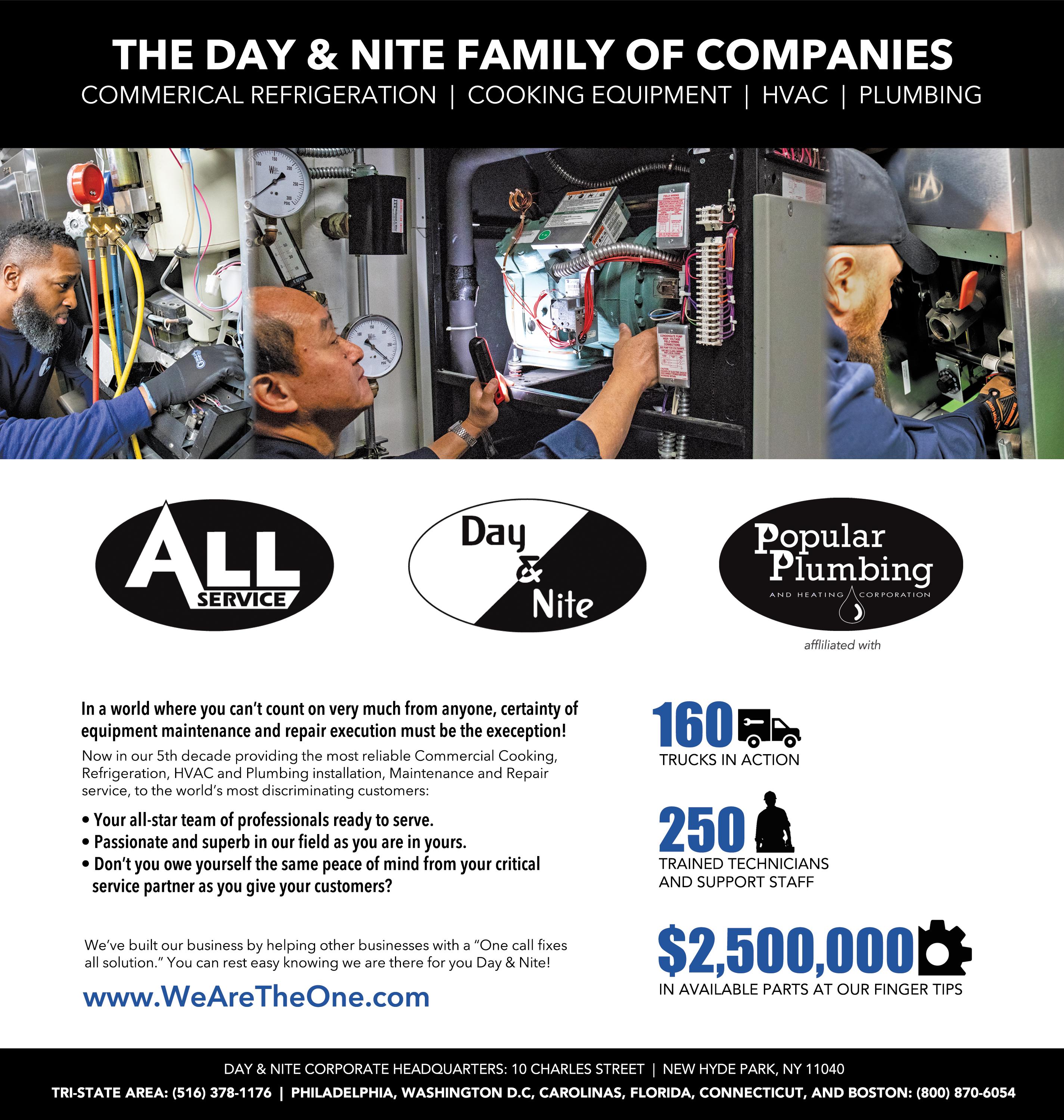

50% of consumers prioritize healthy eating, according to a 2022 international survey by McKinsey, and many are dissatisfied by their current options. Today’s consumers strive to be more intentional with what they eat, often referred to as conscious eating, and their top priorities are reducing processed foods and sugar. Restaurants generally have a bad reputation for healthy eating. Transparency is key to letting consumers know restaurants can meet their demand for healthy options.
Healthy foods are trending, but how consumers define healthy diets has evolved over the years. Fad diets have come and gone, including many variations of low/no fat, low/no sugar, low/ no carbohydrates. Many programs proved short-lived fads while others
have persisted for decades. There are some consistencies - people have always cared about their health and want to live a healthier lifestyle to avoid disease and maintain their quality of life as they age, they just don’t always know the best way to achieve that.
Generally speaking, as science has improved, the public has gotten a better understanding of what healthy food entails, but there’s still a lot of misconceptions that persist. While it’s not a restaurant’s job to educate people about macronutrients and what they should be eating, by being transparent about ingredients, consumers have the power to make informed decisions that make sense for their chosen lifestyle.
With so much information at their fingertips via the internet, consumers are better informed than ever and want to make purchase decisions across all industries that align with their values. They increasingly demand transparency from brands so they can be inten -

tional with how they spend their time and money. Transparency in ingredients increases consumer trust and loyalty, making it a smart decision for the food industry.
As consumers have increasingly practiced conscious eating, plantbased protein has gained in popularity. While vegetarians and vegans have often driven the plant-based trend, a growing number of individuals consider themselves “flexitarian,” meaning they try to limit their meat consumption or practice a vegetarian diet some of the time.
Many do so for health reasons. Studies show vegetarians’ diets contain more fiber, potassium, and some vitamins, and carry a lower risk of chronic disease and diabetes. These numerous health benefits are very compelling to individuals trying to improve their lifestyle.
In addition to health concerns, some consumers choose to restrict their meat consumption for religious or environmental reasons. Regardless of their reasons, they enjoy varied options that are integrated into the restaurant’s overall menu. Few people prefer to order the only salad option at a place famous for burgers. Thanks to new developments in plant-based protein, they shouldn’t have to.
Globalization and technology have expanded consumers’ palettes to new flavors and dishes and enabled us to create meat lookalikes. The industry has dramatically changed how plants are processed and prepared, leading to vegetarian options that are high in protein and remind consumers of foods they’re familiar with.
Because the plant-based consumer block is varied in their reasons and rigidity of diet, transparency is particucontinued on page 118

Establishing a bakery business is a dream for many culinary enthusiasts. However, navigating the complexities of the bakery industry demands more than just a passion for pastries.
Critically acclaimed Pastry Chef Jimmy MacMillan is the Founder of Pastry Virtuosity, a consulting resource for all food-based businesses including manufacturing, retail, and hospitality. He has a proven track record as an expert project manager, food designer, stylist, and team leader that fuels energy and renews momentum with every project he takes on. From business planning to dessert creation to pastry classes, Pastry Virtuosity is the resource for solutions that will take pastry careers and sweet businesses to the next level.
“Every challenge, from perfecting recipes to delighting customers, offers a chance to innovate and connect. Approach these challenges with creativity and dedication, and you’ll discover a supportive community that thrives with each delicious creation,” said MacMillan.
The aroma of freshly baked bread, the allure of decadent pastries, and the satisfaction of creating delightful confections attract many individuals to the world of bakery entrepreneurship. However, behind the delectable treats lies a myriad of challenges that can

test the resilience and determination of even the most passionate bakers.
In this comprehensive guide, which he also shares in PastryVirtuosity, he delves into the 13 key challenges faced by bakery entrepreneurs and offers practical advice to overcome them, ensuring a recipe for success in the bakery industry.
1. Recipe Development and Innovation:
Crafting unique and irresistible reci-
pes is the cornerstone of any successful bakery. However, continuously innovating while maintaining the essence of traditional favorites can be a daunting task. Bakery entrepreneurs must invest time and resources in recipe development, experimenting with flavors, textures, and ingredients to captivate their customers’ taste buds.
2. Ingredient Sourcing and Quality Control:

The quality of ingredients directly impacts the taste and consistency of baked goods.
Bakery owners must establish reliable supply chains for fresh and high-quality ingredients while adhering to strict quality control standards. Partnering with trusted suppliers and conducting regular inspections ensures that every batch of baked goods meets the highest standards of excellence.
3. Operational Efficiency and Workflow Management:
Efficient workflow management is essential for maximizing productivity and minimizing waste in a bakery setting. From ingredient preparation to baking and packaging, optimizing operational processes streamlines workflow and enhances overall efficiency. Bakery entrepreneurs should invest in modern equipment, implement standardized pro-
Joyce Appelman is the SCOOP News Editor and Senior Contributing Writer for Total Food Service and previously the National Communications Director for C-CAP, Careers through Culinary Arts Program. An industry leader supporting education and scholarships, she has been instrumental in opening career opportunities for many young people in the foodservice industry. Email her at joyceappelman@gmail.com
cedures, and train staff to ensure smooth operations during peak hours.
4. Branding and Marketing Strategies:
Building a strong brand identity and effective marketing strategies are vital for attracting customers and fostering brand loyalty. Bakery entrepreneurs must develop a compelling brand story, create visually appealing packaging, and leverage digital platforms to reach their target audience. Engaging in community events, collaborating with influencers, and offering loyalty programs are effective marketing tactics to enhance brand visibility and customer engagement.
5. Customer Experience and Satisfaction:
Delivering exceptional customer experiences is paramount for long-term success in the bakery industry. Bakery entrepreneurs must prioritize customer satisfaction by providing attentive service, responding promptly to feedback, and maintaining impeccable hygiene standards. Creating a warm and inviting ambiance, offering personalized recommendations, and incorporating customer feedback into product development fosters customer loyalty and drives repeat business.
6. Regulatory Compliance and Food Safety:
Compliance with regulatory standards
continued on page 120
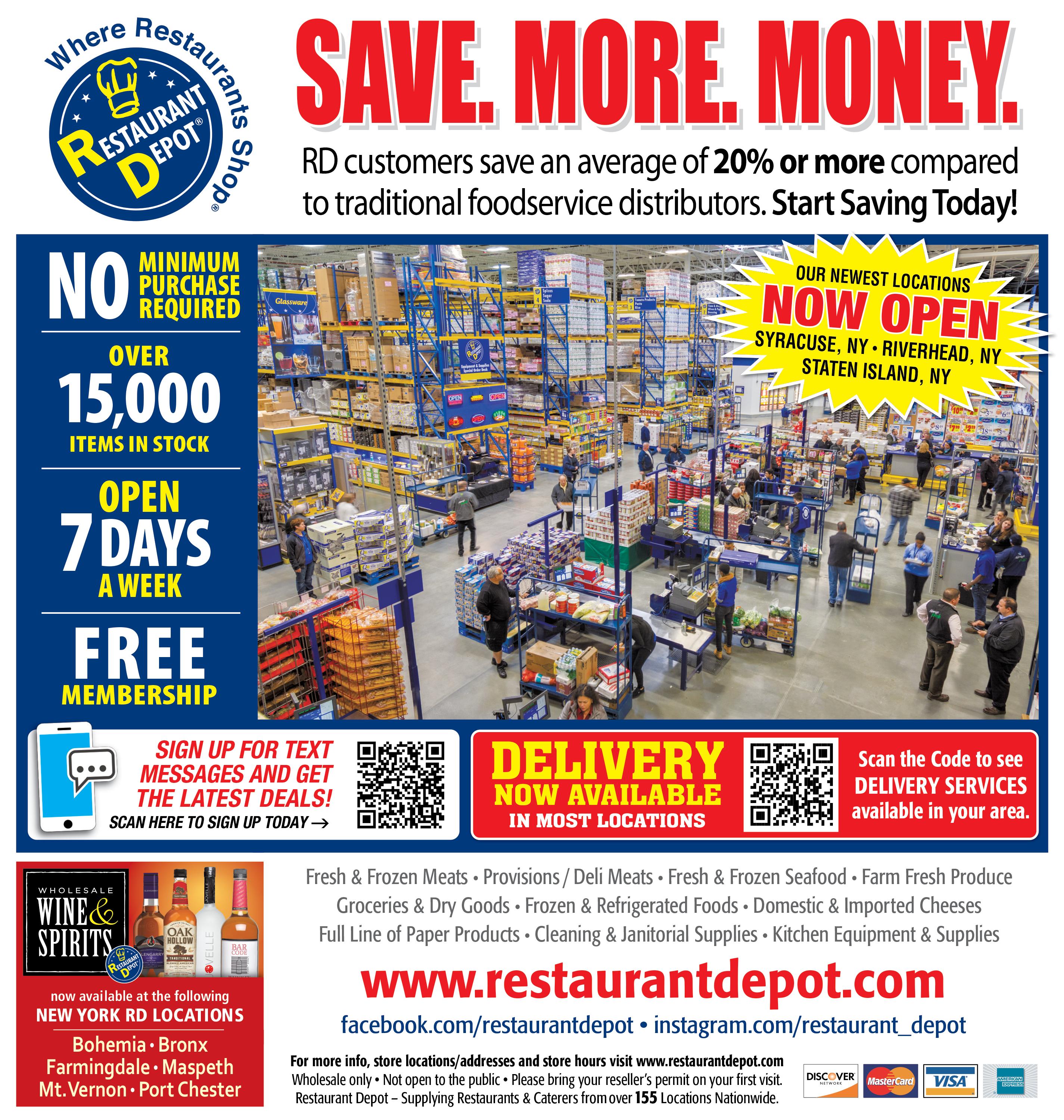
In a landmark decision, the U.S. Court of Appeals for the Fifth Circuit late last month overturned the Department of Labor’s (DOL) 2021 amendments to the dual jobs regulation, known as the 80/20/30 rule. This ruling is a significant win for restaurant operators across the country, bringing an end to a contentious regulation that many in the industry viewed as both impractical and financially burdensome.
The 80/20/30 rule was part of the DOL’s effort to redefine how employers could apply the tip credit under the Fair Labor Standards Act (FLSA). This rule limited the amount of time tipped employees could spend on non-tip-producing tasks while still being paid a reduced tipped minimum wage. Specifically, it prohibited employers from using the tip credit if an employee spent more than 20% of their workweek or more than 30 continuous minutes on non-tip-producing tasks that were related to their tipped duties.
The controversy surrounding the 80/20/30 rule began almost immediately after it was introduced. Many restaurant owners and industry groups argued that the rule was not only confusing but also nearly impossible to implement without significant operational disruption. The National Restaurant Association, along with other trade organizations, challenged the rule, asserting that it was arbitrary, capricious, and contrary to the text of the FLSA.
The legal battle was long and arduous. Initially, the lawsuit filed by the Restaurant Law Center faced setbacks. The district court ruled against the plaintiffs, refusing to grant a preliminary injunction that would have halted the rule’s enforcement. Despite this initial loss, the plaintiffs persisted, appealing the decision to the Fifth Circuit Court of Appeals.
The Restaurant Law Center is the only independent public policy organization created specifically to represent the
With the 80/20/30 rule now vacated, restaurants can return to the previous tip credit regulations, which are seen as more flexible and manageable. This means that operators can once again take the tip credit for employees performing tasks related to their tipped occupation without worrying about the rigid 20% and 30-minute thresholds.
interests of the food service industry in the courts. This labor-intensive industry is comprised of over one million restaurants and other food-service outlets employing about 16 million people— approximately 10 percent of the U.S. workforce. Restaurants and other foodservice providers are the second largest private sector employers in the United States. In addition, the Law Center represents the interests of its state restaurant association affiliates, many of which have both food service establishments and hotels as members as well as other hospitality interests. The Law Center serves as the industry’s voice in the judicial system.
Through its initiatives, the Restaurant Law Center works to protect and advance the restaurant industry and promote pro-business laws and regulations that allow restaurants to continue to grow, create jobs and contribute to a robust American economy. The Law Center offers courts and regulatory agencies with the industry’s perspective on significant legal and regulatory issues to ensure that the views of America’s restaurants are taken into consideration.
The turning point in the case came after the Supreme Court’s decision in Loper Bright Enterprises v. Raimondo, which significantly curtailed the Chevron deference doctrine. This doctrine had previously required courts to defer to a federal agency’s interpretation of
ambiguous statutes within its jurisdiction. With Chevron deference weakened, the Fifth Circuit was able to scrutinize the DOL’s 80/20/30 rule more critically.
In its August 23, 2024, ruling, the Fifth Circuit found that the DOL’s rule was inconsistent with the statutory language of the FLSA. The court noted that the FLSA defines a tipped employee as one who “customarily and regularly receives more than $30 a month in tips,” without any reference to the specific distribution of their duties. The court further criticized the rule as being arbitrary and capricious, highlighting that it imposed rigid standards without clear statutory authority.
The overturning of the 80/20/30 rule has brought a sigh of relief to restaurant operators across the nation. The rule had been seen as a significant burden, not just financially but also operationally. The requirement to meticulously track and record the time employees spent on various tasks created a logistical nightmare for many businesses, especially smaller establishments that lacked the resources to implement such detailed monitoring systems.
Financially, the rule threatened to increase labor costs substantially. The DOL itself had estimated that the rule would cost the restaurant industry over $2 billion over ten years—a figure that many industry experts believed to be an underestimation. For individual opera-
tors, especially those running multiple locations, the cost could easily run into the millions annually. This potential financial strain came at a time when the industry was already grappling with the economic fallout from the COVID-19 pandemic, making the rule even more contentious.
With the 80/20/30 rule now vacated, restaurants can return to the previous tip credit regulations, which are seen as more flexible and manageable. This means that operators can once again take the tip credit for employees performing tasks related to their tipped occupation without worrying about the rigid 20% and 30-minute thresholds. Beyond the immediate impact on restaurant operators, the court’s decision has broader implications for how federal agencies regulate industries. The ruling serves as a reminder that agencies like the DOL must operate within the bounds of the law and cannot impose regulations that exceed their statutory authority. It also underscores the importance of judicial oversight in preventing regulatory overreach.
For the restaurant industry, this decision is a clear victory, not only in terms of immediate financial relief but also as a reaffirmation of the industry’s ability to challenge and overturn regulations that are deemed unjust or impractical. The case highlights the critical role that trade associations and legal advocacy play in protecting the interests of businesses.
The Fifth Circuit’s ruling against the 80/20/30 rule marks a significant win for restaurant operators, allowing them to focus on running their businesses without the looming threat of costly and burdensome regulations. This decision will likely be remembered as a pivotal moment in the ongoing dialogue between industry and regulators, emphasizing the need for clear, fair, and legally sound rules that support rather than hinder economic activity.
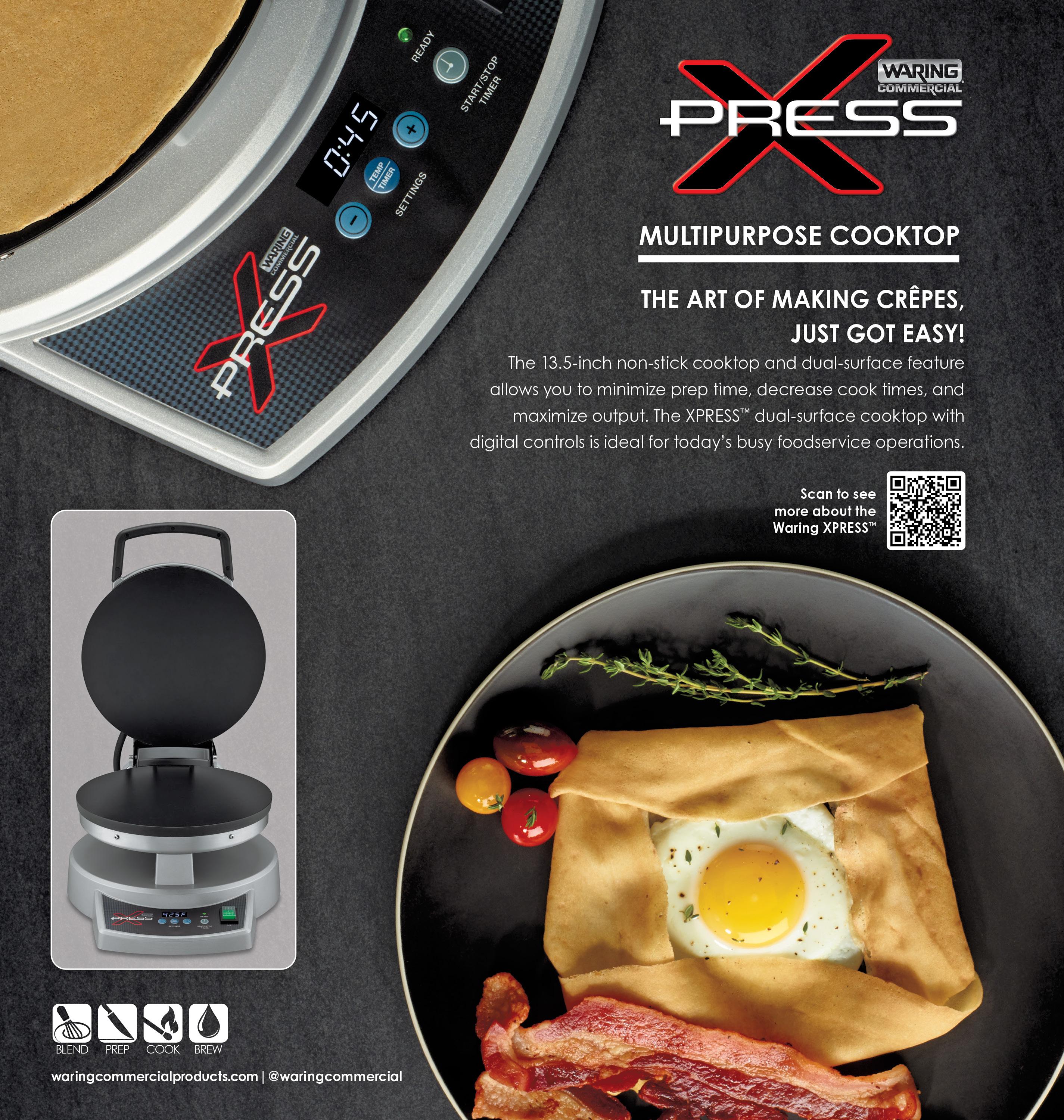
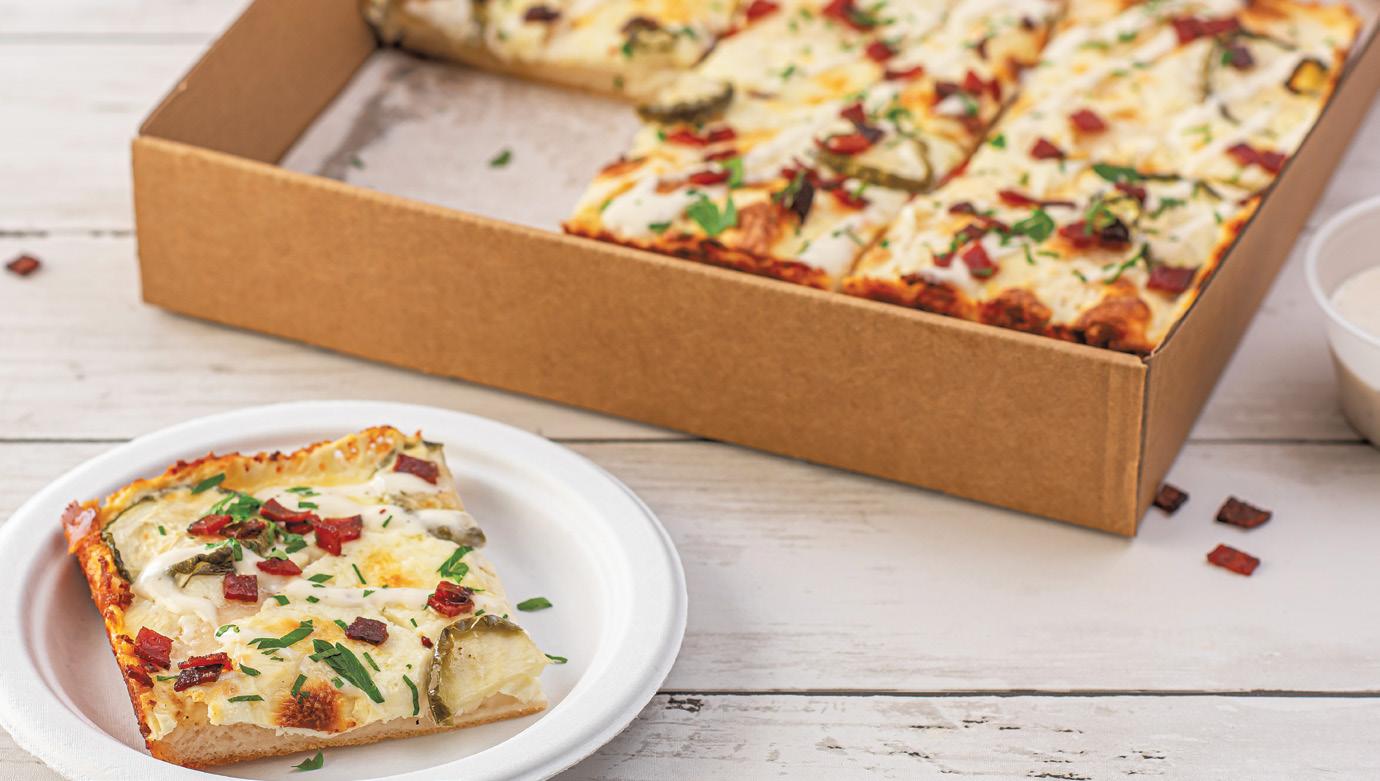
In the ever-evolving world of foodservice, one constant remains: pizza is always a good idea. Whether it’s breakfast, lunch, dinner or snack time, pizza’s versatility makes it the perfect option for any meal. From fast-casual restaurants to high-end eateries, operators are finding creative ways to incorporate pizza into every daypart, driving sales and satisfying customers.
According to a recent OnePoll survey (August 2023), 75% of Americans would eat pizza for any meal, and it’s easy to see why. Pizza is affordable, customizable and convenient, making it a favorite for both operators and diners alike. The following are tips designed to maximize the profitability of pizza throughout the day, along with solutions for menu inspiration:
Morning customers are often in a rush, so having warm, ready-to-go slices available ensures they can grab a quick, satisfying breakfast. To cater to the demand for high-protein breakfasts, consider offering pizzas topped with popular morning proteins like
eggs, bacon, ham or smoked salmon. These options will not only satisfy but also keep customers fueled for the day ahead. Additionally, offering nutritious toppings such as avocado, spinach and peppers, or using a lighter, plant-based crust, can appeal to health-conscious consumers seeking a wholesome start.
Rich’s Foodservice provides recipe inspiration using its versatile pizza crusts and doughs. Cheesy sausage breakfast pizza comes together quickly when made with Rich’s Fresh ‘N Ready Whole Grain Individual Oven Rising Sheeted Pizza Dough, and Rich’s 7” x 11” Oval Pinsa meets the need when preparing an avocado toast pizza remix.
When it comes to lunchtime, speed is of the essence. By using pre-prepped dough or easy-handling options like parbaked crust, operators can keep up with the lunch rush by reducing preparation time. Portability is another key factor; offering individual-sized pizzas or slices for a quick, convenient meal. Customization is also important. Giving customers the power to build their
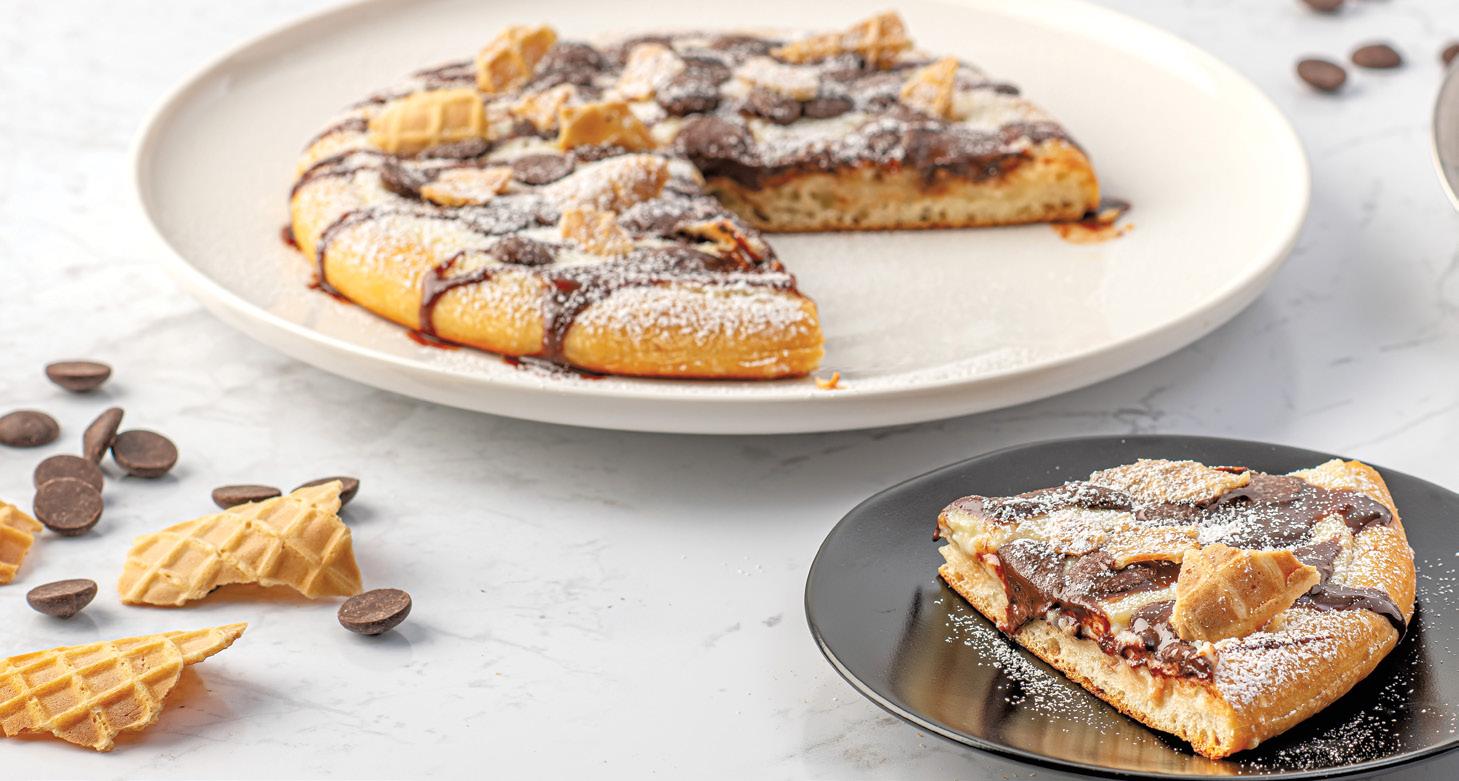
own pizzas with a variety of toppings and crusts, including plant-based and gluten-free options, ensures that everyone can find something they love. For speed, portability and customization during busy lunchtimes, Rich’s 14” Fresh ‘N Ready Oven Rising Sheeted Pizza Dough is an ideal solution for unique recipes.
Dinner is the ideal time to showcase an establishment’s most indulgent pizzas. Gourmet pies with rich toppings or innovative creations can leave a lasting impression on customers. Additionally, encouraging group dining with familysized pizzas or meal deals can make dinner a memorable occasion for everyone. For a satisfying dinner menu, Rich’s Detroit-Style Crust is the perfect base for Buffalo chicken pizza, and Rich’s 10” Gluten-Free Seasoned Cauliflower Pizza Crust raises the flavor bar on a chicken Parmesan pizza.
For snack time, it’s important to have quick and convenient options that satisfy between-meal cravings. Snackable
pizza options that are easy to eat on the go are ideal for this daypart. Offering something different from standard mealtime pizzas, such as sweet dessert pies or smaller, snack-sized portions, can also be a hit with customers. Operators can find snack-time inspiration using Rich’s 7.5” Gluten Free Seasoned Cauliflower Crust to prepare an individual pizza or Rich’s 12” Round Pinsa for a shareable appetizer. From dessert ideas, like sweet apple streusel, or a classic Margherita, these pizza crusts provide a perfect base for any variety. Pizza’s adaptability across different dayparts makes it a powerful tool for driving sales and delighting customers. By leveraging innovative solutions, operators can easily incorporate pizza into their menus and capitalize on its enduring popularity. Whether it’s a breakfast slice on the go, a gourmet dinner pie or a sweet snack, pizza is truly the ultimate anytime food.
For operators and distributors seeking more information about Rich’s pizza portfolio and other food products, begin by visiting the pizza section of their website: RichsUSA.com/pizza
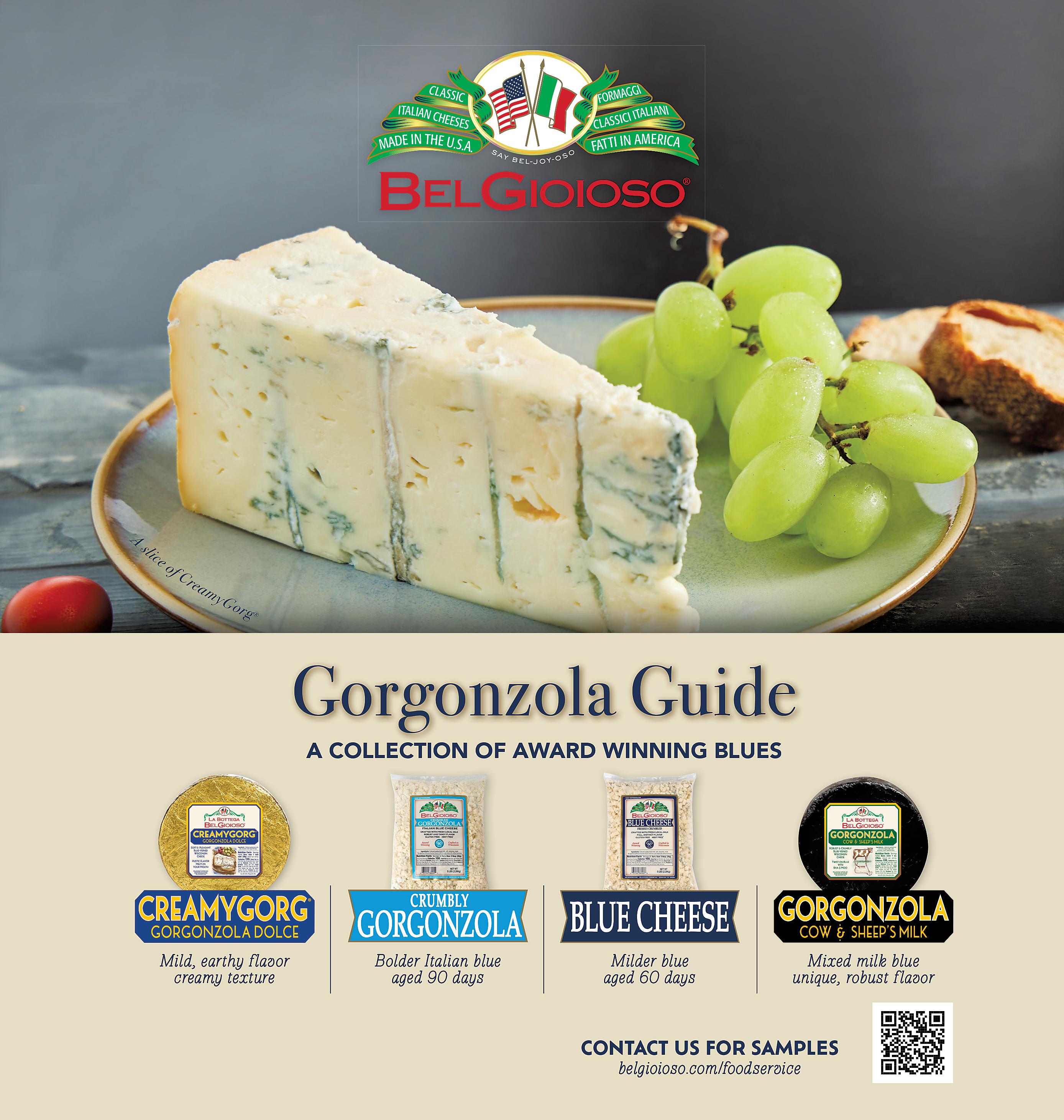
The title of this article is a lie. There is no single formula that can make every menu perfect. But, with an understanding of the science behind menus, a little creativity, and a whole lot of love, you can design the perfect menu for your restaurant. (Or we could do it for you).
Let’s start with two fundamental aspects of design: your typeface and colors. If you want to use an interesting or unique font, headings are the best place to do so. Fun fonts are great for grabbing your customers’ attention and balancing visual weight. However, for the bulk of your menu text, use simpler fonts to reduce eye strain and increase readability overall.
We strongly recommend using no more than three typefaces throughout your menu. When you use more than three, it can make your menu appear chaotic, messy, or hard to follow. There are three main font styles (commonly referred to as font families, in the biz) that convey different branding, to keep in mind. Serif fonts are often used for a more elegant style. Sans serif fonts are most common for modern styles. Ornamental fonts are for a more fun, youthful energy. However, be careful using ornamental fonts, as they could convey immaturity rather than youthful joy. As for which fonts to use, Dr. Sofie Beier found evidence that the frequency of exposure contributes to increased reading speed. So, using popular fonts on your menu will make it appear more familiar, in turn making your customers more comfortable at your restaurant. As a result of feeling at ease, your guests may spend more without realizing it. Plus, they will be able to read and
digest your menu more quickly, which gives you faster table turnaround.
If you’re in the restaurant business, chances are you know a little about the psychology behind different colors. If not, don’t worry—we don’t judge. Certain colors are commonly associated with certain feelings. This is definitely something to note, but it’s not the be-all and end-all. Here are some common colors and the feelings they evoke:
• Red: excitement, appetite, urgency
• Green: fresh, healthy, vegetarian/vegan-friendly

• Yellow: happiness, warmth, fun
• Blue: calm, stability, serenity
• Orange: creative, appetizing
Words with fewer letters take less time to read. Studies show that people begin comprehending words by recognizing one letter at a time until they’ve seen enough letters to comprehend the word they are reading. So, words with more letters take longer to comprehend. This comprehension happens in milliseconds, but milliseconds add up—especially when you have a ton of hungry potential customers waiting to be seated. This also relates to people’s memory and attention spans. If you try to sound smart by using jargon or a lot of adjectives, people are more likely to skim through the menu and not remember what they just read. They may have to go
back and reread it, taking up more time. People don’t have much of an attention span, especially at a restaurant. They are hungry and probably want to focus on making conversation with their dining companions. The last thing they want to do is read through paragraphs of text with a grumbling stomach. To combat this, avoid extensive descriptions or long-winded titles, but inject some personality into menu items you want to be memorable.
Why does an aesthetically pleasing layout matter? Good and bad layouts have been directly correlated with people’s moods while reading. Kevin Larson, a lead typeface researcher for Microsoft, ran a test where he gave one group of people a copy of The New Yorker with a clean, indented, spaced-out format and another group a different
copy with the opposite layout. He found that readers felt upset and uncomfortable while reading the poorly designed layout. Those reading the poor layout claimed that, on average, it took them 3 minutes longer to read than those reading the clean layout reported. In actuality, they finished the article in the same amount of time and had an equal level of comprehension. However, their moods were drastically different. Kevin and his team found that “well-designed reading environments don’t necessarily help you understand what you’re reading better, but they do make you feel good, causing you to feel inspired and more likely to take action.” AKA, spend more money at your restaurant.
Experts argue about where people first look when perusing a menu. The truth is that it depends. If you’re work-
continued on page 119

You’ve already perfected the art of intentionality with food and drink, choosing just the right ingredients to craft a perfect blend of taste, aroma, and texture that tells a distinct story. But what if there was another tool that had the ability to deepen that sensory experience, evoke emotions and show guests that you’ve put extra care and attention to detail into every moment of the meal?
Tableware is an essential character in your food and drink story, influencing your guests’ perception of the meal through color, feel and pattern. It creates a connection that is an extension of your culinary vision and brand personality.
And, of course, a beautiful plate or glass encourages guests to snap and share photos and video of their meal, giving your business an added boost of invaluable organic publicity. In an industry that can be so competitive, why not do anything you can to stand out from the pack?
The power is really in your hands –and on your plate! Here’s how to harness the psychology of tableware to elevate any presentation:
Science has long held that color can affect our mood, we eat and drink first with our eyes. Whether your tableware is dark or light, bright or muted, flat or metallic, these choices temper your guests’ expectations for the meal ahead in subtle ways.
For example, black dinnerware suggests romance and intimacy, while bold, saturated hues loudly draw attention to your creations and stimulate the appetite. Soft, earthen tones send an eco-conscious message, and on-trend gold flatware can add a
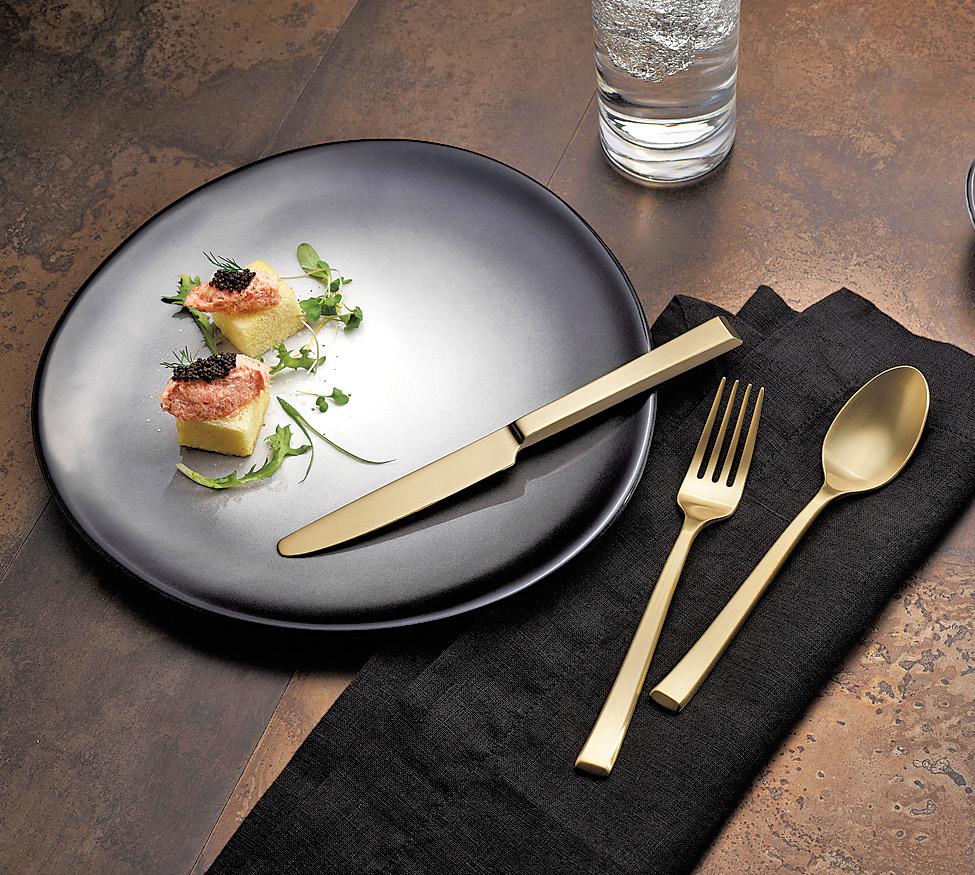
touch of glamour to your table setting. Most importantly, the color of your dinnerware, flatware and glassware should be thoughtfully chosen to complement food or drink and support the narrative of your creation. Because when the food aligns with the tableware, magic can happen – improving your guests’ enjoyment and helping you score repeat customers.
We may eat first with our eyes, but tableware texture can be just as important, creating a visceral connection between us and the meal. Texture

supplies visual depth that draws the eye and builds intrigue.
Texture is a storytelling shortcut: Cut glassware implies luxury, while organic textures remind us of nature. In addition, the feel of a surface affects its visual weight. Tough textures add a grounded element; sleek, glossy surfaces look light and airy.
As you select tableware, consider contrasting complex presentations with smooth, simple surfaces, and subtle dishes with matte, rough textures for a visually cohesive experience that pleases the eyes and the palate.
Another tactile element to consider is weight, which can at times be more influential than design. Imagine holding two otherwise identical dinner knives: one that’s light and one with a little more heft. Which feels more expensive? Certainly, the heavier piece implies high-quality materials, durability and quality.
On the other hand, a fragile, ultrathin wine glass with a narrow stem is generally perceived as more luxurious than thick, bulky stemware. But the benefits don’t just stop at looks: A thin rim actually improves the flavor of fine wines, elevating the experience even further and helping you upsell wines of all varietals.
Pattern serves two purposes for your tabletop: to artfully frame food or drink and to foster atmosphere. Alongside color and texture, deliberately selected patterns are essential in relaying the mood you are trying to create.
Global-inspired patterns – whether they suggest a Moroccan marketplace
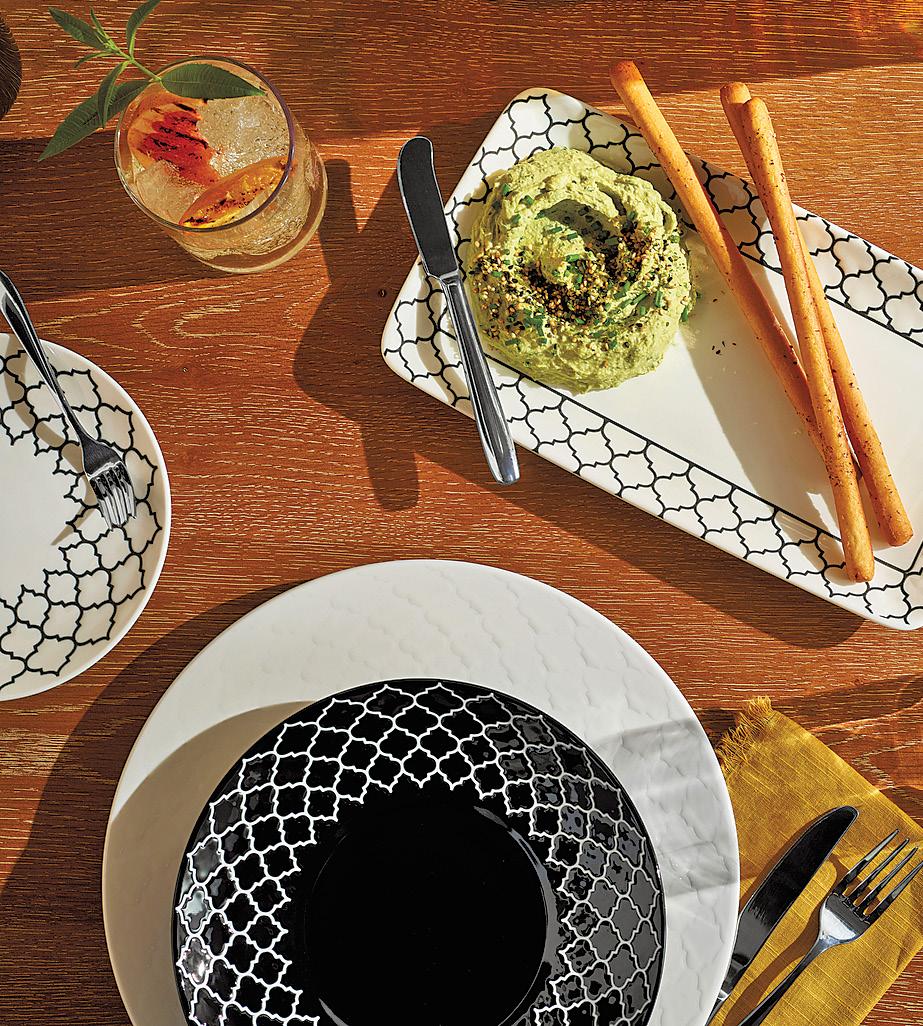
or Southwestern sunset – transport guests to another place and time even before the first bite. Select patterns that will complement the menu.
Delicate florals and chintz patterns evoke the soft, old-fashioned elegance of grandma’s house or a tea room with comforting, familiar foods. Geometric designs add a splash of bold energy and modern minimalism that tells guests the cuisine is going to be cutting edge.
A pop of pattern can infuse intention into an otherwise basic tabletop. Consider adding just one or two patterned pieces to your whiteware for instant impact and cost-conscious plating.
Incorporating these concepts into your menu is the true art of foodservice. There’s always opportunity to enhance your guest’s experience and Libbey experts are ready to help you bring your unique story to life with their industry-leading expertise and service. Connect with a sales consultant near you to start your journey or visit .

In an era where sustainable food choices are becoming more critical, Fable Food is at the forefront of culinary innovation. Co-founded by Michael Fox and Jim Fuller, Fable Food is transforming the landscape of plantbased proteins with its mushroombased products. With a commitment to redefining the way we think about meat alternatives, Fable Food is not only championing mushrooms as the new center-of-plate, but also paving the way for a more sustainable future in food. In this interview, Michael shares insights into what sets Fable Food apart
from other mushroom-based proteins, their mission to combat industrial animal agriculture, and their exciting expansion from Australia into the U.S. market. From the unique blend of fine dining expertise and scientific innovation that drives their research and development to the practical benefits their products offer chefs, Michael provides a comprehensive look into how Fable Food is making waves in the culinary world.
Tell us about Fable Food and what sets it apart from other mushroombased meat alternatives?

Shiitake mushrooms are the core of our mushroom products. We’re reimagining mushrooms by improving their texture and elevating their natural umami flavors and nutrients to become a succulent, umami-rich culinary protein. We wanted to keep our ingredients list short and keep it as clean, natural and as minimally processed as possible. My CoFounder and Chief Science Officer, Jim Fuller, is a fine dining chef turned chemical engineer and mycologist (mushroom scientist), so he is no stranger to the properties and chemical composition of mushrooms and the best way to cook


Cherry Dumaual is a seasoned contributing writer for Total Food Service, bringing years of experience in culinary communications to her role. As the former Partnerships Director at The Monday Campaigns/Meatless Monday, she was responsible for spearheading the PR and partnership development for Monday initiatives, including Meatless Monday. During her tenure, she successfully forged partnerships with renowned organizations, such as C-CAP (Careers for Culinary Arts Program), the American Institute of Cancer Research, and New Jersey Healthy Kids Initiative. Prior to joining TMC, Cherry held the position of Senior Vice President at leading PR agencies, where she worked with major food and healthcare clients. Her passion for learning and cooking international cuisines has led her and her husband to explore local food markets and restaurants in over 50 countries. This firsthand experience has allowed her to gain a deep understanding of different cultures and cuisines, which she brings to her work in the food industry.
and leverage them to bring out the flavors, aromas and textures that we want for our mushroom-based products.
Shiitake mushrooms in particular have been used in traditional Chinese medicine for thousands of years and they have long been lauded for their nutritional and medicinal properties. In a culinary context, shiitake mushrooms are very flavorful with their natural umami flavors, they are a slowgrowing mushroom so they naturally have the fleshy fibers that you typically get from animal proteins, and have the right chemical composition that when cooked allow us to taste flavors that are found in animal products.
On the evolutionary tree, fungi are more closely related to animals than they are to plants, and they share many similar characteristics with animals. Mushrooms contain glutamates and meaty, umami flavors. Their chitin cellular structure can be cooked in ways that mimic the texture of animal meats.
continued on page 114
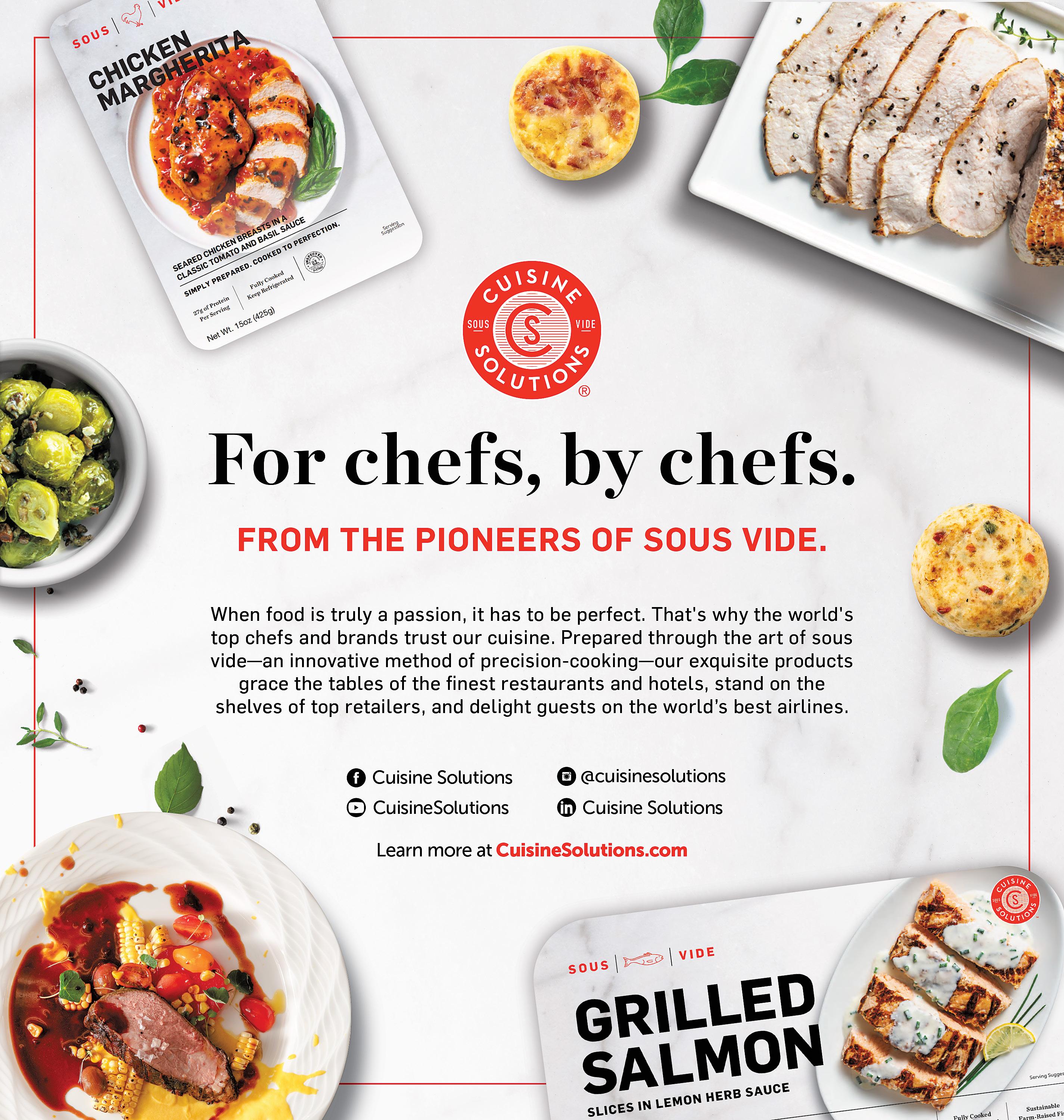
AVRAMAR, proudly presents its 2023 Sustainability Report , underscoring the company’s unwavering commitment to sustainability and innovation within the Mediterranean aquaculture industry. Structured around our mission “Better Fish, Better Lives” this report reaffirms our dedication to ensuring a “Better Planet” for future generations.
Derived from a double materiality analysis, fifteen material topics are meticulously addressed under the pillars of Better Fish, Better Lives, and Better Planet . This structured approach ensures that AVRAMAR’s sustainability strategy aligns seamlessly with our overarching business objectives, integrating sustainability principles throughout our organizational framework.
Some key Highlights of the 2023 Sustainability Report:
BETTER FISH
• Safe and Responsible Seafood:
• Zero product recalls
• 100% of our products certified by a GFSI recognized certification scheme
• Innovation and R&D:
• Partnerships with approx. 70 universities, research, and tech institutions
• 42 AVRAMAR and co-funded projects
BETTER LIVES
• People
• 23 blue-collar employees

honored with Tenure Award for over 10 years of dedicated service
• Health and Safety:
• 6% reduction in Employee Injury Frequency Rate (IFR1) compared to 2022
• Over 7,000 hours of training conducted
• Zero fatalities and cases of known work-related ill health
• Recipient of the “PREVER” Health and Safety Award from the General Counsil of Industrial Relations and Labor Sciences in Spain
BETTER PLANET
• Climate Change and Energy Use:
• 14% reduction in scope 1 and scope 2 GHG emissions vs 2022
• 81% increase in the share of renewable energy in electricity consumption vs 2022
• 16% reduction in electricity consumption vs 2022
• 11% reduction in fuel consumption vs 2022
• Circular Economy and Waste Management:
• 90% of generated solid waste in 2023 diverted from disposal through recycling, composting, or reuse
• 100% responsible farming certified by GSSI-recognized certifications
This comprehensive report highlights AVRAMAR’s achievements over the past year, offers valuable insights to our stakeholders, and sets the stage for our future goals. By showcasing our accomplishments and outlining our ongoing initiatives, we aim to drive a global transition towards more responsible and sustainable business practices.
You may access the full report here: https://events.avramar.eu/2023sustainability-report
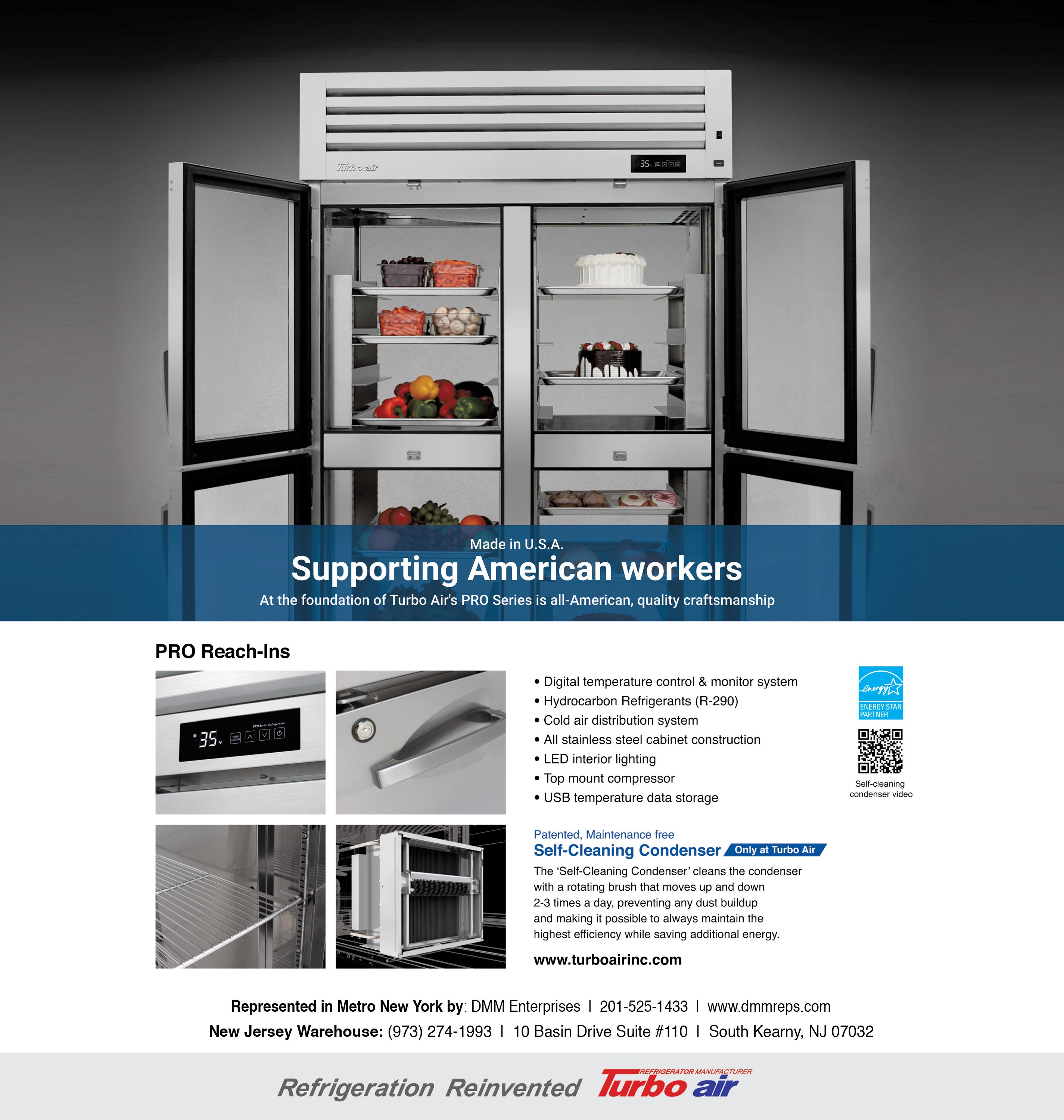
Are you aware that the very lifeline meant to help your restaurant grow could be the one thing holding it back, or worse, killing it? That’s right, that easy-to-get wad of cash to help you get through the tough times may not be the silver bullet you think it is. Those credit card business loans are not the solution you’re looking for, and I have some suggestions of financing that won’t destroy your restaurant business.
Credit card business loans, including merchant cash advances and business credit cards, can offer access to cash with minimal paperwork. At a glance, they seem perfect: fast cash to keep your
That easy-to-get wad of cash or credit card business loan may not be the silver bullet you think it is. They are not the solution to get you through the tough times.
restaurant humming along. But here’s the catch: when a customer swipes their card at your restaurant, a portion of that sale isn’t going into your account to cover expenses and grow your business; instead, it’s servicing your debt.
These loans come in two flavors:
1. Flat-fee loans
2.Loans with high-interest rates
While flat-fee loans might seem
straightforward, they can disguise the true cost of borrowing. If you’re paying a flat fee loan on a short-term basis, the effective annual percentage rate (APR) can be astronomical, making it one of the most expensive ways to borrow. With high-interest rates, the situation can quickly become dire; the amount you owe can rapidly increase, consuming a larger portion of your revenue, making it harder for you to operate profitably.


David Scott Peters is an author, speaker, restaurant expert and coach who coaches restaurant operators how to stop being prisoners of their businesses and to finally achieve financial freedom. His first book, Restaurant Prosperity Formula: What Successful Restaurateurs Do, teaches the systems and traits restaurant owners must develop to run a profitable restaurant. Thousands of restaurants have worked with Peters to transform their businesses. Get his free 30-minute training video http://www.davidscottpeters.com.
creative ways of finding money can offer more manageable terms that align with your restaurant’s growth without suffocating it.
Imagine your restaurant as a bustling hub of activity where behind the scenes, you’re constantly playing catch-up because a significant chunk of your revenue is going towards repaying a loan. The fast repayment schedule can force you to make cuts in quality and service just to keep your doors open.
There are healthier options available.
Examples of healthier loans are traditional bank loans or SBA loans, though they might be challenging to obtain. Sometimes, you need that money faster. Even crowdfunding or other
Another way to approach this is by managing your cash flow. While it may sound counterintuitive, delaying payments to vendors or other accounts payable can provide you with the breathing room your restaurant needs. By negotiating terms with suppliers to extend payment deadlines, you can retain the cash you need to take care of your immediate needs. However, this strategy requires open communication and maintaining strong relationships with your vendors to ensure it’s mutually beneficial.
Comparing the costs directly between quick cash advances and delaying payments, it becomes evident that while both methods involve a trade-off, the increased flexibility in cash flow management without the high cost of borrowing might be a more sustainable choice for your restaurant in the long run.
Before you sign that dotted line, think about the long-term impact on your restaurant’s cash flow and profitability. Remember, the goal is to build a foundation for long-term success, not just a short-term fix. Wise borrowing practices are crucial, but so is innovative cash flow management.

Understanding and safeguarding your employees’ rights is essential to protecting your business. According to the Equal Employment Opportunity Commission (EEOC), which enforces laws against employment discrimination, the agency received 61,095 discrimination charges in the fiscal year 2023.
Retaliation continues to be the most filed claim, accounting for 55.9% of all charges. Following retaliation, the EEOC reports significant numbers of claims related to disability, race, sex, and age discrimination.
Employment practice claims, from discrimination to wrongful termination, can have severe financial implications if businesses do not have appropriate risk management strategies and insurance coverage. Although it is impossible to prevent all lawsuits, you can minimize your risk and associated costs by implementing the following best practices:
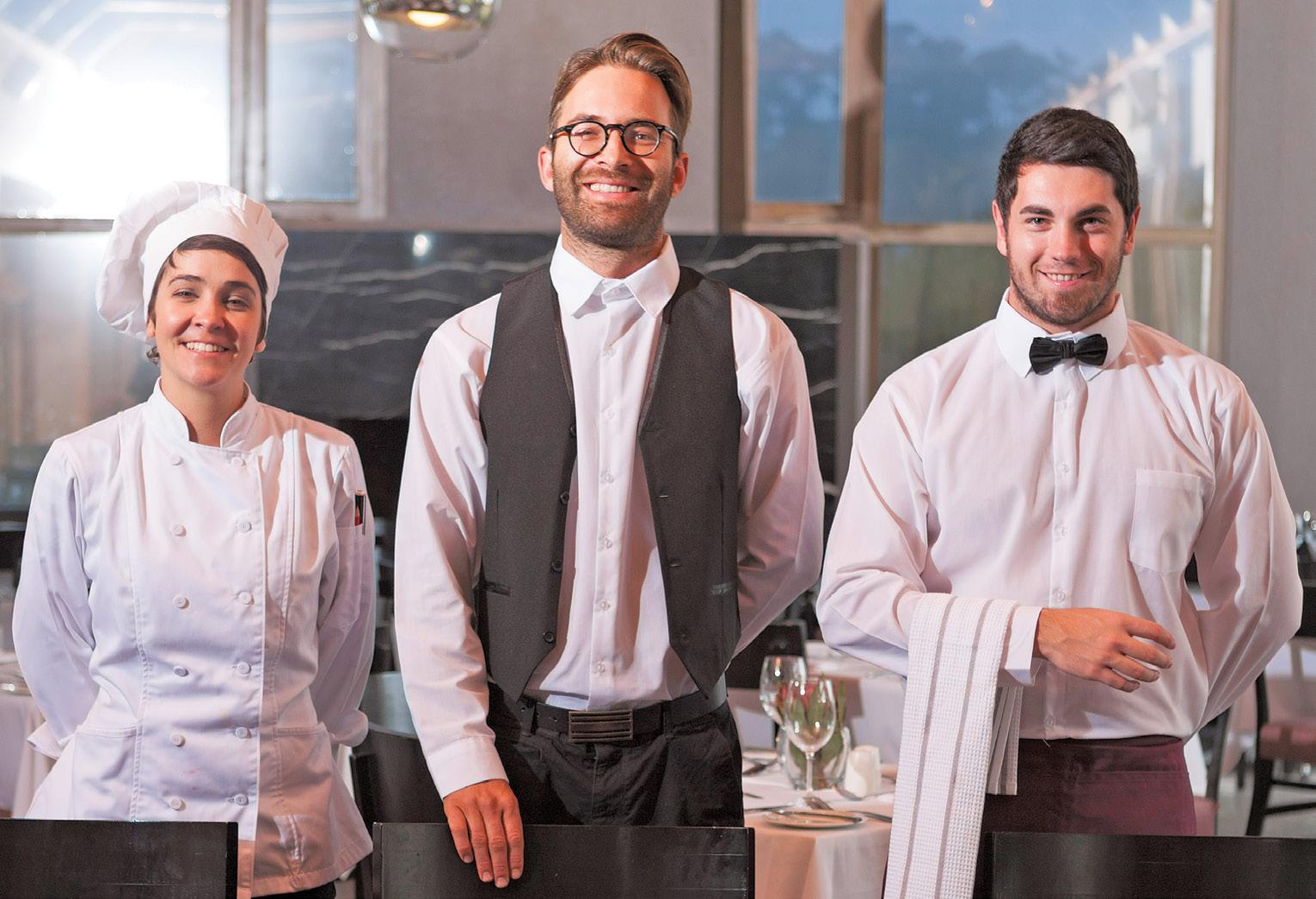
as a crucial document outlining rights and policies.
The most critical step is to create and enforce detailed policies and procedures. Ensure you have specific guidelines to address common workplace issues that could lead to legal disputes. For example, establish clear policies on hiring, promotions, evaluations, status changes, training, harassment, and termination. This approach helps align employer and employee expectations with reality. Collaborate with an experienced employment law attorney to cover all necessary aspects.
• In many cases, the employer/employee relationship is at-will, allowing either party to terminate it with or without cause. An employee handbook acts
• Keep the handbook updated, reviewed, and revised annually with legal counsel. New case laws and legal issues may arise each year that should be reflected in the handbook. Ensure all employees sign the handbook to acknowledge their understanding and agreement.
• Insurance companies review claims and litigation trends during the underwriting process. Documented policies and procedures are essential for assessing exclusions or risks specific to your business. An experienced broker can help you address all liabilities unique to your business.
• When acquiring or renewing employment practices insurance, ensure you have the necessary policies and procedures in place for effective defense. You will need to demonstrate your preparedness by providing information about past claims and corrective actions taken.
Keep thorough records of disciplinary actions, absenteeism, complaints, and other HR-related matters.
• This documentation is vital as the first line of defense if an employee discrimination claim is filed, providing clear evidence of incidents involving disgruntled employees.
• In cases of termination, such as for absenteeism, detailed documentation is crucial. Be prepared to provide specifics, such as the frequency and dates of lateness.
Consider risks from a third-party perspective, including potential legal issues from vendors, clients, customers, and prospective employees. Ensure that those interacting with third parties are well-trained and aware of employment practice risks to prevent potential liabilities.

Robert Fiorito serves as Vice President with HUB International Northeast, a leading global insurance brokerage, where he specializes in providing insurance services to the restaurant industry. As a 25+ year veteran and former restaurateur himself, Robert has worked with a wide array of restaurant and food service businesses, ranging from fast-food chains to upscale, “white tablecloth” dining establishments. Robert can be reached at 212-3382324 or by email at robert.fiorito@ hubinternational.com.
4. Understand Your Rights as an Employer
Employers also have legal recourse, particularly when holding workers’ compensation policies through private insurers. Do not hesitate to contest fraudulent claims and other issues. Engage with your claims adjusters both before and during a claim to understand your rights as an employer.
5. Secure a Comprehensive Employment Practices Liability (EPL) Insurance Policy
Employers are more likely to face EPL insurance claims than general liability or property losses, according to the Professional Liability Underwriting Society. A knowledgeable broker can help you select the appropriate EPL policy and assist in revising your policies and procedures for successful policy renewal if a claim occurs.
All businesses can be vulnerable to potentially costly lawsuits. Protect your business against employment-related risks by following these best practices and securing comprehensive EPL insurance coverage.
Work with an experienced insurance advisor to learn more about how to prevent employee practices liability claims in the hospitality industry. Learn more at https://www.hubinternational.com/ industries/hospitality-insurance/restaurant-insurance/


The Victory Foodservice 21st Annual Food Show, set to take place on September 10th at the prestigious Resorts World Casino in Queens, NY, is gearing up to be a landmark event for culinary professionals across the region.
For chefs, restaurant owners, and foodservice professionals, this is not just another industry gathering—it’s an essential date on the calendar, promising an unparalleled opportunity to connect, learn, and grow. With a rich history and a strong commitment to innovation, Victory Foodservice is poised to offer an experience that blends tradition with the latest trends in foodservice.
Victory Foodservice, a family-owned company founded in 1985, has been a pillar in the foodservice distribution industry for nearly four decades. Specializing in fresh produce, meats, and an extensive range of over 9,000 food and beverage items, the company has earned a reputation for quality, reliabil-
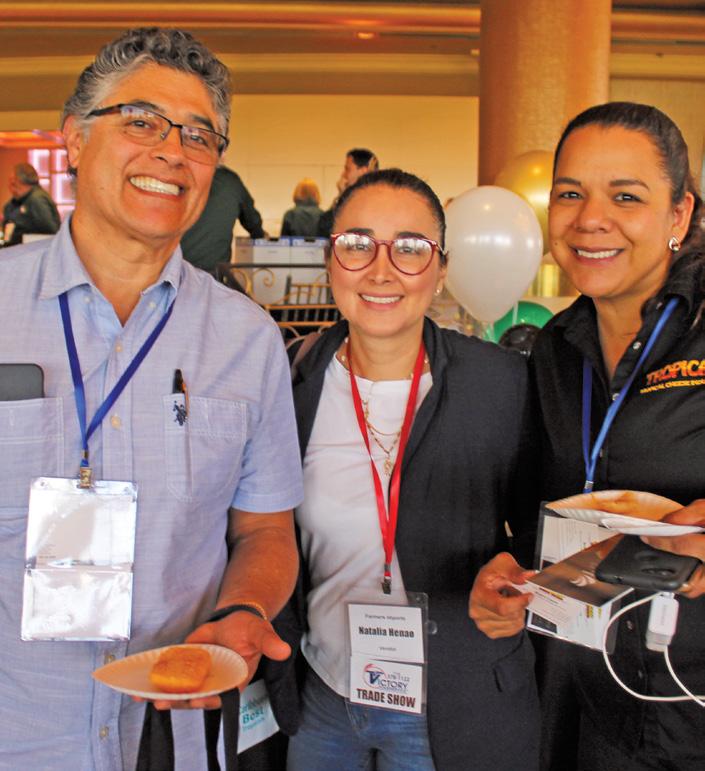
“It
can be something as simple as a breaded chicken cutlet, that takes a step out of prep time. We’ve definitely adapted to the needs of our customers by bringing in more items that are ready to serve or require minimal prep.” — Joanna Zoulis
ity, and customer-focused service. What sets Victory apart is not just the breadth of their offerings, but their deep-rooted relationships with both their customers and suppliers.
As Joanna Zoulis, Victory’s Director of Marketing, explained, “We’ve always believed that our success is tied to the success of our customers. The Victory Foods Show is our way of giving back— by creating a space where our customers can interact directly with our suppliers, gain insights into new products, and ultimately, find ways to enhance their own businesses.”
The Victory Food Show is more than a trade show—it’s a celebration of the food industry’s innovation and an educa-
tional hub for the latest culinary trends. This year’s event promises to be a rich tapestry of networking opportunities, product showcases, and live demonstrations from top industry chefs. For any foodservice professional looking to stay ahead of the curve, attendance is a must. One of the most anticipated aspects of the show is the lineup of chef demonstrations, featuring culinary experts from renowned companies like Unilever, Krinos, and Smithfield. “We’re really trying to educate our customers with some unique ways to utilize the products that we carry,” Zoulis added. These demonstrations are not just about showcasing products; they’re about inspiring chefs and restaurant owners with creative ap-

plications that can drive their menus forward.
In addition to the live demos, Victory will be showcasing their new online ordering app at the Food Show. The Victory Foodservice app, designed to enhance the customer ordering experience, is available now on the Google Play Store and the App Store. It allows customers to place an order when it’s most convenient for them.
continued on page 134

With Victory’s new app and dedicated space for networking with vendors, attendees can dive deeper into the specifics of the products they’re interested in, explore unique menu applications, and continued on page 134

When Labor Day hits we all feel it. On the east coast it may stay warm enough later into the month to eke out a few more days at the beach or by the pool, and in other parts of the country patio drinking and dining may just be taking off for the season. So, while you don’t have to throw out the almost expired sunscreen quite yet, there is no denying that the turn of calendar pages impacts bar operations. So too do big events. As well as the continuously shifting tide of employees working on-site at home, and hybrid shifts post-pandemic. It’s enough to make even a seasoned beverage professional’s head spin. Until they stop to wrap their head around it and plan, that is. The ebb and flow of guest traffic is really nothing new day to day when you sit
down to think of it, but when big swing shifts happen in concert with milestone events and activities it helps to be thinking ahead and accommodating your staff, enhancing staff training, and considering inventory and operational procedures to keep things even keel.
Melissa Araujo, owner and Executive Chef of Alma, operates in New Orleans, a popular tourist destination. They come for the architecture, the food and drink, the music, the history, and of course, the festivals like Mardi Gras and Jazz Fest. Knowing that some of them are return visitors to New Orleans and some have arrived to explore for the first time Araujo puts her guest needs first when contemplating how to get the food out of the kitchen as she says, “At Alma Cafe, we utilize all our resources and channels to fit our guests’ needs best. For example,
even though we pride ourselves on our dining experience, we know the importance of offering takeout, curbside pickup, and online ordering as options. Our goal is to adapt to our customers’ needs, allowing them to savor our cuisine in any setting or atmosphere. We’re always looking for innovative ways to keep our customer’s concerns at the forefront and deliver exceptional service.”
The travel patterns and interests of tourists also impact NYC bar veteran Meghan Dorman’s business plans as she gets ready to open a third location for her popular bar, Dear Irving.
Situated in a hotel at the north end of Times Square, Dorman plans to appeal to employees and nearby residents, as well as the tourists in town for a Broadway show and more. In a neighborhood with one of the densest concentration of hotel rooms in the city the location drove Dorman to feel strongly about leaning into the ties between hospitality and theatre. She shares, “We want to be as open and welcoming as many hours as we can, while balancing that private event business is very important to us. So many on our team have been involved in the arts and being that we’re at the top of the theatre district we want to tie being there to our operations. So, we’ll consider adjusting operating hours to maybe an earlier opening to align with matinee time for people who want to have a drink earlier in the day. And of course, be open for post-theatre drinks.”

Francine Cohen is an award-winning journalist covering the business of the f&b/hospitality industry, and a proud native Washingtonian (DC). In addition to her work as a journalist she keeps busy fundraising for Citymeals on Wheels, Les Dames d’Escoffier, NY Women’s Culinary Alliance, and the USBG Foundation and serves as chief storyteller and brand steward for clients in the food and beverage sector by providing them with strategic marketing and business growth guidance. She has never met a cheese or beverage she does not like, and lives with her husband in New York; leaving him behind to visit New Orleans every summer. (Except 2020-21. Darn pandemic.) You can reach her at francinecohen@mindspring.com
Adler’s Jewish Brooklyn spots, but as remote work became more prevalent fewer guests stopped in for them. Adler notes that this is the worst summer for revenue he’s ever seen, as he says, “Usually the swings I budget for tend to be down 1520% in July and August; this year we’re down 30-40%.”

Drinks are definitely a draw alongside the food menu at Gertie, and Gertrude, Nate
He thinks he knows why, “People are used to working remotely and that’s settled in. The partners in law firms and other industry bosses, are saying they don’t want to be in the office all summer. And in August people always plan to be out of town anyway. So, now the season is July 4th to Labor Day out of the city. It used to be at Gertie in the summerthat because of summer Fridays - Friday would be our busiest day after Saturday and Sunday. But now people are taking summer Fridays and working remotely and leaving on Thursday.” He continues, “Usually there’s a replacement with some of those people with tourists. But at least in Brooklyn we’re not seeing the same tourist traffic we used to. There’s so much competition on the waterfront.” So, Adler got creative about new ways to get people through the door and developed programming like the non-denominational Shabbat Supper club that
continued on pgs 116-117
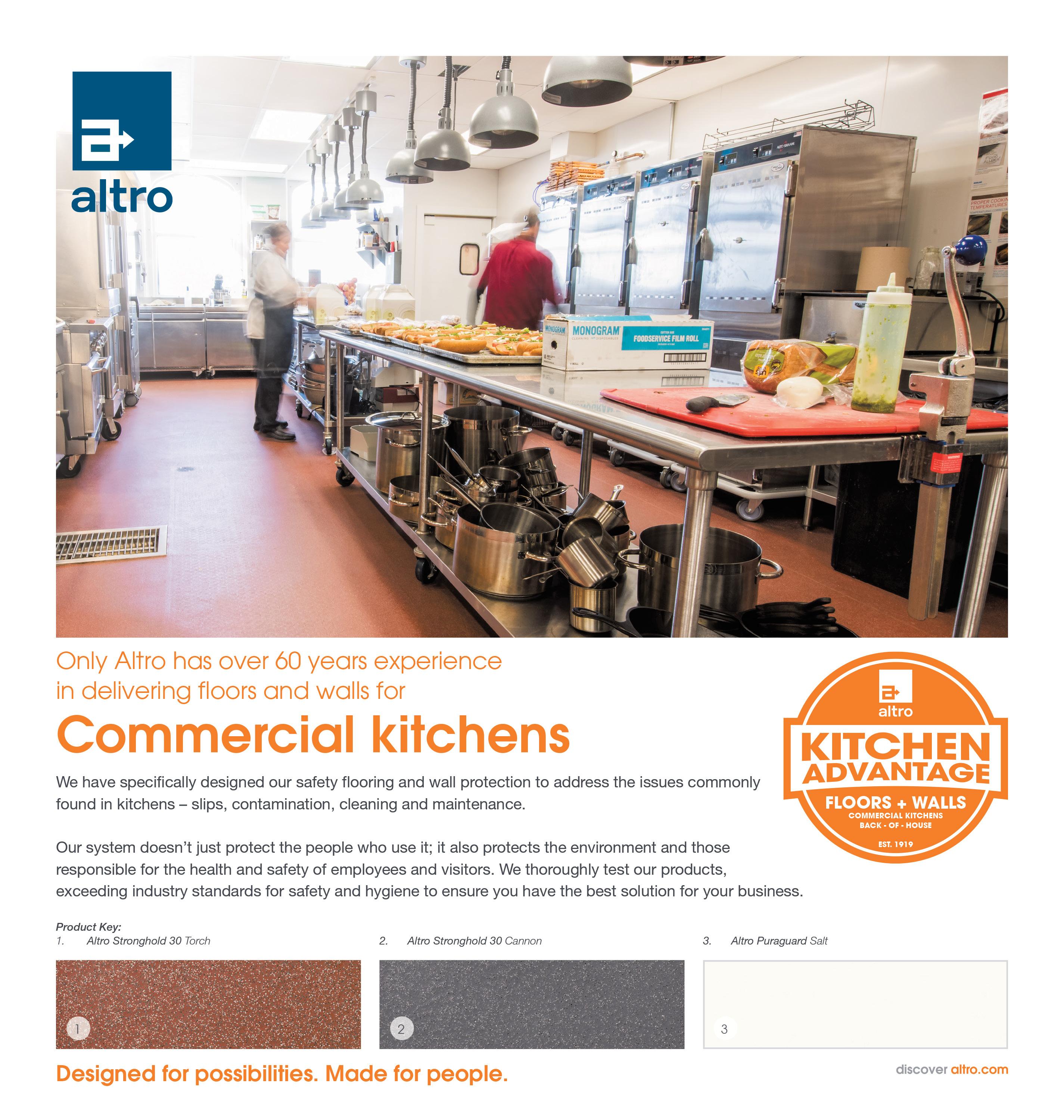
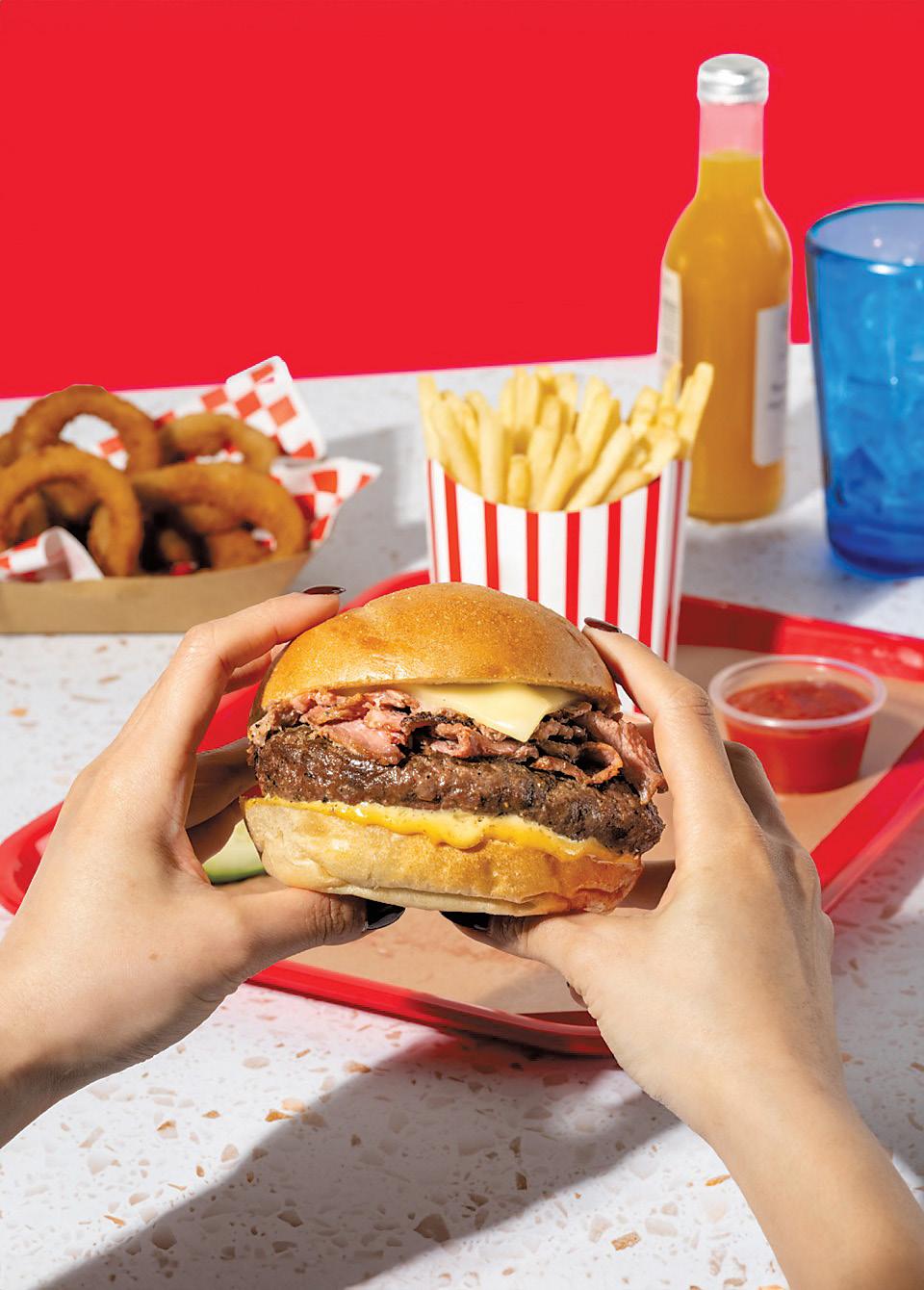
Restaurant chains have increasingly utilized the sous vide cooking method in their day-to-day operations. In doing so, they call upon Cuisine Solutions, the world’s leading manufacturer and distributor of sous vide products, to completely transform their kitchens. The sous vide pioneer works with over 30,000 restaurants to help managers lower labor costs, reduce waste by as much as 30%, and save countless hours of prep time for their chefs– all while being able to maintain consistency at hundreds of different locations.
French for “under vacuum,” sous vide is a cooking method in which food is sealed and cooked in water at precise times and temperatures. The method was forged by Cuisine Solutions’ French-born Chief Scientist, Dr. Bruno Goussault, and provides numerous benefits. From dramatically enhancing the flavor, texture and color of the product to reducing the chance of health and safety risks while improving inventory management, the sous vide technique has become a tried-and-true method for chefs around the globe.
Labor shortages seem to be a consistent theme in the restaurant industry, but by introducing Cuisine Solutions’ many sous vide products, you can cut the prep time to mere minutes while also decreasing the number of staff needed in the kitchen. Managers are then able to direct their staff take care of customers on the restaurant floor or perform other pressing tasks. Depending on the
size of the kitchen, a fully-booked restaurant can be handled by only one or two chefs, a real gamechanger for understaffed chain restaurants that need to save time.
Cuisine Solutions’ wide range of prepared products is customizable to accommodate restaurant chains ranging from casual to fine dining, with menu items for breakfast, lunch and dinner. These pasteurized sous vide selections include proteins, grains, plant-based products, sauces and their popular original sous vide egg bites, which have an 18-month frozen shelf life, six days when defrosted. Chefs can simply finish these products by heating, and put their own creative spin on the dish, knowing that the experience will be consistently delicious every time.
Cuisine Solutions works with its restaurant partners to deliver a memorable dining experience at scale, using their premium sous vide items to expand menu offerings so as to achieve the optimal order-to-serve times that boost profitability.
About Cuisine Solutions: Led by an international team of award-winning chefs, Cuisine Solutions is the world’s leading manufacturer of sous vide products — the innovative, precisecooking technique the company pioneered, perfected, and popularized decades ago. Headquartered in Sterling, Virginia, Cuisine Solutions services more than 30,000 restaurants and 6,000 retailers, as well as major airlines and hotels. For more information, visit www.cuisinesolutions.com.
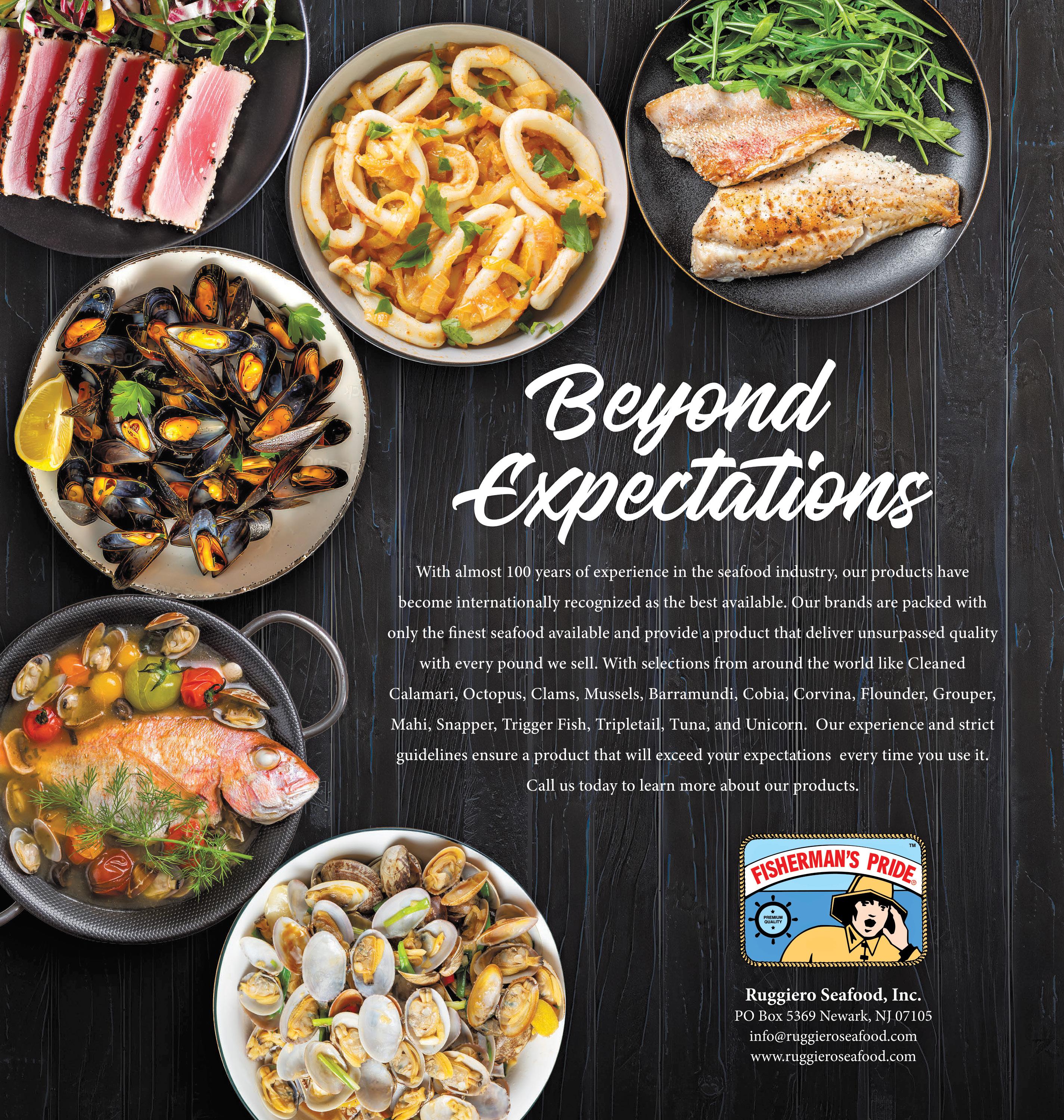
The sweet-heat sensation of Mike’s Hot Honey is creating a buzz in the breakfast world. From quick-service chains to trendy brunch spots, this spicy-sweet condiment is becoming a staple on morning menus across the nation. As consumers increasingly crave bold and innovative flavors, Mike’s Hot Honey is leading the “swicy” (sweet and spicy) trend that’s redefining how we enjoy breakfast.
Buds All Day Long
Mike’s Hot Honey, the original and leading brand of hot honey, is no longer just a pizza topping or a snack-time drizzle. The unique combination of honey and chili peppers has infiltrated breakfast menus, adding a kick to morning favorites like bacon, waffles, and sandwiches. The brand’s rise in popularity reflects a broader culinary trend toward more adventurous flavor profiles that offer a blend of sweetness and heat. This shift is evident in recent collaborations with major restaurant chains and breakfastfocused brands.


savory, sweet, and spicy flavors. These offerings are part of Dunkin’s summer 2024 menu, showcasing how versatile and appealing hot honey can be in the breakfast space.
Dunkin’ Donuts, a breakfast staple for many Americans, has embraced the hot honey trend by introducing three new menu items featuring Mike’s Hot Honey. These include the Hot Honey Bacon Sandwich, Hot Honey Bacon Wake-Up Wrap, and Hot Honey Snackin’ Bacon. Each item combines classic breakfast ingredients—like eggs, bacon, and cheese—with a drizzle of Mike’s Hot Honey, creating a delightful balance of
First Watch, known for its chef-driven breakfast dishes, has reintroduced its popular Million Dollar Breakfast Sandwich featuring Mike’s Hot Honey. This sandwich, which debuted in 2019, includes Million Dollar Bacon, pork sausage, a cage-free egg, smoked Gouda, and fresh arugula, all elevated with a drizzle of Mike’s Hot Honey. This combination of premium ingredients and the sweet-spicy kick has made it a returning customer favorite.
First Watch’s Senior Vice President of Culinary Strategy, Shane Schaibly, noted the long-standing partnership with Mike’s Hot Honey, highlighting that the
condiment has become a key ingredient in several of the restaurant’s dishes. “It’s a spicy-sweet partnership that continues to excite our customers,” Schaibly said.
The iconic Roy Rogers chain has also jumped on the swicy bandwagon, introducing a limited-time Chicken and Waffles dish featuring Mike’s Hot Honey. The dish pairs crispy fried chicken with fluffy waffles, topped with powdered sugar and a generous drizzle of hot honey. According to Roy Rogers Co-President Jim Plamondon, the addition of Mike’s Hot Honey takes the classic dish to the next level by offering a unique balance of sweet and savory flavors.
Mike Kurtz, the founder of Mike’s Hot Honey, shared his enthusiasm for partnering with Roy Rogers, noting that it’s a nostalgic brand for him personally. “Growing up, I visited Roy Rogers on
family road trips. It’s exciting to now see our hot honey featured on their menu.” Midwestern-based Thornton’s also showed that convenience stores are getting into the hot honey breakfast trend. The 200-store chain recently introducing a Hot Honey Chicken & Waffle Breakfast Sandwich as part of a limited-time menu option.
The rise of Mike’s Hot Honey is part of a larger trend in the food industry toward bold, unexpected flavors. According to industry reports, over 80% of consumers now enjoy spicy foods, and hot honey is leading the charge in meeting this demand. Mike’s Hot Honey, with its perfect balance of sweetness and heat, has become synonymous with the trend, appearing on an increasing number of
continued on page 122


hef Hajime Sato is the culinary mastermind behind Sozai in Clawson, Michigan, and the recent recipient of the prestigious James Beard Award for Best Chef: Great Lakes. Chef Sato’s journey is one of passion, resilience, and a deep commitment to sustainability—a journey that has not only earned him national recognition but has also put Michigan’s culinary scene in the spotlight.
Total Food Service is delighted to present an exclusive interview with Chef Sato, as his story is extraordinary for many reasons. Born and raised in Tokyo, Sato honed his craft in Japan before making a name for himself in Seattle, where he ran the pioneering sustainable sushi restaurant, Mashiko. In 2019, he relocated to metro Detroit with his wife, Elizabeth, who was undergoing cancer treatment, and it was here that he embarked on a new chapter, opening Sozai in 2021 amidst the challenges of the pandemic. Despite these hurdles, Sozai quickly became a beloved destination for sushi lovers, earning accolades such as the Eater Award for Best New Suburban Restaurant and a spot on The Detroit News’ best new restaurants.
Sato’s win at the James Beard Awards is historic, as it marks the first time a sushi restaurant has taken home the award in the Great Lakes region, and it’s the first time a Michigan chef has won in this category since 2003. But beyond the accolades, what truly sets Chef Sato apart is his unwavering dedication to ocean conservation and ethical sourcing. At Sozai, you won’t find typical sushi rolls like the California or Philadelphia roll; instead, you’ll experience a menu that reflects Sato’s commitment to sustainability and his deep respect for the ingredients he uses.
What initially sparked your passion for cooking?
I came to the U.S. as an exchange student in Idaho and stayed. Cooking started as a temporary job when I was attending community college in Seattle, and somehow, I’m still doing it.
How did your parents influence your career and who you are today?
My parents did a good job raising me with
continued on page 38

strong values. Growing up in Japan, there’s always a sense of striving to be better. Even with recognition, I still have that mindset of never being good enough, always pushing to improve.
Your career really began to take off at the restaurant Mashiko in Seattle. Can you tell us about that experience?
That came after several stints at different restaurants. Eventually, in 1994, I opened my own restaurant, Mashiko, in Seattle.
Could you elaborate on the restaurants you worked at prior to Mashiko and the lessons you learned there?
I apprenticed under various chefs and worked at multiple restaurants before opening Mashiko. What I learned is extensive, and it’s difficult to sum up in a few words. Running a restaurant is not something you master and move on from—it’s an ongoing learning experience. Every single day presents new challenges and opportunities to learn and evolve.

cal shift that was hard, but the timing was far from ideal.
What makes Sozai the best sushi restaurant in Michigan?
At Sozai, we specialize in Omakase, which is essentially the chef’s choice. You sit down, I ask you a few questions, and then I prepare a meal tailored to you. My goal is to bring traditional Japanese cuisine to Detroit, focusing on quality and customer experience above all else.
How do you manage sourcing highquality ingredients in a place like Michigan?



















It’s challenging because I emphasize sustainable seafood. I can’t rely solely on distributors; I have to work with several and sometimes even get fish directly from fishermen. My approach requires a lot of effort and creativity in sourcing ingredients that meet my standards.
What are some of the toughest challenges in running a restaurant?
Everything can be tough—people, products, consistency. My wife and I manage a small restaurant. We handle everything from bookkeeping and ordering supplies to cleaning toilets and preparing food. It’s a lot to juggle, especially when you’re the one making the food right in front of the customers. There’s no one else to depend on.
You moved from Seattle to Michigan. What prompted that decision, and how has it influenced your culinary style?
The move was primarily for medical reasons. Transitioning from Seattle to Michigan was challenging, especially in sourcing fresh fish and other ingredients like sake. Opening a restaurant during the tail end of COVID added to the difficulty due to supply and labor shortages. It wasn’t just the geographi-









What is your perspective on the issue of overfishing?
Our oceans, much like our planet, are in poor shape. While my small restaurant alone can’t make a massive difference, I believe everyone has a role to play. The recognition from James Beard helps amplify my voice, and I hope it encourages others to take action.
Are you involved with any national organizations dedicated to sustainable seafood?
Yes, I work closely with Seafood Watch and NOAA. I believe everyone—from governments to consumers—should be involved in sustainability efforts. After all, we all live on this planet, and our actions impact the environment.
On your website, you mention “no California rolls.” Could you explain the reasoning behind that?
It’s simple—I don’t serve California
continued on page 40


rolls. If that’s what you’re looking for, my restaurant isn’t the place for you. My focus is on traditional Japanese cuisine, and while I respect innovation, I believe it should be rooted in a deep understanding of tradition.
How do you balance tradition and innovation in your cooking?
The concept of tradition itself is complex. What is considered traditional today might have been an innovation centuries ago. For example, tomatoes in Italian cuisine or noodles in Chinese cuisine evolved over time. My approach to sushi is more about maintaining the authenticity of what I grew up with in Japan, rather than simply combining trendy ingredients. Innovation, to me, is about refining traditional techniques and applying them to local ingredients, rather than mixing things up for the sake of novelty.
Japan has a rich culinary heritage with regional variations. Have you brought influences from a specific region of Japan to your cooking?
I’m from northern Japan, so my cooking often reflects the flavors of that region. However, I also incorporate techniques and elements from other regions, such as Kyoto, which has a lighter culinary style that I admire. But overall, my cuisine is rooted in Washoku, which is traditional Japanese cooking.
Do you frequently travel back to Japan to stay updated on culinary trends?
I wish I could travel back more often, but running a restaurant doesn’t leave much time for that. I stay in-
continued on page 42

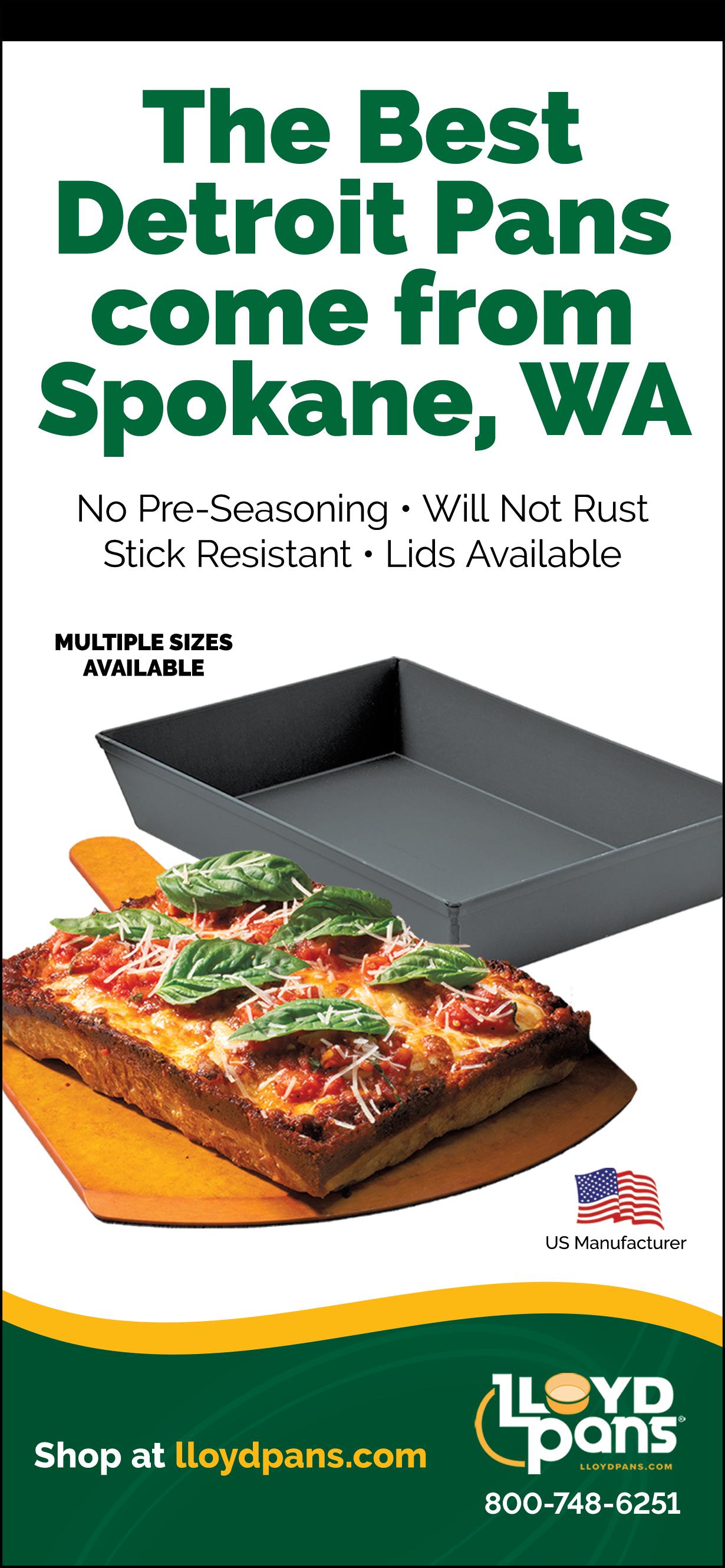
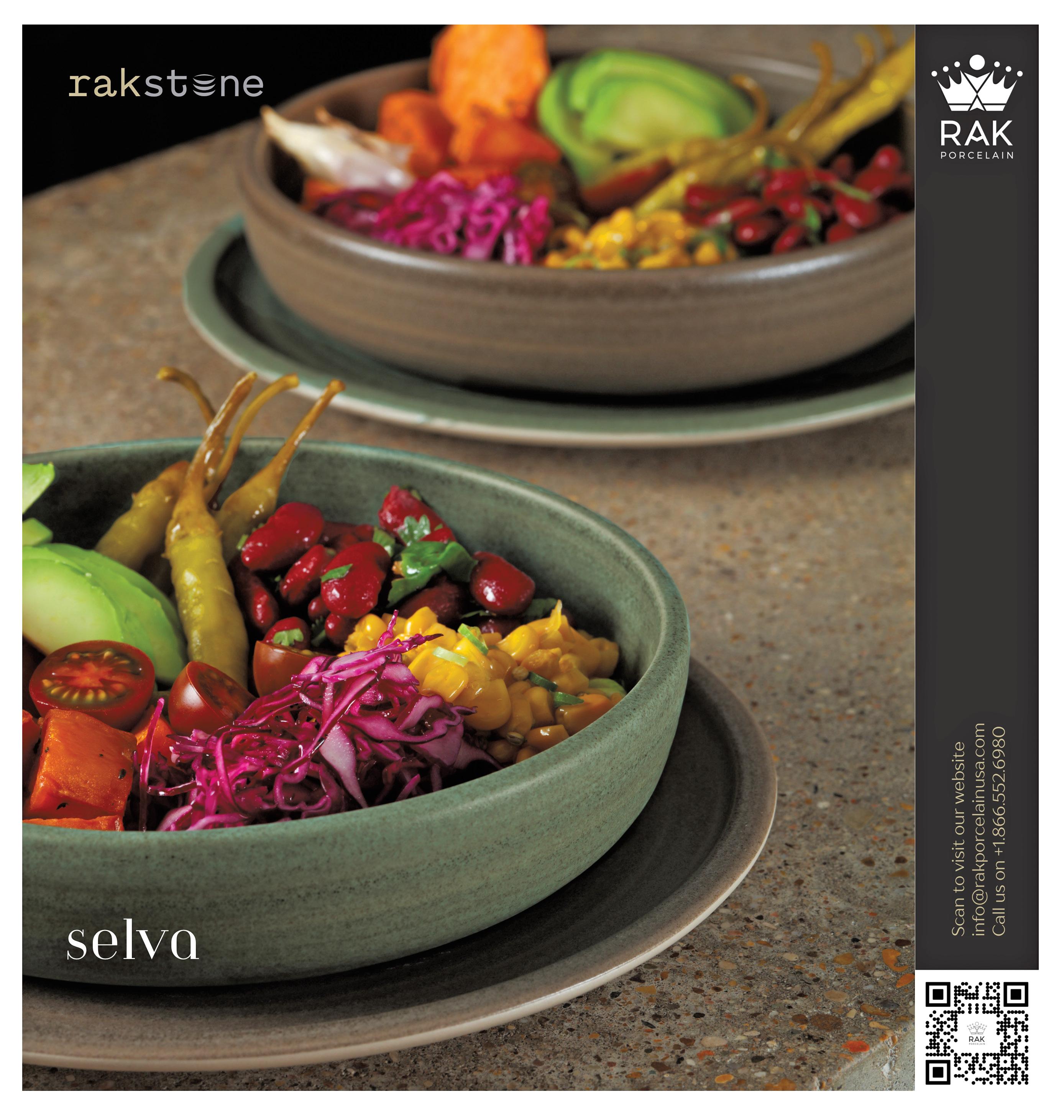
formed through magazines, books, and constant self-improvement. Japanese cooking is more about a personal challenge—doing something better today than you did yesterday—than following trends.
I noticed you are a certified Sake advisor. Can you explain the importance of this certification?
Sake is to Japanese cuisine what wine is to French cuisine. As a chef, it’s crucial to understand what people are drinking with my food. It’s not just about serving a drink; it’s about enhancing the dining experience.
Is Sake served in a similar way to how wine is served in Western dining—pre-meal, during the meal, and post-meal?
Absolutely. Just like wine, there are different types of Sake for different occasions and dishes. The variety is vast, with differences in alcohol content, acidity, and regional characteristics.
Is there a specific region in Japan that produces your preferred sake?
It’s not about preference; it’s about appropriateness. Just as a knowledgeable sommelier wouldn’t declare one wine region superior to another, the same applies to Sake. Each region has its unique qualities that suit different occasions.
You mentioned the James Beard Foundation. What was your reaction to being recognized by such a prestigious organization?
The recognition was a surprise and an honor. It gave me a platform to speak about sustainability and work with organizations I hadn’t collaborated with before. However, it’s a bit bittersweet because I’ve been doing the same work for years, but only now do people seem to notice because of the award. It’s humbling. This is my second nomination, and it still feels surreal. The recognition gives a voice to small restaurants
continued on page 44


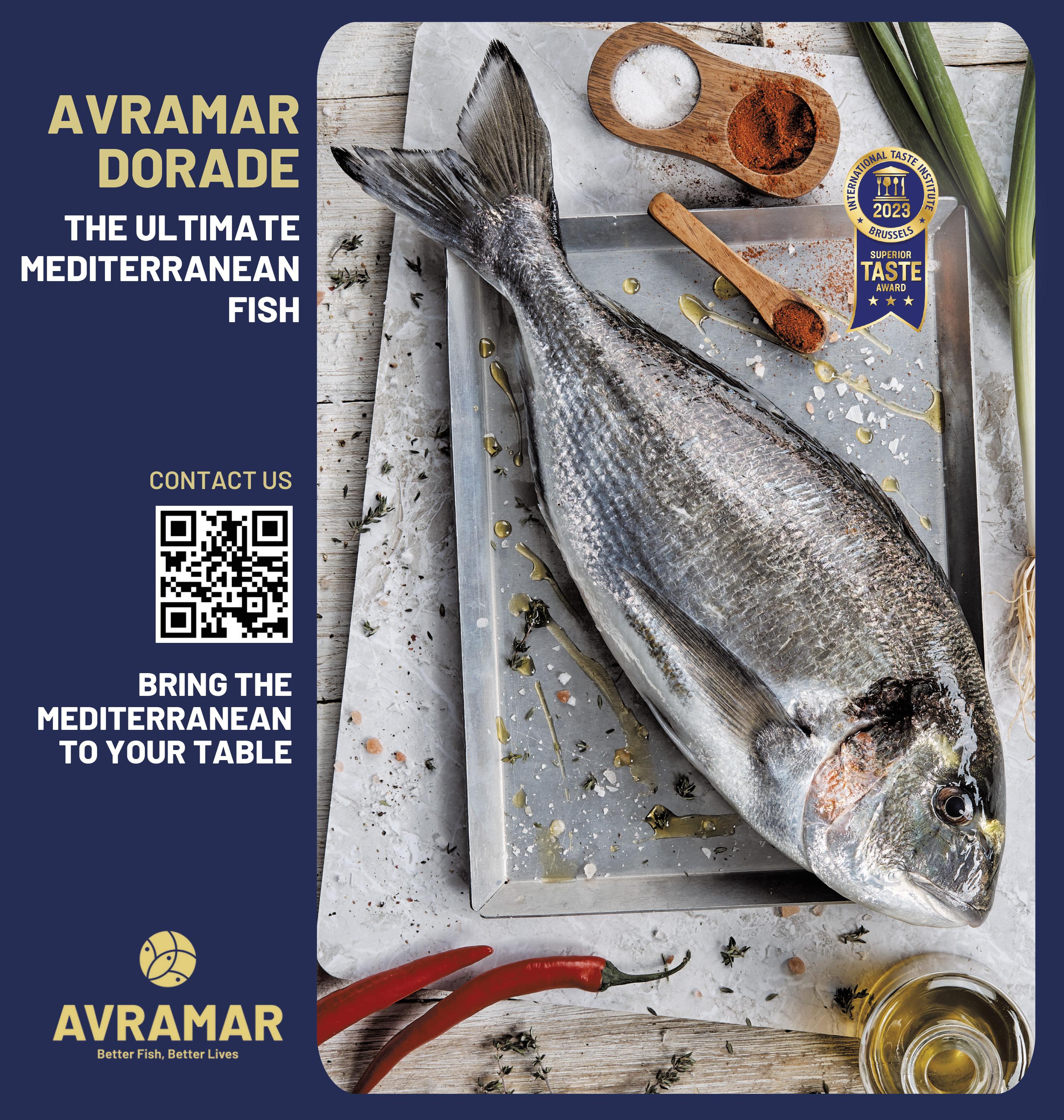
like mine, allowing us to advocate for issues like sustainability that matter deeply to me.
How has the James Beard recognition impacted your restaurant in terms of promotion and business?
A lot of new people like you calling! The restaurant was already busy before the recognition, and I haven’t increased capacity since. I’m focused on maintaining a comfortable level where I can provide the best experience for my customers. If the James Beard Award brings more people in, that’s great, but it doesn’t change how I operate.
What does your staff look like, and how have you built a successful team?
Our restaurant requires a passion for what we do. It’s not a job you can approach mechanically; every day is different. If someone enjoys the meticulous work, like massaging an octopus for 45 minutes, they fit in well here. It’s about finding joy in the details.
What’s it like running a business in greater Detroit? Is it a businessfriendly environment?
There’s bureaucracy, of course, but I think that’s the same everywhere. Sometimes it’s frustrating, but you push through it. We’re all human, after all.
Do you offer takeout or delivery services?
No, we don’t. Our focus is on the dining experience, which involves the personal preparation and presentation of each dish. That’s not something that translates well to takeout or delivery.
What advice would you give to aspiring chefs or future restaurant owners?
My approach is different from many chefs. I don’t see myself as an artist but as a craftsman. My goal is to improve incrementally every day—whether it’s cooking rice or cleaning the kitchen. It’s not about chasing awards or expanding. It’s about doing the best you can each day.
How do you feel about the trend of chefs expanding their brands to multiple locations?
It’s a common path, especially in the U.S., but it’s not for me. I’m content with my small restaurant. There’s value in maintaining a craft at a single location, even if it doesn’t lead to expansion or mass recognition.
What are your thoughts on craftsmanship, particularly in culinary tools, and how has that evolved?
Craftsmanship is crucial. For instance, there was a craftsman in Japan who made the best tweezers for boning fish. He retired, and no one took up his craft, so now that level of precision is lost. This loss of traditional skills concerns me. In my kitchen, I focus on sharpening my knives better each day rather than investing in the latest gadgets.
What do you do outside of the kitchen? Have you picked up any hobbies
or interests since moving to Michigan?
I do ceramics and create plates and bowls for the restaurant. I also dabble in painting.
What books or materials do you enjoy reading?
I recently read about the history of Sake rice, which might sound odd to some. But I find it fascinating. I’m always learning.
What’s next for you and your restaurant?
I don’t have grand plans for expansion or anything like that. My focus remains on improving my craft every day. I’m still heavily involved in every aspect of the restaurant, from ordering and preparing food to serving customers. It’s all about the product and the experience for me. Let’s start with getting ready for tonight’s shift.
All photos courtesy of Chef Sato unless labeled otherwise.

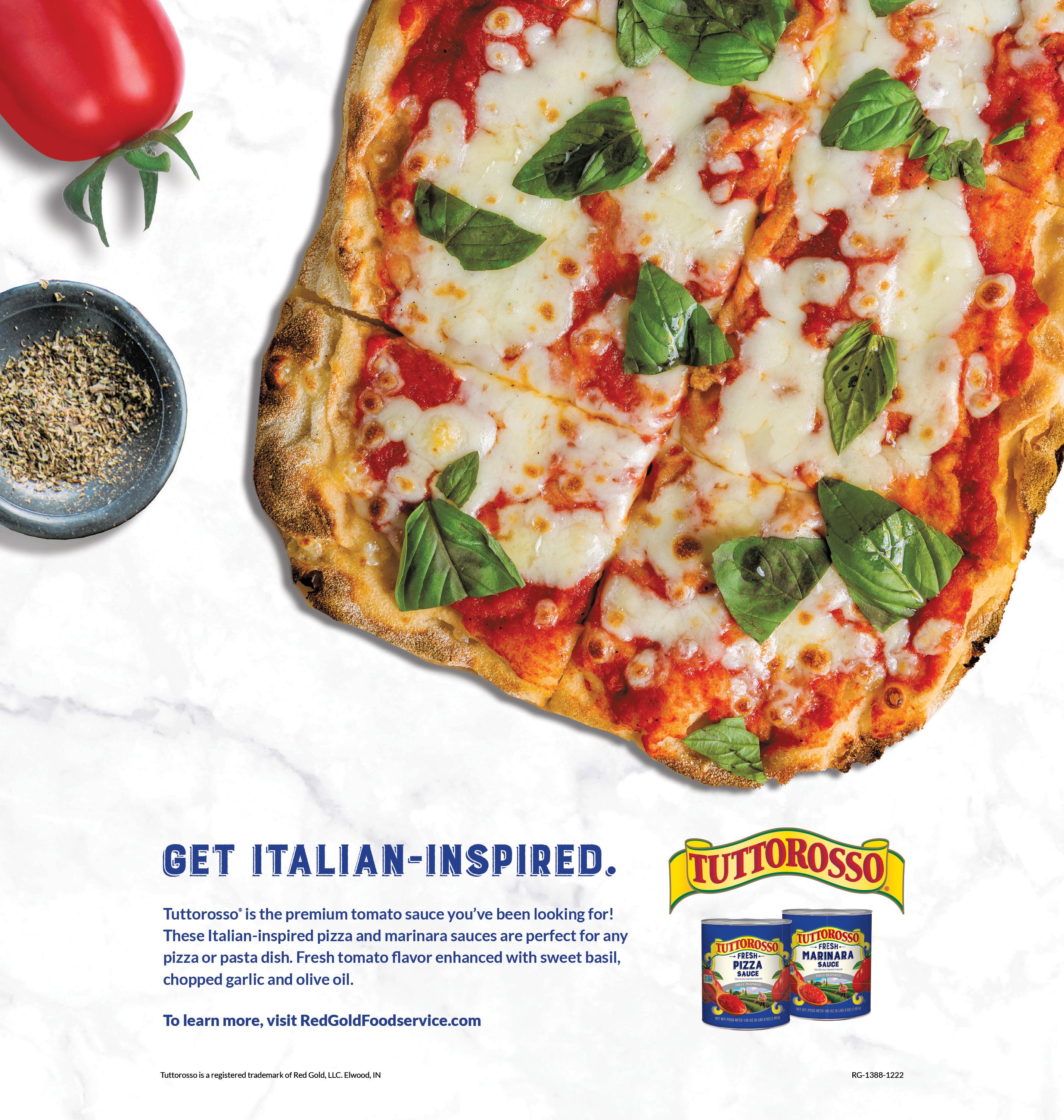
Renowned speakers, engaging workshops, international innovations, cooking demos, emerging brands, networking, and more await Plant Based World Expo attendees
Alot has transpired in the food and beverage market in the past year, and the brands that are thriving in plant-based mean business. Products are evolving in terms of taste, texture, nutrient density, ingredient lists, protein sources, sustainability, and more — and consumers are eating it up. In a market projected to reach $77.8 billion* and double just five years later, there’s no better place to take advantage of the opportunity than Plant Based World Expo, September 11-12, 2024, at the Javits Center in New York.
Attendees will hear from experts across the food industry, discover plantbased innovations, learn about the latest products and trends, and much more. This year there will be more than 125 exhibitors and sponsors, 40 conference sessions, and 3,000 people are expected to attend. With so much to see, hear and taste, how can attendees make the most of their time at the must-attend plantbased event for retail and foodservice?
Here’s a list of the top 10 unmissable experiences:
1. Understand what’s driving growth in the sector in Day One’s Keynote “Embracing the Plant-Based Plate: Integrating Plant-Based Products into Everyday Meals” led by SPINS’ CEO Jay Margolis, Impossible Food’s Joseph Saine, and Fresh Thyme Market’s Jonathan Lawrence. The keynote will be taking place in the PBW Pulse Theater on Sept 11, 11.45 am -12.45 pm.
2. Grow your network by joining the PBW Afterparty, where you can mingle with fellow attendees and exhibitors to celebrate the end of Day One on Sept 11,
5-6 pm.
3. Learn about the game-changing products within the plant-based community, when the winners of the 2024 Vegprenuer Awards are announced September 11, 4:00 – 4:45 pm.
4. Explore the global influence of plant-based foods from countries including Italy, Brazil, France, Canada, South Korea and the UK.
5. Discover new products and enjoy samples of ground-breaking plantbased products and ingredients on the Expo Floor. The exhibitor line-up includes Gardein, Oatly, Nature’s Fynd, Harmless Harvest, Impossible Foods, Shicken and Konscious.
6. Hear from industry leaders and pioneers shaping the plant-based sector’s future in the conference program, included in all passes for the first time in 2024. Topics include everything from carbon-reducing menus, merchandising strategies, retail innovations, clean label and plant-based products for kids.
7. Find out about the latest consumer surveys and trends in “Power of Plant-Based Food and Beverage Alterna-
tives 2024: Through The Shoppers’ Eyes” led by Food Marketing Institute’s Vice President Steve Markenson. It will take place in the PBW Pulse Theater on Sept 11, from 1 pm to 2 pm.
8. Finesse your menu to increase uptake of plant-based options with a collaborative workshop led by the HSUS Forward Food Program, “Strategies to Increase Plant-Based Take-Rate,” in the Special Events Area on Sept 12, 2-3pm.
9. Check out plant-based cooking demos in the Culinary Theater that feature both traditional whole food ingredients and plant-based alternatives. You’ll learn to make dishes like Jerk Gyros, Plant-Based Chicken Kimchi Fried Rice, Thai Tempeh, and New York Style Crumb Cake.
10. Meet plant-based industry trailblazers, disruptors, and experts who are speaking across the three theaters at the show, including speakers from Aramark, Menu Engineering, Earth Fare, and Impossible Foods.
Jenabeth Ferguson, Conference Manager, commented: “At Plant Based World Expo this year, we have crafted a com-


Ben Davis programs the world’s first and only fully plant-based trade expo and accompanying news site and newsletter. He developed the original concept of Plant Based World Conference and Expo for trade show management company JD Events, inspired by his own personal plant-based journey. The event launched successfully in 2019 in the U.S. at the Javits Convention Center in New York City and is currently onto the 2024 Edition. Ben’s mission is to make delicious, natural foods accessible to everyone. He believes that diet and lifestyle are the keys to a balanced and prosperous future for all beings on Earth. Outside of his work in food, Ben is a music producer and performer under the stage name Vibe Street. His greatest joy is making people smile, dance and come alive to the magic of the present moment. Ben is determined to spend his life building community and celebrating this mysterious human experience to the fullest
prehensive conference program that includes inspiring keynotes, dynamic panel discussions, and mouth-watering culinary demonstrations. These sessions, which will be included in all passes for the first time ever, cover the latest trends and challenges that retail and foodservice professionals are facing when engaging with the plant-based space.”
Ben Davis, Content Chair concluded: “At Plant Based World, our mission is to help inspire and support sustainable growth within the global food system. This year we will continue to do that with a stellar line-up of speakers, informative programming, and an Expo floor that will showcase the enormous variety of products available to today’s discerning consumers.”
To learn more about Plant Based World Expo or to schedule an interview with PBW leadership, please contact Abigail Stevens at abigail@jdevents.com.
*Statistica, 2021: https://www.statista. com/statistics/1280394/global-plantbased-food-market-value/
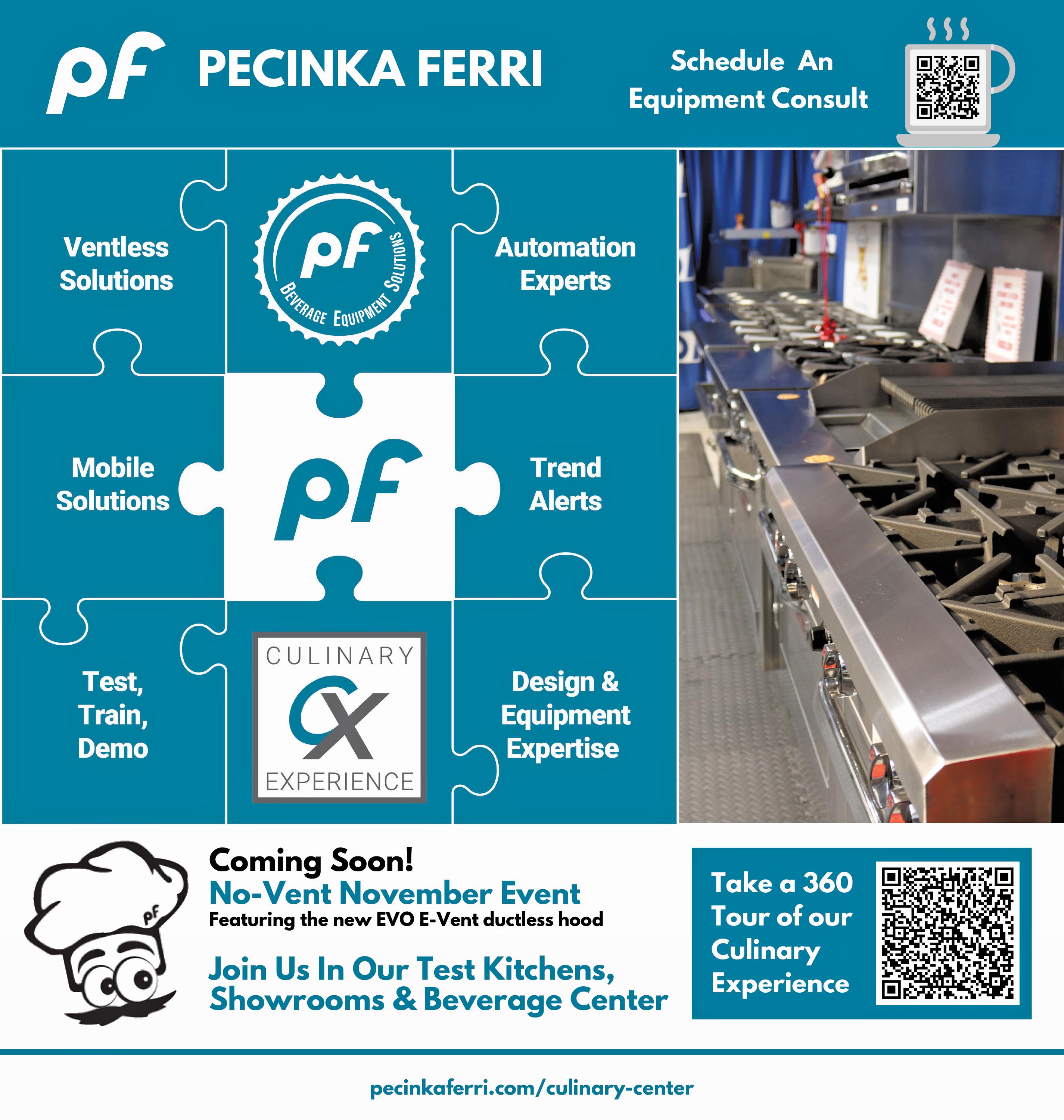
In recent years, the way we think about food has shifted dramatically, and has become a powerful tool for promoting health and wellness. At the forefront of this movement is the rise of functional foods—ingredients and products designed not only to nourish but also to provide specific health benefits beyond basic nutrition.
Functional foods are defined as those that offer benefits beyond their nutritional value, often targeting specific areas of health like digestion, immunity, energy, or mental clarity. These foods contain bioactive compounds such as vitamins, minerals, antioxidants, probiotics, and other natural substances that can have positive effects on the body.
The concept of functional foods isn’t entirely new. Traditional foods like yogurt, which contains probiotics, and oatmeal, rich in heart-healthy fiber, have long been valued for their health benefits. However, the modern food industry has taken this idea to new heights, creating products specifically formulated to
address various health concerns.
The growing popularity of functional foods is driven by several key factors, reflecting shifts in consumer attitudes and societal trends. The health and wellness boom, with its increasing emphasis on preventive healthcare, has made consumers more conscious of how their diet affects their overall well-being, leading to a higher demand for foods that enhance wellness and prevent disease. The aging population has also contributed to this trend, as older individuals seek functional foods that support heart health, joint health, and cognitive function to maintain their quality of life. Additionally, in a world where stress levels are consistently high, many people are turning to functional foods that claim to improve mental clarity, reduce anxiety, and enhance mood, with ingredients like adaptogens gaining significant attention.
Finally, the desire for personalization and convenience is playing a crucial role, as consumers look for easy, tailored
health solutions that fit into their busy lifestyles, making functional foods an appealing option for addressing specific health needs without the complexity of supplements or strict diets.
The market for functional foods is rapidly expanding, offering a wide array of options designed to provide specific health benefits beyond basic nutrition. Among the most popular categories are probiotics, found in foods like yogurt, kefir, and fermented vegetables, which promote a healthy gut microbiome, enhancing digestion, immunity, and mood. A popular way to incorporate this essential nutrient is also through healthier versions soda. For example Olipop is a new kind of soda that’s good for you and tastes good. Available in 17 delicious, classic soda flavors. Prebiotics, non-digestible fibers present in garlic, onions, and bananas, also support gut health by feeding beneficial bacteria, improving digestion, and nutrient absorption.

Omega-3 fatty acids, essential fats found in fatty fish, flaxseeds, and walnuts, are crucial for heart health, inflammation reduction, and brain function. Antioxidants, such as vitamins C and E, available in berries, nuts, and green tea, help protect the body from oxidative stress and may reduce the risk of chronic diseases like cancer and heart disease. Sambazon is on the forefront of this trend with its focus on acai berries, which is thought to be the most powerful superfood in the Amazon. They offer smoothie bowls, energy drinks, frozen desserts and fresh juices containing the super berry.
Adaptogens, natural substances like ashwagandha, rhodiola, and ginseng, are believed to assist the body in coping with stress and maintaining balance, commonly

featured in teas, supplements, and functional beverages. Collagen, a protein found in skin, bones, and connective tissues, is popular in supplements for enhancing skin elasticity, joint health, and overall vitality, available in powders, drinks, and snack bars. Vital Proteins is one of the most popular brands used to incorporate collagen into your diet. Their collagen peptide powder not only contains the titular protein, but also hyaluronic acid and vitamin C, two powerhouse ingredients that provide glowing wellness benefits.
Additionally, fortified foods, such as orange juice enriched with calcium and vitamin D for bone health or cereals fortified with B vitamins and iron for energy, further exemplify the diverse range of functional foods catering to specific health needs.
The functional food market shows no signs of slowing down. As consumers continue to prioritize health and wellness, the demand for foods that offer specific benefits will likely grow. Innovations in food science are also paving the way for new functional ingredients and products, from bioengineered probiotics to personalized nutrition plans based on genetic testing.
However, it’s important for consumers to approach functional foods with a balanced perspective. While these products can offer valuable health benefits, they should complement, not replace, a wellrounded diet rich in whole, unprocessed foods.

The foodservice industry has long been a hotbed of innovation, continually evolving to meet the demands of efficiency, safety, and quality. One of the most significant advancements in recent years is the integration of robotics and automation within kitchen equipment. This revolution is not only enhancing operational efficiency but also redefining the culinary landscape. The origins of robotics in commercial kitchens can be traced to the late 20th century, when automation began to play a larger role in various industries. Foodservice operations, particularly those dealing with high volumes, started integrating robots to handle repetitive, labor-intensive tasks like chopping, mixing, and assembly. These early systems aimed to improve efficiency, consistency, and safety in the kitchen environment.
As robotics technology advanced, these machines evolved to take on more complex tasks such as cooking, plating, and even customizing orders based on real-time data. This shift was driven by the need to address labor shortages, maintain high food safety standards, and meet the growing demand for quick, high-quality service, fundamentally reshaping kitchen operations.
Robotics in foodservice is more than just a futuristic concept; it is a reality that is reshaping kitchens worldwide. From automated cooking and food preparation to precision frying and grilling, robots are taking on repetitive, labor-intensive tasks, allowing chefs to focus on creativity and customer service.
The adoption of robotic kitchen
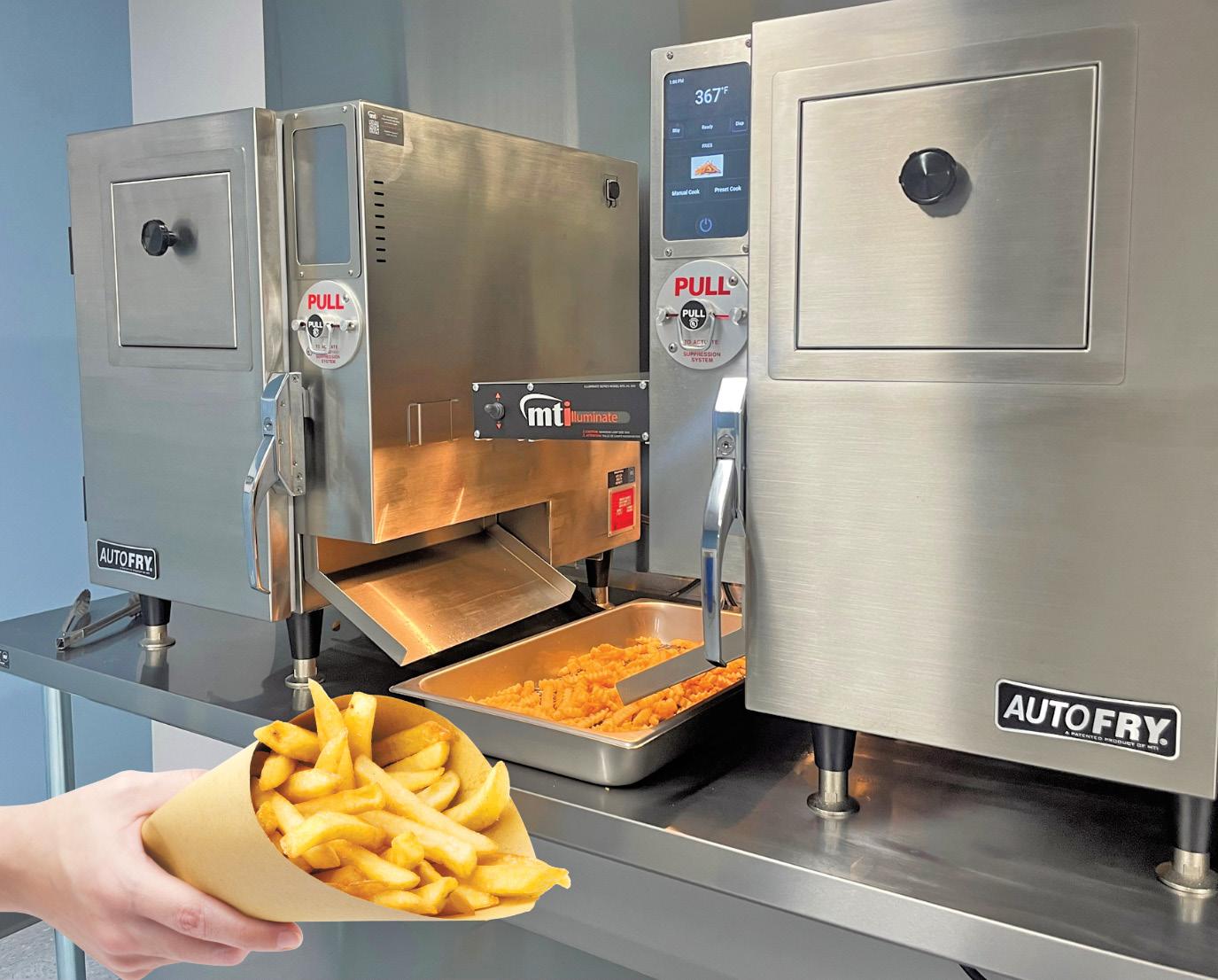
equipment brings numerous benefits:
1. Consistency and Precision: Robots ensure that every dish is prepared to the same standard, reducing human error and maintaining consistent quality.
2. Efficiency: Automated systems streamline kitchen operations, speeding up food preparation and reducing wait times for customers.
3. Safety: Robotics minimize the risk of accidents in the kitchen, especially in hazardous tasks involving hot oil or sharp tools.
4. Cost Savings: While the initial investment in robotic equipment can be significant, the long-term savings
in labor costs and improved efficiency often offset these expenses.
One of the trailblazers in foodservice robotics is AutoFry, renowned for its innovative approach to automated frying. AutoFry has revolutionized the industry with its fully automated and ventless deep-fryers, making highquality frying accessible and safe for all types of foodservice operations.
continued on page 122
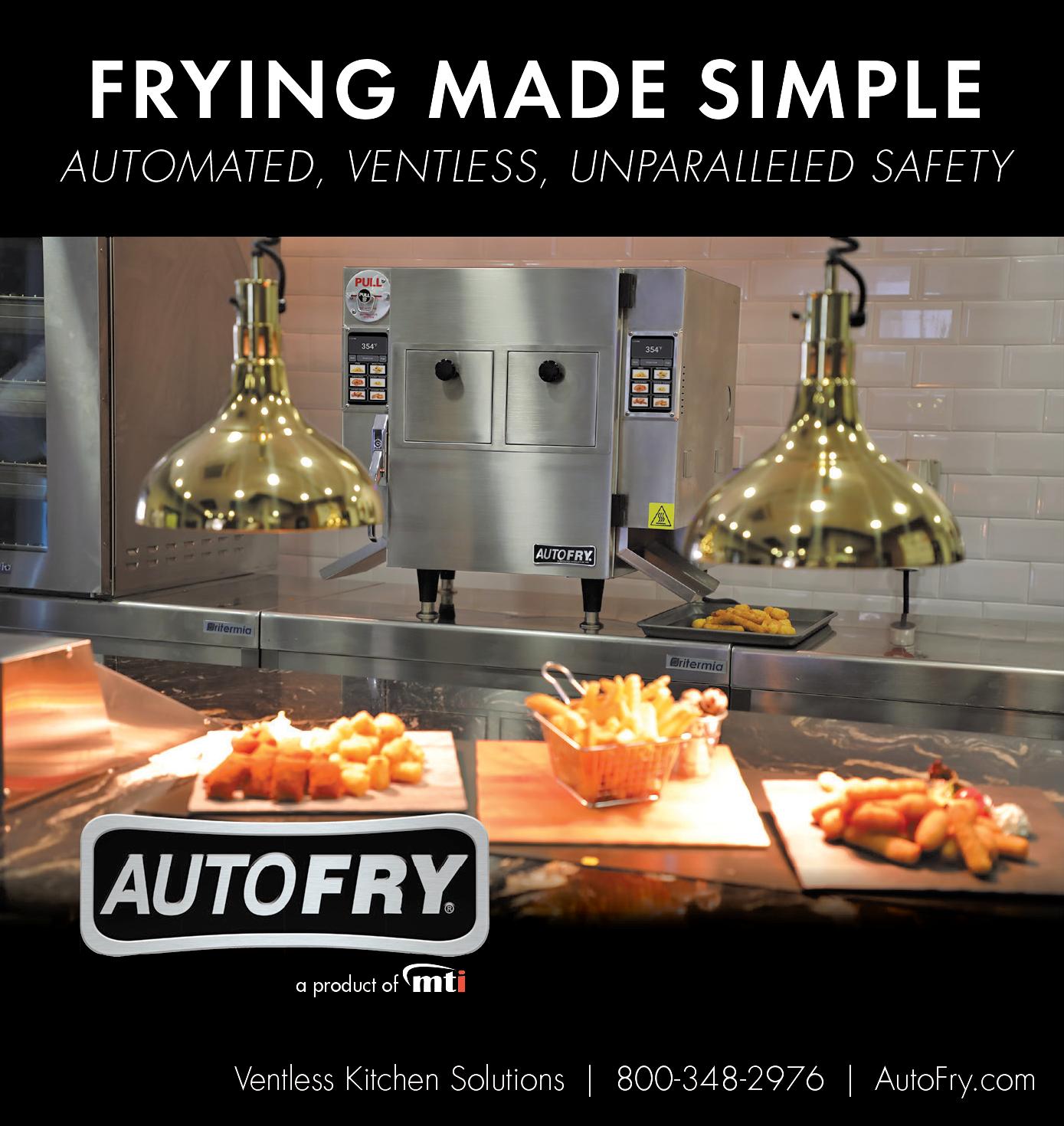
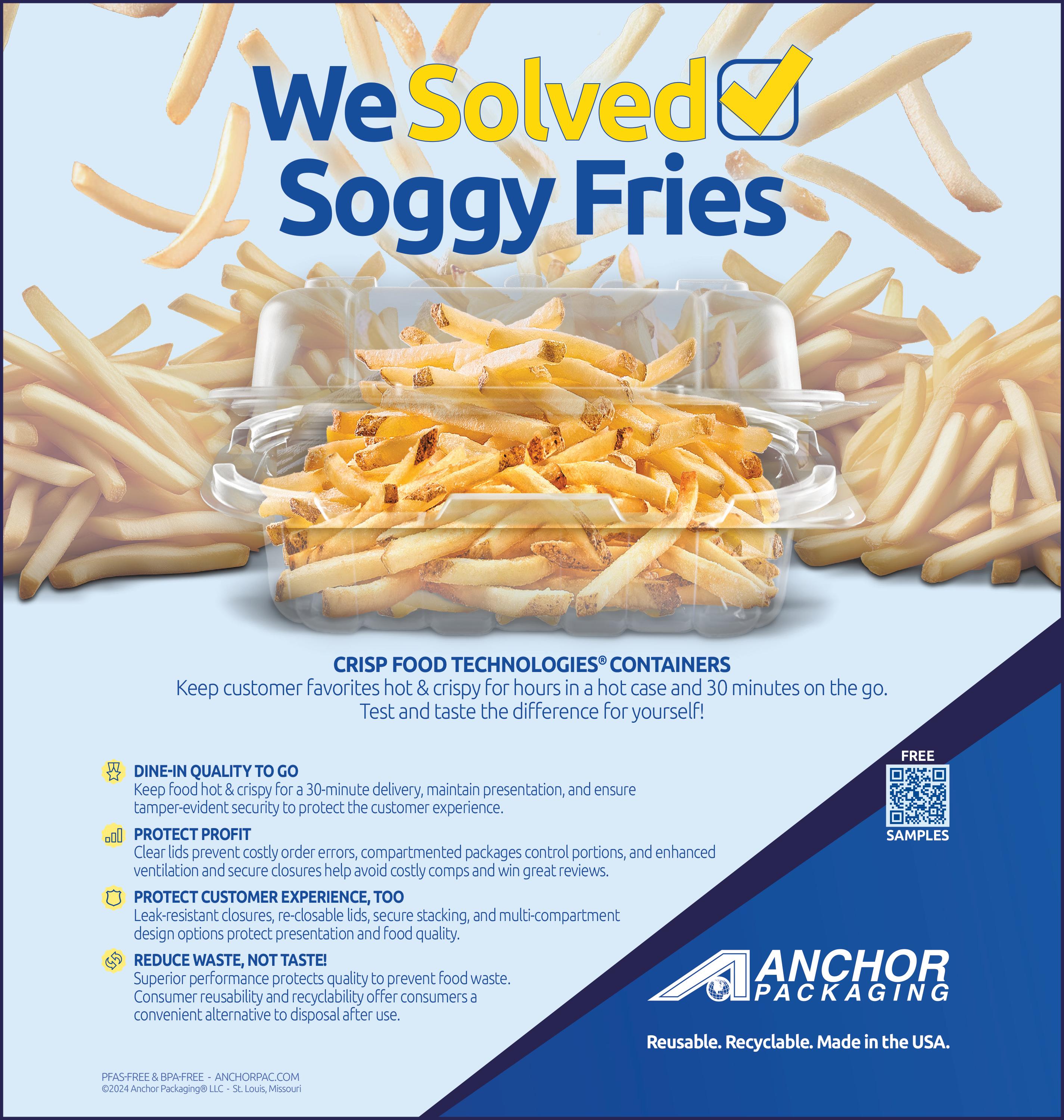
Day & Nite, the nation’s leading multi-sided mechanical services contractor, is set to open a new hub in Houston, Texas, next month. This expansion marks a significant milestone in the company’s strategic growth, as it moves beyond its strong East Coast roots into the vibrant Texas market. With this new operation, Day & Nite is poised to bring its top-tier commercial HVAC – Refrigeration – Cooking equipment installation, maintenance and repair solutions to a region that is not only growing rapidly but also facing increased demands for excellence in restaurant operations, especially with the recent announcement that Michelin stars will begin rating Texas restaurants.
Founded in New York more than 45 years ago, Day & Nite has built an unrivaled reputation for providing high-quality facilities management services to businesses across various sectors. Over the years, the company has expanded organically along the East Coast, establishing strong footholds in cities such as Boston, Philadelphia, Baltimore, Washington, and further south into North Carolina and South Florida. Now, with its latest move into Houston, Day & Nite is extending its reach into one of the most dynamic and fast-growing regions in the United States.
“Our journey from New
York along the Atlantic seaboard has been one of steady, organic growth,” said Matt Sher, CEO of Day & Nite.
“We’ve thoughtfully expanded into all markets, always maintaining our commitment to quality and innovation Michelin stars establishments depend on.”
Houston, known for its diverse culinary scene and robust business environment, profiles identically to other markets Day & Nite has excelled in. The city’s expanding commercial foodservice industry presents a ripe market for Day & Nite’s carefully curated integrated services. The recent announcement that Michelin stars will begin rating Texas restaurants further heightens the need for top-tier facilities management, as operators strive to meet the rigorous standards required to earn and maintain these prestigious accolades.
Day & Nite’s expansion into Houston comes at a time when the Texas restaurant industry is under increased scrutiny—additional pressure on restaurant operators to ensure their physical plants are operating at Michelin stars qualified peak efficiency. This is where Day & Nite Service’s proven certainty of execution pedigree becomes invaluable.
“Expanding into Texas at this moment is particularly exciting, especially with the recent announcement that Michelin stars will begin rating Texas restaurants,” Sher commented. “In fact our existing contract customer base is dominated by Michelin stars rated restaurants, ensuring physical plants are operating at 100% capacity mission critical.”
The company’s Houston hub will offer a comprehensive range of services, including HVAC, refrigeration, and kitchen equipment installation, repair and maintenance, specifically engineered to deliver superior economies of scale. With a team of highly trained technicians and a commitment to developing and using the latest technologies, Day & Nite is uniquely equipped to support Texas restaurants in achieving the high standards set by Michelin and other industry benchmarks.
“Our success has always been rooted in a commitment to state-of-the-art technology and service excellence,” Sher added. “As we bring Day & Nite to Houston, we’re prepared to help local operators meet the high standards that Michelin-starred restaurants demand.”

For Day & Nite, the decision to open a hub in Houston is not just about geographical expansion it’s about bringing its commitment to excellence to a city demanding nothing less. The company has always been at the forefront of deploying the latest technological advancements to enhance its service offerings. From advanced diagnostic tools to predictive maintenance technologies, Day & Nite ensures that its clients facilities operate smoothly and efficiently, minimizing downtime and maximizing ROI.
continued on page 113

In the high-stakes world of culinary arts, chefs are often seen as artists, meticulously crafting signature dishes that tantalize taste buds and elevate dining experiences. However, behind the scenes, these culinary artisans face a myriad of challenges that extend well beyond the kitchen. The struggle to balance creativity with profitability can be a daunting task, leaving many chefs feeling overwhelmed and unsupported.
For those in the bustling culinary landscape of New York City, these frustrations can be particularly acute, as the pressure to innovate while maintaining a healthy bottom line intensifies. Recognizing the need for a solution, one visionary chef made a career change in search of a solution to bridge this gap, creating a platform that empowers fellow culinary professionals to thrive.
In 2020, Josh Sharkey, a seasoned pro-
“With meez, chefs could calculate costs down to the penny, helping them make informed decisions about pricing and menu development. It wasn’t just about creating delicious dishes—it was about making sure those dishes were profitable.” — Josh Sharkey
fessional chef, set out to address a fundamental issue that had long plagued the culinary world: the lack of a dedicated, intuitive tool for managing recipes. Sharkey, having spent years in the fast-paced environment of professional kitchens, recognized that the existing solutions—often skewed towards ERP systems or rudimentary inventory management tools—failed to meet the nuanced needs of chefs and restaurateurs. Thus, meez was born, a platform designed to

revolutionize how recipes are managed, shared, and leveraged in the modern culinary landscape.
meez’s journey began with a simple yet powerful offering: a free recipe storage platform. This was not just a basic digital tool, but a thoughtfully designed solution that allowed chefs to store, organize, and access their recipes from anywhere. For many chefs, this was a game-changer. No longer did they need to rely on outdated notebooks, scattered
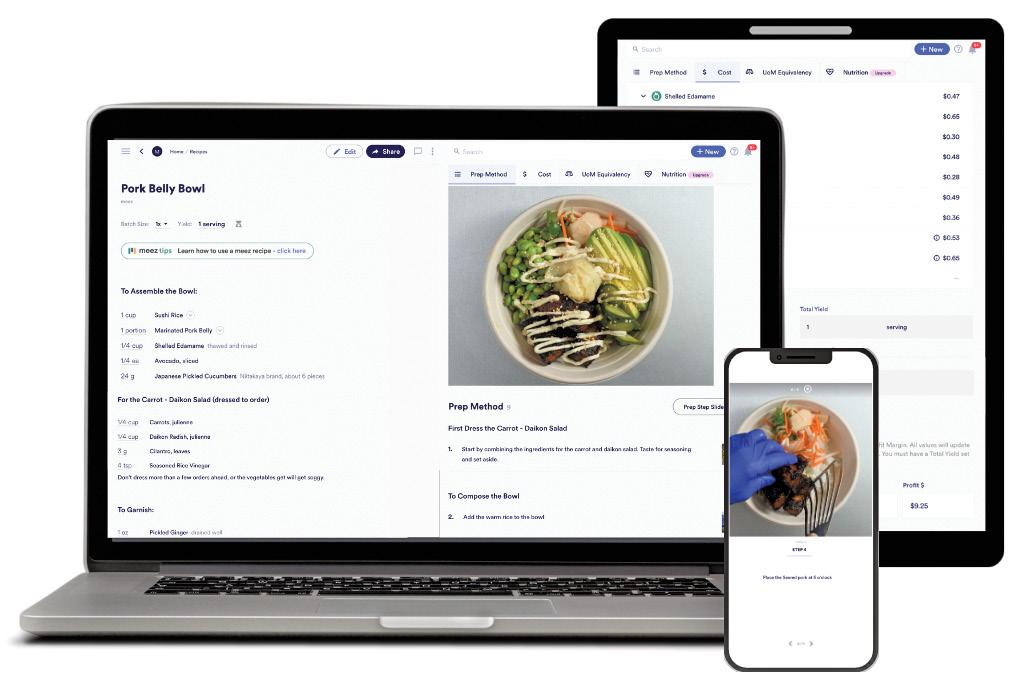
spreadsheets, or clunky software. meez provided a centralized, intuitive platform that could be accessed at any time, from any device.
“When I was working online, I often found myself frustrated with the tools available,” Sharkey recalled. “There wasn’t anything out there that truly understood how chefs think and work. Imagine a software tailored for chefs, combining dependability with creativity. meez seamlessly integrates with kitchen operations, while ensuring efficiency and cultivating culinary innovation.”
The free version of meez continues to offer essential features that quickly became indispensable to culinary professionals:
• Recipe Creation and Organization: Chefs can easily input their recipes, categorize them, and access them from anywhere, ensuring that their culinary creations were always at their fingertips.
• Dynamic Scaling: Recipes can be scaled up or down with just a few clicks, making it simple to adjust portions for different service needs.
• Sharing Capabilities: meez enables chefs to share their recipes with colleagues and peers, fostering collaboration and knowledge exchange within the culinary community.
As meez gained traction, it became clear that the platform could offer much more than just recipe storage. Recognizing the diverse needs of culinary professionals, the platform expanded to include a suite of advanced tools designed to address every aspect of recipe management and beyond. These features continued on page 132

Let’s be clear right from the start, tomatoes are not a vegetable, they are, indeed, a fruit. In fact, you might have heard of them being referred to as, “the fruit of the vine,” which, technically speaking, means they meet the botanical definition of a fruit. Botanical fruits, by definition, have at least one seed, and grow from the flower of a plant – an accurate description of a tomato. But all that aside, I just love these botanical beauties - I can’t get enough of them!
Growing up in Greece, there was nothing I liked better than the taste of a sweet, juicy tomato just plucked straight off the vine. I can still remember the feeling of sinking my teeth into one, as the cool juices rolled down my chin. It was my favorite afternoon snack as the summer moved to a close. I looked forward to it every single day-- finding the perfect, glorious, vibrant red fruit that I devoured in a matter of seconds... and still do, to this day.
I know I am not alone in my passion – or what some might call an obsession –for this fruit of the vine. No wonder these mouthwatering gems have become a key ingredient in a wide and delicious variety of Mediterranean dishes – and really dishes from all over the world. This includes everything from the quintessential Horiatiki Salata (better known as a village salad) to the Greek classic, Moussaka, a layered casserole with eggplant, ground meat, bechamel, and, of course, tomato sauce, that’s baked to goldenbrown perfection.
Originating in the Americas, tomatoes had been consumed by native cultures primarily in Central and South America. In the 16th century, Spanish conquistadors brought tomatoes over to Europe, quickly found their way to Italy, and


eventually made their way to Greece.
As the story goes, tomatoes weren’t introduced to Greece until the early 19th century. It’s believed that around 1815 an Abbott (the head monk) of a Capuchin monastery was among the first to bring tomatoes to Greece’s mainland, and quickly found their way to the island of Syros, and then Santorini, both located in the Cyclades in the Aegean Sea.
By the early 1900’s, the little red gems had taken off, and before long they were planted and harvested across over 20,000 acres of land. Tomatoes quickly became so ubiquitous and bountiful in Greece, there was a need for large scale preservation methods like canning and producing tomato paste.
Despite the fact that it took a while for tomatoes to find their way to Greece, they thrive in this environment. With its hot summers, and mild wet winters, the Mediterranean climate is ideal for growing tomatoes; and while Greece has
many different kinds of soil, it turns out that all of them provide the perfect mix of nutrients that tomatoes need. Moreover, many Greek farmers insist on growing their tomatoes in a “clean environment,’ and that means no pesticides – by virtue, making them organic by default.
Anyone who knows me knows that I carry a can of tomato paste with me wherever I go. I know it seems like I’m a bit obsessed, and frankly, I am! I can’t live without it. Trust me, it tastes good, brings every dish to life, and it’s so good for you.
I remember going with my father to visit the Kyknos Canning Company factory in Nafplion to see how they preserved and canned tomatoes. I was awestruck by the bounty of beautifully ripe, red tomatoes and how the machinery worked to take this perfect item and turn it into something else that my family used at home all the time.

Chef Maria Loi is an entrepreneur, Greek food ambassador and healthy lifestyle guru. The author of more than 36 cookbooks, she is also the host of the award winning PBS series, The Life of Loi: Mediterranean Secrets, now airing its second season on PBS stations nationwide. Both seasons 1 & 2 are available to stream on PBS Passport, Amazon Prime Video, Apple TV, Amazon Freevee, Roku, and Plex TV. The Life of Loi aims to build an inspirational, educational movement around the Mediterranean diet and lifestyle. Loi Food Products, her specialty brand built on traditional ingredients from Greece, includes refrigerated dips, savory pies, pastas, botanical herbs, and olive oil sold on QVC, at Whole Foods Markets, Fresh Direct, and at other retailers. Chef Loi is also the namesake of the acclaimed restaurant, Loi Estiatorio, in the heart of Midtown Manhattan. Connect with her on LinkedIn, follow her on Instagram and Facebook, and learn more about her food philosophy at loiestiatorio.com/chef-loi/.
Kyknos was established in 1915 as a means to preserve the ripe fruit through canning, and has been making the best quality tomato products – especially their tomato paste – ever since! They are a model of sustainability in action, even then. In Greece, there is no home without a Kyknos product in its cupboards. Not only are their products essential parts of the Greek pantry, but their packaging is as well. You can find Kyknos cans used as flower pots and planters all over Greece!
While it makes sense to use tomato paste in the winter, when tomatoes are not as plentiful and fresh, I’m a fan of using tomato paste year-round. As a chef, I find tomato paste adds a great savory flavor, sometimes called ‘umami’ to any dish I use it in. It has a concentrated sweetness, a mild acidity, and it thickens sauces beautifully. My dear friend, Chef Jehangir Mehta, known as the ‘Guru of Sustainability’ said while filming with
continued on page 58

me for The Life of Loi, “The tomato paste – the umami of Maria’s life! It’s always in everything! If it’s not on her lips, it’s in the food!”
Right now, there is actually a shortage of tomato paste - it’s happening for a variety of reasons including the fact that high temperatures and heat waves are impacting how many tomato plants are being grown, and in turn, harvested. All of this points to the fact that I savor every tablespoon of this miracle ingredient I can get my hands on.
A little tip, once you open a can of tomato paste, keep it stored in your refrigerator - it preserves it, and prevents it from spoiling. You can keep it in a covered glass bowl, or a plastic container, but be sure to cover the surface with olive oil, a known natural preservative. You can also store it in plastic bags in the freezer. The key here is to prevent the tomato paste from being exposed to oxygen. Once a can is opened, you want to store it properly, so it can last much longer.
So, what’s the scoop? Is it better to use canned or fresh tomatoes? And how does tomato paste fare when compared with these other two options? The answer is… they all have their own relative health benefits.
Canned tomatoes actually contain more fiber, folate, B vitamins, and lycopene then their fresh counterparts. What I’ve always found interesting is that canned tomatoes actually retain more vitamin C then fresh tomatoes because of the lack of oxygen in the can. On the down side, canned tomatoes can have more sugar, salt and other additives, so be sure to read the label when you’re selecting a canned tomato.
Fresh tomatoes, as you’d suspect, have much higher levels of vitamins A, K and Folate. They are also chock full of lycopene and vitamin
C. Lycopene is a carotenoid – an antioxidant that may help prevent cancer, reduce inflammation and improve blood flow. Some research has shown that by combining tomatoes with a fat source like olive oil, it can actually help your body more effectively absorb the lycopene.
As for my beloved tomato paste, it also contains many of those same nutrients as its fresh or canned counterparts, including lycopene, vitamin C and vitamin K. However, studies have shown that processed tomato products such as tomato paste have higher levels of lycopene, the antioxidant known for its protective effect against some forms of cancer, especially prostate cancer. Remember, before adding anything new to your diet, always ask your doctor.
A Staple of Greek Cuisine - Versatile, Delicious, and Used in Just About Everything

ing tomatoes and onions, then blending with vegetable stock and adding some Greek yogurt for creaminess; or that viral baked tomato and feta dish with pasta – tomatoes can do no wrong!
Or, if you long to transform them so they can be used as a deliciously sweet or savory addition to one of your favorite dishes, they can easily be made into a sauce, a paste, distilled into a water, or even made into a powder.
Today, tomatoes are used extensively throughout the Mediterranean. The beauty of the tomato lies in its simplicity and its versatility. They can be used raw in salads, salsas, and dressings – or enjoyed on their own with just a drizzle of extra virgin olive oil and a sprinkle of sea salt.
My friend, Chef Cesare Casella, the Chief of the Department of Nourishment Arts at The Center for Discovery actually

revived an old Italian species of tomato, the Canestrino variety. When I tell you these are the BEST tomatoes I’ve ever had outside of Greece, I speak the truth. They are slightly oblong, plump, and the most gorgeous hue of ruby red you’ve ever seen. Never has a tomato been sweeter or juicier than Cesare’s tomatoes – so much so that when I make my salads with his tomatoes, the juices at the bottom of the bowl are saturated red!
Tomatoes respond beautifully to hot preparations as well, and can be sautéed, baked, roasted, blended, grilled or stuffed in their natural form. Think of succulent tomatoes, gently sauteed until the skin begins to rip, combined with fresh mussels, garlic, and herbs; or a decadent tomato soup, made by pan roast-
Tomato paste is an underutilized secret weapon in the kitchen – when added to roasts, braises, and sauces, it caramelizes to produce a deep layer of umami flavor – and while it can be tomato-y in flavor (if you choose to highlight it), it can also blend into the background adding depth to dishes in ways you can’t imagine. I used it to coat my lemon potatoes, which come out perfectly roasted with beautiful color, bright and lemony, not tasting of tomato at all! Or, when making a lamb shank, the tomato paste enhances the unctuous flavor of the lamb without a pronounced flavor of tomato. Honestly, the possibilities are endless.
I am often asked if tomatoes lose their health benefits when they are processed or cooked. You’ll be happy to know the answer is a resounding, no – in fact, this can elevate the absorption of nutrients into your body!

I’ve always believed that a lot of our favorite foods are tied to early memories. As a child, I remember watching my yiayia (grandmother in Greek) and my aunts grate fresh tomatoes and combine them with tomato paste to make some classic Greek dishes that included Turlu – a mixed seasonal vegetable stew made with fresh tomato sauce, tomato paste, garlic and olive oil; GemistaGreek Stuffed Vegetables that were filled to the brim with a medley of summer vegetables including tomatoes, green
continued on page 123
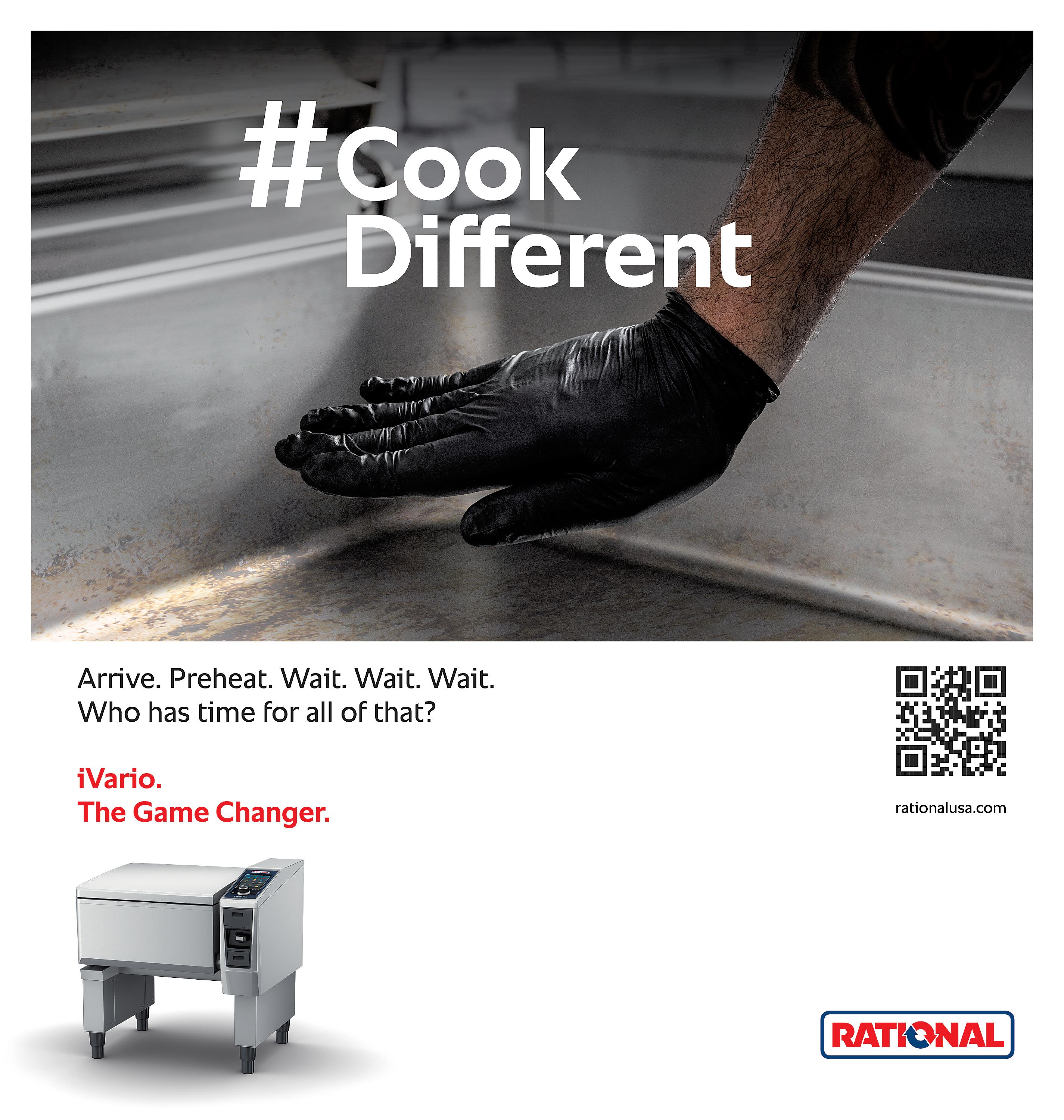
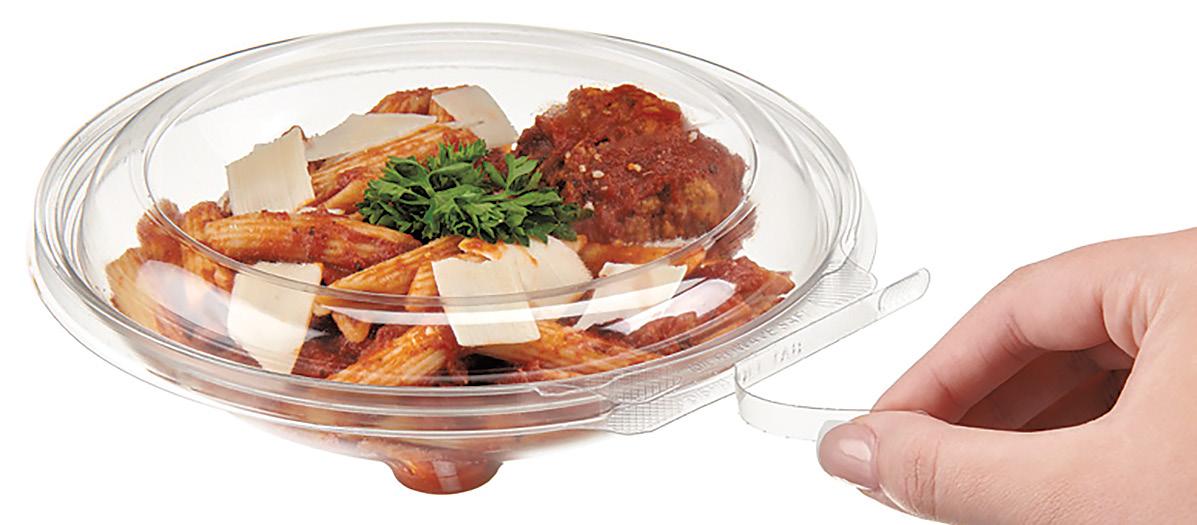
In the rapidly evolving world of food service, ensuring that delivery packaging is both secure and sustainable is crucial for maintaining the quality and safety of the food while minimizing environmental impact.
Inline Plastics Senior Brand Manager Carrie Cline, a seasoned expert in packaging solutions, offers a wealth of knowledge on that subject. With over a decade of experience in the packaging sector, Cline has witnessed firsthand the transformative effects of the growth in takeout and delivery services. She has been instrumental in driving innovative packaging designs that meet the demands of today’s market, emphasizing safety, durability, sustainability, and convenience.
Total Food Service sought out Cline to share her insights into how commercial kitchens are adapting to the labor shortages that have plagued the industry. She discusses the critical role of packaging in improving operational efficiency, with food safety a priority, reducing food waste, and enhancing the customer experience.
As the industry shifts toward more sustainable practices, Cline highlights the importance of designing packaging that not only preserves the quality of food but also aligns with the growing consumer demand for eco-friendly options. Her expertise provides a comprehensive look at how packaging is becoming an integral
part of addressing the challenges and opportunities within the food service landscape.
What specific challenges in the restaurant and foodservice industry does the Safe-T-Chef product line address?
Safe-T-Chef® is revolutionizing the restaurant and food service industry with its groundbreaking design. As the first tamper resistant, tamper evident, allclear, and leak-resistant polypropylene product line, it’s tailor-made to tackle the unique challenges faced by food businesses.
Imagine a world where consumers can instantly satisfy their cravings with just a glance. That’s the reality Safe-T-Chef® creates. Its crystal-clear construction allows customers to “shop with their eyes,” eliminating the need to decipher labels or ingredient lists. In seconds, they can see exactly what’s inside, making decision-making a breeze.
But Safe-T-Chef® isn’t just about looks. Its innovative flat lid design is a gamechanger for retailers. It maximizes shelf space, allowing for efficient stacking and storage, while simultaneously creating eye-catching displays that draw customers in.
From enhancing food visibility to optimizing store layouts, Safe-T-Chef® is more than just packaging – it’s a comprehensive solution that caters to the needs

of businesses and consumers alike. With Safe-T-Chef®, the future of food packaging is clear, secure, and irresistibly appealing.
How does Safe-T-Chef packaging contribute to food safety during third-party deliveries and in-store displays?
Safe-T-Chef® revolutionizes food protection for deliveries and retail displays. Its innovative seal provides visible integrity assurance, while the durable structure prevents tampering. The transparent design allows easy inspection, and the secure closure maintains freshness. This comprehensive approach helps businesses meet strict safety standards while reassuring consumers about their purchase quality, whether delivered or bought in-store. Safe-T-Chef® ensures meals reach customers just as the chef intended, maintaining excellence from kitchen to table.
What benefits do the tamper-evident and tamper-resistant features of SafeT-Chef offer to foodservice operators?
Safe-T-Chef’s tamper evident, tamper resistant features give foodservice operators a competitive edge in today’s safetyconscious market. These innovations help mitigate risks associated with food tampering incidents, potentially reducing liability concerns. They also serve as a powerful tool for brand differentiation,
demonstrating a strong commitment to consumer safety.
The visible security features provide reassurance to consumers, offering clear proof of food integrity from preparation to consumption. This enhances trust and can boost consumer loyalty. By adopting Safe-T-Chef packaging, foodservice operators invest in more than just a product – they’re strengthening consumer relationships and reinforcing a reputation for unwavering food safety standards. This proactive approach to safety can set businesses apart in a crowded marketplace, turning a necessary packaging choice into a valuable marketing asset.
In what ways does the Safe-T-Chef packaging ensure the freshness and quality of hot foods throughout the distribution process?
Safe-T-Chef packaging ensures the freshness and quality of hot foods during distribution through several key features. Its leak-resistant design prevents spills and maintains food integrity during transit. The packaging’s clarity allows for easy visual inspection. The tamper-evident features protect against unauthorized access, preserving the food’s original quality from preparation to delivery. Additionally, the packaging’s durability guards against physical damage during continued on pgs 126 + 128

In today’s competitive restaurant landscape, foodservice operators must embrace technology as a critical tool for overcoming a range of challenges. From escalating labor costs and shortages to menu engineering and effective marketing, technology offers innovative solutions that can streamline operations, enhance customer experiences, and boost profitability.
Understanding the latest technological advancements allows operators to optimize efficiency, reduce costs, and stay ahead in a rapidly evolving industry. Whether it’s automating routine tasks, leveraging data analytics for better decision-making, or enhancing digital marketing efforts, technology is no longer optional—it’s essential for today’s restaurant to succeed.
With that, The National Retail Federation (NRF) Show has curated a platform that is focused on bringing those solutions to their annual show. Long known as the flagship event for
“Within the NRF’s Foodservice Innovation Zone, operators will see the latest advancements in technology innovation, automated preparation and service, increasing efficiency and showcasing the opportunities of foodservice served up in retail.” — Rob Grimes, IFBTA
the retail industry, it is held annually at the Javits Center in New York City. Scheduled for January 12-14, 2025, the upcoming NRF Show is set to be a pivotal event for chefs and restaurant owners, offering a unique platform to explore the latest innovations in foodservice technology and retail strategies.
For decades, the NRF Show has been a premier event that brings together the best minds in retail, providing the stage to showcase and experience the latest technological advancements and trends. Traditionally focused on retail, the show has evolved to include a significant emphasis on foodservice technology, reflecting the growing
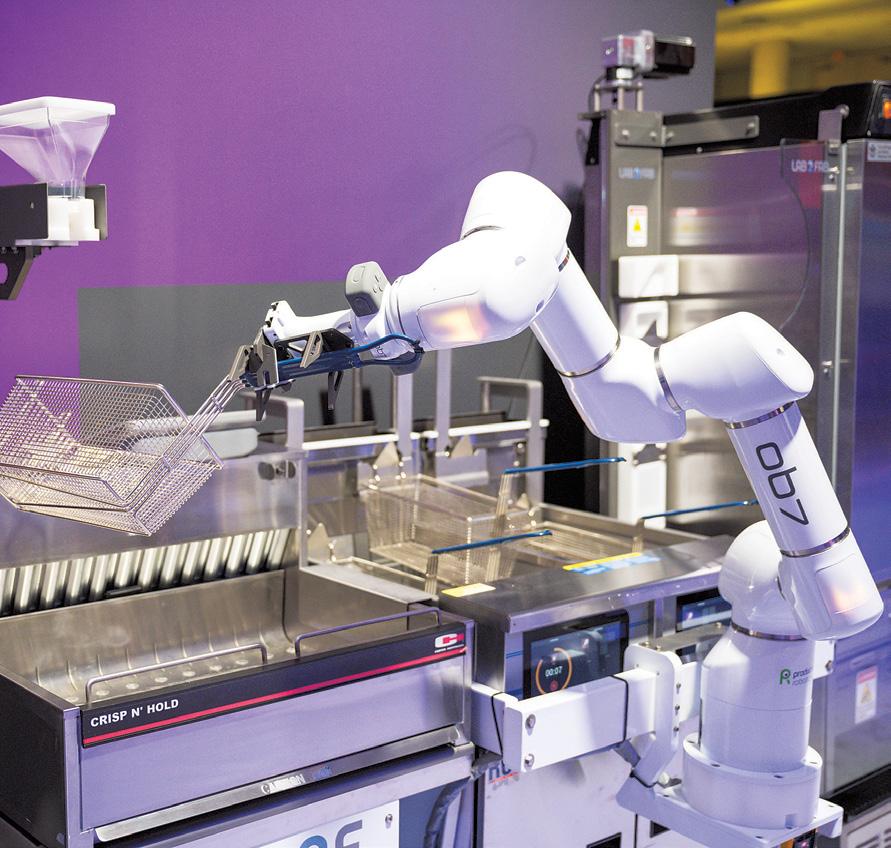
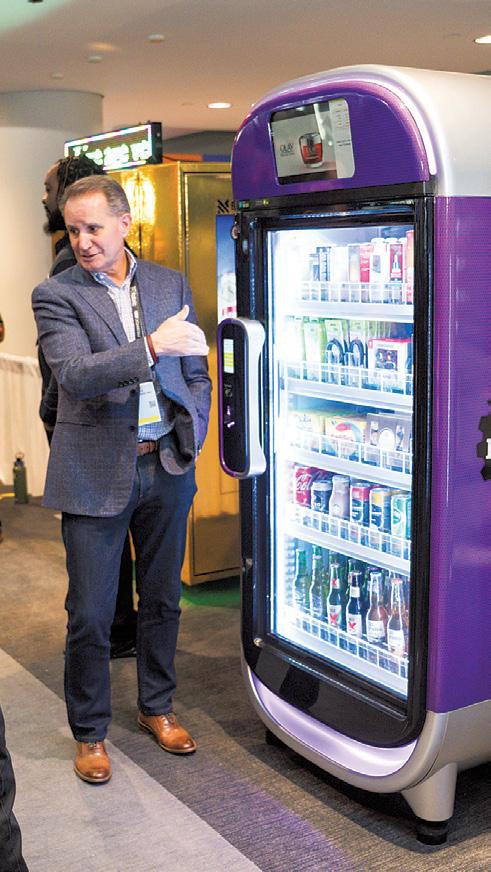
intersection between retail and foodservice industries. The creation of NRF’s Foodservice Innovation Zone is a testament to this evolution, catering specifically to the needs and challenges faced by restaurateurs and foodservice operators. In addition, the show offers the nation’s retailers a comprehensive strategy for creating a foodservice profit center within their store footprint.
“The NRF Show has always been about showcasing the future of retail,” noted Susan Newman, SVP of Event Strategy at the National Retail Federation. “We are seeing the rapid advancement of the strategic integration of foodservice technology. It was

a natural fit to create a space where these industries can converge and share these innovations.”
The NRF Show fills a critical niche by bridging the gap between retail and foodservice, industries that are increasingly interdependent. Retailers are integrating foodservice into their operations, from small cafes in bookstores to fresh food vending in convenience stores. Conversely, foodservice operators are adopting many of the innovative retail solutions on display at the annual Manhattan event, especially in the areas of technology and customer engagement.
continued on page 130
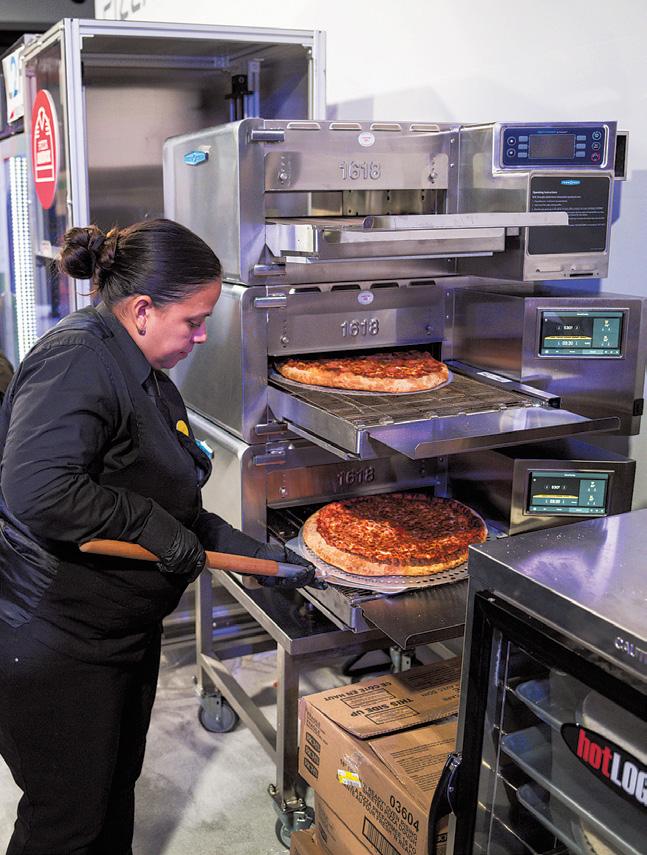
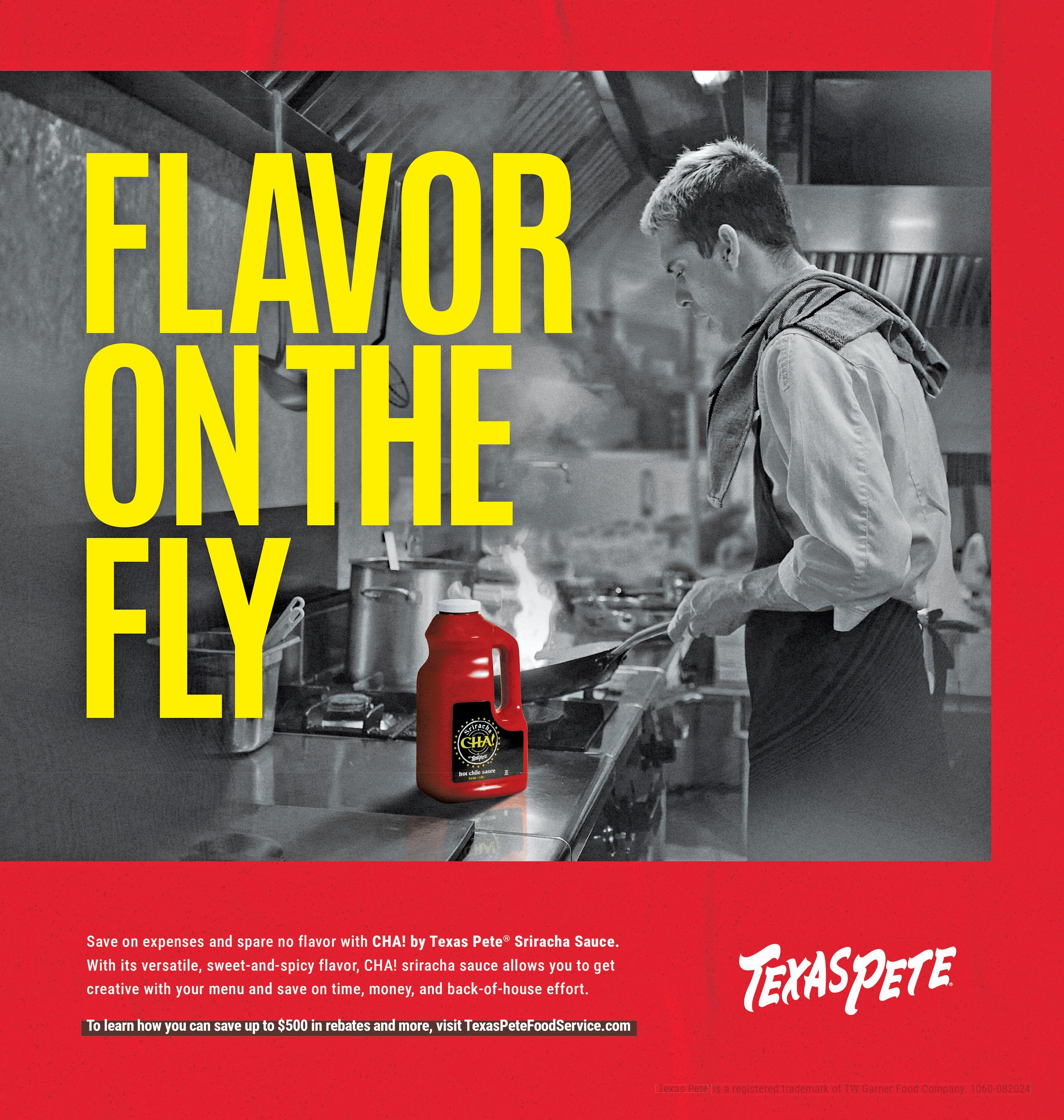

Coming up with new, on-trend menu items is a challenge that operators all over the country are facing in 2024. The solution is to utilize prepared, frozen appetizers that are quick and easy to prep while offering menu versatility and unique, craveable offerings.
According to the National Restaurant Association (NRA), consumers are craving foods that stimulate their taste buds with sophisticated levels of hot, spicy, sweet, and savory. The NRA adds that elevated bar snacks are satisfying these consumers’ cravings.
Appetizers from Revel Eats® rise to the challenge on every level, offering premium bites ideal for almost any daypart with flavors like creamy guacamole, and savory cheese blends. Quick to prep and easy to upscale for higher check averages, these buzzworthy appetizers give operators what they need and consumers what they crave.
They also feature superior hold times for takeout and delivery! According to Datassential, pickup and delivery across foodservice and retail are here to stay, with adoption levels well above where they were prior to the pandemic.
With chips and guacamole on 70% of ethnic menus*, it’s an easy decision for operators to add this popular flavor combo to their offerings. Guacamole Bites from Revel Eats® put chips and guacamole all in one bite, featuring smashed
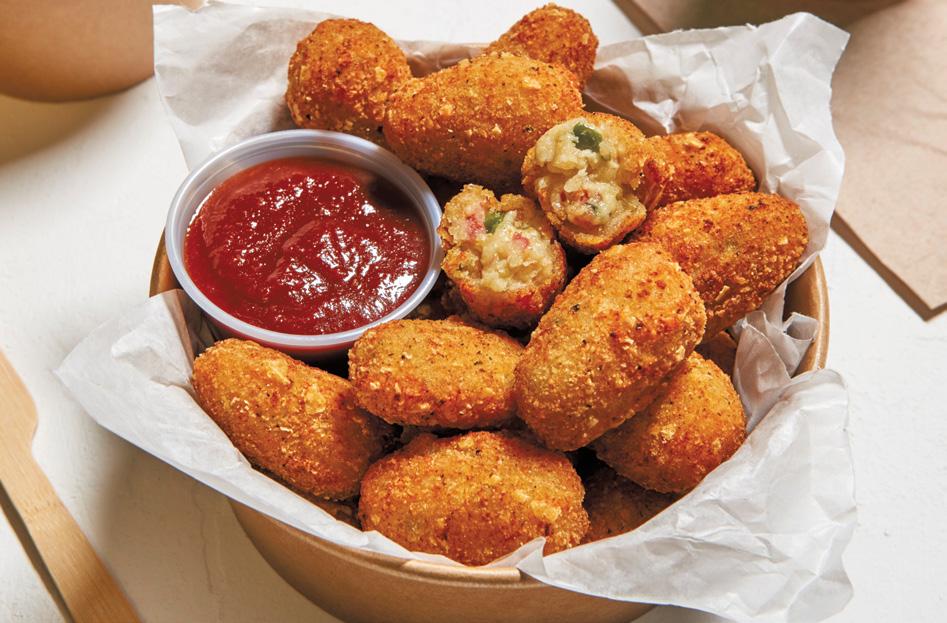
avocados, diced tomatoes, onions, jalapeño peppers, cilantro, and lime juice in a breaded, crispy tortilla chip coating. (*Datassential)
Revel Eats® Horchata Bites offers an elevated dessert experience with a crispy, oat breading and cream cheese with traditional horchata flavors of rice flour, cinnamon and vanilla, this trend-forward treat adds Latin flavor to any dessert menu. Serve on its own or with a sweet caramel, chocolate, or coconut cream dipping sauce for buzzworthy bliss.
Up 146% on menus over the past four years*, loaded tots are an incredibly popular appetizer. Queso Loaded Tots from Revel Eats® take that concept to a new level, featuring a blend of queso fresco and other savory cheeses, jalapeño peppers, and bacon in a crispy tortilla chip coating. Pair with chipotle ranch, jalapeño cheddar sauce, or apple cheddar chutney for a simply delicious treat.
Revel Eats’ new Arancini Bites are inspired by a beloved Sicilian street food consisting of a ball of rice, mozzarella, tomato sauce, and peas, coated in breadcrumbs and fried.
With the growth of arancini on U.S. menus (up 11% since 2020)*, forwardthinking manufacturers like Ajinomoto
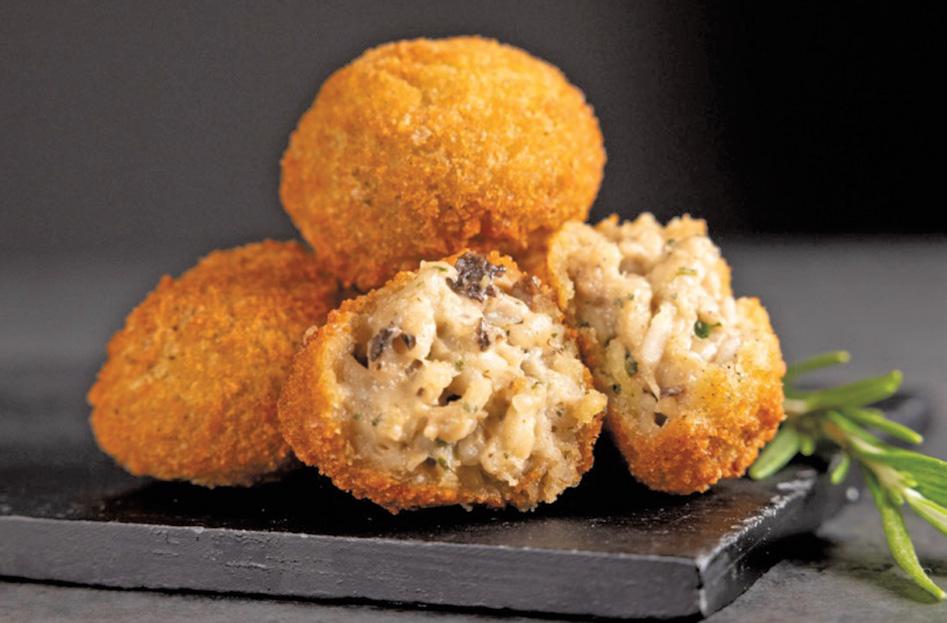
Foods are switching up the flavors in these craveable bites, using ingredients like creamy cheese blends and mushrooms to deliver the popular umami flavor profile.
Most commonly found in fine and casual dining restaurants in the Italian, pizza, and American segments, arancini have grown an impressive 140% over the past 10 years on U.S. menus. And it doesn’t stop there — these savory bites are expected to continue experiencing strong growth in coming years. Arancini ranked in the 98th percentile for future growth potential, and are predicted to outperform 98% of all other foods, beverages and ingredients over the next four years!*
Features of Revel Eats’ chef driven Arancini Bites include:
• Smaller bag size (2#) for less waste and easier storage
• Menu versatility — can be used as an appetizer, side, or topper
• Quick and easy prep, translating into labor savings for any operation
• Superior hold time for takeout/delivery friendly dining options
• Lacto-ovo vegetarian for customers with special dietary needs
• Great for upscale casual operations, sports bars and brew pubs, and funky chic independents
The two new flavors include: Five Cheese Arancini Bites
The ultimate comfort food, these buzzworthy bites feature a rich, craveable
filling that includes a unique blend of five savory cheeses, authentic Italian herbs, and a crispy coating. Five Cheese Arancini Bites are great served as a standalone appetizer with marinara sauce, as a replacement for croutons on a salad, an upscale topper for salads and sandwiches, or dressed up for a gourmet shareable starter.
Mushroom Herb Arancini Bites
Offering an on-trend flavor, these gastropub-inspired Arancini Bites are stuffed with rice, diced portobello mushrooms, a creamy cheese blend, and a unique porcini flavor profile that provides a natural umami bite, all coated in a crispy, authentic Italian herb breading. Like other Revel Eats appetizers, these bites are versatile enough to be served as a simple quick-prep starter, a premium side dish, a topper for soups and salads, and more!
Ideal for a wide variety of operations, our new Arancini Bites offer on-trend flavor, unbeatable versatility, and incredibly easy prep — not to mention the authentic Italian flair customers crave.
Ajinomoto Foods North America is your source for great global food, delivering flavor without the labor in appetizers, handhelds, sides, and entrées. Find online tools, websites, social media, apps, and more at AjinomotoFoodservice.com/ RevelEats.

U.S. food products offer a unique opportunity for restaurants, foodservice outlets, and retailers worldwide to diversify their offerings and attract a broader customer base. With the rich variety of American ingredients and flavors, establishments can create innovative menu options that appeal to global tastes.
From premium meats and dairy to specialty grains and snacks, U.S. food products enable businesses to cater to diverse palates, enhancing their appeal and differentiation in competitive markets. This versatility satisfies customers’ growing demand for new culinary experiences and offers U.S. based producers an exciting opportunity for growth in 2025 and beyond.
As the global marketplace continues to evolve, U.S. food and agricultural companies now have a resource to expand their reach beyond domestic borders. Food Export-Midwest and Food Export-Northeast have responded to this demand by unveiling their 2025 Program Year, which launched last month. The program year promises to offer U.S. companies in Food Export’s 23 member states extensive opportunities to break into and thrive in international markets through a series of strategic events, trade missions, and educational resources.
The 2025 Program Year is designed to build on the successes of previous years while introducing new and expanded initiatives aimed at helping small- and mediumsized enterprises (SMEs) in the U.S. food and agriculture sectors to access global markets. This year’s calendar includes a variety of events, such as trade missions to emerging
“We guide suppliers and provide them with a roadmap to exporting success. Whether a company is just starting out or looking to expand into new markets, our educational programs are designed to meet their needs.” — Teresa Miller
markets, specialized trade shows, and enhanced educational programs.
“We are thrilled to launch the 2025 program year,” said Teresa Miller, Chief Program and Partnership Officer at Food Export-Midwest and Food Export-Northeast. “We anticipate strong funding for the 2025 program year, which Food Export plans to share with the small- and medium-sized food and agricultural companies we represent. We worked hard to create new events in emerging markets in areas such as Southeast Asia, South America, and Af-
rica, and we also have a robust educational calendar planned.”
The 2025 calendar of events is packed with opportunities designed to help U.S. companies tap into international markets. Among the notable initiatives included in this program year is anticipated Expanded Funding for the Branded Program. This program provides cost-sharing support to U.S. companies promoting their branded products overseas. The expanded funding will allow more companies to participate and benefit from international

are
(Food Export–Midwest) and
that
marketing campaigns.
Food Export has planned targeted trade missions to Africa with two Focused Trade Missions, including one for food and feed ingredient products and another for wood products in North Africa. These missions are designed to help U.S. suppliers establish strong relationships with buyers in these rapidly growing markets. With Increased Food Show PLUS!™ offerings in Asia and participation in the Zoomark International trade show, U.S. companies will have greater access to key markets in these regions.
Food Export will host Buyers Missions at Major U.S. Events. These Buyers Missions at prominent industry events, such as SupplySide West and SuperZoo, provide U.S. companies with direct access to international buyers. Product Showcases at Multiple International Locations will showcases U.S. companies’ products to present their line to a global audience, increasing their visibility and potential for international sales. Enhanced Virtual Consultations and Market Builder Programs have been upgraded for 2025 to offer more personalized support to U.S. companies looking to enter new markets or expand their presence in existing ones. While trade shows and missions are essential for market entry, Food Export emphasizes that education is equally important in ensuring long-term success in international markets. “Access to support for trade shows and other funding opportunities is one side of what Food Export offers small- and mediumsized businesses looking to export their products internationally,”
continued on page 123

In the dynamic world of foodservice, staying ahead of evolving culinary trends is paramount for professionals seeking to profitably satisfy the ever-changing tastes of dining consumers. Finding solutions to assist customers in creating new and exciting menu options requires several key ingredients. Personalized sales guidance and support has become essential as restaurateurs and foodservice professionals seek insights into emerging trends and consumer preferences. Tailored marketing strategies enable chefs, restaurateurs and the distribu tors that serve them to effectively communicate their unique offerings, ensuring they resonate with target audiences and stand out in a competitive dining landscape.
A skilled foodservice broker can be a game-changer for chefs, restau rants, and food distributors, driving both profitability and culinary excellence. These professionals act as intermediaries, connecting food producers with the culinary industry to streamline supply chains and secure the best ingredients.
dedicated food broker to be a vital partner to both industry and operators, Advantage Marketing has anticipated and exceeded manufacturer and customers’ needs for over half a century. The Long Island, NY, based brokerage’s team of highly experienced sales and support professionals understand the needs of the industry from the front to the back of the house.
Across a variety of service channels from restaurants, commissaries, health

Their extensive networks and industry knowledge ensure chefs get the best products at competitive prices, which is crucial for maintaining a balance between cost and quality. This access allows chefs to craft innovative and delectable dishes, attracting discerning customers and enhancing restaurant and foodservice operators’ reputations.
With a vision that the foodservice industry in Metro New York needed a
care, K-12 to broadline foodservice operations, Advantage Marketing leads with the simple yet powerful strategy to “Support the Food Service Operator,” always prioritizing their principals’ preset goals. To continue accomplishing this mission, the company has celebrated their 50th year anniversary with a move to new corporate headquarters in Edgewood, NY.
In honor of their anniversary, Total Food Service spoke with Advantage Marketing’s partnership team: Mitch Levine, Brigitte Rounds, John Williams, and Ron Fast.
They discussed their company’s new Long Island home, which will feature a fully equipped culinary center and conference facility to host both end-user
and distribution customers. “We are so proud of what we have built,” Levine noted. “As we see our past and future trajectory, the right home became an essential part of our plan.”
The Advantage Marketing management team has committed to remaining an independent foodservice brokerage firm, bucking a trend of the last decade to create national brokerage companies. “Remaining independent in Metro New York offers us the advantage of directly supporting our manufacturing partners to provide products tailored to the specific needs and preferences of our customers, fostering stronger relationships and loyalty,” added Rounds. “It also
continued on page 70


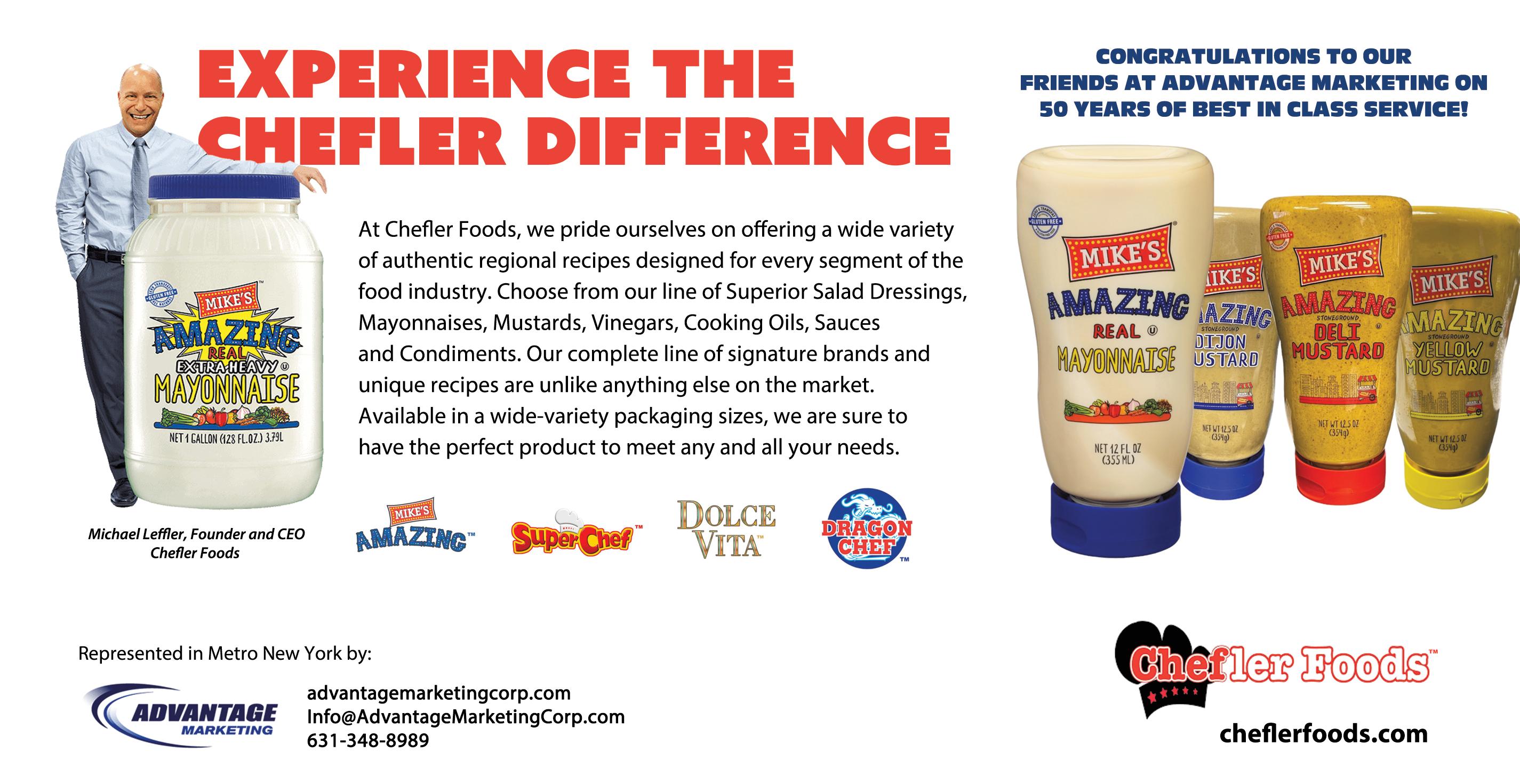
“Distributors and Operators are depending on partners who can access opportunity and utilize technology to make real time decisions.” — Mitch Levine
reduces the overhead and complexity associated with managing a national brand, allowing for a focus on quality and customer satisfaction,” Levine continued.
“Over the years, we’ve been approached by many to expand to other territories,” Levine shared. “We are proudly based in Metro New York, one of the largest foodservice markets in the county, and didn’t feel the need to expand regionally or nationalize our firm. We stayed the course, striving to be the very best provider of foodservice broker representation in the 100-mile radius of New York City, with offices and test kitchens in both New York and New Jersey.”
“We have always emphasized the importance of our relationships,” Williams
offered. “As foodservice brokers, we’re not just connecting with distributors; we also build relationships with the key operators driving the foodservice business. We want to deliver the best balance possible between our distributors and operator partners. At the center of it all is our mission to provide the very best products the industry offers. Combined with enduring relationships and industry knowledge, we have an unbeatable team.”
A key to Advantage Marketing’s success has been their ability to respond to the changing needs of its customer base. Levine and his team see changes in what distributors are looking for from their broker partners. “They’re depend-
continued on page 74




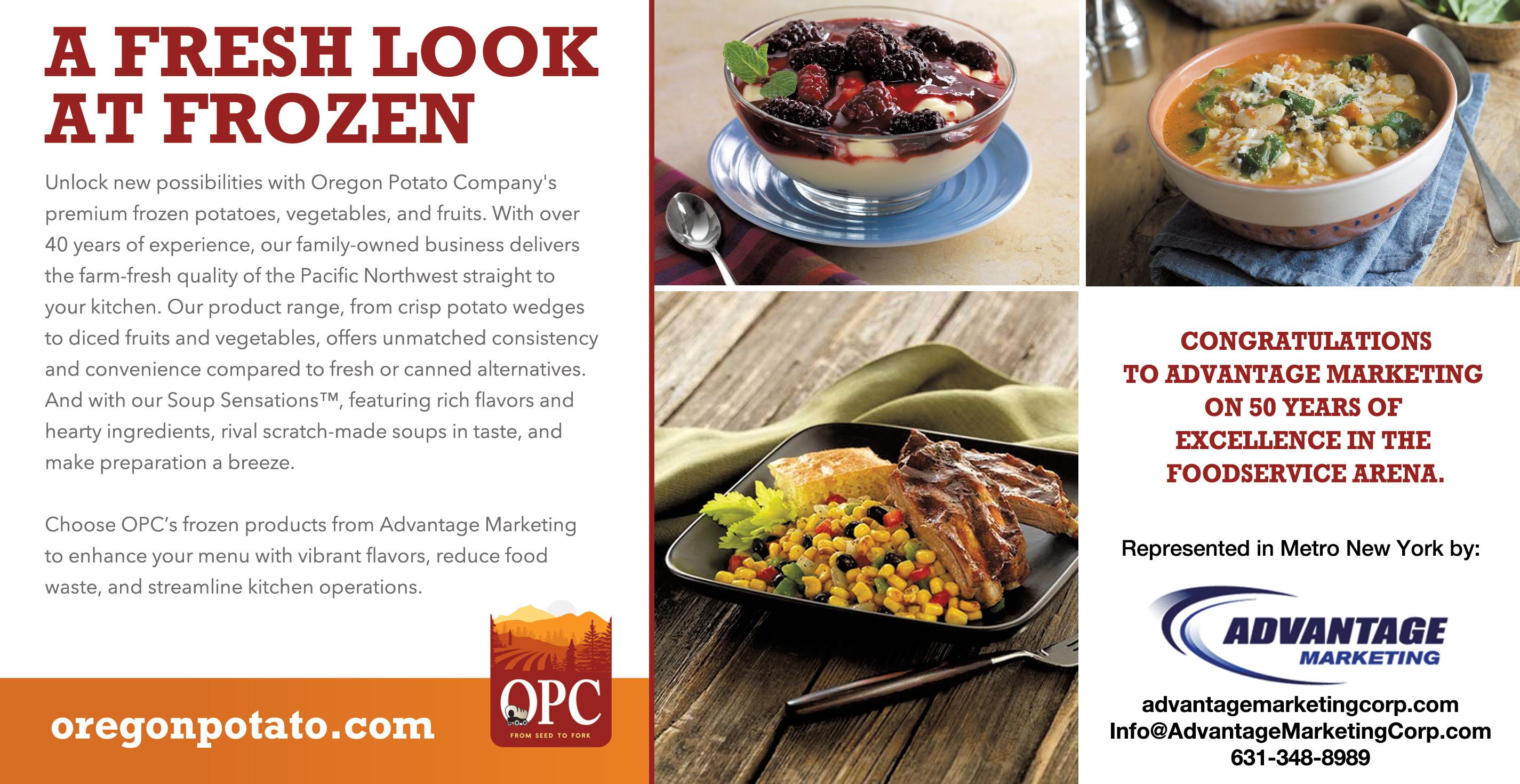

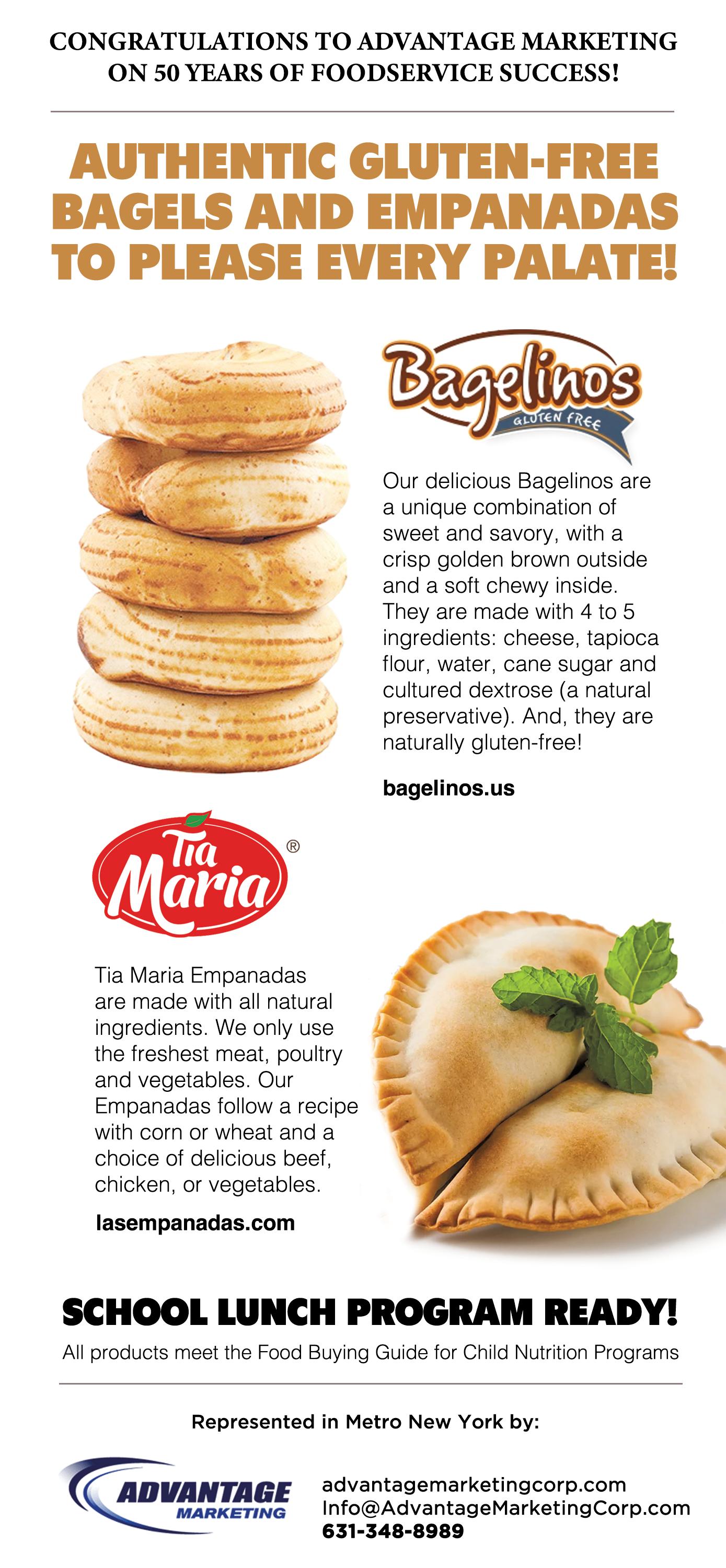


ing on partners who can access opportunity and utilize technology to make real time decisions,” he said, “and to provide in depth product training and education to their sales and customer service personnel. Over time, we’ve earned the respect from both our principals and customers for which we are most proud.”
This trust equally defines Advantage Marketing’s relationships with operators, as described by Fast, “We need to be a thesaurus for our food service end users in today’s climate. When our operators call us looking for new ideas, solutions, and menu ideations, we know we have done our job for our manufacturer and distributor partners”.
Foodservice dynamics have changed over the years, reflecting larger-scale shifts in the economy and diners’ buying and eating habits. Yet through it all, “one thing people don’t want to sacrifice,” Levine insisted, “is good food and a good dining experience”. “We assist our operators by creatively merchandising products designed to provide value
to their customers thereby encouraging a return to positive dining experiences, whether it’s take out or dining in.”
Advantage Marketing’s expertise runs deep through many key foodservice segments. In addition to broad line accounts, Advantage Marketing has had great success in selling the alternative foodservice market. “We knew this type of volume existed in the Metro New York Market, we just needed the right partner to help us capture it, is what many of our principles have told us over and over”, Fast says.
“For our K-12 customers, we provide solutions and products for what school districts need, and we respond instantaneously and honestly,” Rounds said. “We need to be familiar with the changing USDA regulations and how our products apply. Today, schools are looking more for scratch-ready foods, international menu options and ideas for better utilization of their USDA commodities. Directors also need support
continued on page 76




with administrative responsibilities, and we provide the required supporting product documentation to assist,” Rounds continued. “Brigitte is known across the country as the K-12 expert and that’s not me saying that; that’s the industry talking,” Levine said, “Her relationships are magical.”
Advantage Marketing takes great pride in creating their professional sales and marketing team. “Great leaders aren’t the best at everything, but they find people who are the best at different things and get them on the same team — and that’s what we aim to do at Advantage,” Fast remarked. The Advantage lineup features four chefs. In 2025, these chefs will be supported by a new state of the art culinary center designed and built in coordination with Westchester, NY, based equipment representatives PBAC and Associates. “We also have recently added to our team extraordinarily talented young professionals. Their early career enthusiasm rubs off on us, as we share our experiences and exper-
tise,” Rounds said.
“We understand and see the changes that lie ahead in our industry utilizing AI and technology,” Levine concluded. “Our ability to continue to build a superior sales team that exceeds industry expectations is truly what sets Advantage Marketing apart. We see a future in which the human connection of the Advantage team will continue as we focus on direct and personal engagement with our customers.”
“Our camaraderie and collaboration are very special. If we continue to do what we do best, and collectively bring our extensive foodservice sales experience in Metro New York to our customers, the next 50 years will bring continued appreciation and success for what we strive to accomplish every day.”
For more information about Advantage Marketing’s history and services, visit their website: https://www. advantagemarketingcorp.com
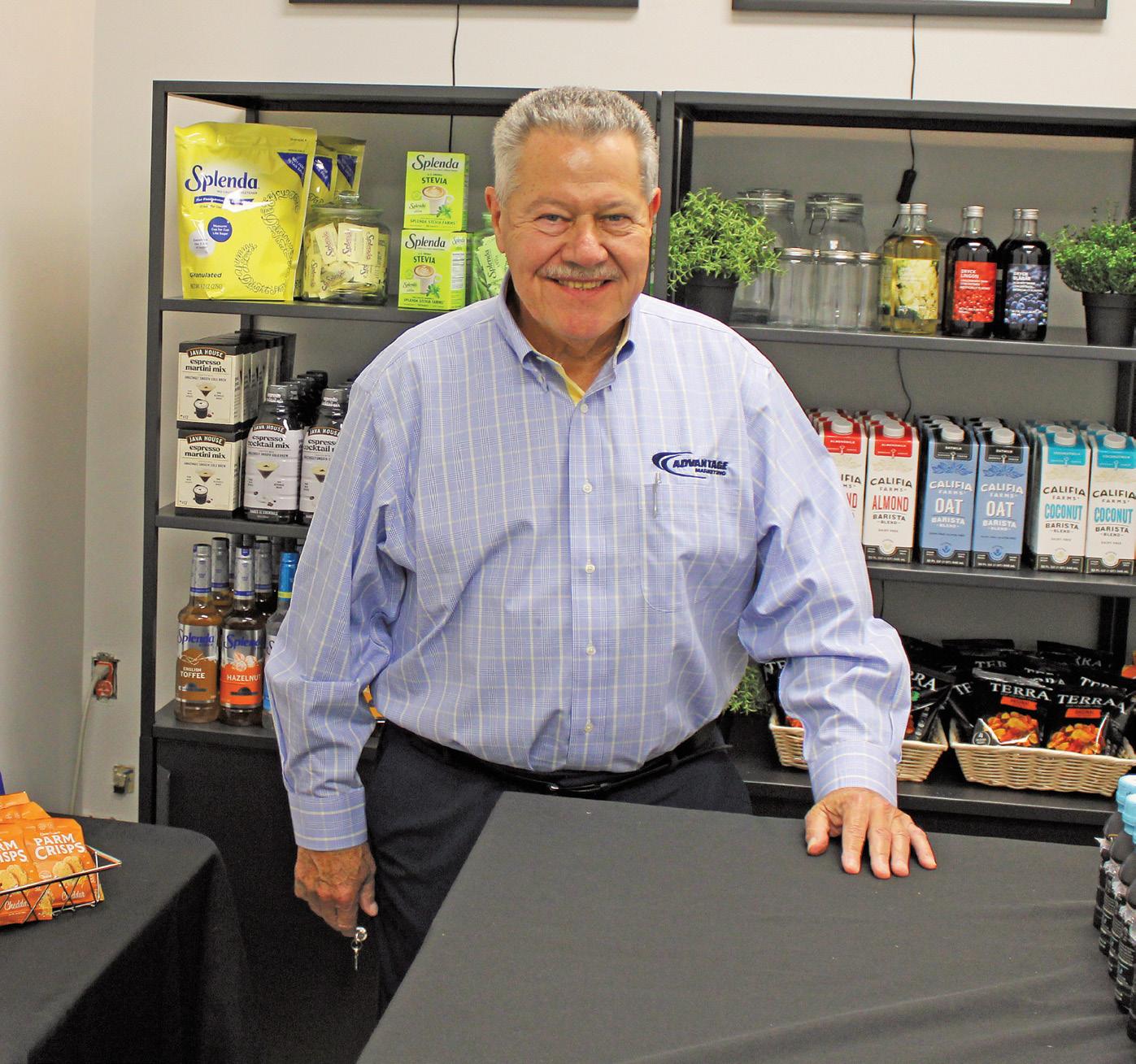
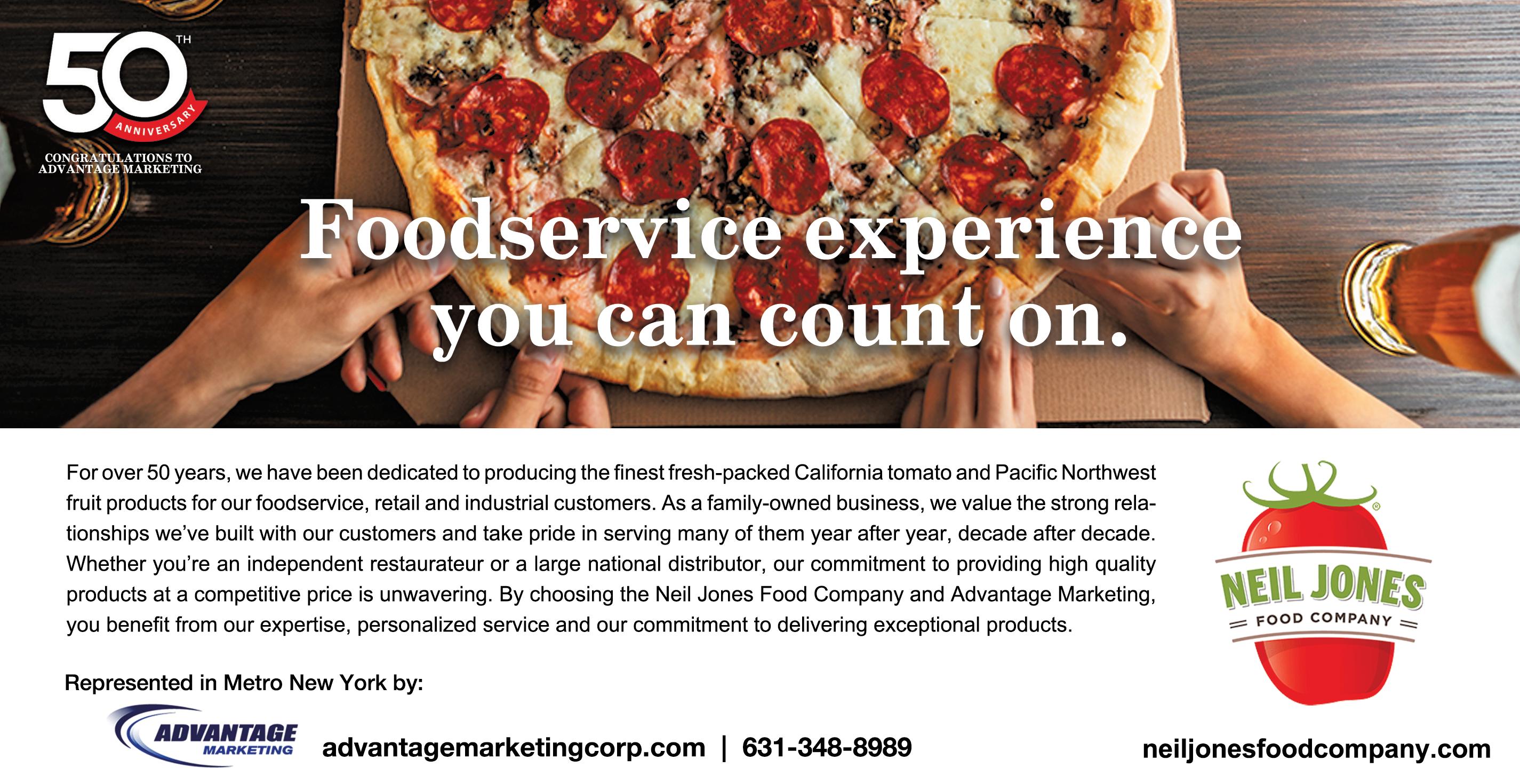

By Sophia Maggio
Based on this year’s food forecast, sauces are hot – and not just hot sauces. Domestically and internationally, diners crave unique sauces, dips, glazes, and other final touches for their favorite dishes.
As options and menus expand in response, dining patrons’ choices now range from hot sauces and chip dips to one of the fastest-growing flourishes: the balsamic vinegar glaze. Total Food Service spoke with Kim Sayid, Country Manager of Ponti USA and an expert of Italian cuisine, to learn how restaurateurs can market and utilize this versatile topping.
Most U.S. diners have encountered “glaze” in some form: perhaps a glazed
old-fashioned donut, maple-glazed salmon or vegetables during the summer, or a slice of glazed lemon loaf from their local coffee shop.
But in the diverse selection of glazes, balsamic glaze is a newer product in American fare. Ponti launched its first glaze with Balsamic Vinegar of Modena more than 20 years ago in Italy and made its way to the U.S. shortly after that. The introduction marked a significant moment for American cuisine, and for Ponti: a ninth-generation, family-owned company headquartered in Ghemme, Piedmont, Italy, where the family has produced vinegars for 240 consecutive years.
Even after decades of launching the first balsamic glaze, Ponti still boasts

“Ponti Balsamic Glaze delivers the perfect balance of sweet and sour flavor, with no added sugar and a very clean aftertaste.” — Kim Sayid
60% of the product’s market share in Italy, according to Sayid. Their balsamic vinegar is regulated by the Consortium for the Protection of Balsamic Vinegar of Modena (Consorzio Tutela Aceto Balsamico di Modena), which ensures the quality of Ponti’s Glaze with Balsamic Vinegar of Modena and other balsamicbased products.
“As the largest producer of wine vinegars in Italy, Ponti purchases topquality wines from Italy and around the world, and transforms them into vinegar in-house, whereas many competitors source already-made vinegars and just flavor and/or bottle them,” Sayid noted.
“This is unusual among vinegar producers,” she continued. “We’ve handed down our expertise for nine generations, enabling us to become the #1 brand in every single category of vinegar in Italy –whether it’s balsamic vinegar of Modena, wine vinegars, apple cider vinegars, condiments, or glazes.”
In 2022, Ponti further distinguished itself by receiving B-corporation certification, verifying the company’s commitment to social and environmental performance and transparency. “Respect for nature, land, and people is inherent in the company,” Sayid continued.
Sayid highlighted these values and the long heritage of Ponti, as well as the potential of their balsamic glaze: a product that has surged in popularity in restaurants and, on a variety of food ser-
vice menus. “Whether in a restaurant or pizzeria, balsamic glaze adds a beautiful brightness and acidity to a dish,” Sayid explained. “Many chefs are embracing balsamic glaze to jazz up pasta or meat, add beautiful decoration, or even an unexpected flare with our white or spicy glaze varieties.
“Regardless of the variety, a genuine balsamic glaze is beautiful, vibrant, and truly exalts food,” Sayid summarized. Our glaze achieves a perfect balance of sweet and sour flavor, with no added sugar and a very clean aftertaste.”
This taste inspires accomplished restaurateurs and budding chefs alike, transcending cuisines and levels of dining. From fast-casual to fancier fare, people are gradually becoming more confident in the possibilities of balsamic glaze –particularly during and after COVID, Sayid reflected, “when people were especially bored and trying new recipes.”
“In Italy, our balsamic vinegar of Modena is very popular in both retail and foodservice, but in the U.S., we’re seeing more growth in restaurants,” she added. When you look at general balsamic vinegar of Modena imports, almost 80% are sold to restaurants. Glaze on the other hand is successful in both retail and restaurants, and that number is growing – so while consumers continue developing the confidence to use
continued on page 131

Cooking is an art form that allows you to express creativity, explore flavors, and transform simple ingredients into something extraordinary. At the heart of this art are the various cooking techniques that can dramatically alter the taste, texture, and overall experience of a dish. Whether you’re a seasoned home cook or a kitchen novice, mastering these techniques can elevate your culinary skills and bring a new level of sophistication to your meals.


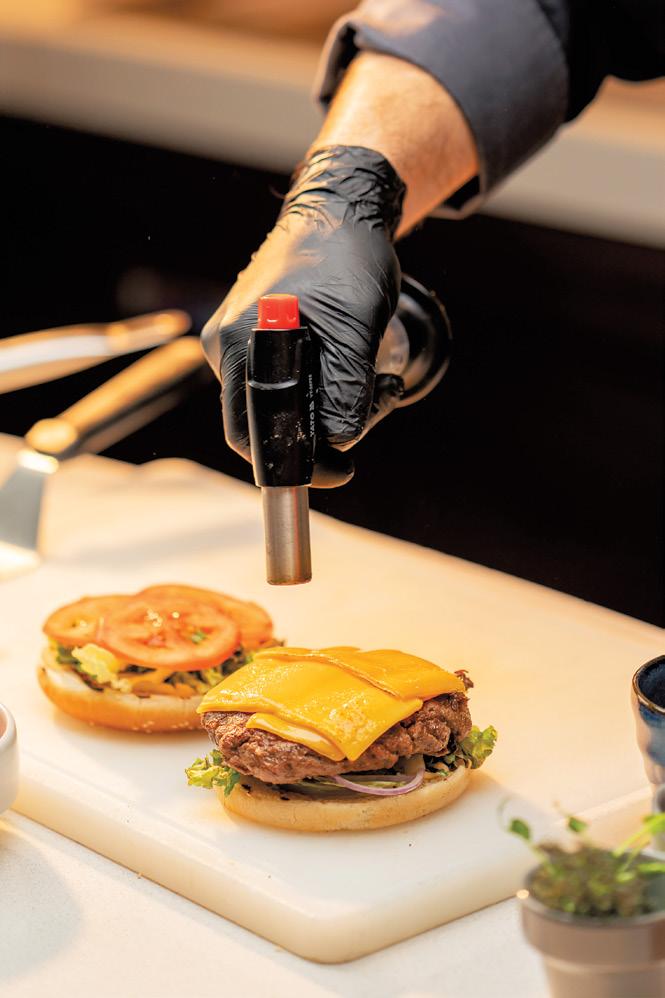
Sous-vide, which means “under vacuum” in French, is a cooking technique that involves sealing food in a vacuumsealed bag and cooking it in a water bath at a precisely controlled temperature. This method ensures that the food is cooked evenly throughout, retaining its moisture and flavor. The beauty of sousvide lies in its precision. For example, cooking a steak at 135°F (57°C) will consistently produce a perfectly mediumrare result, with a tender, juicy texture that’s difficult to achieve with traditional cooking methods. The low, consistent temperature also allows for delicate ingredients like fish and vegetables to be cooked without the risk of overcooking. Cuisine Solutions specializes in the sous-vide method of cooking and meal preparation and was America’s first major manufacturer of sous-vide products.
Fermentation is an ancient technique that transforms food through the action of beneficial bacteria, yeast, or other microorganisms. This process not only preserves food but also enhances its flavor, creating complex, tangy, and umami-rich tastes that are impossible to achieve through other methods. Common examples of fermented foods include yogurt, kimchi, sauerkraut, and sourdough bread. The fermentation process breaks down the sugars in these foods, producing lactic acid, alcohol, and other compounds that contribute to their distinctive flavors. For the home cook, experimenting with fermentation can open up a world of possibilities, from homemade pickles to kombucha and beyond. You can venture into the art of fermentation on your own or pick up fermented products from brands such as Mother in Law’s, which sells small batch kimchi and Gochujang, a fermented chile paste and sauce that captures authentic flavors of the Korean pantry.
Slow cooking is all about giving ingredients the time they need to develop deep, rich flavors. Whether you’re using a slow cooker, Dutch oven, or simply simmering on the stovetop, this technique involves cooking food at a low temperature over an extended period. Slow cooking is ideal for tougher cuts of meat, like beef brisket or pork shoulder, which become incredibly tender and flavorful when cooked slowly. It’s also perfect for stews, soups, and braises, where the long cooking time allows the flavors to meld together beautifully. The result is comfort food at its finest, with complex, hearty flavors that warm the soul.
Grilling is a cooking technique that uses direct heat from an open flame or hot coals to cook food quickly, imparting a distinct charred, smoky flavor. It’s the quintessential summer cooking method, perfect for everything from burgers and hot dogs to vegetables and
seafood. The key to successful grilling lies in mastering the heat. High heat is ideal for quick-cooking items like steaks and burgers, creating a flavorful crust while keeping the inside juicy. Lower, indirect heat is better for larger cuts of meat, like ribs or whole chickens, allowing them to cook slowly and evenly without burning.
Grilling also offers an opportunity to experiment with marinades, rubs, and wood chips, adding layers of flavor to your dishes. Whether you’re grilling over gas or charcoal, the technique is all about embracing the outdoors and enjoying the simple pleasures of cooking over an open flame.
Blanching is a quick cooking technique that involves briefly boiling vegetables (or other foods) and then plunging them into ice water to stop the cooking process. This method helps to set the color, preserve the texture, and remove any raw edge from the food.
Blanching is especially useful for green vegetables like broccoli, beans, and spinach, which can lose their vibrant color and crispness if overcooked. By blanching, you lock in the color and texture, making the vegetables not only more visually appealing but also more enjoyable to eat. It’s also a great technique for preparing vegetables ahead of time, as blanched vegetables can be stored in the refrigerator and quickly reheated or sautéed when needed.




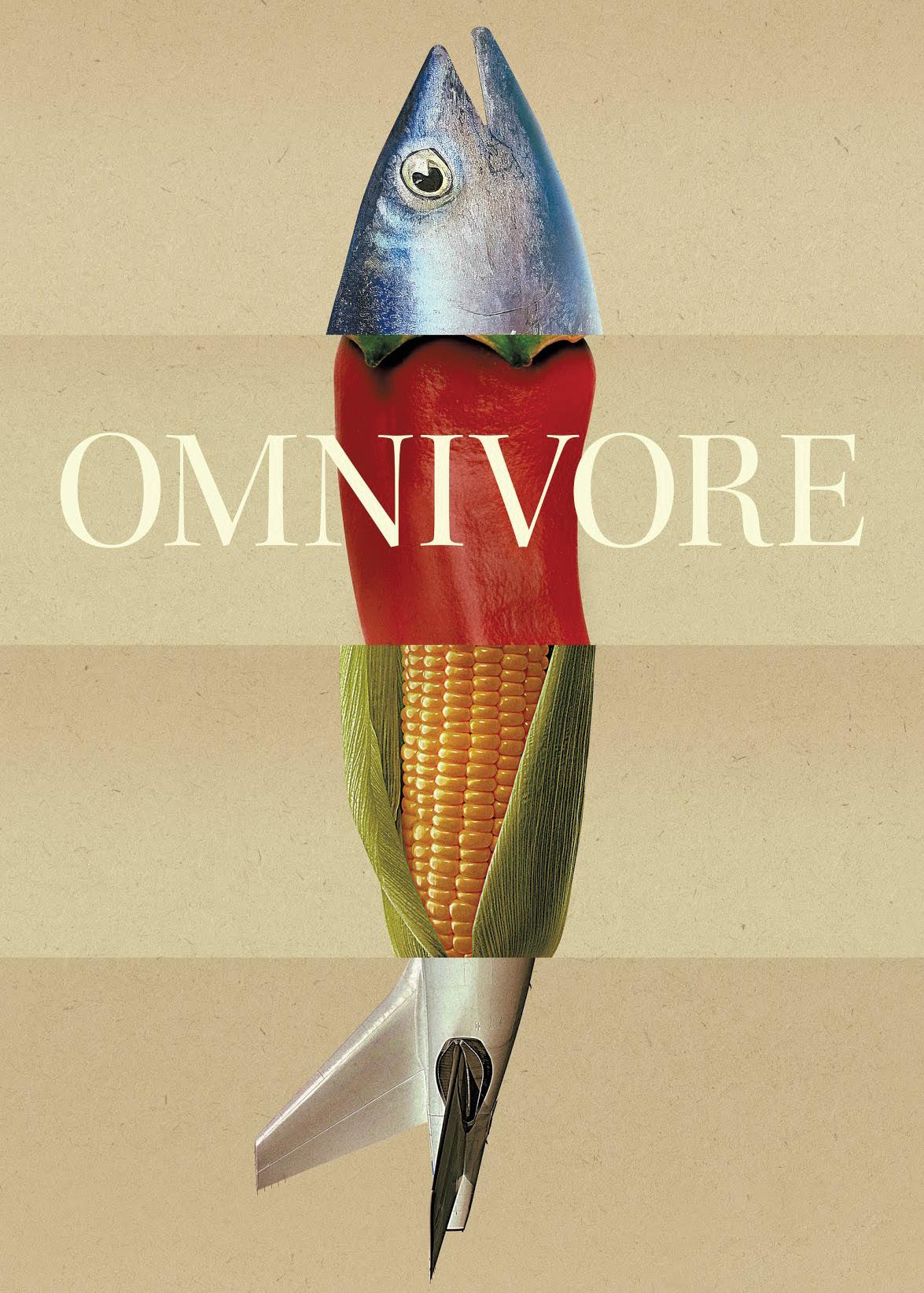
The eight-part series explores the beauty and complexity of the human experience through the celebrated ingredients that connect us all.
Created and narrated by René Redzepi, the esteemed chef and co-owner of world-renowned restaurant Noma, Omnivore takes viewers on an immersive journey into the world of food, exploring the profound beauty and intricate complexities of the human experience through the lens of the key ingredients that connect us all.
Each episode of Omnivore celebrates the cultivation, transformation and consumption of eight of the world’s most essential ingredients, including banan -

as, chilies, coffee, corn, pork, rice, salt and tuna, revealing how they serve as the cornerstones of global cultural heritage. Redzepi and Emmy Award-winning executive producer Matt Goulding (“Anthony Bourdain: Explore Parts Unknown”) guide audiences on a globe-spanning odyssey, unveiling intricate stories behind the ingredients that have shaped societies, cultures, beliefs and the course of human history.
The series takes viewers to destinations around the world, including Denmark, Serbia, Thailand, Spain, Japan, Djibouti, Peru, South Korea, France, Colombia, India, Bali, Rwanda and Mexico, as well as locations throughout the United States. In each episode, Redzepi and various series contributors offer

an intimate exploration of culinary traditions, showcasing local efforts to honor, conserve and protect Earth’s offerings.
Matt Sartwell, Managing Partner, Kitchen Arts & Letters Bookstore in New York City shares his book reviews...
Mes Flans Pâtissiers: 50 Classic & Creative Flan Recipes by Ju Chamalo
Flans are a new trend sweeping Paris and other European cities: a pastry crust base topped with a cream filling and baked, very much like the British custard tart.
Author Ju Chamalo, a home baking enthusiast who has collaborated here with a Paris bakery and several pastry chefs, presents 50 recipes for sweet and savory flans. Beyond iconic classics such as vanilla, chocolate, and coffee, he offers his own creations. Some involve flavoring the filling itself, while others depend on imaginative toppings.
For example:
• Hazelnut Almond Praline
• Ardechois (chestnut and vanilla)
• Vanilla Strawberry Pistachio
• Passion Fruit Raspberry
• Caramel and Roasted Coffee
Will flans be the next macarons? Measurements in metric and by weight.
Sample photographs show French-language text, but our copies are in English.
A second volume is available here: https://www.kitchenartsandletters.com/ products/mes-flans-patissiers-2
continued on page 84

(Una Nueva Manera de Cerar Helados)
by Jesus Escalera

Building on a career which includes work in the pastry kitchens of elBulli and The Fat Duck, Jesús Escalera, now the proprietor of Postrería in Guadalajara, Mexico, delves into a rigorous new approach to making and flavoring ice cream with an emphasis on aroma.
Escalera begins by offering an explicit paradigm for crafting formulas for quantity production, which draws on ingredient tables which detail water percentages, fat values, sweetening power, and other crucial values for common ingredients. This is followed by an icecream specific discussion of the theory of flavor, taking into account factors such as temperature and texture.
Most unusual is Escalera’s classification of aro -
mas (e.g., green, floral, warm) and their impact on flavors. In more than 300 pages of recipes, he offers combinations which range from familiar (salted caramel) to intriguing: cucumber and peppermint, Camembert and Sherry, roasted wood.
Many of these are employed in plated desserts which incorporate other elements to striking effect. One called The Great Wave Off Kanagawa, inspired by the painting of Hokusai, uses green apple ice drops, matcha yogurt ice drops, an effervescent kombucha foam, candied kumquats, sake jelly, kumquat cremeaux, matcha tea cotton cake, and a white chocolate canvas. Ambitious and inspiring.
Editor’s Note About Podcasts- Listen and subscribe wherever you get your podcasts, including on Apple Podcasts, iHeart, Spotify, Stitcher, Google Podcasts, Audible & more.
In this show from the Sustainable Food Trust, the organization’s Chief Executive, Patrick Holden, interviews policymakers, business leaders, food producers, advocates, and other stakeholders. The Sustainable Food Trust Podcast explores some of the most pressing issues shaping food and agriculture systems today, touching on everything from food education and the organic movement to healing herbs and soil health.



In a city like New York, where the restaurant and nightlife industries are the lifeblood of our economy and culture, any improvement to the bureaucratic processes that support these businesses is a cause for celebration. That’s why our Alliance is thrilled with State Liquor Authority (SLA) Chair Lily Fan’s recent announcement that most SLA-licensed businesses can now access their Renewal Advisory Notices online. This seemingly simple change addresses a long-standing pain point for countless business owners and is a significant step toward modernizing how we do business in this city.
For years, the process of renewing a liquor license has been plagued by inefficiencies. A key part of this process involves the SLA sending businesses a Renewal Advisory Notice, which includes the specific fee required to renew the license. Tradi -
Now, rather than waiting for a potentially lost piece of mail, businesses can access their Renewal Advisory Notices directly from the SLA’s website.
tionally, these notices have been sent through standard mail, often resulting in notices getting lost, misplaced, or returned undeliverable. These issues have caused a cascade of problems for business owners, ranging from late renewals and incorrect payments to frantic last-minute requests for reissued notices.
By moving this process online, the SLA is effectively cutting through the red tape that has long frustrated New York City’s hospitality businesses. Now, rather than waiting for a potentially lost piece of mail, businesses can access their Renewal Advisory

Notices directly from the SLA’s website. This not only streamlines the renewal process but also gives business owners the ability to plan and act well in advance of their license expiration dates, eliminating unnecessary stress and potential financial penalties.
This common-sense fix is more than just a convenience; it’s a lifeline for an industry that operates on tight margins and cannot afford the delays and uncertainties of an outdated system. We’ve already received positive feedback from business owners who have used the new online feature, praising its ease of use and the peace of mind it brings.
The Alliance’s support for this initiative is also rooted in our longstanding collaboration with key partners who work tirelessly to advocate for practical solutions that benefit our industry. In particular, I want to highlight the exceptional work being done by Robert and Max Bookman, partners at Pesetsky & Bookman, who serve as the Alliance’s general and legislative counsel. Their expertise and dedication have been instrumental in pushing for improvements like these that directly impact our members. Their advocacy on behalf of New York City’s hospitality industry is invaluable, and their ongoing efforts continue to drive meaningful change at both the city
and state levels.
Looking forward, we are optimistic about the direction in which Chair Fan is steering the SLA. Her leadership, marked by a clear understanding of the challenges faced by small businesses in New York, is exactly what our industry needs. We’re hopeful that this recent change is just the beginning of a broader effort to modernize and improve the SLA’s processes, reducing backlogs and making it easier for businesses to thrive.
As always, the New York City Hospitality Alliance remains committed to supporting our members and ensuring they have access to the tools and information they need to succeed. If you have any additional questions about this new online renewal process or other related matters, we encourage you to visit our website or reach out to us directly. Together, we can continue to build a stronger, more resilient hospitality industry in New York City.

Andrew Rigie is the Executive Director of the New York City Hospitality Alliance, a trade association formed in 2012 to foster the growth and vitality of the industry that has made New York City the Hospitality Capital of the World. Learn more at https:// www.thenycalliance.org/

Chocolate, strawberry and vanilla are, arguably, the most quintessential ice cream flavors. You’ll find them in just about every ice cream shop, in different variations, from vanilla-based cookies and cream to chocolate-based rocky road. The present market is rich with the classics, but many customers these days are looking for bold, exciting flavors you can’t get just anywhere. Enter Michael Tsang and Jason Liu, the masterminds behind the Asian-inspired, New York City-based soft serve ice cream company Soft Swerve.
Since 2016, Tsang and Liu have been crafting high-quality soft serve ice cream from locally sourced ingredients and imported Asian flavors, from black sesame and matcha from Japan, to ube from the Philippines. These flavors, and their unique topping offerings like toasted coconut and condensed milk, are what
“We’ve learned how to manage the temperature of our ice cream in 100-degree weather, what price points people like, what flavors to bring to the markets, and how to compete with neighboring businesses.” — Michael Tsang
keep customers coming back. With five NYC locations, from Chinatown to Flushing, Soft Swerve is continuing to question the status quo of ice cream across the city, one cone at a time. Since its beginning, Soft Swerve has aimed to fill the gap that previously existed in NYC before Tsang and Liu began the business — in fact, this gap is what inspired the two to start it. “I noticed that there was a lack of the kind of ice cream I really wanted,” said Tsang. He and Liu were already looking to take a break from their careers — Tsang worked in

nonprofits and Liu worked in finance — and they had been brainstorming ideas for a business. The lack of Asianinspired ice cream in NYC particularly inspired the two co-founders. “I really wanted to open an ice cream store, so I bought a Cuisinart to work with at home to develop some recipes,” Tsang said. Despite not having a background in food service, they’re playing as they go — and it’s working.
Friends since middle school, Tsang and Liu were determined to make Chinatown the first Soft Swerve location

from the business’s earliest stages of development. “Chinatown was where we met and where everything was really familiar to us, so the most important thing was that it was where we opened the business,” Tsang continued. Plus, it was lacking in the kind of ice cream they were looking for. From there, the rest is history: they opened up their first location on Allen Street in Chinatown in December of 2016, and the business has been blossoming since then. Naturally, the pandemic put a brief pause on things, as it did for most food service operations. Since both Tsang and Liu were new to food service, it was a real learning curve, and it greatly changed their perspective on running a business. “Covid-19 was very hard for us,” Liu said. “It was like restarting the business all over. I remember sitting in front of the store, because there was no more indoor dining, with a table and a POS system and just sitting for hours on end waiting for business.” They had no choice but to pivot, and for Soft Swerve, that began with takeout and, ironically, menu expansion.
“We were very fortunate that ice cream was packable and that we had all the delivery platforms there to deliver for us,” said Liu. The ability to package their soft serve was part of what kept them afloat. “We were fortunate that the community still supported us, and it really got us through that rough patch,” he continued. However, they quickly discovered the main challenge with soft serve: it only lasts around a week — two weeks maximum — which meant that despite the initial success, it wasn’t sustainable due to how fast it goes bad. “We decided to start doing scooped and hard ice cream. This let us branch out from
continued on page 124

HEINZ, The LEE Initiative, and Southern Restaurants for Racial Justice will offer grants to Black food entrepreneurs nationwide to help foster
For over 150 years, HEINZ has recognized the critical role Black-owned food businesses play in shaping the nation’s culinary culture. Today, the brand reaffirms its commitment to the Black food community with an additional $1 million donation in Black Kitchen Initiative Grants, bringing its total contribution to $4 million over the past four years. A continuation of the multiyear partnership between HEINZ, The Lee Initiative, and Southern Restaurants for Racial Justice (SRRJ), the grants aim to preserve and uplift the legacy of Blackowned food businesses through financial assistance. Grant applications are open now through August 31st.
In the U.S., Black-owned businesses drive more than $200 billion in annual revenue and support more than three and a half million jobs. However, they still face serious financial hurdles and inequity in access to capital.1 A recent report revealed that 86 percent of Black small business owners were concerned about access to capital, and despite being more likely to apply for small business loans, they are significantly less likely to receive the full amount requested.2 With this additional contribution of $1 million in grants, the HEINZ Black Kitchen Initiative aims to ease the financial burden for Black small-business owners and promote long-term business health.
“The Black Kitchen Initiative grants are a tentpole moment for us each
year, not only because we recognize the importance of Black-owned food businesses in the American culinary space, but also because entrepreneurship has been one of the core values in our brand DNA since day one” says Lizzy Goodman, Brand Communications Manager,
HEINZ U.S. “In offering the fourth year of the HEINZ Black Kitchen Initiative grants, we’re proud to continue addressing the disparities in financial access for Black-owned businesses, promote long term business health and success for grantees, and celebrate H.J. Heinz’s

legacy of entrepreneurship.”
HEINZ will distribute grants of $20,000 to selected businesses through The LEE Initiative and Southern Restaurants for Racial Justice. Through August 31st interested restaurant owners can apply for a Black Kitchen Initiative grant at https://www.leeinitiative.org/. Applications will be reviewed by SRRJ founders and a selection committee and will be evaluated on factors including the restaurant’s community involvement and plans for the grant money.
“For a fourth year, we are grateful to Heinz to be able to support heritage chefs, bakers and restaurants and continue to uplift communities all across the country,” says Cheryl Day, Founder of Southern Restaurants for Racial Justice.
In addition to the grant program, HEINZ recently launched the “Open Kitchen” event series. Launched in partnership with world-renowned chef, Marcus Samuelsson, past and current Black Kitchen Initiative grantees took over restaurant kitchens in New York City and Atlanta for exclusive pop-up experiences. Open Kitchen’s focus was to offer up-and-coming Black chefs new opportunities and exposure for their culinary businesses.
For more information on the HEINZ Black Kitchen Initiative, visit https:// www.heinz.com/blackkitchen/ or @ heinzbki, @leeinitiative and @srrj_coalition on Instagram.

Every year for the past 63 years, the fiercely competitive landscape of the vendor community of New York’s food service industry takes a momentary pause. The bitterest of rivals unite for a cause that transcends the daily battle for business. In an industry known for its relentless pursuit of market share, this annual gathering underscores the shared values that bind these competitors. Despite their rivalry, they recognize that their collective strength can make a profound impact beyond the walls of their restaurants and catering businesses.
This tradition is not just a testament to their dedication to excellence in food service but also to their commitment to giving back to the community that supports them. By setting aside competition, these industry leaders demonstrate the power of unity in addressing larger societal issues, such as hunger, education, and healthcare, reinforcing the idea that when it comes to making a difference, they are all on the same team.
This annual event for the AJC Foodservice & Paper Division has become a cornerstone of the industry’s legacy, symbolizing the belief that true success is measured not just by profit margins, but by the ability to uplift others through shared purpose and compassion. The 63rd Annual Tribute Dinner is slated for Tuesday, December 3, 2024, at the elegant Tribeca 360° in New York City. This event, known for its panoramic views of the Hudson River and the cityscape, will once again bring together industry leaders, advocates, and supporters for an evening of recognition, celebration, and connection.
This year’s dinner will honor three distinguished leaders in the foodservice industry: Penny Hutner and Dan-
“Each of our honorees exemplifies the kind of leadership and commitment that drives not only their businesses but the entire foodservice industry forward. It’s an honor to recognize their contributions at a time when our industry faces both challenges and opportunities,” — Rob Monroe
ny Schwartz of Advance Tabco, Adam and Mark Kaufmann of Kaufmann & Associates, and Carolyn Richmond of Fox Rothschild. Each honoree has made significant contributions to their respective fields, and their stories reflect the values of innovation, leadership, and community that the AJC continues to champion.
Rob Monroe, Chair of the AJC Dinner Committee and a leader in the food brokerage industry at Acxion, expressed his enthusiasm for this year’s honorees. “Each of our honorees exemplifies the kind of leadership and commitment that drives not only their businesses but the entire foodservice industry forward. It’s an honor to recognize their contributions at a time when our industry faces both challenges and opportunities,” said Monroe.
Hutner and Schwartz, of Advance Tabco, are being recognized for their remarkable achievements in sustaining and growing a family business that has been a cornerstone of the industry for generations. Under their leadership, Advance Tabco has thrived, expanding its manufacturing operations across multiple states, ensuring resilience and innovation in a competitive market. Leading a fourth-generation manufacturing company is no small feat. Penny Hutner, President and CEO, attributes the company’s endur-
ing success to the solid foundation laid by previous generations and her focus on ensuring the company’s continued growth. “The main and only goal is to ensure the company thrives on your watch and that it’s ready for the next generation to lead. I can say we’re on the right track,” said Hutner. Advance Tabco’s has been built on the strong, enduring relationships with the dealer, consultant, and manufacturer rep communities. This success story aligns with the AJC’s broader mission of fostering strong, trust-based relationships to promote advocacy and global impact.
Veteran equipment & supply representatives Adam and Mark Kaufmann of Kaufmann & Associates will also be honored for their innovative approaches to business and their dedication to carrying forward a multigenerational legacy. Their company, established in 1981, has become a vital link between operators, foodservice design consultants, architects, specifiers, and dealers. Their work ensures that the best products meet and exceed the needs of diverse projects, maintaining a fresh and relevant perspective in a rapidly evolving industry. Mark Kaufmann, known not only for his business acumen but also for his talents as a choral singer, will open the evening’s event with a song, setting a tone of tradition and celebration. Re -
flecting on the honor, Rob Monroe shared, “The Kaufmann brothers have a unique ability to bring together diverse elements in our industry towards project development. Their commitment to excellence and innovation makes them more than deserving of this recognition.”
This year, for the first time, the AJCFoodservice & Paper Division will honor an attorney, Carolyn Richmond of Fox Rothschild, who has built a remarkable career representing employers in the hospitality industry. As Chair of the firm’s Hospitality Practice Group, Richmond has not only provided legal counsel but has also been a public speaker, educator, and advocate for the industry’s growth and resilience. Richmond’s extensive experience in litigation, advising clients, and involvement in alternative dispute resolution has made her a trusted partner in the hospitality sector. Her dedication to her clients and the broader industry has been instrumental in shaping the legal landscape for hospitality businesses. “Carolyn Richmond’s achievements go beyond her legal expertise,” added Monroe. “She has become a cornerstone in the hospitality industry, offering not just legal advice but also contributing to the industry’s development through her involvement in education and community service.”
The night promises to be filled with recognition, networking, and inspiration. The AJC-Foodservice & Paper Division’s Annual Tribute Dinner is more than just an event; it is a celebration of leadership, dedication, and the enduring impact of individuals who continue to shape the foodservice industry. For more information about the event, please contact Gary Spruch, Division Coordinator, at spruchg@ajc.org or 347-424-3225.
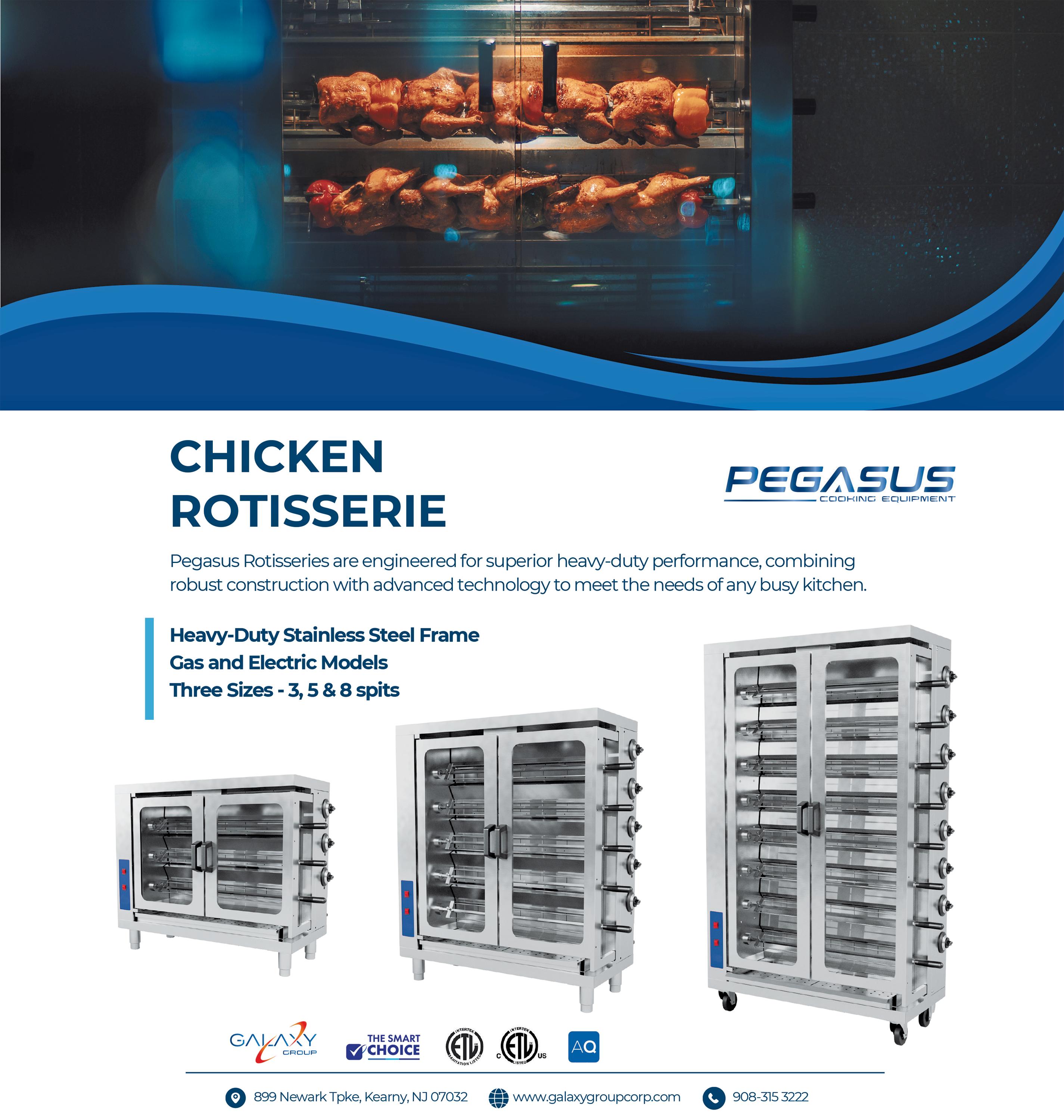
By Sophia Maggio
In both the food they serve and the technologies used to run their kitchens, today’s restaurateurs prioritize innovation, quality, and a personal touch.
Choosing a food distributor that delivers on these values can be challenging. US Foods has re-energzied the value proposition of making that selection. It has developed a series of solutions that make the company an optimal choice for restaurants focusing on driving traffic, simplify staffing, and modernizing their operations through innovative and personalized technology solutions.
As a leading food supplier and distributor, US Foods offers a customizable portfolio of tech solutions through the CHECK Business Tools Program. It has recently enhanced its offerings to the nation’s restaurant and foodservice industry by establishing a partnership with SpotOn: a top-rated software and payments partner for restaurants.
“We’ve identified these three lanes
“Restaurant technology has evolved on an accelerated curve since the pandemic, and SpotOn has navigated this curve and continues to bring immense value to restaurant operators.” — Adam Shinn
– traffic, staffing, and modernized operations – as universal challenges that restaurant operators face,” said Adam Stinn, Director of Business Solutions for US Foods. “CHECK Business facilitates collaboration with partners like SpotOn who innovate in response to restaurants’ needs in those domains.”
Innovation is central to both US Foods and SpotOn: in 2023, US Foods was recognized by Fortune Magazine as one of America’s Most Innovative Companies, and SpotOn earned the same title from Fast Company in 2024.
An advocate for both thoughtful innovation and quality food, Stinn has devoted nearly a decade of his career to US
Foods and attributes many additional years of informal learning to his family origins in foodservice. “My mother was a chef and my dad was a food manufacturer, so the industry is in my blood. You have to love it to stay in it – and I do,” he affirmed.
This passion for the industry is central to US Foods’ identity as a company that helps restaurants “make it”: a mantra that isn’t just a tagline “but a lifeline,” Stinn emphasized. US Foods honors the autonomy of operators to build their own restaurants, with the support of consultants who take time to understand their businesses and recommend custom solutions from CHECK Business’
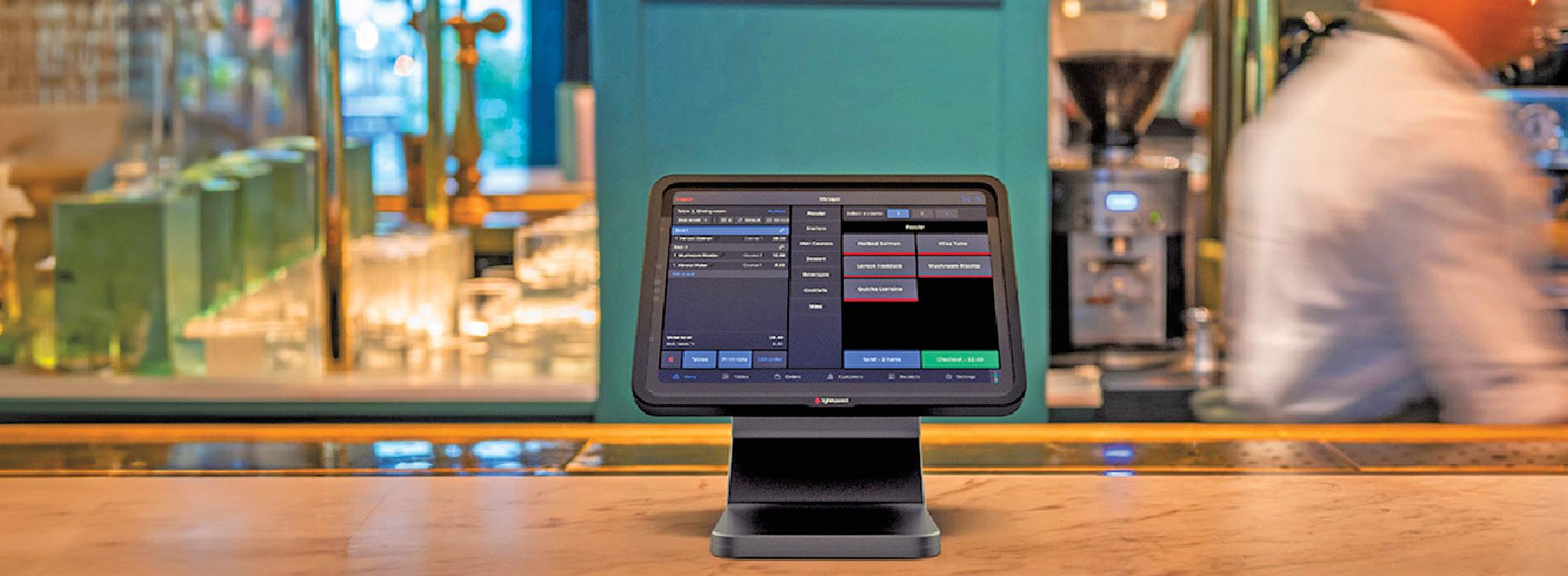
handpicked portfolio.
“In terms of vetting custom technology solutions for restaurant operators and the overall growth of CHECK Business, we’ve accomplished a lot of amazing things since the pilot program in St. Louis about six years ago,” Stinn reflected.
“We’ve added premier partners to the program, and we’re very selective. We want to ensure that CHECK Business is not just a marketplace of technology services, and that our technology members are really putting their money where their mouth is.”
Stinn acknowledged the sheer number of prospective tech partners eager to partner with a flagship company like US Foods. When expanding the CHECK Business portfolio to include collaborators like SpotOn, those partners must effectively support operators with a variety of needs: from website marketing and commerce platforms to staff training and Point of Sale operators like SpotOn.
“At the end of the day, we’re not trying to build a marketplace where everyone and everything can jump in. We test each partner and are very thoughtful about our collaborations,” Stinn assured.
When asked about the selection of SpotOn as a partner, Stinn said that SpotOn has been on US Food’s radar for some time. “We liked what they were doing: their customer service, how they consistently show up for restaurants and continue to grow and improve their services.”
“Restaurant technology has evolved on an accelerated curve since the pandemic, and SpotOn has navigated this
continued on page 124
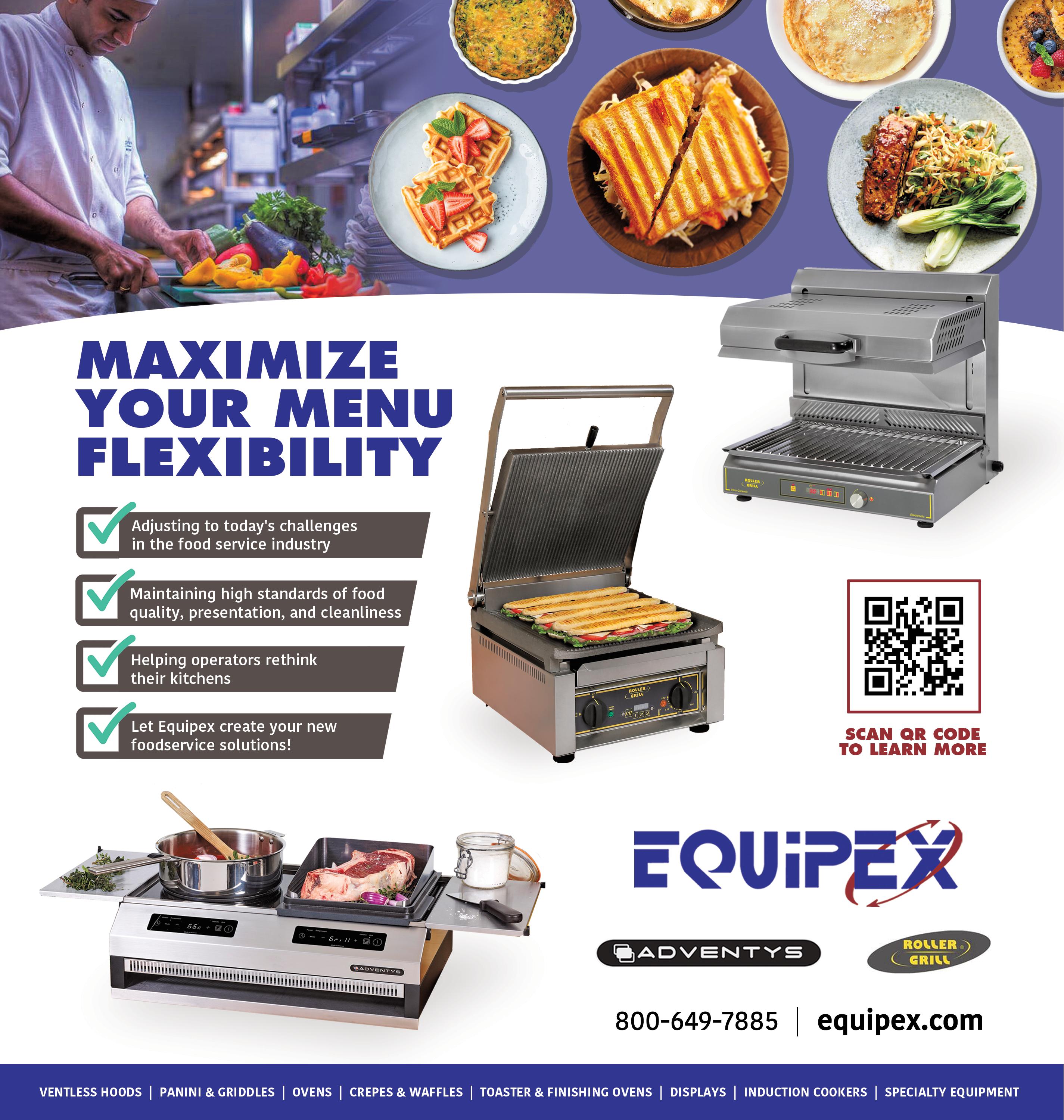
New York City’s updated air ventilation and emissions codes present significant challenges for the restaurant industry and the consulting design community. “These regulations are designed to reduce environmental impact and improve public health,” said David Hayes, President of K-Vent, Inc. “Compliance is not just a legal obligation; it’s essential for maintaining safe dining environments.” Architects and engineers play a critical role in adapting existing spaces and designing new ones to meet these stringent standards.
On October 22nd, K-Vent and Parker will host a seminar at Manhattan’s Harmonie Club, focusing on the latest NYC regulations concerning air quality and emissions in restaurants and foodservice kitchens. “This event is crucial for industry professionals who want to stay ahead of the curve,” emphasized Rich Hayes, CEO of K-Vent. “We’ll be addressing how to overcome air quality and design challenges, which is a priority for anyone in this sector.”
David Hayes highlighted the growing importance of air pollution control in the restaurant industry. “At K-Vent, we specialize in kitchen ventilation equipment aimed at eliminating smoke, odors, and other emissions from commercial kitchens. This focus has become increasingly important with the recent Department of Environmental Protection (DEP) approval requirements in New York City.”
Expanding on the partnership with Parker, Rich Hayes explained, “Parker has long been a global leader in motion, control and filtration technolo-
“Considering the new regulations around solid fuel cooking and the latest developments in air pollution control, this seminar will provide engineers, contractors, and foodservice professionals with the information they need.” — Richard Hayes
gies. Their expansion into air quality solutions allows us to bring advanced filtration systems to the foodservice industry. The technology originally designed to handle cigarette smoke, now tackles emissions from industrial mist and cooking operations, and is critical for helping restaurants meet stringent air quality regulations.”
“The attention to air quality in restaurants peaked during the COVID-19 pandemic,” noted David Hayes. “But even as that focus has diminished, the need for clean air remains critical, especially in commercial kitchens. While various technologies exist—like filtration, ultraviolet light, and ionization— no universal standard has emerged. Our expertise at K-Vent lies in managing atmospheric emissions, such as grease and cooking odors, to prevent them from becoming a nuisance to the surrounding community.”
“The demand for updated information on air quality technology has only grown since our last event seven years ago,” said Rich Hayes. “This upcoming seminar is designed to introduce engineers, contractors, and foodservice professionals to the latest developments in air pollution control, particularly in light of the new
regulations around solid fuel cooking.”
“Compliance with DEP regulations is crucial for any restaurant operating in New York City,” emphasized David Hayes. “The DEP now requires restaurants to demonstrate a 75% reduction in emissions from char broiler and solid fuel cooking for start-up approval. However, our systems are achieving around 99% reduction, which showcases the reliability and effectiveness of our technology. This level of compliance ensures that restaurants can operate safely within regulatory guidelines and avoid costly fines.”
Dave Hayes pointed out the challenges faced by restaurants like Dos Toros in managing smoke, grease, and odors, especially when using grilling and frying methods. “These cooking methods produce high levels of particulates, making effective ventilation systems essential. K-Vent’s solutions, particularly the SmogHog® system, have proven highly effective in capturing these emissions. This ensures that air quality standards are met and that a restaurants local neighbors are not adversely impacted by restaurant operations.”
“A proper ventilation system in a commercial kitchen must include high-effi-
ciency filters, grease extraction hoods, and advanced air cleaning technologies,” stated David Hayes. “These systems are designed to capture grease and odors at the source and ensure that discharged air meets local air quality standards. Regular maintenance and monitoring are essential to keep these systems operating at peak efficiency.”
“The SmogHog system implemented at Dos Toros significantly improved their air quality compliance,” said Dave Hayes. “It reduced the amount of grease and particulates emitted into the atmosphere, helping them avoid regulatory fines and neighbor complaints. Additionally, the system’s efficiency means it requires less frequent maintenance, reducing operational costs over time.”
“For restaurant owners, understanding air pollution control regulations is essential, especially when expanding in urban areas,” stressed David Hayes. “Non-compliance can lead to fines, shutdowns, and even reputational damage. As cities become more focused on environmental issues, the ability to navigate these regulations effectively becomes a competitive advantage.”
Industry professionals interested in attending the Harmonie Club event on October 22nd can register by visiting KVent’s website (kvent.com). “We encourage early registration as space is limited,” Rich Hayes concluded. “This seminar will provide valuable insights into the latest air quality technologies and regulations, making it a must-attend event for those involved in restaurant operations or facility management in New York City.”
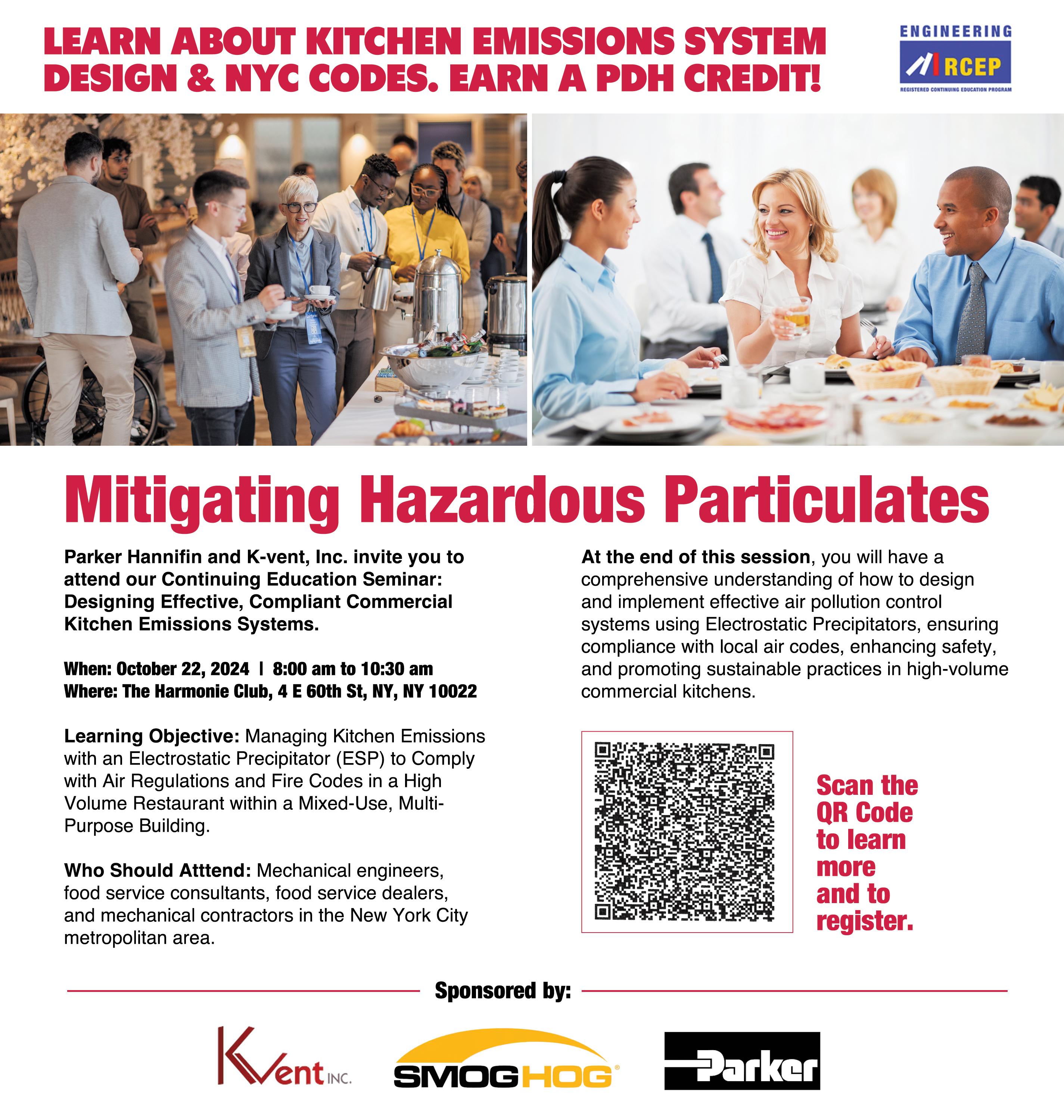
In September, the Employee Retirement Income Security Act (“ERISA”) turns 50. Congress enacted ERISA, in part, to protect employees’ retirement assets from employer theft and mismanagement. To do that, ERISA imposes obligations on the fiduciaries of plans subject to ERISA , which includes, among others, all 401(k) plans, health plans, and many severance plans. For purposes of ERISA, a fiduciary is generally any person who exercises discretion in administering a plan or has the authority to manage plan assets. ERISA’s duties include loyalty, prudence, diversification, adherence to plan documents, and avoiding “prohibited transactions.”
While much has changed in how courts interpret and apply ERISA, ERISA and the fiduciary obligations it imposes remain unchanged and are as relevant as ever for employers. Over the last 50 years, the United States Department of Labor has promulgated numerous regulations, rulings, and other forms of guidance that remain applicable and govern much of how the employee benefits subject to ERISA are operated today. An additional enforcement element that has become much more prevalent in the last 20 years is an aggressive plaintiffs bar.
As ERISA’s complex regulatory framework developed over time, the plaintiffs bar has developed innovative causes of action challenging a plan fiduciary’s compliance with their ERISA duties and feasted on the associated fees. Who could blame them? ERISA is, unsurprisingly, a plaintiff-friendly law. In addition to some of the headline-grabbing verdicts against employers such as Ruane

Cunniff & Goldfarb (over $124 million) and General Electric ($61 million) for 401(k) plan fiduciary violations, ERISA allows courts to award attorneys’ fees in many cases without requiring a party to prevail on all of the claims raised. This makes bringing ERISA claims cheap for plaintiffs and expensive for defendants, who are often the employers. While the original wave of fiduciary litigation generally targeted plans with assets in the billions of dollars, the developing trend is for the plaintiff’s bar to pursue smaller plans. This makes the hospitality industry an attractive target due to its generally high turnover rates. And with social media, finding willing plaintiffs has never been easier.
One of the best ways to enhance compliance with ERISA’s fiduciary rules and minimize potential liability is to form a fiduciary committee to which the company’s governing body will delegate its
fiduciary responsibilities regarding the discretionary administration of the plan and the management of its assets.
So, how does a committee increase the likelihood that a Company complies with ERISA? First, the committee is formed, and the Company’s managing body delegates the administration of its ERISA plans to the committee. This separation is advantageous from a risk perspective because company management is generally assumed to be acting in the best interests of the company, whereas a committee composed of a diverse group of employees within the organization is more likely to act in the best interests of participants, which is what ERISA requires.
After formation, best practices dictate that employers educate committee members on their duties under ERISA. The committee then meets regularly to review the company’s qualified retire-

Harrison Taylor, counsel to Ellenoff Grossman & Schole LLP, focuses in the areas of executive compensation, employee benefits, and ERISA. Mr. Taylor’s experience includes counseling clients on executive compensation and employee benefits aspects of mergers and acquisitions, initial public offerings, and other transactions. Mr. Taylor also regularly assists clients in designing and implementing employment, severance, deferred compensation, and equity incentive compensation arrangements. Mr. Taylor’s practice also includes representing public companies in preparing proxy materials and securities filings related to executive compensation matters. Mr. Taylor can be reached at (212) 3701300 or htaylor@egsllp.com.
ment plan performance and to manage and administer the plan by applying a prudent process. This process limits risk by creating a record of fiduciaries complying with their fiduciary obligations, which often provides the documentation needed to dismiss many of the complaints filed by the plaintiff’ bar in the early stages of litigation.
One of the primary claims raised is that plan administrators have violated their fiduciary duties by allowing the plan to pay excessive fees from the plan’s assets. The excess fees can result from the plan being invested in a more expensive investment fund class or from the plan paying excessive fees for necessary services, such as recordkeeping services. Importantly, ERISA doesn’t require plans to use the cheapest investments or the cheapest service providers. Instead, ERISA requires the exercise of prudent judgment. A fiduciary exercising prudent judgment may decide that selecting hypothetical investment A is a better decision than selecting hypothetical investment B because even though investment B has lower fees, investment A has historically outperformed investment B and is more desirable to the plan’s participants.
continued on page 122

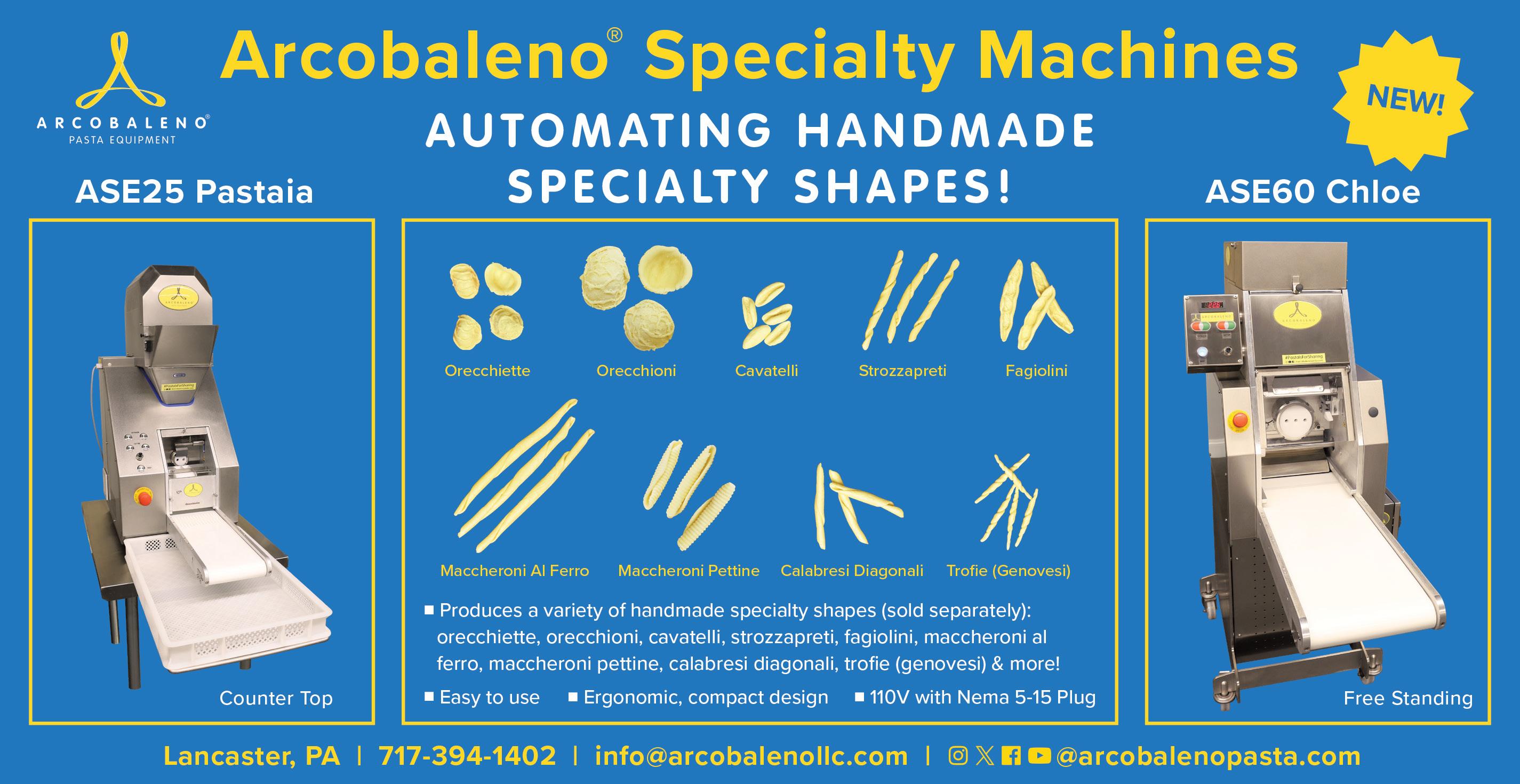
By Karen Jones
No matter the occasion, there’s always a place at any table for chocolate. In fact, over the last 12 months alone, there has been a 37% spike in “mixed dessert” plates on menus of midscale restaurant operations. No doubt chocolate boldly commands center stage on most, if not all these offerings.
So, for those confectionary professionals on the hunt for new products that will help them spark creativity and maximize consistency the Guittard Chocolate Company has unveiled some new products and revamped old ones in a new couverture line that is certain to garner wide appeal. “I think there’s room for us in everyone’s kitchen,” the company’s executive pastry chef Donald Wressell told TFS.
He also disclosed that the company is
working on a new line – The Etienne, to be rolled out next year no doubt named in honor of the founder Etienne Guittard, who immigrated to the United States from France to seek his fortune during the California Gold Rush. While sharing the history of the San Francisco based family-owned chocolate company Wressell outlined insight into how Guittard grew to become a preeminent player in the chocolate industry. “Etienne Guittard brought some of his uncle’s chocolate for trading purposes which people really liked and so he decided that he would go back to France and learn how to properly make chocolate and then bring the equipment back and so established the first factory in 1868.”
In 2024, the company is focused on a relaunch of their couverture line which Wressell described as “a great work-

“So, if you’re tempering that chocolate on a marble slab or you want to do some shell moldings or make some bonbons, that chocolate works really beautifully for that application.” — Chef Donald Wressell
horse chocolate for any pastry kitchen and bakery. “The line features a variety of different viscosities with some better suited for shell molding for a confectioner. Some of them are a little more cocoabased, fudge-based, chocolate brown flavors like we’re all familiar with that are really good for pastry baking applications. Within that line there are many different nuances to fit the needs of a pastry chef and baker, the veteran pastry toque added.
In addition, the line has added a number of new pack sizes to bring flexibility to the pastry professional. The new pack sizes are now available in 3 Kilo bags and have undergone several minor tweaks based on customer feedback. “We are trying to make sure that these products can withstand the test of time and can compete with our competitors one on one.”
Of the eight products in the couverture line, Wressell is especially fond of the 64% L’Etoile du Nord. “It really offers the foundation of many offerings in a pastry chef’s repertoire. It’s a product with the flexibility to be a confectionery ingredient, or it could be a coating while also being good for pastry and baking because of the depth of flavor that it provides.”
According to Wressell, the couver-
ture line with its varying viscosities and percentages will appeal to any pastry professional. “We have two white chocolates at the bottom end. The 31% cacao Crème Française White Chocolate and 35% cacao Soie Blanche White Chocolate. The 31 white is a little more dairyfocused because of the lack of cocoa butter and I like that for ganaches, creams, mousses, and things of that nature. The 35 white is 4% higher in cocoa butter and is a little more fluid. So, if you’re tempering that chocolate on a marble slab or you want to do some shell moldings or make some bonbons, that chocolate works really beautifully for that application. The other one does as well but it’s a little thicker and is not quite as forgiving,” he explained.
Wressell’s apt description of each product is telling. It is evident that he has an intimate connection to creating chocolate masterpieces having honed his skills as a master pastry chef for over four decades. Describing the 38% cacao Soleil d’Or Milk Chocolate and the 41% cacao Eclipse du Soleil Milk Chocolate, Wressell said, “the two milks one at 38% and the other at 41% are both fluid but with completely different flavor profiles. The 38% is caramelly, butterscotchy, and
continued on page 124

In the realm of competitive sports, the football requires as resilience, teamwork, and execution. However, as any restaurateur will tell you, the culinary arena presents its own set of formidable challenges that demand a similar level of commitment and skill. Just as athletes must adapt to the ebb and flow of a game, chefs and restaurant staff navigate the unpredictable dynamics of a bustling kitchen.
Both environments require quick decision-making under pressure; a quarterback’s ability to read the defense mirrors a chef’s need to anticipate customer demands. Teamwork is paramount—players rely on each other to execute plays, just as kitchen staff depend on one another to deliver a seamless dining experience. The importance of discipline and practice is universal, with hours spent honing techniques on the field paralleling the meticulous training that goes into perfecting a dish.
Moreover, the emphasis on com -
“Playing football taught me the importance of discipline, teamwork, and handling pressure—skills that are just as critical in the kitchen as they are on the field.” — Chef Preston Paine
munication is critical in both settings; a miscommunication on the field can lead to a turnover, while in the kitchen, it can result in a dining disaster. In essence, the lessons learned on the gridiron—resilience, teamwork, strategy, and communication—are invaluable assets that can propel success in the high-stakes world of the restaurant business.
So it comes as no surprise that Chef Preston Paine’s transition from college football player to accomplished chef has been a resounding success. His journey to becoming the Executive Chef at The Crescent Hotel in Dallas is a tale of passion, perseverance, and an unyielding pursuit of excellence. Born and raised in Dallas, Paine discovered his love for cooking at an early age, thanks to the influence of a close family friend, Chela. “Chela taught me the basics—how to hold a knife, grill, sauté, and braise. But more importantly, she taught me the magic of transforming fresh, local ingredients into something extraordinary,” Paine reflected.

This early exposure to the culinary arts ignited a spark in Paine that would later define his career. However, before donning a chef’s
coat, Paine pursued a different path, one that led him to the football fields of Tulane University in New Orleans. As a student-athlete, he studied Business Development with a focus on restaurant design, while also immersing himself in the vibrant culinary scene of New Orleans. “Playing football taught me the importance of discipline, teamwork, and handling pressure—skills that are just as critical in the kitchen as they are on the field,” Paine said.
While at Tulane, Paine began working in local restaurants, where he absorbed the unique flavors and techniques that the city’s cuisine is renowned for. The experience broadened his culinary horizons and solidified his desire to pursue a career in the culinary world. After graduating, Paine returned to Dallas and began his career in restaurant management and concept development. For two years, he worked on designing menus and restaurant concepts, but he soon realized that his true passion lay in the kitchen.
Driven by a desire to expand his culinary knowledge, Paine took a bold step and spent a year working as an onboard chef, traveling extensively and exploring global cuisines. “Traveling gave me a deeper understanding of different culinary traditions and techniques, which I now incorporate into my own cooking,” he explained.
Upon returning to the United States,
Paine had the opportunity to work at Eleven Madison Park in New York City, widely regarded as one of the best restaurants in the world. The kitchen at Eleven Madison Park, under the leadership of Chef Daniel Humm, was a rigorous and transformative environment. “Working at Eleven Madison Park was an eye-opener,” Paine recounted. “The level of precision, the commitment to excellence, and the sheer creativity were unparalleled. It was there that I truly understood what it means to strive for perfection every day.”
However, his time at Eleven Madison Park was cut short by the onset of the COVID-19 pandemic, which forced the restaurant to shut down temporarily. Paine returned to Dallas, bringing with him the skills and knowledge he had gained in New York. It wasn’t long before he ventured into entrepreneurship, co-founding Shug’s Bagels, a New York-style bagel shop that quickly became a local favorite. “Creating Shug’s was a way to bring a piece of New York back to Dallas, but with our own twist,” Paine said. Paine’s entrepreneurial spirit didn’t stop at Shug’s Bagels. He went on to play a key role in the opening of several restaurants in Dallas, including Catbird and Nine at The National, both located in the Thompson Hotel. As the corporate executive chef for
continued on page 112
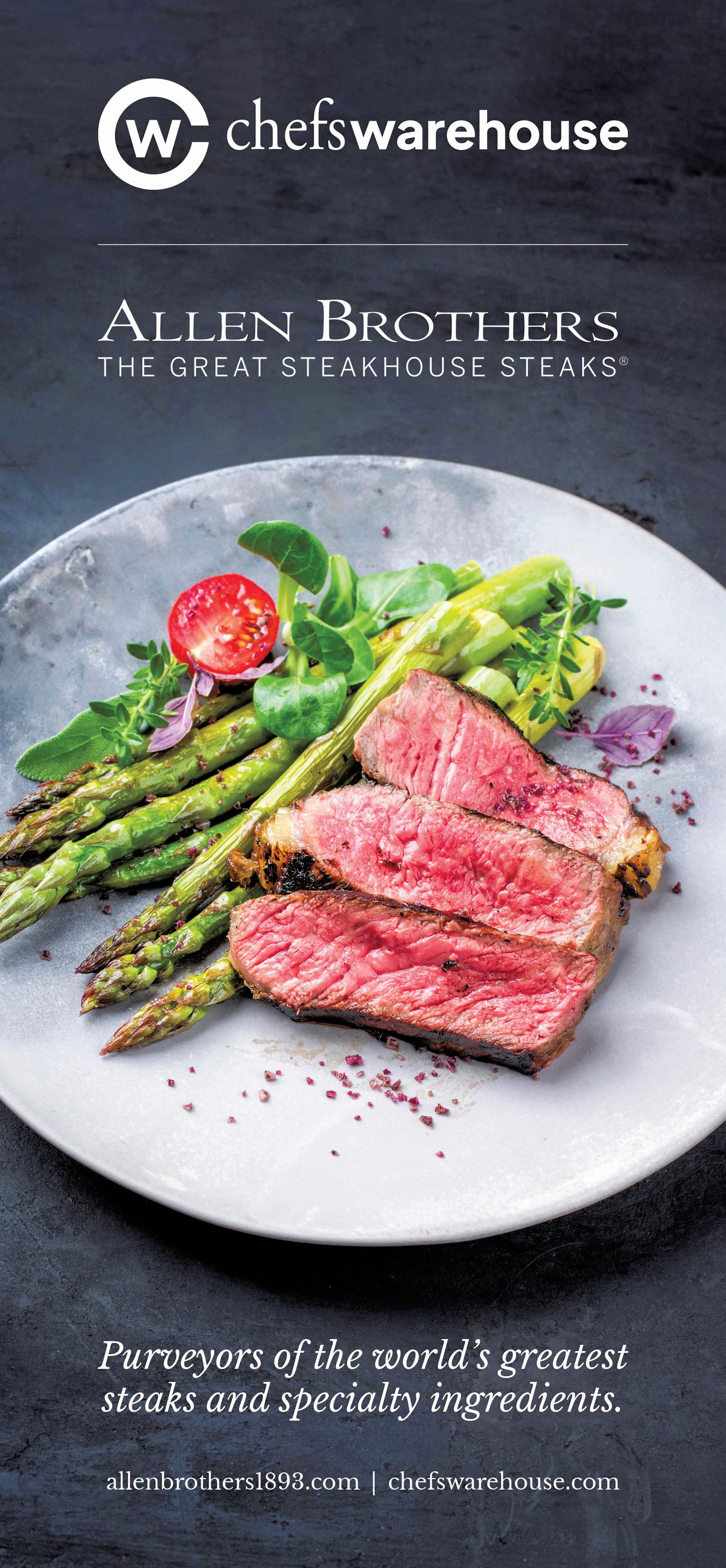

Do you have the SCOOP on any foodservice and hospitality news?
Send items to SCOOP Editor Joyce Appelman at tfs@totalfood.com
SCOOP heard that California Pizza Kitchen (CPK) is turning up the heat this fall with an exciting new collaboration that’s set to redefine the pizza experience. Partnering with Mike’s Hot Honey®, CPK has introduced Nashville-Style Hot Honey Pizza, available now through September 30. This limited-time offering marries CPK’s culinary creativity with the bold, sweet heat of Mike’s Extra Hot Honey®, marking the first time this spicy variant has been featured in a major collaboration.
The Nashville-Style Hot Honey Pizza is a delicious fusion of trendy flavors, featuring CPK’s signature handbattered crispy chicken, ranchito sauce, and fresh mozzarella cheese, all baked to perfection in a hearth oven. The pizza is then topped with cayenne seasoning, dill pickles, and finished with a drizzle of Mike’s Extra Hot Honey® for that perfect blend of sweetness and spice.
CPK is the latest in a long list of US foodservice operators that added Mike’s Hot Honey to create signature pizza creations that blend sweet heat with savory ingredients. By drizzling this spicy honey over classic and gourmet pizzas, chefs can craft unique flavor profiles that excite customers. For instance, a pepperoni pizza topped with Mike’s Hot Honey can offer a perfect balance of spice and sweetness, while a honey-drizzled prosciutto and arugula pizza can add a gourmet touch. These signature pizzas not only enhance the dining experience but also create a memorable brand identity for restaurants, enticing diners to return for the exclusive flavors.
SCOOP heard that Inline Plastics is excited to introduce their latest innovation: the three-compartment 16 oz product, TS16C3, expanding their popular SafeT-Fresh® Rectangles line. This isn’t just any package, it is your new go-to for hassle-free, on–the-go meals and snacks!
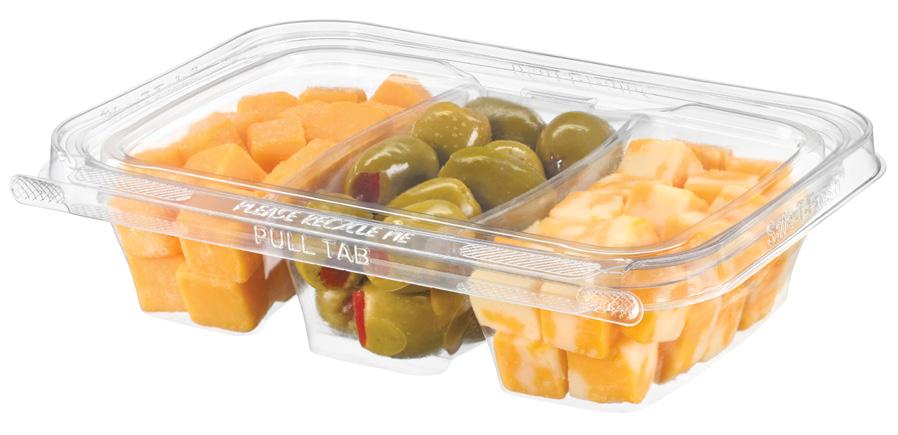
Ideal for convenience stores and busy lifestyles, this new addition does not just promise convenience; it delivers it. With three separate compartments, it is perfect for organizing everything from snacks to mini meals. Imagine grabbing your favorite treats without the fussnow that’s convenient!
This product is not just a game-changer- it is a must have for schools, stores, and anywhere one might need a quick, reliable meal solution. Embrace the convenience without compromising on quality!
Say goodbye to spills! The leak-resistant seal keeps shelves tidy and packaging mess-free, minimizing waste and maximizing freshness. Featuring a tamper-evident and tamper-resistant seal, this packaging ensures the food stays fresh and secure, giving peace of mind wherever one may go. Made from clear, durable plastic, this product offers crystal-clear visibility of its contents, making it easy to pick out the goods.
Whether grabbing a quick snack on the run or planning for a busy day, Inline Plastics’ new three-compartment Safe-T-Fresh® rectangle is the perfect partner in convenience and freshness. Designed with popular needs in mind, it ensures safety, cleanliness, and sustainability. Explore the innovation behind the TS16C3 and discover why Inline Plastics remains the trusted choice for packaging solutions that elevate every consumer experience at inlineplastics.com/product_line/ rectangles/.
One of the Foodservice industry’s top sales and marketing executives has retired from his position as VicePresident of Foodservice at Red Gold®, the world’s largest privately held tomato company. David Halt helped the company grow its Foodservice business into a pow-
erhouse during his tenure.
“It was an honor to help build a strategically focused Foodservice Division at Red Gold,” says Halt. “We benefited from the insightful ownership of the Reichart family, great Red Gold employees, and dedication to our core principles and mission.”
Halt began his career in 1981 at Durkee Foodservice and later at Heinz Foodservice. Prior to joining Red Gold, he worked at Nabisco Foodservice, where he managed the newly created Vending and Alternative Channels Division.
In 1997, David opted to leave large, publicly traded companies to one that is family-owned with a mission to serve the freshest, best-tasting tomatoes in the world. His goal was to significantly grow Red Gold’s Foodservice Division. Until Halt’s arrival, Red Gold’s focus had been primarily into the Retail Grocery channel.
“David’s energetic, team-oriented approach to growing our presence into the Foodservice business made a profound and positive impact on our company’s growth,” says Brian Reichart, President and CEO of Red Gold.
“I join all Red Gold employees in thanking him for his 26 years of leadership.”

“I want to thank all Red Gold employees, past and present, for sharing in an incredible journey of building a significant foodservice presence with Corporate and Independent Distributors, Regional restaurant Chains, Contract Management Companies, and K-12 School Districts around the country,” says Halt. “I’ve now passed along my insight from a 43-year foodservice career to a new leadership team at Red Gold and look forward to seeing the company continue to flourish.”
David and wife of 47 years, Cindy, along with his family plan to travel for several months, then David will focus on helping others build their business careers. David has established a scholar program at his alma mater, Youngstown State University, to grow the next crop of business leaders.
Visit www.RedGoldFoods.com to learn more about Red Gold.
continued on page 106


SCOOP heard that food and foodservice distributor Performance Food Group is set to significantly expand its presence in the U.S. Southeast by acquiring Cheney Brothers, Inc., as the company announced a pending deal Aug. 14 along with reporting its 2024 fourth quarter and full-year financial results. PFG agreed to acquire Riveria, FL-based Cheney Brothers — a foodservice distributor currently owned by private equity firm Clayton, Dubilier & Rice — for $2.1 billion in cash.
Hoshizaki Alliance, a group of leading companies in the foodservice industry in the Americas, announced significant enhancements to its leadership team with a key promotion and the addition of two new members. These strategic appointments, who will report directly to Hoshizaki Americas Region President, Chris Karssiens, are set to drive growth and strengthen market presence.
• Hoshizaki Alliance announced the promotion of Bret Eldridge to Vice President of Strategic Accounts. Eldridge has been instrumental in launching multi-brand sales initiatives with key customers since joining the team from Hoshizaki America last year. His leadership has demonstrated the effectiveness of collective multibrand sales efforts in achieving substantial market share gains. With over 30 years of industry experience, including roles at Master-Bilt and executive positions at multiple brand franchise organizations, Eldridge’s expertise is a tremendous asset. He attended the University of Georgia, holds a BBA in Business Management from Clayton State, and resides in McDonough, Georgia.

• Hoshizaki Alliance has welcomed Joel Horn as Se-
nior Vice President, General Counsel. Horn brings 28 years of legal experience across various manufacturing organizations, including Mitsubishi Power Systems, Enodis, Manitowoc Foodservice, and Welbilt. His expertise in Mergers and Acquisitions, IP management, and strategic risk controls will be crucial in supporting Hoshizaki Alliance’s growth strategy as well as enhancing the legal strategy and efficiency of each of the group companies. Horn holds a BA in political science and government from Stockton University and a juris doctorate from New England Law | Boston and is a member of both the American Bar Association and the Society for Corporate Governance. He and his family reside near Tampa, Florida.

and maintain critical relationships will be invaluable as we expand our presence across key markets. Together, they will play a vital role in driving our strategic initiatives and enhancing our collaborative efforts across the Alliance.”
These strategic appointments highlight Hoshizaki Alliance’s commitment to leveraging the collective power of its brands to drive growth and enhance shareholder value. Recent successes with the Multi-Brand Sales Center of Excellence Team have underscored the benefits of synergistic collaboration, and it is anticipated that Eldridge, Horn, and Nielsen will further strengthen these efforts on both regional and global scales.
SCOOP learned that celebrating their 25th year in business, Tri-State Marketing has moved their corporate offices to 40 Deer Park Road in Katonah, NY.

• Dianna Nielsen has joined Hoshizaki Alliance as Vice President of Global Accounts. Nielsen will lead the development of key global accounts across all Hoshizaki product platforms, working closely with regional and global stakeholders to build and enhance trusted relationships. With 32 years of experience managing global accounts for leading companies such as Ali Group, Carpigiani, Taylor, and Delfield, Nielsen has a proven track record with major accounts including McDonalds, Ikea, Starbucks, and Yum! Brands. She holds a formal education in business management from Central Michigan University and resides in Hilton Head Island, SC. Nielsen will travel extensively to engage with Hoshizaki companies, partners, and customers worldwide.
“The recent appointments of Bret Eldridge, Joel Horn, and Dianna Nielsen mark a pivotal moment for Hoshizaki Alliance”, said Chris Karssiens, President of the Hoshizaki Americas Region. “Bret’s promotion recognizes his exceptional contribution to our multi-brand sales strategy and his role in achieving significant market share gains. Joel’s extensive legal expertise will be crucial in navigating our growth strategy, particularly in M&A and strategic risk management. Dianna’s global account management experience and her ability to build
Lynne Schultz, Principal, said, “As we expand our business to include the New England and Philadelphia territory, we found the need to expand our internal support and thus our office space. In addition, our new office gives each of our salespeople a place to work as well as provides two conference areas for strategic planning.”
“Our unique farm-to-table test kitchen will still remain at our original location in Ossining,” said Bart Gobioff, Principal. “This key test site offers a variety of equipment to test as well as a conference/entertainment area that seats 20+ people.”
In addition to Tri-State’s physical changes, they have announced several new roles inside the company: Marc Fugaro, Vice President of Strategic Alliances, David Bergen, Director of Operator Initiatives, and John Rodriguez, Director of Key Accounts.
SCOOP knows that women in a wide range of roles across all segments of the foodservice industry will explore and expand their leadership capabilities, with impactful sessions on how to take risks and how to share your unique value. These one-day workshops will also provide a safe community for women to build connections with peers and mentors.
continued on page 108

More than ten years ago, WFF launched its Leadership Development Workshops (LDWs) that have proven to be valuable in helping women discover new tools to advance their careers. LDWs provide participants with an exceptional vehicle for accelerating learning through robust professional development and networking delivered with minimal time away from work and family. This one-day immersive experience includes two professional development sessions focused on core leadership competencies, a leadership exchange panel with industry executives sharing their insights and coordinated networking opportunities during breakfast and lunch for in-person attendees. Individuals can also attend virtually, and all participants will enjoy on-demand access to content after the workshops.
“Our LDWs are popular with both women building their careers in the foodservice industry and the employers who rely on their growing talent because they deliver high impact and value in a concentrated time,” explains WFF President & CEO Therese Gearhart. “Expert speakers and a highly interactive agenda keep participants learning, growing and connecting throughout this powerful one-day experience.”
Workshop Topics include: Your Superpower Revealed: Clarify, Amplify & Share Your Unique Value; Leveling-up your Confidence to Lead; Leadership Exchange Panel with Industry Executives; and Workshops launch in Orange County and travel the country
The LDWs will be offered in: Orange County, CA- September 24; Denver, CO - September 26; Orlando, FL - September 30; Dallas, TX - October 8 (in-person and virtual); Minneapolis, MN - October 10; Phoenix, AZOctober 15; Chicago, IL - October 22; and Atlanta, GA - November 14 (in-person and virtual).
Ambitious, talented women ready to take their careers to the next level can https://bit.ly/LDWPR2024 now for this high-impact opportunity to learn and grow with others ready to accelerate their advancement in the dynamic foodservice industry. Scholarships are available for all cities and eligible women can apply at https:// www.wff.org/s/.
SCOOP learned that according to a August 2022 Datassential Keynote Report, nearly 60 percent of operators report that consumers are demanding more unique sauces, condiments, and dressings, such as spicy, globally inspired and better-for-you options. Customers want flavors that are craveable, trend-forward and not easily replicated at home. Ken’s Signature Sauce line-up features more than a dozen unique flavors to take your menu to the next level, with quality and consistency. Ex-

periment with bold sandwich spreads, burger toppings, dipping sauces including:
Ken’s Dill Pickle Aioli is a unique and delicious sauce that combines the tangy taste of chopped dill pickles, pickle juice and dill weed with the creamy texture of aioli. This versatile sauce will elevate your sandwiches, burgers and fries. Creating a one-of-a-kind flavor, you won’t be able to resist.
With fresh chopped onion, horseradish, Creole mustard and just a touch of lemon, Ken’s Signature Remoulade Sauce offers the hallmark taste of remoulade with added body and flavor — ideal for elevating any number of seafood dishes, sandwiches, and sides.
Thanks to its blend of poblano, jalapeño and serrano peppers, Ken’s Signature Green Chili Aioli brings the perfect amount of heat, and the perfect amount of flavor. A thick aioli base flavored by garlic, onion and pepper puree, it’s a perfect pairing for fries, proteins and more. Visit KensFoodservice.com to request samples and be inspired.
SCOOP discovered that global, family-owned food company Rich Products (Rich’s) launched Rich’s Megatrends: 2024 Food Trends You Need to Know. A digital, on-demand course developed by Rich’s Strategic Insights team, Megatrends dives into disruptive macro trends across the food landscape to help industry professionals respond to today’s rapidly evolving marketplace. The digital program is currently available through Rich’s Academy, a free training and education platform that Rich’s launched in 2023 to help food industry professionals build their skills, tap into industry trends and insights and take courses that qualify for continuing education or units from accrediting organizations.
“Over 10 years ago, we developed Rich’s MegaTrends as an internal trend and market-tracking program for our leaders and associates,” said Amanda Buonopane, senior manager, Strategic Insights. “After seeing the value it provided our people, informing strategy and key business decisions, we decided to create an external version that would serve as a dynamic educational resource for food industry professionals. We’re seeing more competition, disruption and change in today’s marketplace than ever before, which is being accelerated by socio-economic forces, demographic changes and a shift in purchasing power among younger generations. Businesses must remain ahead of the curve to be successful, and this course is a valuable resource to help them do that.”
Rich’s MegaTrends focuses on the latest disruptive consumer trends impacting the food industry, including technology, sustainability, consumer behavior shifts and more. From retailers and on-site operators to commercial foodservice, the course is designed to appeal to a broad audience of food professionals.
Below are some of the key trends covered in this course:
• Increased Snacking Behavior: According to Rich’s proprietary research, 42% of consumers agree they are snacking more often. What’s also changing is what they’re snacking on and where they look for snacks.
• The Merge of Digital and Real-life Experiences: Artificial Intelligence (AI) is everywhere, and consumers are gaining more experience and trust with an appreciation for these convenient, personalized experiences. According to a Datassential study, 45% of consumers are interested in AI tools recommending promotions based on prior purchases.
• Embracing Technology: Operators and retailers are embracing technology as new forms of automation arise to help alleviate labor pressures and meet consumer needs.
For more information and to enroll in “Rich’s Megatrends: 2024 Food Trends You Need to Know,” visit: https://academy.richsusa.com/.
SCOOP learned that The James Beard Foundation® (JBF) will host the 2024 Women’s Entrepreneurial Leadership (WEL) Summit in partnership with Houston First
continued on page 110

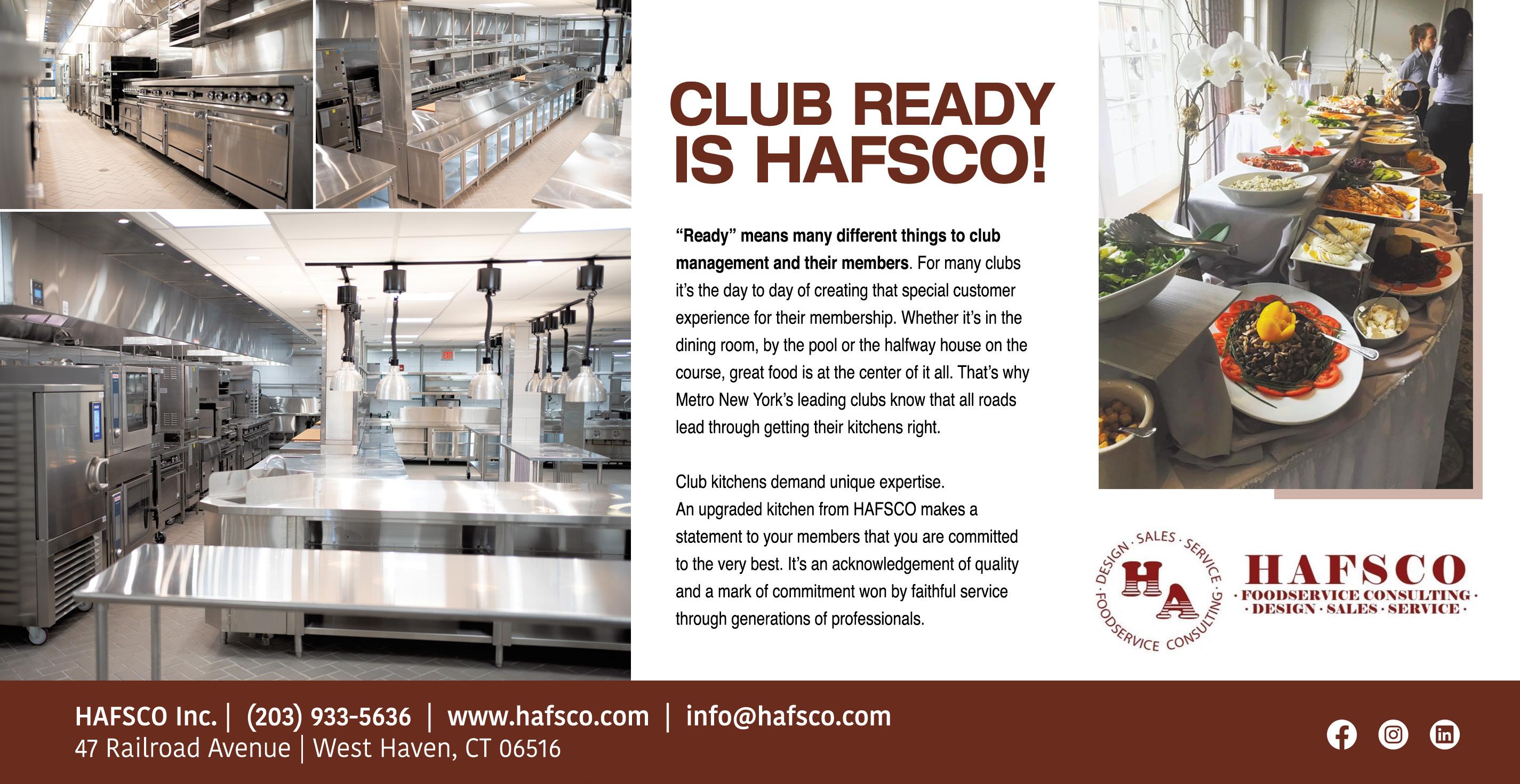
from September 8-10, 2024, at Hilton Americas-Houston. The event will gather over 150 of the nation’s leading women business owners in hospitality and culinary entrepreneurship for two days of intensive learning, connection, and empowerment. This is only the second time JBF has held a summit of this magnitude in support of women’s leadership in the industry.
The WEL Summit is an extension of the Foundation’s flagship WEL program, an advanced educational, training, and networking program that aims to ensure the success of and increase the number of women-owned businesses across the country. Over the course of two days, participants will have the opportunity to delve into a wide range of topics crucial for business success, including team management, leadership development, optimizing marketing strategies, improving profitability, scaling up business operations, leveraging personal brand identity, and more, learning from influential women from across hospitality and business. Featured speakers include:
• Mayan Bouskila, Founder and Attorney, Legal with Mayan
• Maya-Camille Broussard, James Beard Award-Nominated Chef and Owner, Justice of the Pies
• Ana Castro, James Beard Award-Nominated Chef and Owner, Acamaya
• Tiffany Derry, James Beard Award-Nominated Chef and Founder, Tiffany Derry Concepts
• Jacqueline Hensel, VP of Marketing and Communications, COTE
• Anita Jaisinghani, James Beard Award-Nominated Chef and Co-owner, Pondicheri
• Bricia Lopez, James Beard Award-Winning Chef and Co-Owner, Guelaguetza
• Dr. Anne E. McBride, VP of Programs, James Beard Foundation
• Erika Prosper, Senior Director of Customer Insights, H-E-B
• Emily Williams-Knight, CEO, Texas Restaurant Association
The WEL Summit is free to attend and is open to both past and current WEL program participants, as well as former applicants. This initiative underscores JBF’s dedication to increasing opportunities and support for women business leaders in the hospitality industry.To learn more about the 2024 WEL Summit, visit: https:// www.jamesbeard.org/womens-entrepreneurial-leadership-summit-2024
SCOOP heard that if you love Sherry, you can put your skills to the test for a chance to compete in the Copa Jerez USA Finals in New York City on Monday, November 4. Collaborate with your chef or sommelier and submit a three-course pairing menu for your chance to win. Ap-
plications are due by Tuesday, September 10 and must include:
Full dish titles for each course (starter, main dish, and dessert) with one dish including Sherry as an ingredient and Selected Sherry or Manzanilla pairings and a brief pairing justification for each course.
Three teams will be selected to compete in the live Copa Jerez USA Finals on Monday, November 4 at The Institute of Culinary Education. The winning team will receive a trip to Jerez, Spain to represent the United States in the Copa Jerez International Finals in Spring 2025. To Apply, go to: https://www.starchefs.com/contest/2024/copa-jerez
SCOOP heas learned that Edward Don & Company, a leading distributor of foodservice equipment and supplies, is thrilled to announce several key promotions and organizational changes within its Sales and Merchandising departments. These strategic promotions are designed to enhance operational efficiency and align with the company’s broader business objectives. By advancing talented individuals into critical roles, DON aims to harness their expertise to drive growth and innovation. These changes reflect a commitment to leveraging internal talent to its fullest potential, ensuring that the company can better meet customer needs and deliver exceptional value. The restructuring within these departments will support long-term growth for DON, its partners, and its valued customers, reinforcing the company’s dedication to excellence and industry leadership.
• Pete Angenend has been promoted to Vice President of Field Sales. With 28 years of dedicated service at DON, including the past eight years as Managing Director of Merchandising and Sales, Pete has been a pivotal member of the Field Sales team. In his new role, he will lead Field Sales as the company expands its national footprint, with a focus on multi-unit operations.
• Roger Mellum has been promoted to Vice President of National Account Sales. With 39 years at DON, including 20+ years managing National Accounts along with Cruise & International, Roger will continue to drive the expansion and management of National Accounts while strengthening industry partnerships.
• Wendy Abney has been appointed Vice President of Merchandising, Marketing & Ecommerce. Wendy brings to DON 20+ years of extensive experience across Merchandising and Ecommerce development from her previous time as President of Supplies on the Fly at Sysco. While we maximize business opportunities across Mer-
chandising and Ecommerce, she also currently serves as Vice President of Integration with Sysco.
• Matt Claude has been promoted to Director of Merchandising, Consumables. Matt’s profound product knowledge and market insight have been key to the growth of our Consumables category, and he will continue to lead with a focus on innovation and category development.
• Shannon Tallon has been promoted to Director of Merchandising, Front of House. Shannon’s exceptional communication and leadership abilities have earned her the respect of both colleagues and suppliers. In her new role, she will lead the Front of House team, driving strategic initiatives and fostering strong relationships within the industry.
• Kim Worley has been promoted to Director of Merchandising, Back of House. Known for her collaborative problem-solving skills and leadership, Kim will continue to oversee the Back of House team, ensuring continued growth and efficiency.
For more information, visit www.don.com.
SCOOP learned that out of more than one million bars on Earth, MEXIMODO, in Metuchen, NJ, has taken the #1 crown with a Guinness World Record for Most Tequila/Agave Spirits Commercially Available in a Bar/ Restaurant In The World!
Since its opening, Meximodo has become a destination for its incredible selection of tequila and mezcal and has garnered rave reviews for its authentic regional Mexican cuisine. On this year’s National Tequila Day, Wednesday, July 24th, Meximodo achieved this singular milestone, as Andy Glass, an Adjudicator from the historic Guinness World Records, designated Meximodo as the location with that GUINNESS WORLD RECORDS title©, based on an official count of 1,033 hand-selected bottles!
Charlie Mitchell of Michelin-starred Clover Hill in Brooklyn Heights, who won this year’s James Beard Award for Best Chef: New York State is headed to Manhattan. Mitchell will lead the two-Michelin-star Saga, continued on page 112
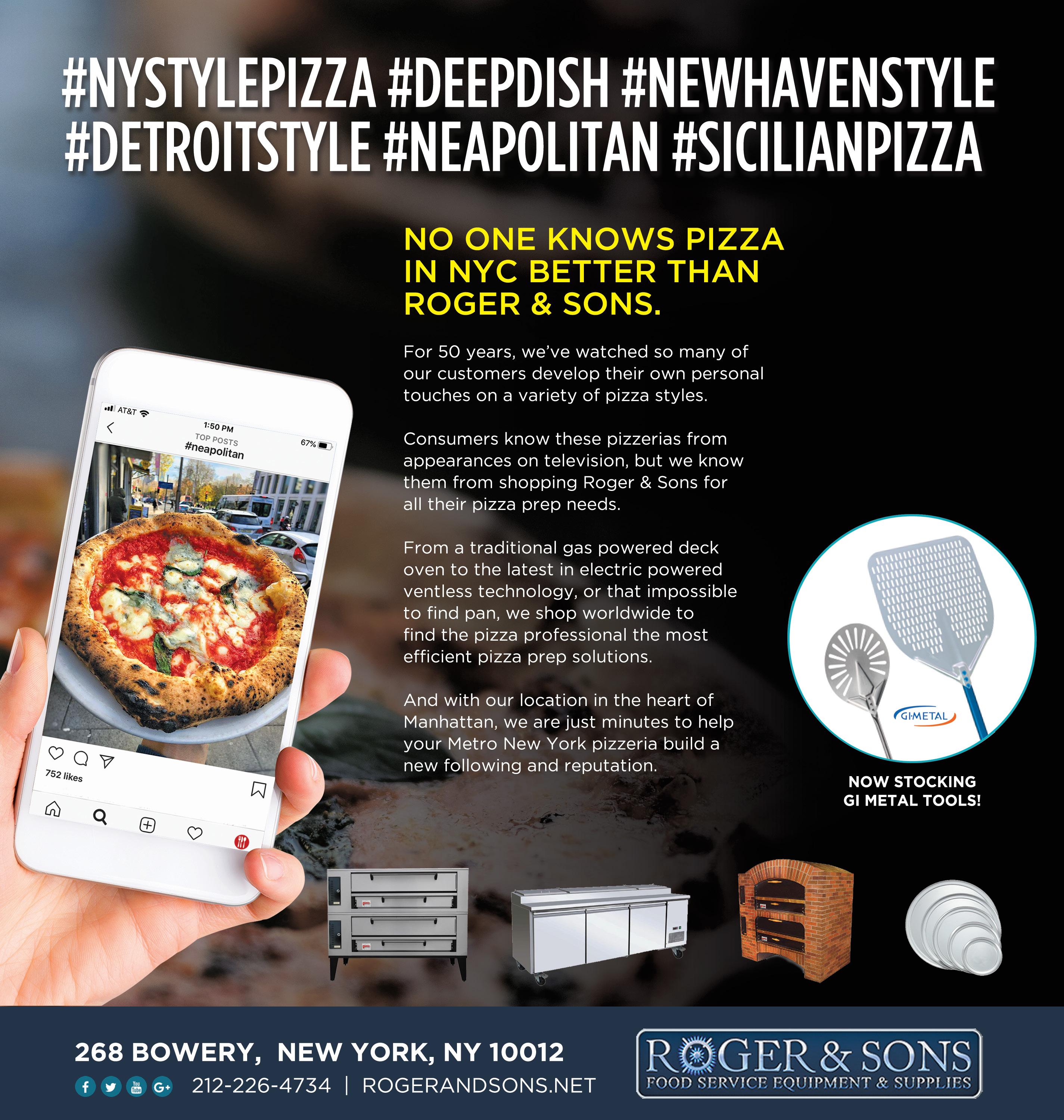
where he’ll become the executive chef following the death of founder James Kent. Saga Hospitality backed by SC Holdings and LeBron James’s and Maverick Carter’s company LRMR Ventures was renamed Kent Hospitality Group in June, led by multiple partners. Those partners include Kelly Kent, Mitchell, and Top Chef winner and head chef for the upcoming Time & Tide, Danny Garcia.
The Overland Park Convention Center announced the appointment of David Ruiz as the venue’s new executive chef. Ruiz, a James Beard Foundation competition winner and International Produce Association’s chef of the year, brings a wealth of experience and a fresh, innovative approach to the dining experience at the convention center. Ruiz has honed his skills in award-winning restaurants in Aspen, CO; San Jose, CA; and Albuquerque, NM.
The Kimpton Sawyer Hotel announced the appointment of Sam Shafer as executive chef of Revival at the Sawyer, the hotel’s rooftop restaurant and bar. Revival at the Sawyer features an airy, open floor plan and a landscaped pool deck. With over 16 years of experience throughout the Golden State’s hospitality landscape, Shafer brings a wealth of expertise, creativity, and passion to his new position. He will oversee Revival’s menu focused on inventive American dishes spanning garden, land, and sea.
Toro, from critically acclaimed Chef Richard Sandoval, is set to open within Fairmont Chicago this fall. The opening of Toro marks an extension of the longstanding relationship between Fairmont and Richard Sandoval Hos-
Exxir Hospitality, Paine managed five unique concepts throughout the Bishop Arts District, each one showcasing his talent for blending innovative culinary techniques with local flavors.
Today, as the Executive Chef at The Crescent Hotel in Dallas, Paine continues to push the boundaries of culinary creativity. His menu at The Crescent is a testament to his diverse experiences and influences, from the rustic, hearty dishes of New Orleans to the refined, meticulously crafted plates of Eleven Madison Park. “My goal at The Crescent is to create a dining experience
pitality, which began with the launch of Toro Scottsdale in Arizona in 2014. Fairmont, combined with the vibrant energy of Chicago, provide the perfect backdrop to showcase Chef Sandoval’s thrilling pan-Latin cuisine. Toro will be the second concept brought to Chicago in 2024 from Chef Sandoval, who opened Casa Chi in May.
The St. Regis Deer Valley, one of the most luxurious mountain Resorts in the world, announced the appointment of its new Executive Chef, Matthew Fradera. Executive Chef Fradera will oversee all Culinary Operations at the Resort, including those at RIME, La Stellina, Brasserie 7452, and the St. Regis Bar. Fradera will also oversee all banquets and events, as well as supervise a superb staff of more than 50 cooks and stewards, working in concert with the Resort’s Chef Matthew Harris to interpret and execute the menus.Chef Fradera was most recently Executive Chef for Waldorf Astoria Park City for nearly two years, and prior to that, Fradera served as Executive Sous Chef for Pendry Park City where he developed and implemented menus for five dining venues during the hotel’s opening and trained all culinary colleagues.
Conrad Washington, DC, announced the appointment of Arturo Elias as the new chef de cuisine at Estuary. Elias brings over a decade of experience from prestigious roles at five-star establishments, including The Hay-Adams Hotel and Sea Island Resort. The hotel also appointed Elmer Stunkel as the new director of food and beverage and Martin Krausbeck as the director of restaurants.
InterContinental Cleveland is excited to share two
from page 102
that is both innovative and deeply satisfying,” Paine said. “I want every dish to tell a story, to evoke a sense of place and tradition, while also surprising and delighting our guests.”
One of the key elements of Paine’s success at The Crescent is his partnership with The Chefs’ Warehouse, a premium foodservice distributor known for sourcing the highest quality ingredients. “The Chefs’ Warehouse has been instrumental in allowing me to access the best products available, whether it’s a rare cut of meat or an exotic spice,” Paine noted. “Their
new appointments within their culinary team – Cluster Executive Chef Omar Jones and Executive Pastry Chef Thomas Francescangeli. Cluster Executive Chef Omar Jones, a native of the Cleveland area, is a culinary professional with more than 30 years of experience in the hospitality industry oversees the hotel’s sprawling 35,000 square feet of meeting and event space and the on-site restaurants, Table 45 and North Coast Café, as well as C2 Restaurant Bar & Lounge located within the InterContinental Suites. He has earned the prestigious title of “Ohio Manager of the Year” in 2021 from the Ohio Hotel & Lodging Association (OHLA). A culinary professional with 15 years of experience, Executive Pastry Chef Thomas Francescangeli, born and raised on Cleveland’s west side, joined the pastry team as Pastry Cook in 2010.
The Hudson Rose restaurant with a vast second floor event space, The Harlow Room, is the newest creation of the GAC Hospitality team, who opened Pop’s Corner in Point Pleasant Beach last summer. The Hudson Rose kitchen is headed by Chef Andrew Riccatelli, a winner of Chopped and most recently Corporate Executive Chef for Tao Group Hospitality in NYC. Chef Andrew is joined by Corporate Pastry Chef Raechel Lebron.
One of the world’s most celebrated chefs, Massimo Bottura, has opened Torno Subito Miami in Downtown Miami on the top of food and entertainment spot, Julia & Henry’s. This new venture, in partnership with King Goose Hospitality, promises to bring a modern and playful twist to Italian cuisine.
commitment to quality aligns perfectly with my vision for the menu at The Crescent.”
Paine’s journey from the football fields of Tulane to the kitchens of Michelin-starred restaurants and beyond is a story of relentless dedication and a passion for culinary excellence. His competitive nature, honed on the gridiron, continues to drive him in the kitchen, where he constantly seeks to innovate and elevate his craft. “Cooking, like football, is about pushing yourself to be better every day,” Paine reflected. “It’s about taking risks,
learning from failures, and celebrating victories—both big and small.”
As he continues to make his mark on the Dallas culinary scene, Chef Preston Paine remains focused on what matters most: creating unforgettable dining experiences that resonate with his guests. With his innovative approach to cooking and his unwavering commitment to quality, Paine is poised to lead The Crescent Hotel’s culinary offerings to new heights, making it a must-visit destination for food lovers in Dallas and beyond.
food festivals, and guest chef appearances. These events are aimed at enriching the student experience and providing opportunities for learning outside the classroom.
In keeping with the university’s push towards modernization, the cafeteria features several technological innovations designed to improve the dining experience. Students can now use a mobile app to view the daily menu, check nutritional information, and even place orders for takeout. This app integration is especially beneficial for students with dietary restrictions, allowing them to easily find suitable meal options.
“We’ve embraced technology to make dining more convenient and accessible for our students,” White said. “The mobile app is just one example of how we’re using technology to enhance the overall experience.”
The cafeteria also employs advanced kitchen technology, including high-efficiency cooking equipment and a sophisticated inventory man -
agement system that helps reduce waste and ensures the freshest ingredients are always used.
As UCONN continues to evolve, the new cafeteria represents a significant milestone in the university’s efforts to improve campus life. It’s a facility that not only meets the current needs of students but is also flexible enough to adapt to future trends in dining and sustainability.
White expressed confidence that the cafeteria will set a new standard for campus dining across the country.
“This is just the beginning,” he said. “We’re committed to continuously improving and ensuring that UCONN remains a leader in providing exceptional dining experiences.”
With its combination of innovative culinary offerings, sustainability initiatives, and community-focused design, the new cafeteria at UCONN is more than just a place to eat—it’s a symbol of the university’s commitment to enhancing the student experience in every possible way.
“Houston represents a significant step in our national expansion strategy,” Sher said. “Our team is ready to provide the same level of Michelin qualified service and cutting-edge solutions that have fueled our growth from Massachusetts to Miami.”
The Houston hub will also serve as a base for further expansion in the region, allowing Day & Nite to explore opportunities in other major Texas cities and beyond. As the company continues to grow, it remains focused on maintaining the high standards of service that have earned it a loyal, most discriminating customer base in every market the company operates in.
As Michelin eyes Texas, the expectations for operational excellence in the state’s restaurant industry are higher than ever. Day & Nite entry into the Houston market is a timely response to these increased demands. By offering top-tier facilities management
services, the company is not only supporting local businesses in their pursuit of Michelin stars but also helping them achieve immediate and longerterm operational success.
“As Michelin eyes Texas, we recognize the increased expectations for operational excellence,” Sher concluded.
“Day & Nite Service is fully committed to supporting restaurants in Houston with the technology and expertise they need to thrive in this competitive landscape.”
With its Houston hub set to open next month, Day & Nite Service is ready to make its mark on the Texas market, providing the same level of dedication, innovation, and excellence that has defined its success on the East Coast. As the company continues to expand, its focus remains on delivering exceptional service and helping its clients achieve their goals, no matter where they are located.
Visit wearetheone.com to learn more about Day & Nite.
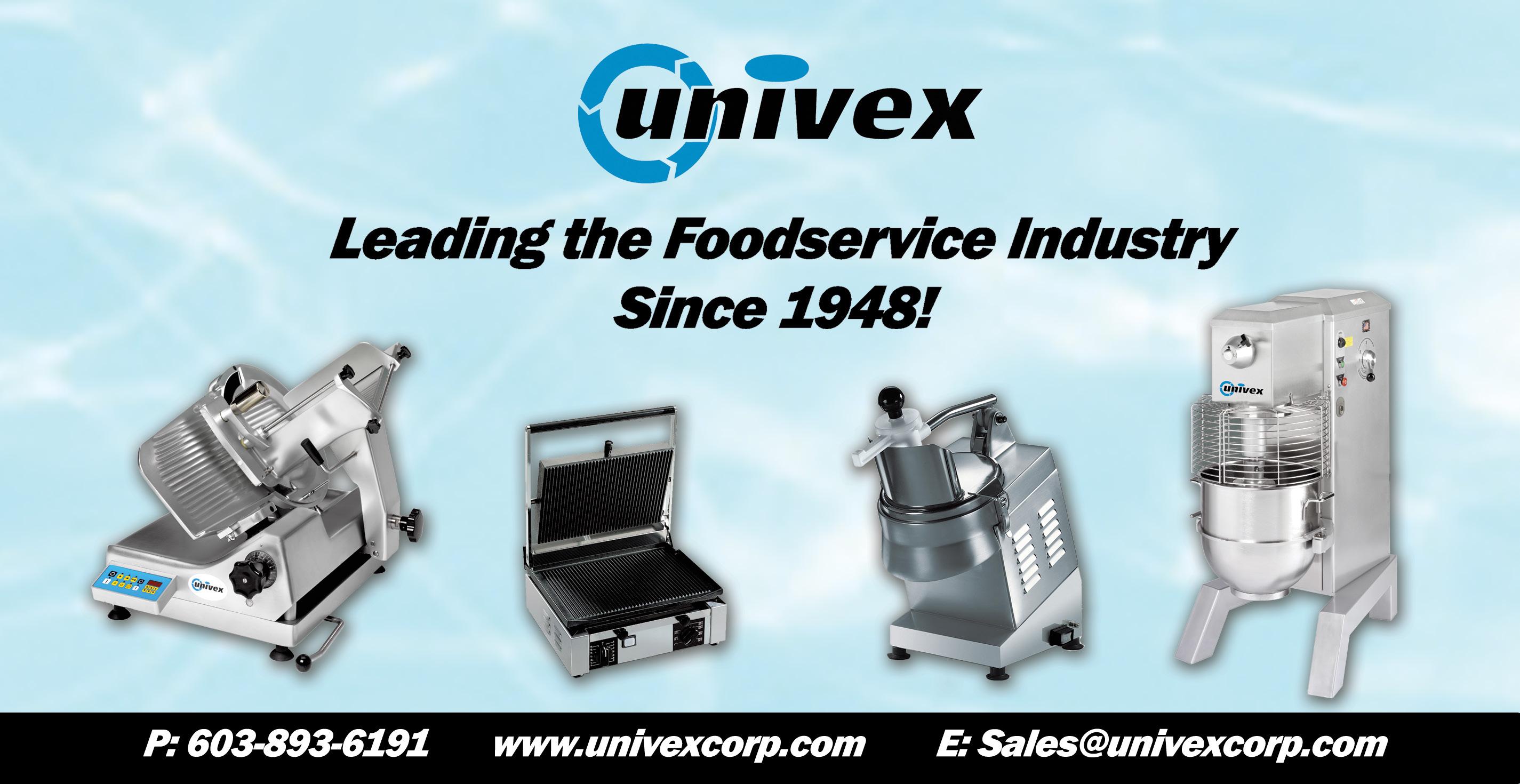
And they’re incredibly healthy. Shiitake mushrooms are the most common ingredient in traditional Chinese medicine and for good reason – they’re high in fiber, iron, vitamin D (when exposed to sunlight which our mushrooms are), vitamin B12 and they have a higher protein-to-calorie ratio than beef. They’re also incredibly efficient to grow using very little land (1,000 times less land per calorie than beef) or water and their carbon emissions are low. These efficiencies make mushrooms cheap to grow at scale.
There are other fungi-based meat alternative brands that ferment mycelium to make their meat alternative products. Mycelium is the body of fungi which has the appearance of thin, white fibrous roots. In nature, mycelium grows through the soil or wood. Mushrooms are then the fruiting body of the fungi which are what we’re used to seeing and eating as humans. The brands that use mycelium ferment the mycelium in liquid in large stainless steel tanks and turn the mycelium into their products. We love what the mycelium-based companies are doing and we cheer them on, but at Fable we use agriculturally grown shiitake and agaricus mushrooms. We’re using the fruiting body of the fungi as opposed to the mycelium. Humans have eaten mushrooms for tens of thousands of years and we’ve farmed them for thousands of years. They’ve evolved to be highly nutritious and delicious because the fungi want us to eat them to help spread their spores. We take these delicious, healthy mushrooms and turn them into delicious, natural umami-rich culinary proteins.
Please simply state your mission. Our mission is to help end industrial animal agriculture globally. We want to inspire the world to make more sustainable food choices. We truly believe that eating more delicious food made from mushrooms will help the world reduce global meat consumption. We’re really excited about exploring different mushroom varieties and harnessing their power to bring more of our delicious, clean label, and sustainable mushroom products to every market in the world.
You are the co-founder of Fable Food with Jim Fuller. Do you both have specific responsibilities? How do you work together to meet your mission?
My co-founder, Jim Fuller, is a fine dining chef turned chemical engineer and mycologist. Combining his unique knowledge of mushrooms, chemical engineering, nutritional science with his expertise as a chef and a mushroom farmer, Jim heads up research and development at Fable. We’ve invested heavily into our R&D, including exploring new species of mushrooms we can turn into delicious food, new ways of cooking mushrooms to amplify their umami flavors and texture and make their incredible nutrition even more bioavailable to us. Like a scientist in his lab or cook in his kitchen, Jim looks after that side of the business.
Together with our Fable team, I look after the customer and business side of things. I work closely with our restaurant and supermarket customers as well as the end consumers of our product to understand what they’re looking for and how we can best meet their needs with our products. Our team and I then work with our fantastic farming and production partners to produce our products, deliver them to where they’re needed so our customers can eat delicious, healthy shiitake mushrooms in lots of amazing restaurants and at home.
What prompted your decision to move to New York with your family from Australia? What do you hope to accomplish with your move?
My family and I are moving to New York City to help bring our delicious shiitake mushrooms to more U.S. customers. This is take two for me personally. In 2015 my wife and I moved from Sydney to Los Angeles together with 23 team members as we took Shoes of Prey to the US market. We had an incredible partnership with Nordstrom and grew our sales in the U.S., but ultimately our consumer insights were wrong, the mass market consumer didn’t want to design her own shoes. We ended up closing the business in 2019. It was a humbling experience,
and I learned a lot.
So here we are five years later. In some ways, food is simpler - taste, price and health are the three key drivers for consumers for our product. That said, we have the challenge of our shiitake mushroom products being new to consumers. They love it when they taste it and repeat order rates are great, so we’ve invested heavily in consumer insights to understand what drives trial of our product in restaurants - and our learnings work.
We’ve had an incredible 2024 so far in Australia. We’ve launched into Zeus Street Greek, re-launched into Guzman y Gomez Mexican Kitchen and grown with our amazing existing customers including chains like THISBOWL FISHBOWL, BrewDog, Sushi Izu, Fonda Mexican, caterers like Compass Group, meal kit creators Marley Spoon as well as incredible independent restaurants like La Tortilleria, Bad Hombres, Tacos Muchachos, La Bodega Taqueria, Vandal Taqueria, Calle Rey, El Loco, Nativo, Mission District, and so many more.
You may have noticed many Mexican restaurants in that list. It’s a cuisine that our Pulled Shiitake product suits incredibly well and there are over 80,000 Mexican restaurants in the United States making up ~10% of all US restaurants. This opens up a huge opportunity to bring shiitake mushrooms to more US consumers.
Our US team is off to an amazing start partnering with PLANTA Restaurants, Just Salad, Mendocino Farms, CookUnity, Purple Carrot, Compass Group USA, Moxies, JuiceLand and many more.
So the time is right. I am very excited to join them to connect with more US chefs and restaurants. It’s going to be a massive change for our family. From our beautiful 41 acre property with fruit trees and our big veggie garden to the beating heart of New York City!
What benefits would chefs gain by using Fable Food products?
Our first two products in the market are our Meaty Mushroom Burger Patty and our Pulled Shiitake Mushrooms, which have the taste and texture of succulent slow-braised pulled meat. Our pulled product seamlessly fits into
any dish where you’d traditionally use meat or mushrooms. It’s particularly exceptional in Mexican cuisine, perfect for dishes like carnitas, but it also shines in a variety of other global cuisines. Whether it’s beef brisket burgers, braised meat curries, stir-fries, or Italian classics like ragu, bolognese, and lasagna, our Pulled Shiitake Mushrooms can be used as a protein across all these dishes.
Beyond culinary versatility, our products offer significant operational advantages. With a 100% yield and zero waste, our products are a cost-effective solution that reduces labor and prep time in the kitchen. Unlike other vegetables where you might need to trim or peel, our mushrooms come ready to use, allowing chefs to focus on creativity and flavor without the added time and waste. In an environment where efficiency is key, our products provide a practical, delicious, and sustainable option for chefs.
Fable is more than just an ingredientit’s a culinary innovation that redefines the art of cooking with mushroombased proteins. Our focus on culinary creativity, combined with our commitment to sustainability and natural ingredients, positions us in a unique segment that goes beyond being a mere alternative. It’s in a category of its own – it’s simply mushrooms, but better.
In the United States, Fable is currently available through a robust distribution network with a strong presence on both the West and East Coasts. We’ve partnered with national distributors such as Sysco and US Foods, ensuring our products are accessible to a wide range of QSRs, chains and independent restaurants. We also work with regional distributors like Baldor, What Chefs Want, and Wasatch Gourmet, among others. As we continue to grow, we are excited to expand our partnerships, making our flavorful shiitake mushroom products available to even more chefs across the country.
For more information, visit https:// fablefood.co/
dining experience.
Blatstein, a visionary entrepreneur with a remarkable track record, is bringing his extensive expertise to his new venture, Vizz. With over three decades of experience in the hospitality and entertainment industries, Blatstein has consistently demonstrated a keen eye for innovation and a deep understanding of consumer experiences. As the founder and former CEO of OTG, a pioneering company that revolutionized airport dining, Blatstein redefined the travel experience by integrating technology, highquality food, and a unique ambiance into airport terminals across the United States. Under his leadership, OTG grew into a dominant player in the industry, operating over 350 restaurants and retail locations in major airports, while garnering numerous awards for its groundbreaking approach.
Blatstein’s knack for identifying emerging trends and seamlessly blending them into his ventures has made him a formidable force in the
industry. His ability to create environments that resonate with customers, combined with his focus on operational efficiency, has led to significant success in each of his endeavors. At Vizz, Blatstein is set to push the boundaries of hospitality and technology even further, creating experiences that are not only memorable but also fundamentally transformative. Vizz aims to blend cutting-edge technology with immersive environments, continuing Blatstein’s legacy of innovation and customer-centric design.
The restaurant’s staff has been meticulously trained to provide the highest level of service, ensuring that every guest feels welcomed and wellcared for. “Our team is our greatest asset,” Blatstein remarked. “They are the ones who bring our vision to life every day.”
The opening of Grand Brasserie marks a significant milestone for the Vizz Group and for New York City’s dining scene. As the restaurant settles into its new home, there is a sense
of excitement about what the future holds. “We’re just getting started,” Blatstein added. Grand Brasserie is not just a restaurant; it’s an experience, and we’re thrilled to share it with the world.”
David Rockwell and his team at the Rockwell Group bring a prestigious and diverse design portfolio to the Grand Central project under Rick Blatstein’s leadership. Known for their ability to craft spaces that are both visually stunning and deeply functional, the Rockwell Group has a storied history of designing some of the most iconic restaurants and hospitality spaces in the world. Their work spans a variety of styles and concepts, from the vibrant, theatrical environments of Nobu restaurants to the luxurious and intimate settings of the W Hotels. Rockwell’s designs are characterized by a deep understanding of how space influences experience, often incorporating elements that evoke emotion and create a sense of place. For the Grand Central project, Rock-
well and his team are expected to deliver a dining experience that not only complements the historic grandeur of the terminal but also introduces a modern sensibility that appeals to today’s urban diners. Their approach typically includes the use of rich materials, innovative lighting, and a layout that fosters both social interaction and personal comfort. With this project, the Rockwell Group is set to once again redefine what a restaurant space can be, blending history and innovation to create an iconic destination within one of New York City’s most famous landmarks.
In a city that is constantly evolving, the massive new 16,000 square foot eatery in Grand Central Terminal’s Vanderbilt Hall, replacing City Winery. stands as a testament to the enduring appeal of quality, creativity, and tradition. With its prime location, exceptional menu, and commitment to excellence, with a goal of becoming a beloved fixture in the heart of New York City.
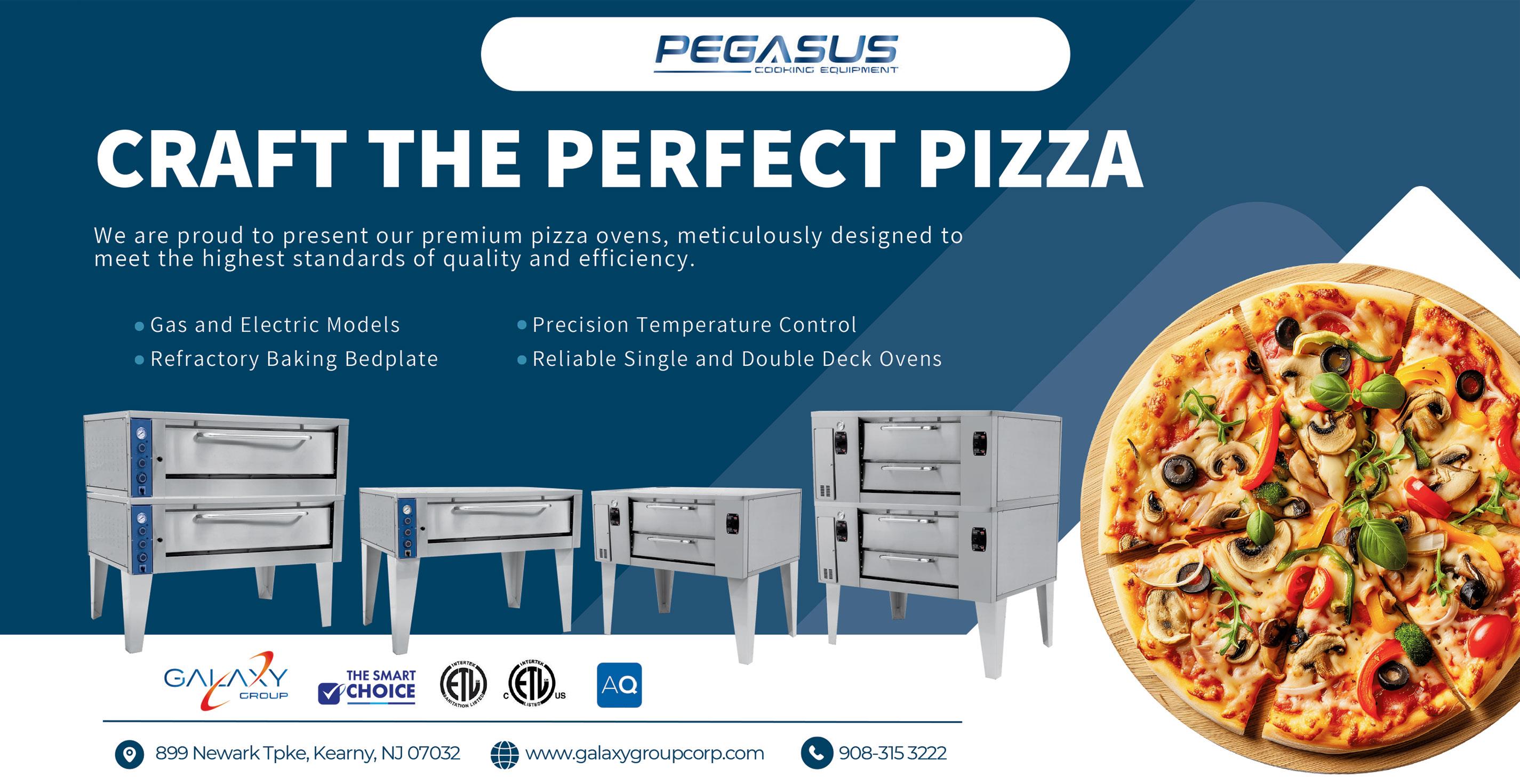
marries a casual open door Jewish tradition of gathering of good friends, family and perfect strangers for a delicious Friday night meal structured after classic Wisconsin supper clubs. Every meal begins with a relish tray, and it has been going well. He notes, “We conceived the program because we initially were open for nighttime and wanted to get back into it with a splash. The main goal of the program was to bring back private events to the space in a serious way. We always felt it was an incredible space for private events. But because people think of it as a daytime spot it is seldom folks reach out to do an evening event there. We decided if we put some new paint, new lights, and built up the bar program at night we thought we could attract more people to the space, and they’d start to think of Gertie after dark.”
Andrew Elder, Beverage and Service Director of Jont, the Michelin-starred concept on 14th Street in Washington, DC, that shares space with its sister spot, Bresca, spends a lot of time thinking about the ebb and flow of business in
relation to the demands of the city’s visitors, permanent and semi-permanent residents who inhabit this government company town. He remarks, “We certainly feel an increase in diners during months with increased local tourism, specifically late spring and early summer. However, this does come with a decrease in reservations during the ‘off season’ in late winter and late summer; where we notice that local guests are traveling out of town coincides with generally low tourism during this time, and we also are impacted by the schedule adjustment of ‘back to school’ time and Congressional recess (both usually occurring in mid to late August).”
Elder and his team have the experience to anticipate and address these ups and downs in guest head count and notes, “In general, we are constantly seeing a wave of change throughout the year within our two very different concepts, however we have developed certain tools and ideas that allow us to make rather unideal situations profitable and promotable, while also maintaining our
brand and overall image. Since both concepts operate in rather contrasting facets, we adjust operations for each concept differently as well. At Bresca, staffing is much more fluid, and volume based, where during the busier weekend and holiday times we ensure to ‘bulk out’ the team and enlist all hands-on deck to guarantee a smooth service. Yet, on the slower shoulder days (Wed, Thurs, Sun) we can rotate the staff to allow for a leaner team during service. Regarding operating hours, as a Michelin Starred concept, we can maintain consistent hours throughout the year, with an exception being made for certain holidays known for earlier dinner times and more leisurely dining - Mother’s Day, Easter, Labor Day Weekend, etc.”
Over in Dupont Circle, Farid Azouri, Co-founder of Residents Café & Bar sees a similar impact on his bar business. It’s no wonder in a city that houses nineteen colleges and universities, not to mention Congress and serves as the flagship home for most foreign embassies. He shares, “Seasonality in DC is very acute.
The summer is a very slow season for us; universities are off, Congress is out, embassy staff are off traveling. We definitely feel a dip in the summer and the impact it has on us and the bar. On the other hand, there are big events like when the cherry blossoms are in bloom, or international events like the World Bank annual meeting which brings lots of delegations into DC, the hotels are packed, and people are looking for happy hour places and establishments in which they can gather after the meetings.”
Residents’ Director of Operations, Jon Arroyo, offers some advice for navigating it successfully and provide staff with enough hours so they can live comfortably, “The easiest way that we handle it is that we have the luxury of looking at previous years’ sales. So, take a look at the previous year’s work and then try and add 10% more. And accommodate accordingly [in terms of projections] when you ask yourself what can we do this year? For example, last time this year this week we did 600 espresso martinis. I asked myself, ‘what can we do this year?’
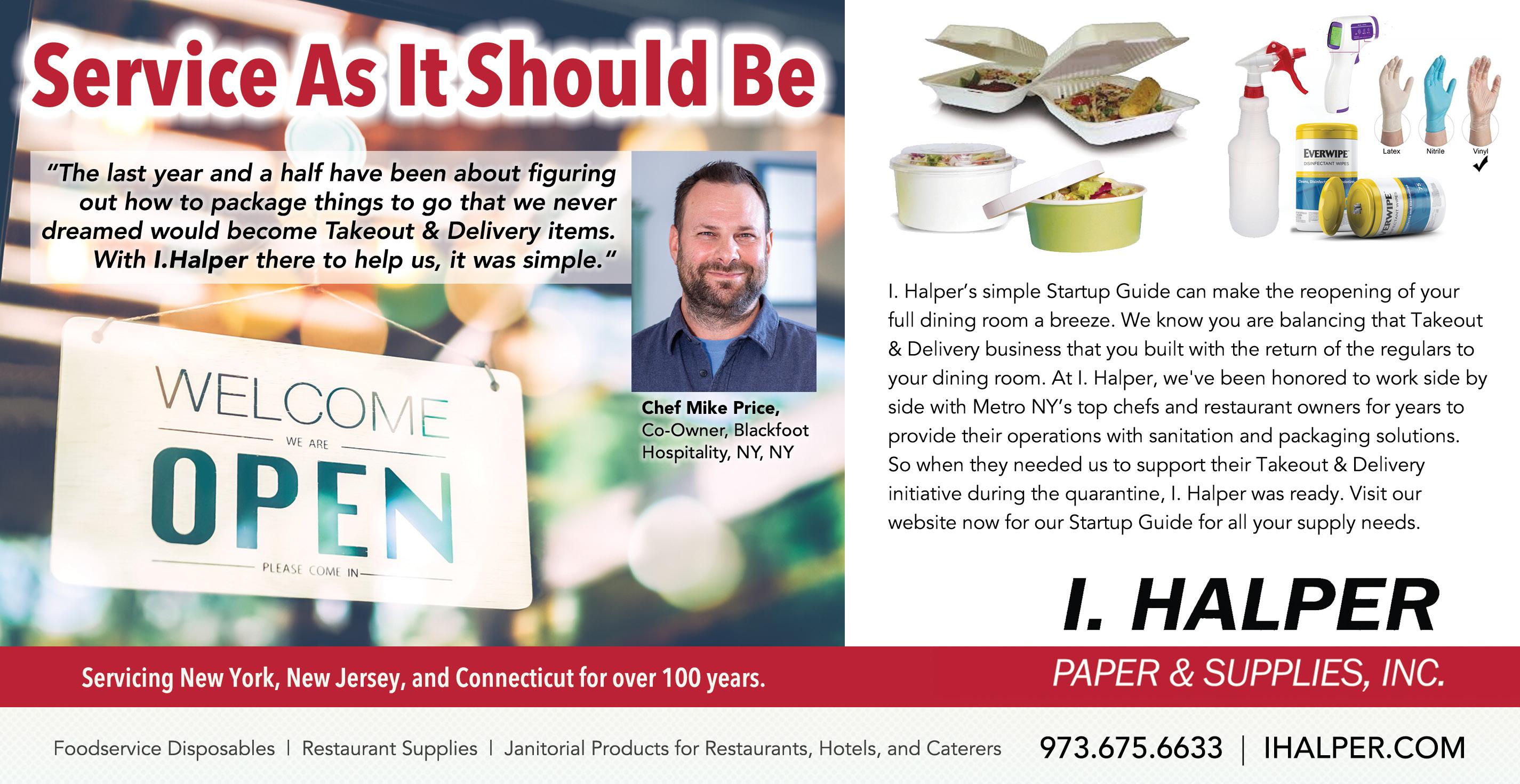
Well, this year we added a shake mixer. It took our ability to make 70 martinis into 170 martinis, and our drink ticket time got cut down by 70% by one piece of equipment.”
Lest you fear that robots on the back bar might replace the welcoming bartender, not to worry. People are the number one priority that Azouri has every day as he checks the weather report since 70% of his seating is outside. He concludes, we always monitor the weather for our team, so we know how to staff because when it is too hot or too cold, we have less traffic.”
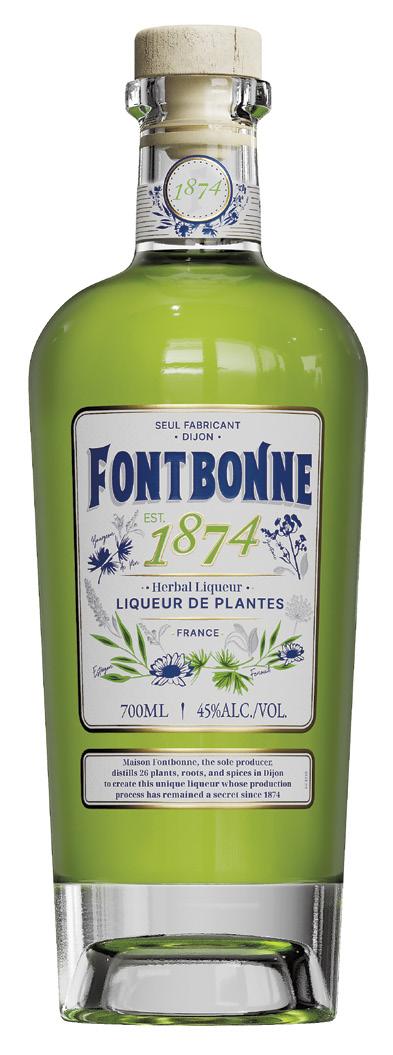
For all those bartenders around the
country hoarding their yellow and green herbal liqueur, fearful of running out and not being able to get more because the monks aren’t making as much as they used to…rejoice! Fontbonne Herbal Liqueur is here. Or, should we say, it is back. 150 years after it was first created. And then forgotten in the house’s books during the sale of the company in 1909. This historic French herbal liqueur with roots tracing back to 18thcentury France is produced in Dijon, France and makes its debut in the US, this summer. Look for the herbaceous spirit’s pale green color that reflects the 26 herbs, plants, and spices that go into it. And start making those classic cocktails again with abandon. There’s plenty to go around.
from page 4
they come to the stadium a lot, and we are making sure we represent the Valley.”
This focus on local vendors not only satisfies fans’ cravings for regional favorites but also supports the local economy, creating a win-win situation for both the community and the team.
Beyond taste and variety, the way food is delivered in stadiums is also evolving. Many NFL teams are now offering in-seat delivery, allowing fans to order their favorite dishes without missing a minute of the action. This convenience is part of a broader strategy to enhance the overall fan experience, making game days more enjoyable and less of a logistical challenge.
In-seat delivery is a game-changer, particularly in large venues where long lines at concession stands can detract from the enjoyment of the event. As Wasai noted, “The introduction of in-seat delivery at AT&T Stadium is a part of our commitment to improving the fan experience. It’s about giving our fans the best possible time from the moment they walk through the gates until the final whistle.”
The shift towards more sophisticated and varied food offerings in NFL stadiums is part of a larger trend in sports venues around the world. As competition for fans’ entertainment dollars increases, stadiums are looking for ways to differentiate themselves and create memorable experiences. Food is a powerful tool in this endeavor, offering a way to connect with fans on a sensory level and create lasting memories.
Moreover, the emphasis on local food vendors and healthier options reflects broader societal trends. Fans are increasingly conscious of what they eat, even when indulging at a sporting event. By offering healthier, locally sourced, and even vegan options, NFL stadiums are catering to these changing tastes.
The evolution of food in NFL stadiums is about more than satisfying hunger. It’s about enhancing the fan experience, representing local culture, and staying ahead in a competitive entertainment landscape. As fans flock to NFL stadiums this season, they can expect not just thrilling play but also a culinary journey that adds a new dimension to game day.

larly important. Plant-based options can easily become confusing; it technically does not mean meat-free, though it’s easy to see how a consumer could come to that conclusion. Consumers should be able to easily determine if a dish meets vegetarian or vegan definitions, including sides, sauces, or accoutrement included with the entree.
Foods are considered nutrient-dense or nutrient-rich when they contain a high concentration of essential nutrients relative to their calorie content. There is a Nutrient Rich Food (NRF) Index that formally scores foods based on their nutrient content, but generally nutrientrich foods include a wide range of foods that contain vitamins, minerals, healthy fats, complex carbs, lean protein. Adding more nutrient-rich foods to the average diet is particularly important because the US Department of Agriculture (USDA) says adults in America often do not get enough potassium, fiber, magnesium, or vitamins A, C, and E.

etables and lean protein. Salads can make cheese and bacon the stars of the show, or vegetables, fruits, seeds, and legumes can be combined for a nutrient-packed entree. Those healthy options can be sought after by all consumers, not just health-conscious ones.
Of course, the average consumer is unlikely to be familiar with the NRF Index scores of their dietary choices and many may not even be aware of their specific vitamin or mineral deficiencies. Yet most consumers understand they need more fruit and vegetable variety in their diets, and there is now a broader understanding that food is healthier the less processed it is. When restaurants add variety to the menu, they give consumers the power to choose healthier options for themselves while also making those healthy options more appealing. Restaurants don’t need to redo their menu from scratch. Soups and salads are two examples of dishes that can include a variety of nutrient-rich ingredients - or not. Soup can be full of sodium and saturated fats, or filled with veg-
Health means different things to different people. Some patrons are worried about their weight or heart health, while others have life threatening allergies that make avoiding certain ingredients absolutely essential. For this reason, transparency in ingredients is more than a trend. It allows customers to order confidently and enjoy their meal without the stress of not knowing if they will need to cancel their postdinner plans or seek medical attention. There’s a wide spectrum of dietary preferences and needs. Even among medical needs, there are distinctions between intolerances and severe allergies. Medications, like insulin or lactose pills, can make certain foods more tolerable to people with medical conditions, but restaurants must be transparent so consumers can make educated choices and dose appropriately.
In addition to labeling ingredients, some restaurants denote entrees with symbols indicating what dishes are gluten-free or vegan. Consistency is key - restaurants cannot forget to label their seasonal menu or daily specials. That could cause confusion that detracts from rather than earns consumer trust.
RFID and blockchain technology enable restaurants to track their ingredients better. RFIDs help restaurants with inventory management and can also be used for nutritional information, food origin, and more. Likewise, blockchain technology makes tracking the supply chain and authenticating claims possible.
Websites, apps, and QR codes make it easier than ever to provide additional information to patrons who want it. Where menus may only accommodate a short description and major allergen information, more complete information can be made available for consumers who need it.
Many people use apps to track their food consumption. Consumers can look up what they ate or are considering eating to see “points” or macronutrient information. Many of these apps
even show popular restaurant dishes, making it easier for consumers to stick with their lifestyle choices.
While consumers want healthy options and ingredient transparency, they come to restaurants for delicious food, and they choose their restaurants based on the experience and ambiance they can expect there. Adapting to these trends should not come at the expense of flavor or the restaurant’s cooking style. Menu changes towards health conscious options should make a restaurant more inclusive, allowing consumers with all types of dietary needs the opportunity to have an enjoyable experience in your establishment and not be relegated to ordering the worst option on the menu or making do with sides for a meal. By incorporating transparency and healthier options, everyone benefits - those who need their dietary restrictions accounted for and the average consumer looking to improve their diet incrementally. It is a good business practice to stay informed of consumer trends, but health promotion and transparency in ingredients is more than a trend; it helps keep communities healthy and informed. Since it also coincides with consumer trends, there are seemingly no downsides to offering healthy options and being transparent about it. It fosters brand loyalty and trust, makes restaurants accessible to a wider audience, and is good for consumers.
Joy Pouros works as the authority writer in the Training department at Culinary Software Services, where she writes on topics as diverse as human resource issues to increasing profits. Joy entered the industry working as a Nutritional Aide in the Chicagoland area before moving into writing and consulting. Joy now specializes in marketing and public relations and writes for a variety of industries.
ing with a one-page menu, people’s eyes tend to move in an “F” format. They start at the top and scan line by line down the page. If you have a two-paneled menu, chances are people will start at the top left, move right, and then diagonally back down to the left in a “Z” formation because we naturally read books from left to right. If you have a trifold or a three-panel menu, people’s attention will be drawn to the middle section because it’s likely the first thing they see. If your menu has more than three panels, the science is less exact because people become unpredictable when presented with more information. But, you can generally still count on them looking at the top of the page first and skimming through to the bottom.
Your customers’ eyes will naturally be drawn to open spaces. You can use this to your advantage by placing your highest profit-margin items in their own space, away from the hustle and bustle of the rest of the descriptions. So, for the love of all that is good in this world, don’t overcrowd your menus. If you’re
cramping to fit everything on your current menu, consider cutting items or adding another page.
Put an expensive item first to make your other prices look more reasonable. Any marketing agency worth its weight in salt will tell you about “price anchoring.” That’s when a business creates three different payment options: cheap, middle, and expensive. Their expensive option will be a higher price in order to make the middle option (which may still be expensive in its own right) seem a lot more affordable and reasonable. You can do the same thing with your menus. By highlighting or listing your most expensive dish first, the rest of the dishes in that section will seem more reasonable. You can achieve this by listing your most expensive item in a particular section first or by placing your most expensive section first to make the other sections of your menu seem more affordable.
When in doubt, just sit back and take
a glance at your menu. If it’s awkward or difficult for you to read, it’s 10x more challenging for an unsuspecting potential customer.
There is no specific formula you can plug in to create a scientifically perfect menu. It’s a designer’s job to marry the concept of simplicity with the goal of building an experience for your customers. Information should have a clear hierarchy and organization, but it should also be memorable and unique to create return customers. At the end of the day, nobody knows your restaurant like you do, so you need to use your own judgment. Or hire our professional art team to do it for you.
Cleveland Menu has been serving the hospitality industry since 1930, specializing in the design and production of high quality menus. We do everything from print menus to menu covers, boards, and check presenters. Our professional in-house art team works with clients to make sure their brand comes across effortlessly on all of their menu items. Our

new ecommerce store enables you to effortlessly get your menus on our printed durapoly material. Because we are less hands on with this website, we want to provide an article sharing our knowledge of menu design with you. Even if you aren’t using our art department, it is important to us that you get the most out of your menus! Learn more at clevelandmenu.com
1 Bylinskii, Z., Sheppard, S., & Beier, S. (2021, October 25). Dr. Sofie Beier – Bringing Together Science and Typography. Readability Matters. Retrieved August 26, 2024, from https://readabilitymatters.org/articles/ dr-sofie-beier-bringing-together-science-andtypography
2 Larson, K., Yeatman, J. D., Donnelly, P. M., & Matskewich, T. (2008). Annotating digital text with phonemic cues to support decoding in struggling readers. PLOS ONE, 1(1), 18. https://www.researchgate.net/publication/347420968_Annotating_digital_text_ with_phonemic_cues_to_support_decoding_ in_struggling_readers
3 Soegaard, M. (2021, January 1). Visual Hierarchy: Organizing content to follow natural eye movement patterns. Interaction Design Foundation - IxDF.
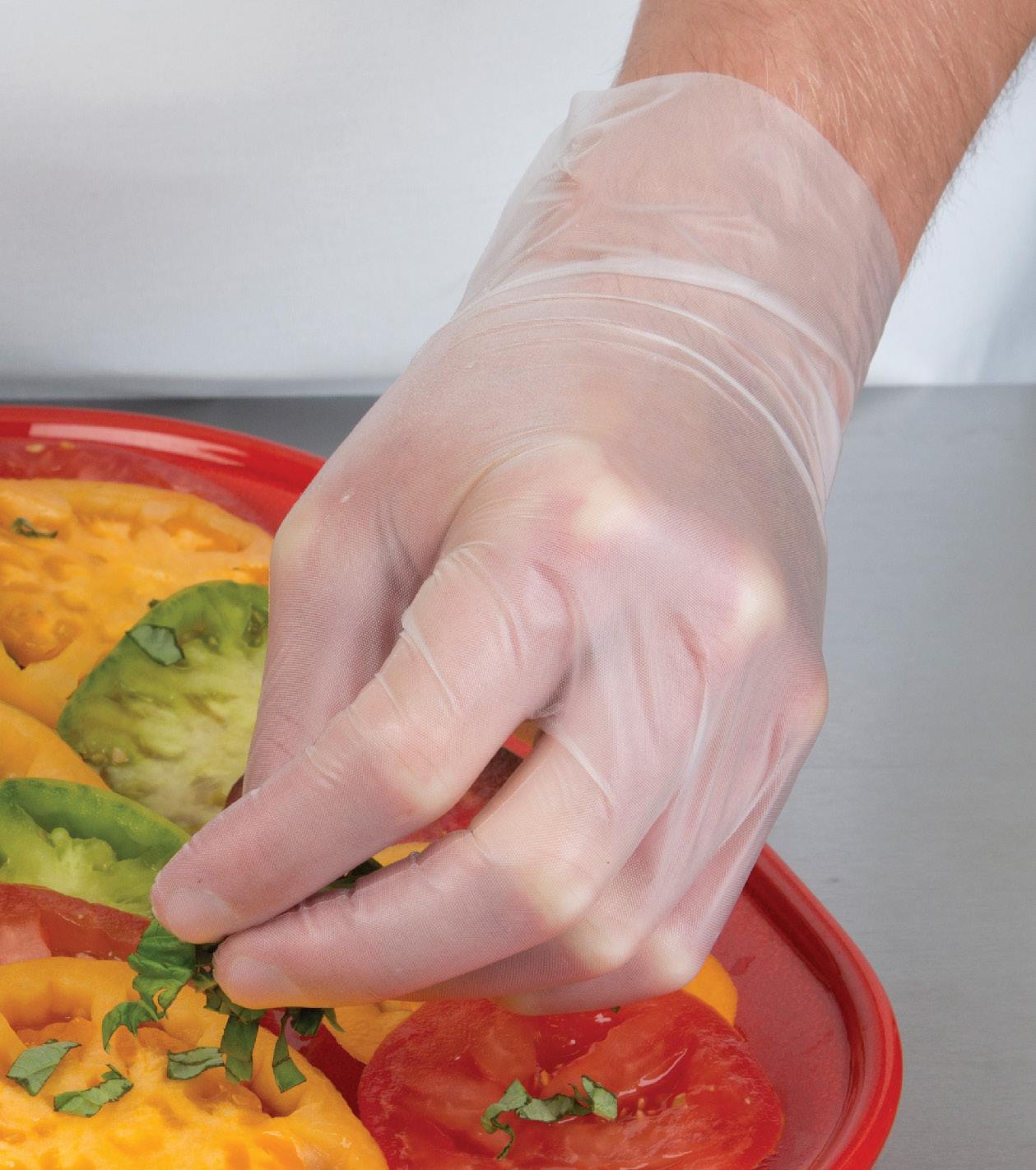
and food safety regulations is non-negotiable in the bakery business. Bakery entrepreneurs must stay abreast of local health codes, sanitation requirements, and labeling regulations to ensure compliance and uphold public health standards. Implementing stringent food safety protocols, conducting regular inspections, and investing in staff training mitigate the risk of contamination and uphold the bakery’s reputation for quality and integrity.
Determining optimal pricing strategies and profit margins is a delicate balancing act for bakery entrepreneurs. Factors such as ingredient costs, overhead expenses, and market demand influence pricing decisions. Bakery owners must conduct thorough cost analysis, monitor industry trends, and benchmark against competitors to set competitive prices while maintaining healthy profit margins. Implementing strategic pricing promotions, bundling offerings, and upselling premium products can enhance profitability without compromising value.
Effective inventory management is essential for minimizing waste and optimizing resource utilization in a bakery business. Bakery entrepreneurs must maintain accurate inventory records, monitor stock levels, and implement FIFO (first in, first out) inventory rotation to minimize spoilage and reduce waste. Leveraging technology such as inventory management software and implementing portion control measures streamline inventory tracking and reduce overhead costs.
Building a skilled and motivated team is key to delivering exceptional products and services in a bakery setting. Bakery entrepreneurs must attract top talent by offering competitive wages, fostering a positive work environment, and providing opportunities for professional development. Investing in comprehensive training programs, cross-training staff for versatility, and fostering a culture of
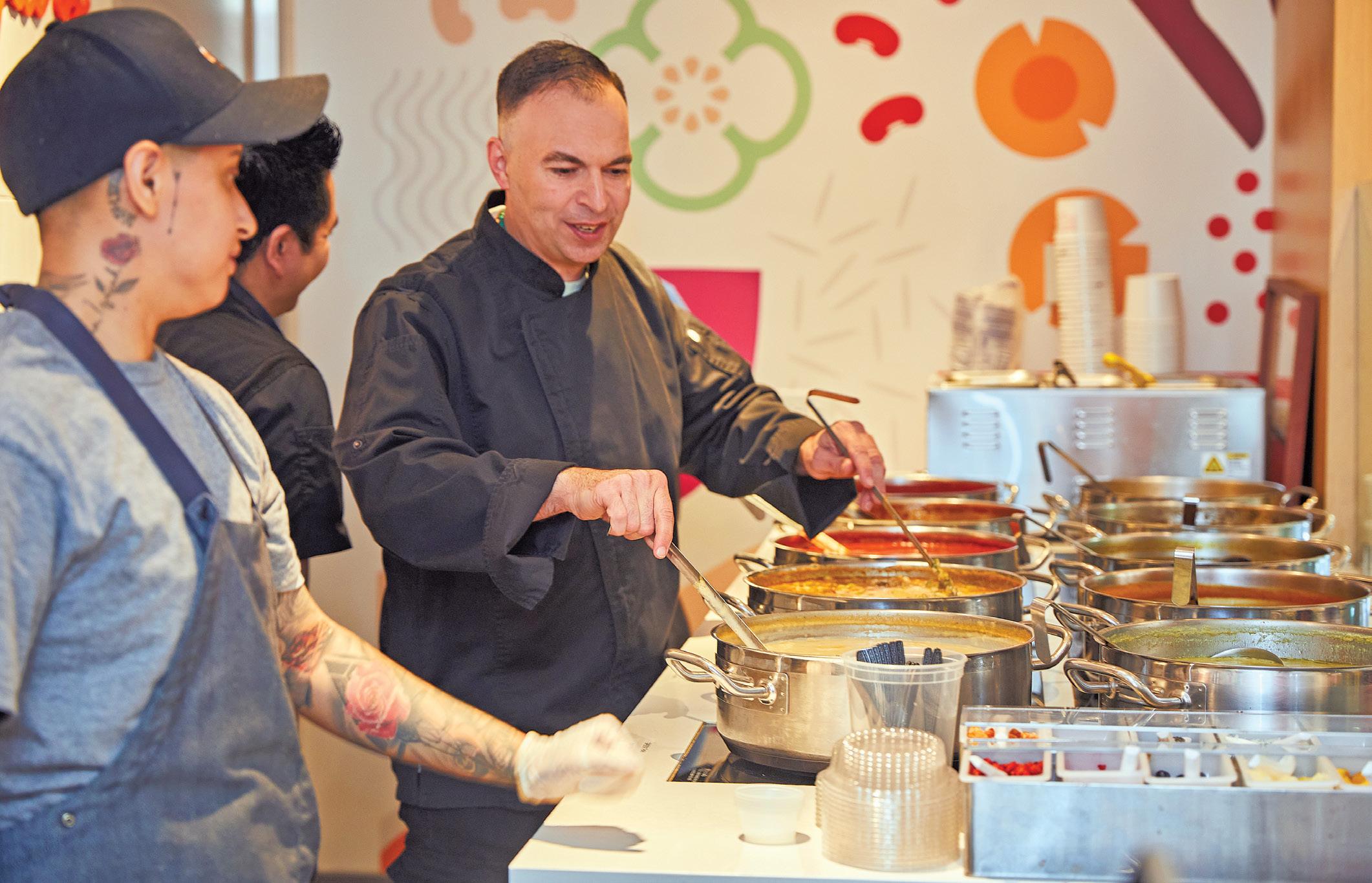
teamwork and collaboration cultivates a motivated workforce committed to excellence.
The bakery industry is constantly evolving, driven by shifting consumer preferences and emerging market trends. Bakery entrepreneurs must stay attuned to evolving consumer tastes, dietary preferences, and culinary trends to remain competitive. Monitoring industry publications, attending trade shows, and soliciting customer feedback facilitate insights into emerging trends and inform product innovation and menu diversification strategies.
Sound financial management is critical for the long-term viability of a bakery business. Bakery entrepreneurs must develop realistic budgets, monitor cash flow, and track financial performance to ensure profitability and sustainability. Implementing robust accounting
systems, seeking professional financial advice, and exercising prudent expense management practices mitigate financial risks and position the bakery for long-term growth and success.
12. Online Presence and E-Commerce Integration:
In an increasingly digital landscape, establishing a strong online presence and embracing e-commerce platforms are essential for reaching a broader audience and driving sales growth. Bakery entrepreneurs must invest in userfriendly websites, implement secure payment gateways, and optimize their online presence for search engine visibility. Leveraging social media platforms, offering online ordering and delivery services, and engaging in email marketing campaigns expand the bakery’s reach and facilitate customer convenience.
13. Sustainability and Environmental Responsibility:
Embracing sustainable practices and environmental responsibility is integral
to the ethos of modern bakery entrepreneurship. Bakery owners must minimize waste, reduce carbon footprint, and source eco-friendly packaging materials to minimize environmental impact. Implementing energy-efficient equipment, partnering with local suppliers, and supporting community sustainability initiatives demonstrate a commitment to environmental stewardship and resonate with environmentally conscious consumers.
The bakery industry presents myriad challenges and opportunities for aspiring entrepreneurs. By acknowledging the thirteen fundamental challenges outlined in this guide and implementing proactive strategies to address them, bakery entrepreneurs can navigate the complexities of the industry and pave the path to sustainable success. With dedication, innovation, and a commitment to excellence, aspiring bakery owners can transform their passion for baking into a thriving and rewarding business venture.


At the heart of AutoFry’s success is its patented heat and time compensation technology known as SimpliFry. This advanced system automatically adjusts cooking parameters to ensure optimal frying conditions, regardless of food volume or type. SimpliFry technology guarantees that every batch of fried food is cooked to perfection, delivering consistent results with minimal human intervention.
To address the challenge of frying food items that tend to float, such as wontons and beignets, AutoFry developed the innovative Hold Down Unit. This accessory is designed to submerge floating food products, ensuring even cooking and eliminating the risk of undercooked portions. The Hold Down Unit exemplifies AutoFry’s commitment to enhancing the functionality and versatility of its automated frying systems.
The impact of AutoFry and similar
robotic kitchen equipment extends beyond efficiency and consistency. These innovations are transforming the foodservice industry in several key ways:
1. Expanding Culinary Creativity: With robots handling repetitive tasks, chefs have more time and energy to experiment with new recipes and techniques.
2. Improving Accessibility: Automated equipment makes it easier for smaller establishments and non-traditional foodservice venues to offer high-quality fried foods without the need for extensive kitchen modifications.
3. Enhancing Sustainability: Precision frying reduces waste by ensuring that oil and food are used efficiently, contributing to more sustainable kitchen practices.
As technology continues to advance, the role of robotics in the foodservice industry is set to grow even further. We can expect to see more sophisticated automated systems capable of handling a wider range of culinary tasks, from in-
from page 34
restaurant menus across the country.
Kurtz attributes the brand’s success to the versatility of hot honey. “Honey is already such a versatile sweetener, and when you add the heat, the possibilities become endless. The fact that it is becoming so popular on breakfast menus is a testament to the many ways it can be used.” he explained.
As breakfast menus continue to evolve, the popularity of swicy flavors shows no signs of slowing down. The success of Mike’s Hot Honey reflects
how consumers are increasingly looking for exciting and unconventional flavors in their everyday meals. From breakfast sandwiches to chicken and waffles, Mike’s Hot Honey is becoming a go-to ingredient for chefs seeking to add a new dimension to classic dishes.
Beyond its delicious product, Mike’s Hot Honey also offers extensive support to restaurant partners. The company
from page 98
The risk for many plans comes with the lack of evidence of process. A plan’s fiduciaries may properly select to include investment A in their plan investment lineup. But, if an action is brought on behalf of a participant class claiming the plan paid excessive fees by select-
ing investment A and the plan fiduciaries can’t substantiate why they selected investment A over investment B (e.g., through documentation such as committee minutes), a court is more likely to allow the suit to survive a motion to dismiss. Once ERISA litigation survives a
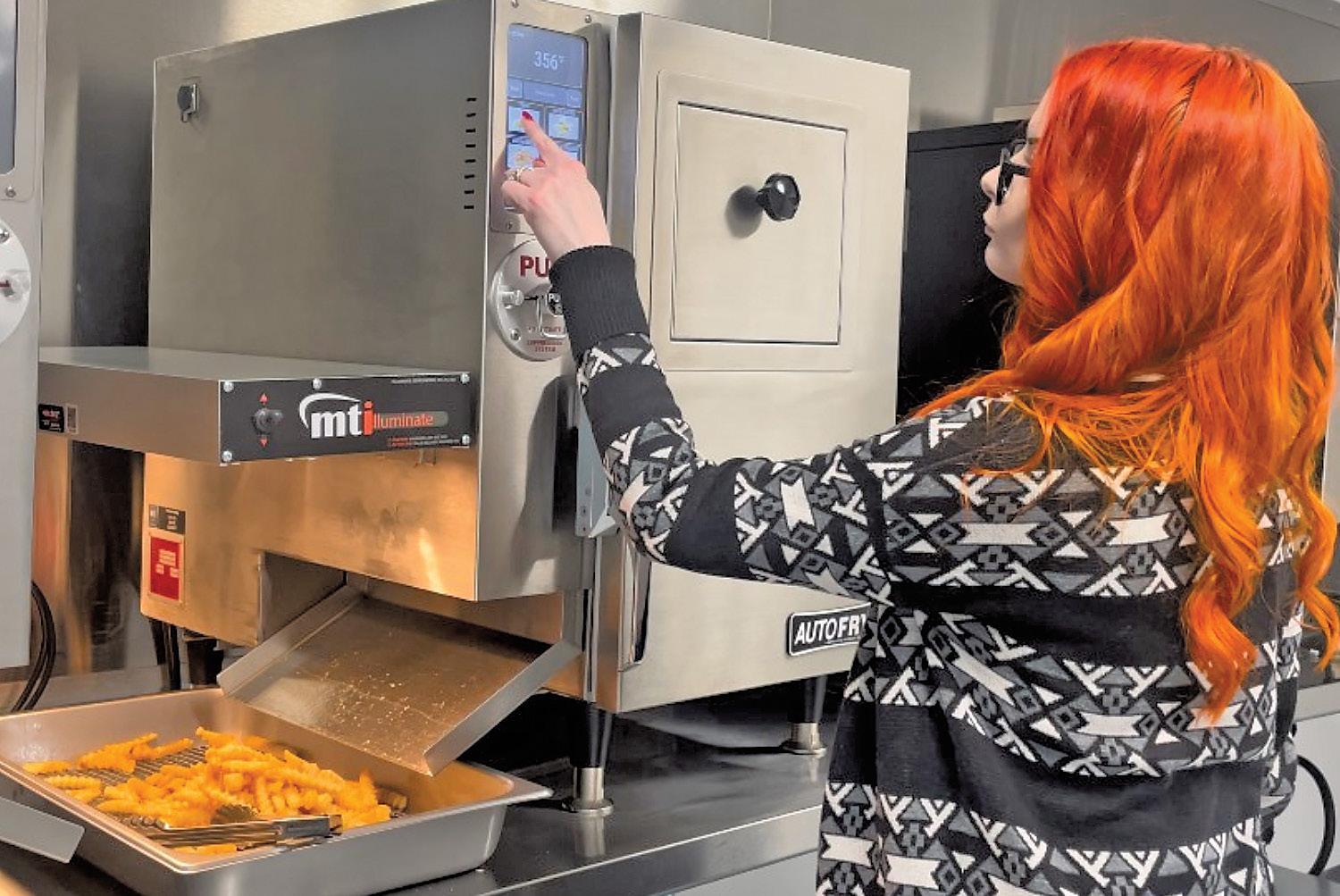
tricate food preparation to personalized cooking experiences.
AutoFry and other innovators are leading the way, demonstrating the immense potential of robotics to transform kitchens and elevate the dining experience. By embracing these technologies, the foodservice industry is not only meeting the challenges of today but also paving the way for a more efficient, creative, and sustainable future.
The rise of robotics in the foodservice industry is a game-changer, bringing unprecedented levels of precision, efficiency, and safety to kitchen operations. With pioneers like AutoFry at the forefront, the future of foodservice looks brighter than ever.
To learn more about how ventless kitchen equipment can benefit your business, visit mtiproducts.com today!
provides marketing materials, such as signage, bottle displays, and dip cup holders, to help businesses promote their hot honey-infused dishes. Additionally, the brand’s commitment to creative partnerships ensures that restaurants can effectively engage their customers and stand out in a competitive market.
As swicy flavors continue to captivate taste buds across the nation, it’s clear that Mike’s Hot Honey is here to stay. Whether drizzled on bacon or paired
with waffles, this sweet heat is turning breakfast into an exciting culinary adventure. The next time you’re out for breakfast, don’t be surprised if Mike’s Hot Honey is on the menu—it’s what’s for breakfast.
Mike’s Hot Honey is available through foodservice distributors nationwide. For more information visit https://mikeshothoney.com/pages/foodservice.
motion to dismiss, the cost of the litigation increases substantially because the plaintiffs will then be entitled to engage in obtrusive and expensive discovery.
As ERISA’s 50th anniversary approaches, it’s an opportune moment for employers to reflect on their compliance
practices. By taking stock of their current compliance and ensuring that fiduciary responsibilities are being met, employers can position themselves to minimize risk and continue delivering ERISAcompliant benefits to their employees for the next fifty years and beyond.
from page 66
Miller explained. “Our educational offerings truly set us apart.”
Food Export’s educational resources range from free webinars to custom market scans, all designed to equip U.S. companies with the knowledge and skills they need to succeed abroad. These resources cover a wide array of topics, including export regulations, market entry strategies, and best practices for international marketing. “Education is a cornerstone of our mission,” Miller added. “We guide suppliers and provide them with a roadmap to exporting success. Whether a company is just starting out or looking to expand into new markets, our educational programs are designed to meet their needs.”
Food Export’s commitment to delivering outstanding value remains stronger than ever as the organization continuously seeks to improve its programs and services. “Our dedication to providing suppliers with value that exceeds the price is unwavering,” Miller stated. “We are always looking for ways to enhance our offerings and ensure that U.S. companies have the best possible chance of succeeding in international markets.”
With the launch of the 2025 Program Year, Food Export-Midwest and Food Export-Northeast are poised to help U.S. food and agricultural companies take their products to new heights in the global marketplace. Through a combination of strategic events, anticipated expanded funding, and robust educational resources, Food Export is empowering U.S. companies to achieve exporting success.
U.S. companies interested in exporting their products can begin by exploring the extensive resources available on Food Export’s website. Whether through participating in a Focused Trade Mission, attending a Buyers Mission, or taking advantage of the educational resources, Food Export provides a comprehensive support system to help companies navigate the complexities of international trade.
To learn more about becoming a supplier or to register for upcoming 2025 events, visit foodexport.org or email info@foodexport.org.
peppers, zucchini, and eggplants, along with a mixture of rice, fresh herbs, and a heaping spoonful of tomato paste that enhanced all of the natural flavors; and, of course, there were Gigantes, braised giant beans made with tomato paste, fresh herbs, and olive oil.
Perhaps my favorite were Keftedakia (meatballs), which was the first dish I ever made on my own for my family (emulating my yiayia and aunts), which always included a spoonful of tomato paste along with grated tomatoes to keep them light and fluffy. All of these dishes
were incredibly soul-satisfying, which is why, no doubt, I continue to eat them to this day.
For me, tomatoes and tomato paste are not only essential ingredients in the kitchen, they are a quintessential component of my life! For my last meal, I would take the most delicious pieces of dark, crusty, wholegrain sourdough bread – on one piece, I would take a perfectly ripe tomato and slice it, sprinkle it
with sea salt from Messolonghi (the salt lakes near where I grew up), dress it in the finest olive oil, and top it with some feta cheese. The other piece of bread would be slathered in Kyknos tomato paste, drizzled with same olive oil, and sprinkled with that same salt.
Tomato paste is the ‘umami of [my] life’ because no matter the season, I can always find it. So, savor the end of this year’s tomato season, and then relish in tomato paste until next year…

from page 100
a little coconutty in nature. The 31% is more cocoa-based, darker in color and a little stronger flavor. And then we have the four darks, which includes the 55% cacao La Nuit Noire Semisweet Chocolate and the 64% cacao L’Etoile du Nord Chocolate. The 55 and 64, I would put them in the same camp because they share a similar flavor profile. So, they’re more kind of fudge brown cocoa based. The 64 is a little more complex. For me as a pastry chef I would lean to those more for baking and pastry application for creams and mousses etcetera,” he continued.
For the professionals who want to add a layer of sophistication or create another dimension of taste for the discerning palate, Wressell added that the line caters to this market with the 61% cacao Lever du Soleil Semisweet Choco-
from page 94
curve and continues to bring immense value to restaurant operators. They’re dedicated to the restaurant space and are poised to continue delivering innovative products, so we made the decision to partner with them,” Shinn detailed.
late and 72% cacao Coucher Du Soleil Bittersweet Chocolate. “The 61 and 72 are different flavors altogether,” he explained. “They are our most fluid dark chocolates. They work really well in machines for coating. They are balanced in acid, in fruit, and in cocoa and are very nicely blended. So, if you’re using the 61 for instance in a confectionary application where you’re using it as a coating, it does not interfere with the flavor you are trying to accentuate. The 72 is a stronger version of the 61. It’s got some more bitter notes but again it’s another champ. I like that chocolate for coating as well and I use that for other things but mostly for shell molding for a darker stronger flavor surround like coffee or a nut-based ganache.”
Not to be outdone are the tried-andtrue traditional formulations some of
which Wressell acknowledged are over a century old. “They’re a little different on the grind, viscosity, and blends. We have a tremendous following of these products with the American confectioners as well as the Americana bakers globally and these are lower priced than our couverture line.”
Wressell and his Guittard team continue to be committed to the education of the dessert professional. Wressell and chef Josh Johnson have created a series of how-to video demonstrations which may be accessed via the “fundamentals” link on their website.
“We understand the creativity of our customers. So, our goal is to provide a recipe for a product like mousse in which they can insert our Guittard ingredients into the product that they are making. It’s a painstaking process to go
through and dial in the right proportions of everything and I know that many chefs and pastry chefs do not have time to do a lot of R&D work, so what we’ve done is give them a head start by creating these fundamental sheets which they can just take and perfect their own creations,” Wressell concluded.
Guittard’s new couverture line is the perfect choice for professionals seeking the finest chocolate for their creations. Crafted with premium ingredients and meticulous attention to detail, these couvertures deliver exceptional flavor and workability, elevating any culinary masterpiece.
Available for wholesale purchase nationally through trusted distributors or directly at Guittard.com.
“Our ROCs are intimately familiar with the foodservice industry; in some cases, they’re former operators themselves. We also do our best to educate our sales reps and make sure they’re aware of CHECK Business and all of its solutions.”
“From our ROCs to our reps, US Foods
SpotOn and other premier partners of CHECK Business support and enhance the capabilities of US Foods’ Restaurant Operations Consultants, or ROCs: “The folks who go out into the industry, talk to operators about our services, and really function as the driving force behind CHECK Business Tools and its partners,” Stinn described.
from page 88
our four original soft serve flavors, and today, we’re doing twelve flavors total all thanks to Covid-19 which inspired the expansion,” Tsang said.
The shifts that came from the pandemic largely made what Soft Swerve is today. Each of their shops have at least 12 flavors total, including both hard and soft ice cream. They still offer takeout pints via GrubHub, and they’re still churning out distinguished flavors — frozen hot chocolate, Vietnamese coffee, Thai tea, and strawberry lychee are among them. Now, with the pandemic behind them, they’ve been able to expand the business in new ways, all while learning along the way.
Most recently, they’ve been working at outdoor street food markets and figuring out how to navigate that scene. “We’ve learned how to manage the temperature of our ice cream in 100-degree weather, what price points people like, what flavors to bring to the markets, and how to compete with neighboring businesses,” Tsang explained. “These are all things that are new to us that we learned in the past month alone, and it’s been a lot of fun being outside of a brick-and-mortar space.”
This growth has also been exaggerated since their storefront opened at downtown Brooklyn’s DeKalb Market Hall, a food marketplace with over 35 other lo-
builds a support team around the customer at all points. CHECK Business Tools – comprised of SpotOn and our other partners – is a key tool in the toolkit for our ROCs, our sellers, and our customers.”
US Foods’ care for its collaborators and spirit of innovation form the basis of Innovative Partnerships: a technology incubator program that helps emerging restaurant solutions develop, expand
their national customer base, and ultimately be considered as a CHECK Business Tools partner. Technology vendors can apply to participate in the incubator by visiting this link: https://checkbusinesstools.com/services/innovative.
Restaurant operators can explore US Foods’ full suite of tech solutions on the CHECK Business Tools webpage: https:// checkbusinesstools.com/.
cal vendors. This venture has been pivotal in the brand’s growth, the co-founders explained. “DeKalb has really pushed us to get creative with our menu to offer things that our customers will recognize but also play around with more western flavors and palates,” Tsang said. The ube sticky butter cake, for example, combines a more western ingredient with an Asian ingredient and is available exclusively at DeKalb. DeKalb has 19 flavor offerings, the most of any of Soft Swerve’s storefronts. Their creative additions, and their special flavors present at just one of their shops, are sure to further diversify the brand’s customer base — and keep regulars wanting more.
Beyond the ice cream, their growth has reached their design and aesthetic as well. This year, they’ve been investing into their storefronts, adding lights and signage to attract more business and getting their name on the map even more than it already is. In addition, they’re adding new menu items, from sundaes to milkshakes to floats.
Although they have an appetite for additional stores and expansion into wholesale, the Tsang & Liu duo remained focus on strengthening the base they have built. They remain hyper focused on Soft Swerve forging continued success amidst the crowded ice cream market.

handling and transport, further safeguarding the food’s freshness and presentation.
How does the new non-domed, flat lid design of the Safe-T-Chef line enhance its utility for different food applications?
The new non-domed, flat lid design of Safe-T-Chef enhances utility across various food applications by optimizing space and presentation. This innovation allows for efficient stacking, maximizing shelf space and creating attractive retail displays. The flat profile is ideal for foods that don’t need extra headspace, presenting a full, appealing look.
Beyond aesthetics, the design improves stability during transport, reducing the risk of spills or shifts. This makes it particularly suitable for delivery services and takeout options. The versatility of the flat lid expands Safe-T-Chef’s range of applications, offering a sleek, practical solution for modern food packaging needs.
What makes the Safe-T-Chef line particularly suited for hot food items compared to other packaging solutions?
Safe-T-Chef excels with hot food items with its innovative anti-fog technology, maintaining clarity even with steaming contents. Anti-fog comes standard with all the vented options. This allows consumers to see the contents clearly, enhancing its appeal. The secure seal helps lock in aromas, preserving food quality and freshness during transit.
Safe-T-Chef’s design addresses specific challenges of hot food packaging, ensuring meals arrive at their destination looking appetizing. Its leak-resistant properties help prevent spills during transport, while the patented tamper protection provides assurance that the food hasn’t been compromised. These qualities combine to elevate the overall consumer experience and set a new standard in the industry for hot food packaging solutions.
Can you explain how the leak-resistant features of Safe-T-Chef packaging benefit restaurants and foodservice operators?
Safe-T-Chef’s leak-resistant features offer significant advantages to restau-
rants and foodservice operators. This technology prevents messy spills during transport, ensuring food arrives intact and presentable. The leak-resistant design allows for more flexible menu options, including saucy or liquid-rich dishes that might be problematic in standard packaging. This reliability can lead to fewer customer complaints and returns, potentially boosting consumer satisfaction and repeat business. Additionally, it minimizes food waste and the need for extra packaging or bagging, contributing to cost savings and environmental sustainability efforts. By maintaining food integrity during transit, Safe-T-Chef helps operators deliver a consistent, high-quality experience to their consumers.
How does the Safe-T-Chef packaging support branding and merchandising efforts for foodservice operators?
Safe-T-Chef packaging significantly enhances branding and merchandising efforts for foodservice operators. Its crystal-clear design acts as a showcase, allowing the vibrant colors and appealing presentation of food items to shine through, catching consumers’ eyes. This visibility can increase impulse purchases and overall sales.
The packaging’s sleek, modern appearance aligns well with premium brand images, elevating the perceived value of the food inside. Operators can choose similar packaging styles across their product range, creating a cohesive look that reinforces brand identity.
The tamper-evident features of Safe-TChef packaging communicate a commitment to food safety and quality, which can strengthen brand trust. Additionally, the stackable design of certain Safe-TChef products allows for creative and space-efficient merchandising displays, maximizing visual impact in limited retail spaces.
By providing a clean, professional look that maintains food presentation, SafeT-Chef packaging becomes an extension of the operator’s brand, supporting their marketing efforts from kitchen to point of sale.
What role does customer feedback play in the ongoing innovation and expansion of the Safe-T-Chef product line?
Customer feedback plays a crucial role in driving the ongoing innovation and expansion of the Safe-T-Chef product line. By actively listening to the needs and experiences of foodservice operators and consumers, Inline Plastics continually refines and enhances its offerings.
This feedback-driven approach has led to significant improvements and new product developments. For instance, insights from customers have influenced design modifications, such as the introduction of flat-lid options for certain package sizes, addressing specific industry needs for stacking and presentation.
Inline Plastics maintains open channels of communication with its customers, regularly conducting surveys, attending industry events, and engaging in direct conversations. This dialogue helps identify emerging trends, pain points, and opportunities in the food packaging sector.
The company’s responsive approach to customer input not only enhances product functionality but also ensures that Safe-T-Chef remains at the forefront of industry demands. This customercentric innovation strategy has been instrumental in expanding the Safe-T-Chef line to meet diverse foodservice requirements, solidifying its position as a leader in food packaging solutions.
How does Safe-T-Chef packaging help foodservice operators reduce waste and improve sustainability?
Safe-T-Chef packaging by Inline Plastics is a sustainability powerhouse for foodservice operators. Its crystal-clear design, enhanced by anti-fog technology, reduces food waste by showcasing products attractively, encouraging purchases. Beyond waste reduction, SafeT-Chef’s all-clear design simplifies recycling. By eliminating mixed materials, it makes sorting easier, potentially increasing recycling rates.
Safe-T-Chef’s resealable lids allow consumers to easily preserve leftover food, significantly reducing food waste. This design not only enhances consumer convenience but also supports ecofriendly practices. It transforms packaging from a single-use item into a tool for efficient food storage, helping both foodservice operators and consumers reduce their environmental impact.
This innovative packaging solution effectively balances visibility, safety, and recyclability. It helps operators meet sustainability goals while maintaining food quality and safety. Safe-T-Chef demonstrates how smart design can benefit businesses, consumers, and the environment simultaneously, setting a new standard in sustainable food packaging.
What distinguishes Safe-T-Chef packaging from other tamper-resistant packaging solutions in the market?
Safe-T-Chef packaging sets a new standard in tamper-resistant solutions, particularly for hot food applications. Its high-clarity polypropylene construction offers a unique blend of safety, functionality, and sustainability that sets it apart in the market.
The packaging’s standout feature is its patented tamper protection technology, featuring an innovative tear-strip design. This not only ensures food integrity but also provides visible reassurance to consumers, crucial in today’s third-party delivery and grab-and-go landscape. Unlike many competitors, Safe-T-Chef doesn’t compromise on versatility. Its microwave and dishwasher-safe properties expand its utility. This adaptability, combined with its recyclability, addresses both operational needs and growing environmental concerns.
How does Inline Plastics ensure that the Safe-T-Chef products meet industry standards and regulatory requirements?
Inline Plastics maintains Safe-T-Chef’s compliance with industry standards and regulations through meticulous design and manufacturing processes. The company uses high-quality, FDA-compliant food-grade materials, recyclable polypropylene, known for its safety in hot food applications and microwave/dishwasher compatibility.
Safe-T-Chef’s patented protection technologies are crucial for meeting foodservice safety regulations, clearly indicating any tampering and ensuring product integrity from production to consumption. By prioritizing material safety, tamper evidence, and sustainability, Inline Plastics ensures Safe-T-Chef continued on page 128

products meet and often exceed industry standards and regulatory requirements. This comprehensive approach positions Safe-T-Chef as a leader in safe, compliant, and environmentally responsible food packaging solutions.
What future innovations can we expect from Inline Plastics in the Safe-T-Chef line to further support foodservice needs?
Inline Plastics is on a relentless quest to revolutionize food packaging with its Safe-T-Chef line, constantly pushing the boundaries when it comes to developing enhanced safety, convenience, and sustainability.
Take the latest flat-lid innovation, for example. It’s not just about making lids flat; it’s about transforming how foodservice operators manage their space and present their culinary creations. This seemingly simple change has turned stacking into a seamless, efficient process.
But Inline Plastics doesn’t stop there. They’re always gathering clues from cus-
tomers and consumers alike. Every piece of feedback is a valuable puzzle piece, helping them solve the mysteries of easeof-use and efficiency in foodservice environments. This commitment to innovation isn’t just about staying relevant; it’s about leading the charge. Inline Plastics isn’t content with merely meeting industry demands - they’re setting the pace, creating solutions for challenges the foodservice world hasn’t even encountered yet.
In essence, Inline Plastics is crafting the future of food packaging, one innovative product at a time. They’re not just adapting to change; they’re the ones making the changes that others will follow.
How does the Safe-T-Chef product line align with the increasing demand for transparency and safety in food packaging?
Safe-T-Chef addresses the market’s increasing focus on food protection and accountability. Its patented security mechanism provides a clear indicator of
package integrity, essential in today’s diverse culinary landscape.
The crystal-clear construction of SafeT-Chef packaging serves a dual purpose: it highlights the appeal of the contents while facilitating quick quality assessments. This transparency resonates with consumers’ desire for authenticity in their food choices.
Inline Plastics maintains strict adherence to industry benchmarks and regulatory guidelines in the production of Safe-T-Chef items. The use of FDA foodsafe materials and stringent production standards underscores the company’s commitment to consumer well-being.
By combining these elements, SafeT-Chef offers food providers a comprehensive solution that not only safeguards their offerings but also enhances their market position. It’s a thoughtful response to the complex demands of today’s discerning consumers.
Where can interested restaurant and foodservice operators obtain samples or learn more about the Safe-T-Chef
line?
Discovering the Inline Plastics advantage is just a click away for curious restaurant and foodservice operators. Inline Plastics has streamlined the process, making it easy to explore and experience innovative packaging solutions firsthand. Head over to the Inline Plastics website and navigate to the “Request a Sample” page (inlineplastics.com/sample-request). With a simple form, you can have samples delivered right to your doorstep, allowing you to test their quality and functionality in your own kitchen. While you’re there, dive into the wealth of information available on all the product pages. Discover how these packaging solutions can elevate your food presentation, enhance safety, and align with your sustainability goals.
Need more personalized guidance? The “Contact” page is your gateway to expert assistance. Or reach out to knowledgeable customer experience service team who can answer your questions and help you find solutions to your unique needs 800-826-5567.


“Retail and foodservice are no longer siloed industries,” explained Rob Grimes, founder and CEO of the International Food and Beverage Technology Association (“IFBTA”), and the NRF’s Concept Partner. “The NRF Show offers an unparalleled opportunity for foodservice operators to learn from retail innovations and vice versa. This cross-pollination of ideas is where the future of both industries lies.”
With the guidance of Newman and Grimes, The Foodservice Innovation Zone has brought insight into where the foodservice industry is headed. This dedicated zone is designed to showcase the latest technological innovations tailored for the foodservice industry. From state-of-the-art connected kitchen and equipment to groundbreaking automated food preparation and cooking techniques, the Food Innovation Zone is once again set to be a highlight of the show.
Last year’s show featured Middleby’s Innovation Kitchen, which served as the centerpiece of the Foodservice Innovation Zone and NRF ‘24. The exhibit was nothing short of eye-opening, demonstrating how advanced robotics, automation, and connected kitchens could revolutionize the back of the house operations in restaurants.
“Middleby’s Innovation Kitchen at last year’s show was a game-changer,” Grimes said. “It provided a real-world glimpse into how technology can be seamlessly integrated into the culinary process, enhancing efficiency, reducing waste, and ultimately delivering a better product to the customer. And on top of it, an all-electric kitchen and sous-vide cooking! The response was overwhelmingly positive, with many operators leaving with a renewed sense of what’s possible in their kitchens.”
Many of the foodservice industry’s most innovative leaders, including Jon Taffer of TV’s Bar Rescue toured last year’s Javits event. As the foodservice industry continues to evolve, several key trends are shaping its future. “We are seeing a significant shift towards sustainability in foodservice
operations,” Newman noted. “Operators are increasingly seeking ways to reduce waste and energy consumption, and the technologies showcased at the NRF Show will provide them with the tools to achieve these goals.”
Robotics and automation also play a crucial role in the future of foodservice. “The role of robotics in foodservice is no longer a futuristic concept— it’s happening now,” Grimes detailed.
“Within the NRF’s Foodservice Innovation Zone, operators will see the latest advancements in technology innovation, automated preparation and service, increasing efficiency and showcasing the opportunities of foodservice served up in retail.”
While technological advancements are crucial, maintaining the traditional hospitality that customers expect remains a priority. Grimes emphasized the importance of balancing these two aspects: “Restaurateurs still want that face-to-face interaction with their customers, and technology should enhance, not replace, the human element. The NRF Show provides insights into how operators can strike this balance, leveraging technology to improve service while preserving the personal touch.”
Sustainability is another critical focus of the NRF Show. With increasing consumer demand for environmentally friendly practices, foodservice operators are under pressure to incorporate more sustainable practices. “Sustainability is no longer optional; it’s essential,” said Newman. “The NRF Show will showcase technologies and practices that help operators reduce their environmental footprint, from energy-efficient kitchen equipment to sustainable sourcing and waste reduction strategies. Keep in mind too that most of these new automated cooking solutions utilize electricity which is a much cleaner way to prep and cook.”
In addition to the foodservicespecific content, the NRF Show offers broader benefits for restaurant and hospitality professionals. Sessions led by foodservice and retail industry leaders and innovators provide valuable insights that can be applied
across various aspects of business operations.
“The NRF Show is a comprehensive event that offers something for everyone,” Newman explained. “Whether you’re looking to improve your supply chain, enhance customer engagement, or explore new business models, the show provides the resources and networking opportunities to help you achieve your goals. It could be something as simple as a restaurant walking the entire show and finding technologies that they do not see at restaurant shows that can take advantage of from digital innovation, ecommerce, sales, loyalty, mobile and delivery applications to payments and data security.
“This is the show where you come to see what’s next,” Newman concluded. “It’s not just about finding the latest technology; it’s about envisioning how those innovations can transform your business. Whether you’re a small operator or a large chain, the NRF Show offers the insights and connec-
tions you need to stay ahead of the curve.”
For restaurant or foodservice operators looking to attend the NRF Show, registration is available at https:// nrfbigshow.nrf.com/register. Potential exhibitors can also find detailed information on participation, including booth availability and marketing opportunities, by contacting the NRF’s exhibitor services team through the website.


glaze at home, restaurants also remain key. We’re focusing on pizzerias because the pizza category is growing by double digits in the U.S., from basic slice shops to gourmet pie makers.”
Whether they’re choosing a pizzeria or researching products for at-home meals, modern consumers often consider a company’s values, the diversity of options, and, increasingly, the quality and range of sauces. Today, 34% of consumers consider sauce options when choosing a restaurant, Sayid shared, evidencing the role of the final flourish in modern cuisine.
Many of these sauce lovers also hail from Generations X and Z. To engage with these younger, digitally savvy diners, Sayid emphasized the importance of Ponti’s social media presence, collaborations with popular restaurants, like Gelateria Gentile in New York, and partnerships with celebrity foodies: for example, Tony Gemignani, the reigning World Pizza Champion, chef, and pizza expert. The popularity of balsamic glaze has reinforced Ponti’s integrity as a value-
driven company: one that balances the pursuit of trends and collaborations with an enduring commitment to culinary tradition.
“We follow the rules of the Consortium for the Protection of Balsamic Vinegar of Modena (Consorzio Tutela Aceto Balsamico di Modena) very strictly, and our company standards are even more particular,” Sayid concluded. “Ponti’s products reflect our family honor. We walk a very delicate road, wherein we balance tradition and authenticity with modernization, trends, and the flavor profiles we offer – just like we balance sweet and sour in the vinegars themselves.”
Sayid and her team maintain this balance with the expertise that defines their products, paving the way for continued success – and ample applications of balsamic glaze – in the U.S. and beyond.
Operators and distributors interested in Ponti’s glaze and other vinegar products can visit their website at https:// www.ponti.com/us/_and/or contact Kim Sayid via email or phone, at kim.sayid@ ponti.com.


transformed meez from a recipe storage solution into a comprehensive culinary management platform, catering not only to chefs but also to foodservice distributors and operators.
meez offers a comprehensive solution for culinary professionals, with ingredient costing as a foundational feature. This allows chefs to calculate precise food costs, considering factors like yield and prep loss. However, one of the most powerful tools within meez is its menu engineering feature. This advanced tool goes beyond basic costing, enabling chefs to optimize their menu for profitability and customer appeal. By analyzing sales data and the cost impact of menu changes in real-time, meez empowers chefs to make informed decisions that enhance both the financial and culinary success of their restaurant.
“Understanding your food costs is essential to running a successful kitchen,” Sharkey emphasized. “With meez, chefs could calculate costs down to the penny, helping them make informed decisions about pricing and menu development. It wasn’t just about creating delicious dishes—it was about making sure those dishes were profitable.”
With increasing consumer demand for transparency, meez also offered tools for allergen identification and nutritional analysis. This feature allowed chefs to easily identify allergens in their recipes and generate detailed nutritional information, ensuring that their menus met the needs of all diners.
meez’s automated scaling and conversion features have proven to be a significant innovation, particularly for busy kitchens. Whether a recipe needed to be scaled for a large event or adjusted for a small private dinner, meez handled the calculations, ensuring accuracy and consistency.
“Scaling recipes manually often led to errors that could affect both the quality of the dish and the bottom line,” Sharkey noted. “meez eliminated this risk, allowing chefs to scale and convert recipes with confidence.”
In addition to recipe management, meez offers tools to help with staff training and team management. The platform allowed chefs to turn their recipes into interactive training materials, making it
easier to onboard new staff and ensure consistency across the kitchen. “Training was one of the biggest challenges in the industry,” Sharkey explained. “With meez, we streamlined this process, helping chefs train their teams faster and more effectively, which in turn reduced turnover and improved kitchen performance.”
meez’s menu engineering tools give chefs the power to analyze the performance of their dishes in real-time. By integrating sales data, the platform allowed users to see how changes to portion sizes, ingredient costs, or pricing impacted food cost percentages, profit margins, and overall revenue.
“Most industries had built business intelligence tools around their core offering, yet food and beverage companies had never put recipes centerstage—until meez,” Sharkey observed. “Our platform helped restaurant and culinary management professionals not only create great dishes but also make smart business decisions that improved the bottom line.”
Before founding meez, Sharkey had over 20 years of experience as an entrepreneur, chef, and restaurant operator at establishments like Oceana, Tabla (with the legendary Floyd Cardoz), Bouley and Cafe Gray (with Gray Kunz). After more than a decade cooking in Michelinstarred kitchens, he opened Bark Hot Dogs in 2009, which earned numerous accolades in the fast casual space. Sharkey spent five years as the Chief Operating Officer of Aurify Brands (Melt Shop, The Little Beet, Little Beet Table, Fields Good Chicken, and Le Pain Quotidien) before launching meez to the public in late 2020 following more than two years of development.
Since then, meez has partnered with renowned groups and concepts, including José Andrés’ ThinkFoodGroup, JeanGeorges Restaurants by Jean-Georges Vongerichten, fast-casual favorite Mulberry & Vine, and local staple BKLYN Larder. During the pandemic, Josh used meez’s technology to create Recipes for Relief, an initiative that made interactive recipes available for purchase with 100% of proceeds supporting restaurant relief. In 2021, the Institute of Culinary Education (ICE) became the first culinary school to be powered by meez. Josh
believes in building technology with domain empathy, ensuring software always conforms to how we operate, and fervently focusing on the finer details.
Sharkey’s background gave him insight into what makes a successful operator/vendor relationship. For instance, Gordon Food Service, one of the largest privately owned food distribution companies in North America, has leveraged meez to enhance their operations. By integrating meez with their existing systems, they were able to offer more tailored support to their restaurant clients, ensuring that the ingredients they provided matched the precise needs of the recipes being used.
The meez platform continues to grow as it responds to the ever-changing needs of the chef and restaurant operator. “meez addressed the challenges that chefs and restaurateurs face every day,” Sharkey concluded. “Whether it was reducing food waste, improving profitability, or easing the workload for kitchen staff, meez is there to help.” The meez community has grown to thousands
of users across thousands of kitchens worldwide.
meez assists restaurants and food service businesses all over the world build profitable menus and scale their business successfully. If you’re looking to organize your recipe IP and train your team to put out consistent product every day in less time than ever before, then meez is just for you. meez can transform all those old Google Docs, Word Docs, PDFs and Spreadsheets into dynamic, actionable recipes in lightning speed. Plus, stop all that manual work of processing invoices, because meez will digitize all your purchases automatically. And there’s a built-in database of ingredient yields, prep yields, and unit of measure conversions. For every ingredient, which means you’re going to get laser accurate food costs in a fraction of the time.
For more information about meez and to explore its features, visit getmeez.com.
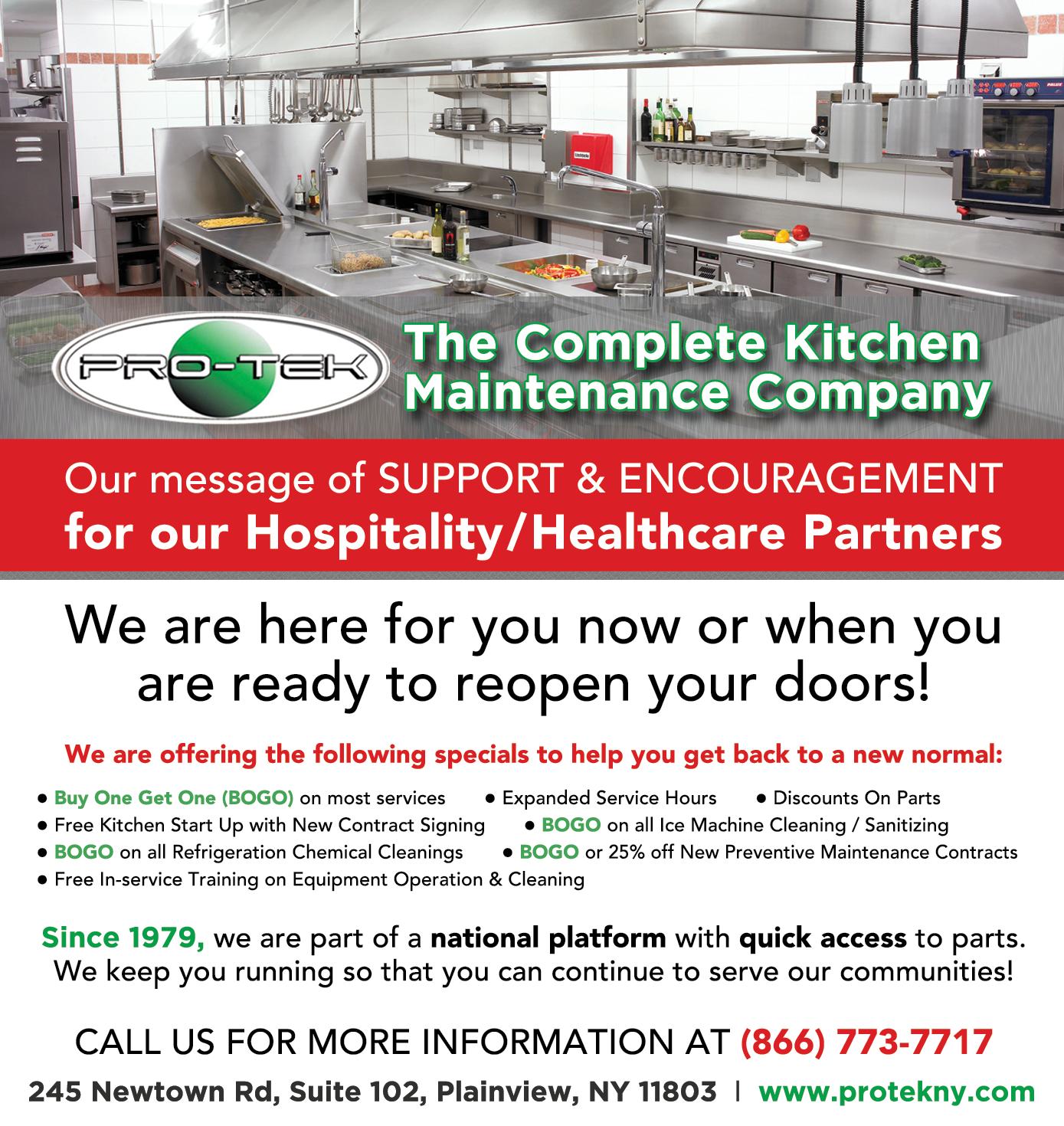

take advantage of show-only specials. “It’s a great opportunity for attendees to make meaningful connections that could result in significant purchasing opportunities,” Zoulis said.
With the guidance of founding brothers Mike and Gus Tyras, Victory has always had an eye helping its diverse customer base respond to the changing needs of their dining patrons. With that the Victory Food Show is also a platform for exploring the latest industry trends. This year, there is a marked focus on plant-based options and clean-label products—areas where Victory has been heavily investing. “We’re seeing a growing interest in plant-based and cleanlabel items,” Zoulis detailed. “As a company, we’re committed to meeting this demand by expanding our offerings in these categories.”
Another key trend highlighted at the show is the shift toward labor-saving products. With the increasing challenges of labor shortages in the food industry, Victory has been proactive in sourcing ready-to-serve and pre-prepared items
that reduce kitchen prep time without compromising on quality. “It can be something as simple as a breaded chicken cutlet, that takes a step out of prep time. We’ve definitely adapted to the needs of our customers by bringing in more items that are ready to serve or require minimal prep.”
At the heart of Victory Foodservice is their commitment to quality, particularly in their fresh produce offerings. This year’s show will once again feature their iconic produce display—a vibrant testament to Victory’s roots in fresh food. “Fresh and high-quality produce is where we started, and it remains a cornerstone of our business,” Zoulis affirmed. “Our buyer, Robert, who has been with us for over 30 years, curates an exceptional selection. The relationships we have with our produce vendors are like friendships—built on trust and mutual respect, which is reflected in the quality of the produce we offer.”
In today’s volatile market, managing costs is a top priority for foodservice operators, and Victory is keenly aware
of this. The company prides itself on offering competitive pricing, bolstered by monthly promotions and exclusive deals through partnerships with leading vendors. “We understand the challenges our customers face, especially with inflation impacting the cost of goods,” Zoulis said. “We’re committed to buying smart and passing those savings onto our customers.”
The Victory Food Show is a free event, but pre-registration is highly recommended. Not only does it streamline your entry on the day of the event, but pre-registered attendees will also receive a $50 voucher, adding even more value to an already invaluable experience.
As the industry continues to evolve, the Victory Food Show remains a cornerstone event that offers foodservice professionals a unique blend of tradition and innovation. Whether you’re looking to
explore new products, learn from industry experts, or forge new business relationships, this show is an opportunity you won’t want to miss.
To register for the Victory Foodservice 21st Anuual Food Show, visit www.victoryfoodservice.com and secure your spot today.



IHG Hotels & Resorts, a global leader in hospitality, has launched a multiyear partnership with the international non-governmental organization (NGO) Action Against Hunger. This collaboration marks a pivotal moment in IHG’s ongoing commitment to addressing food insecurity and hunger on a global scale, particularly as the world faces increasing challenges in ensuring adequate food supplies for all.
Globally, it is estimated that one in three people face uncertainty about where their next meal will come from. This alarming statistic is fueled by a combination of factors, including poverty, conflict, inefficient food systems, and the worsening impacts of climate change. Recognizing these urgent needs, IHG Hotels & Resorts has committed to leveraging its vast portfolio of over 6,000 hotels across more than 100 countries to make a meaningful impact in the fight against hunger.
IHG’s partnership with Action Against Hunger is not just a corporate initiative; it is a continuation of the company’s deep-seated commitment to community support and responsible business practices. Through its Journey to Tomorrow responsible business plan, IHG has pledged to improve the lives of 30 million people by 2030. This latest partnership aligns with that vision, focusing on providing tangible solutions to food insecurity, one of the most pressing issues of our time.
Elie Maalouf, CEO of IHG Hotels & Resorts, highlighted the significance of this partnership, stated “Food sits at the
“While hunger is a widespread challenge, for the first time in human history, we have the ability to end chronic hunger for everyone, for good.” — Ashwini Kakkar
heart of our hotels and hospitality, nourishing people and communities, and yet sadly we know it remains in desperately short supply for millions of people, despite enough being produced to feed everyone on the planet. This is a problem the world can solve if societies, organizations, and businesses work together.”
Action Against Hunger has been at the forefront of the global fight against hunger for decades, with a presence in multiple regions, including East Africa, Central Africa, West Africa, Asia, the Americas, the Middle East, and Europe. The NGO’s screen, treat, and sustain program has been instrumental in preventing, detecting, and treating hunger, especially among vulnerable popula-
tions like children.
IHG’s support will specifically focus on funding and supporting Action Against Hunger’s nutrition programs. These programs include vital screening initiatives designed to identify early signs of malnutrition in children, enabling timely and potentially life-saving interventions through community outreach efforts.
Ashwini Kakkar, chair of the Action Against Hunger International Network, expressed appreciation for IHG’s involvement, “While hunger is a widespread challenge, for the first time in human history, we have the ability to end chronic hunger for everyone, for good. Realizing that vision will take bold action and we are grateful for IHG’s will, wisdom, and leadership in advancing this vital cause.”

In addition to direct financial support, IHG will also engage its global customer base by raising awareness about hunger and food insecurity. Millions of guests who stay at IHG hotels around the world will be encouraged to participate in this cause, including the opportunity to donate their IHG One Rewards points to support Action Against Hunger’s initiatives. This approach not only amplifies the impact of the partnership but
also fosters a sense of global community and shared responsibility among IHG’s guests.
IHG’s efforts to combat hunger are further reinforced by its existing partnerships and programs aimed at strengthening food systems within local communities. These include collaborations with local food banks, as well as partnerships with organizations such as No Kid Hungry in the United States, OzHarvest in Australia, and Too Good To Go in Europe. These initiatives collectively aim to reduce food waste, provide training, and ensure that surplus food reaches those in need.
As the world’s first and largest luxury hotel brand, IHG’s flagship brand, InterContinental Hotels & Resorts, has long been a pioneer in the hospitality industry. With over 220 hotels currently open and an additional 100 in the pipeline, the brand continues to set standards for luxury travel while also contributing to critical global causes like hunger relief. Recent expansions in key cities, including the Americas, showcase IHG’s commitment to growth, excellence, and social responsibility.
This partnership with Action Against Hunger reflects IHG’s broader purpose to provide “True Hospitality for Good.” By combining the reach and influence of its extensive hotel portfolio with strategic partnerships and guest engagement, IHG is poised to make a significant impact in the fight against hunger, offering hope and nourishment to millions around the world.
“IHG Hotels & Resorts is proud to partner with Action Against Hunger on their life-saving work, in addition to the many other long-standing partnerships we have with incredible charities in local markets,” Maalouf continued.
“Collectively we want to help create lasting change in a world where people are nourished, always welcome, and always respected.”
